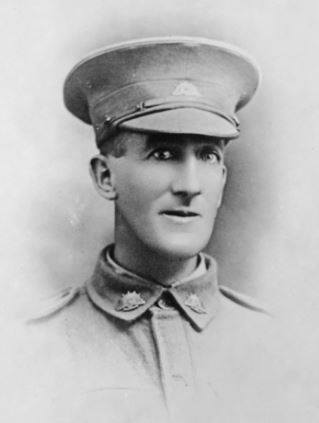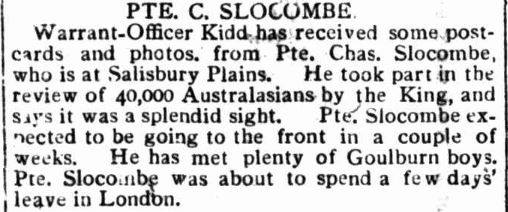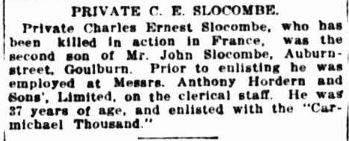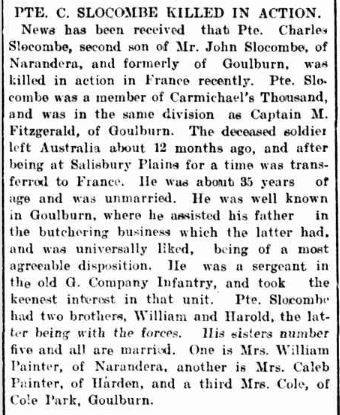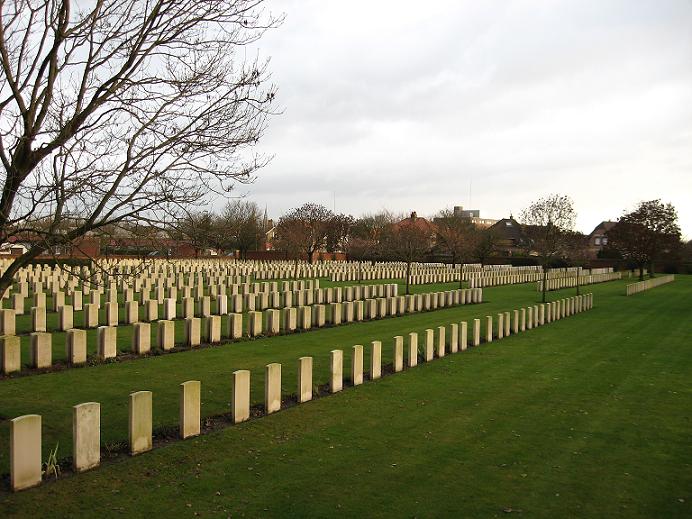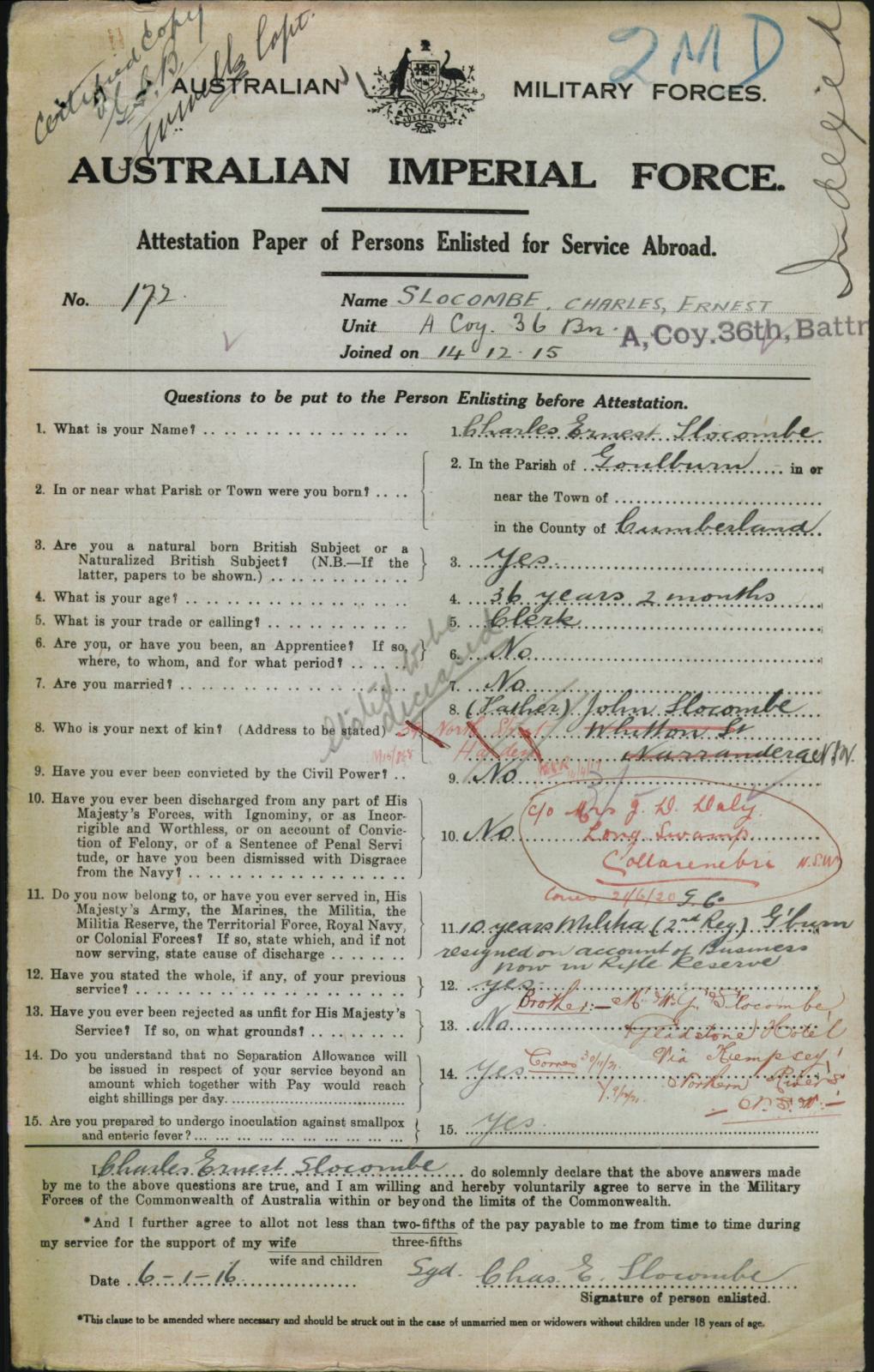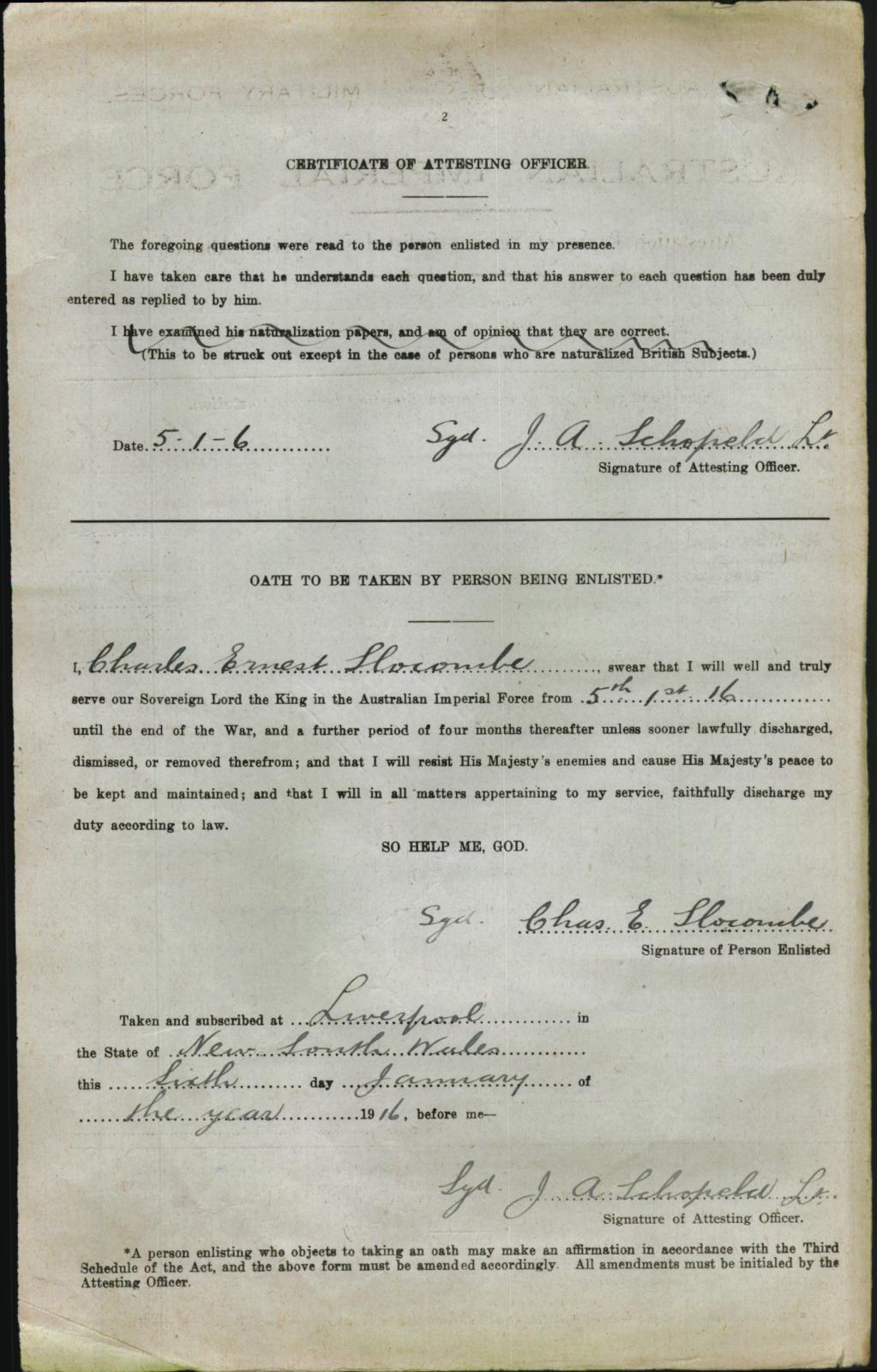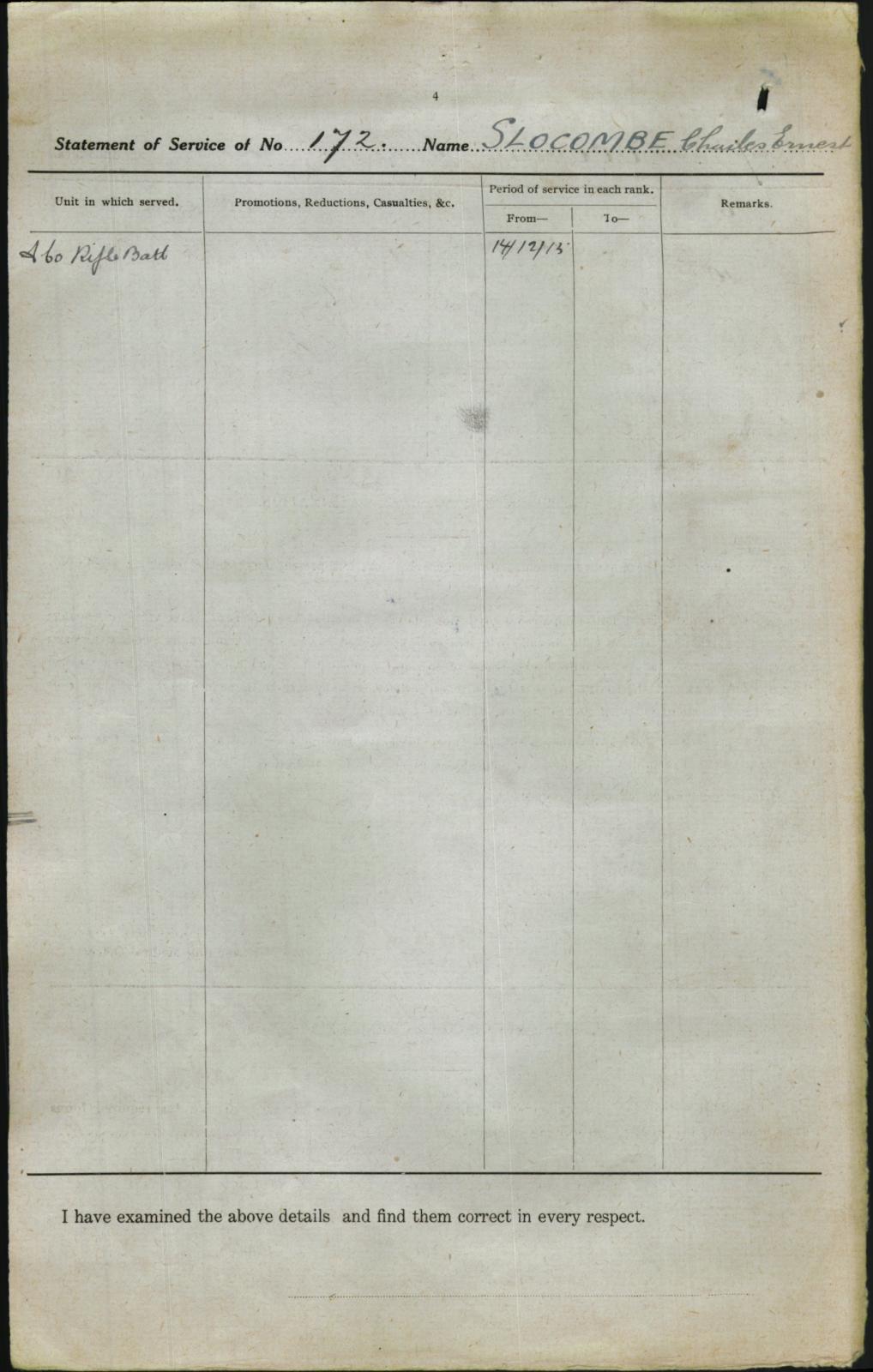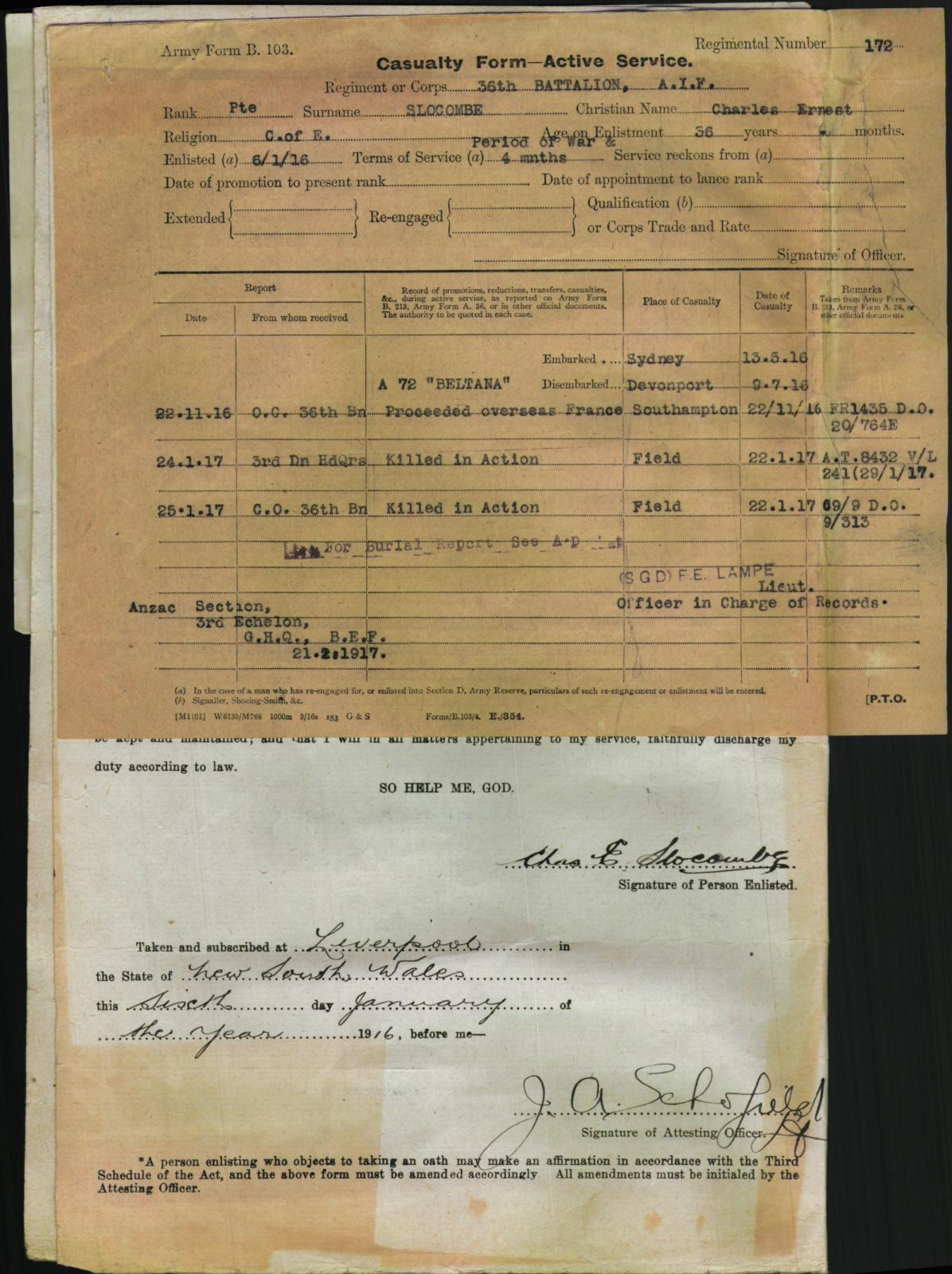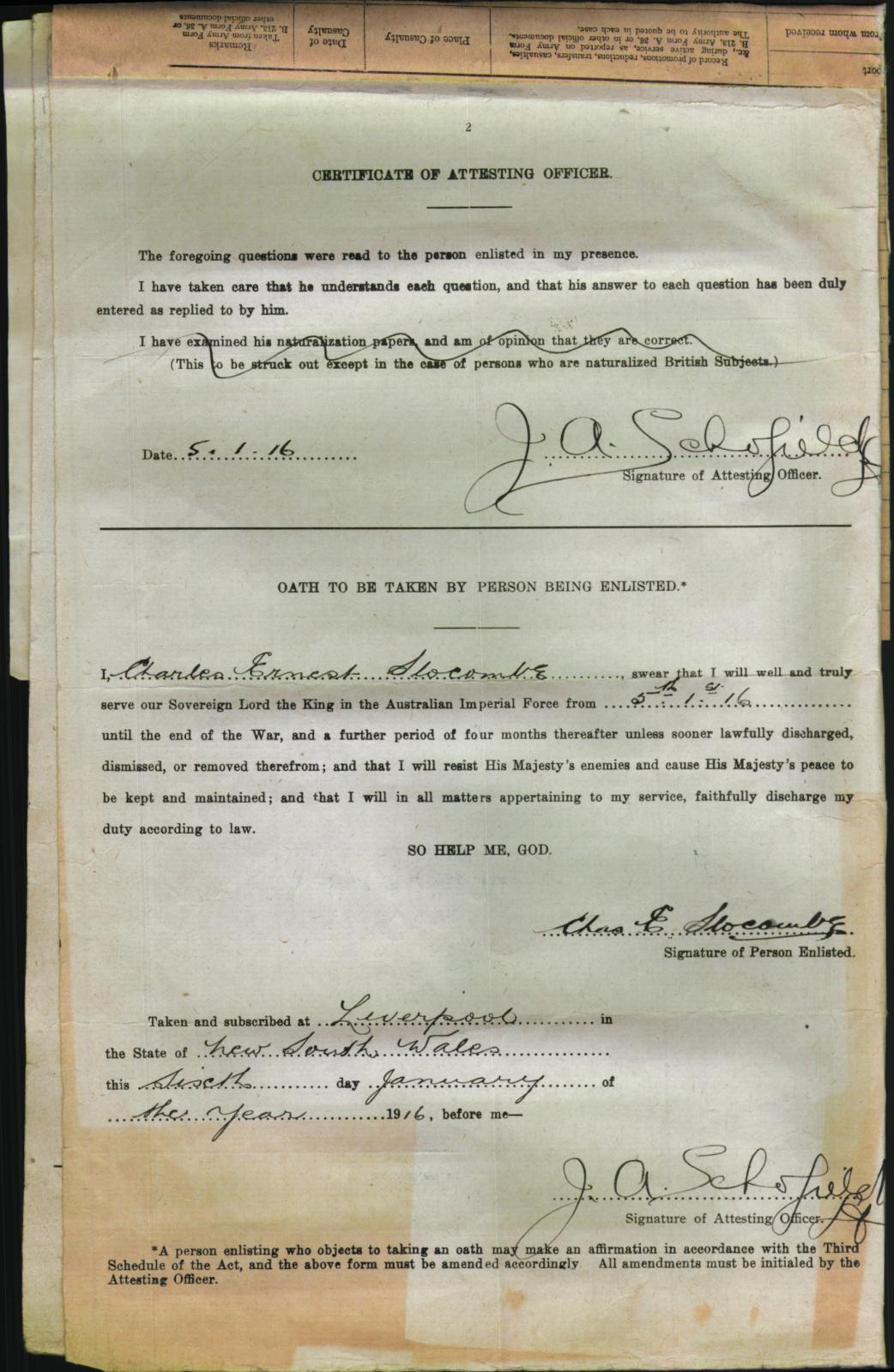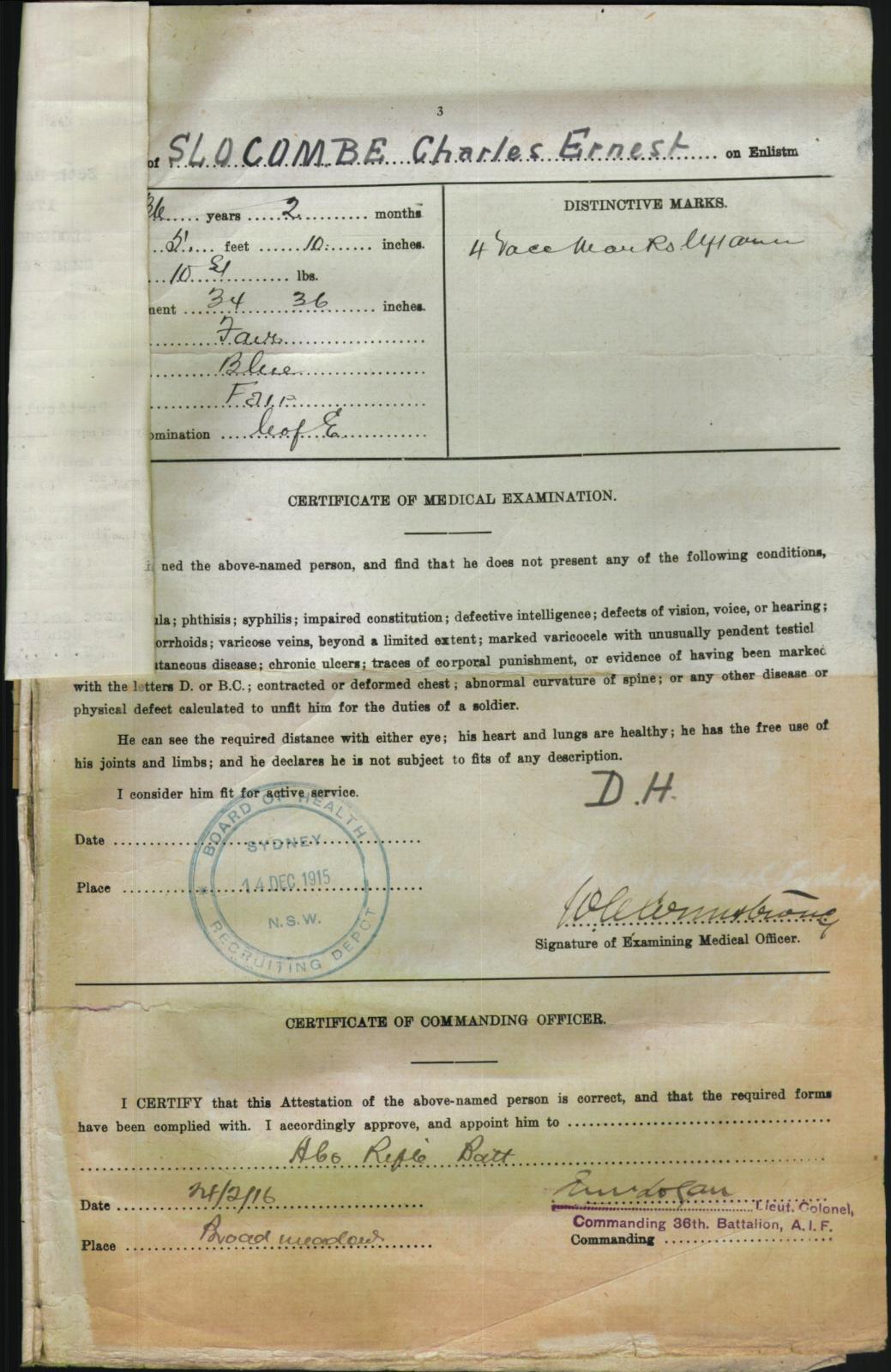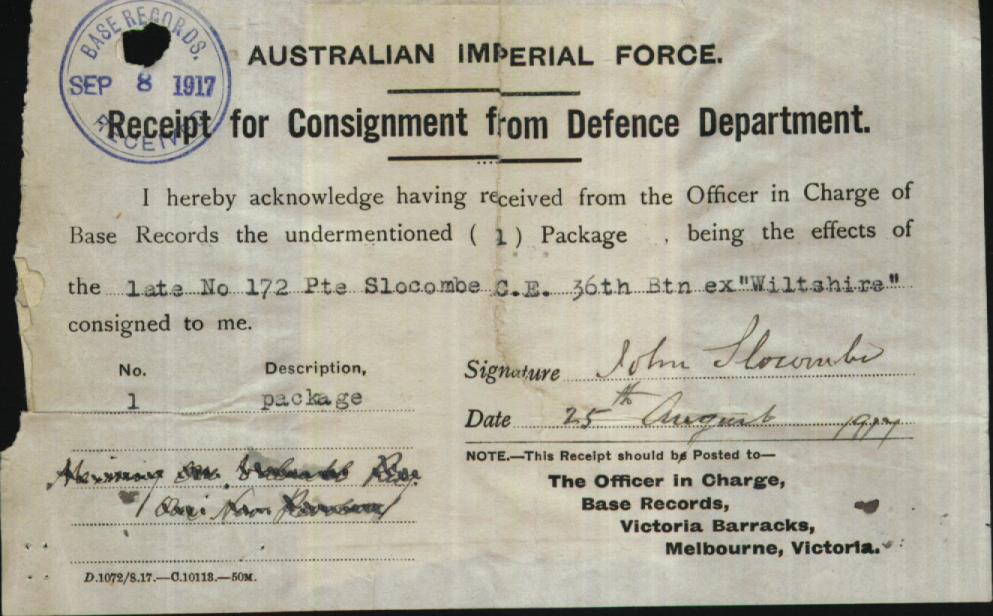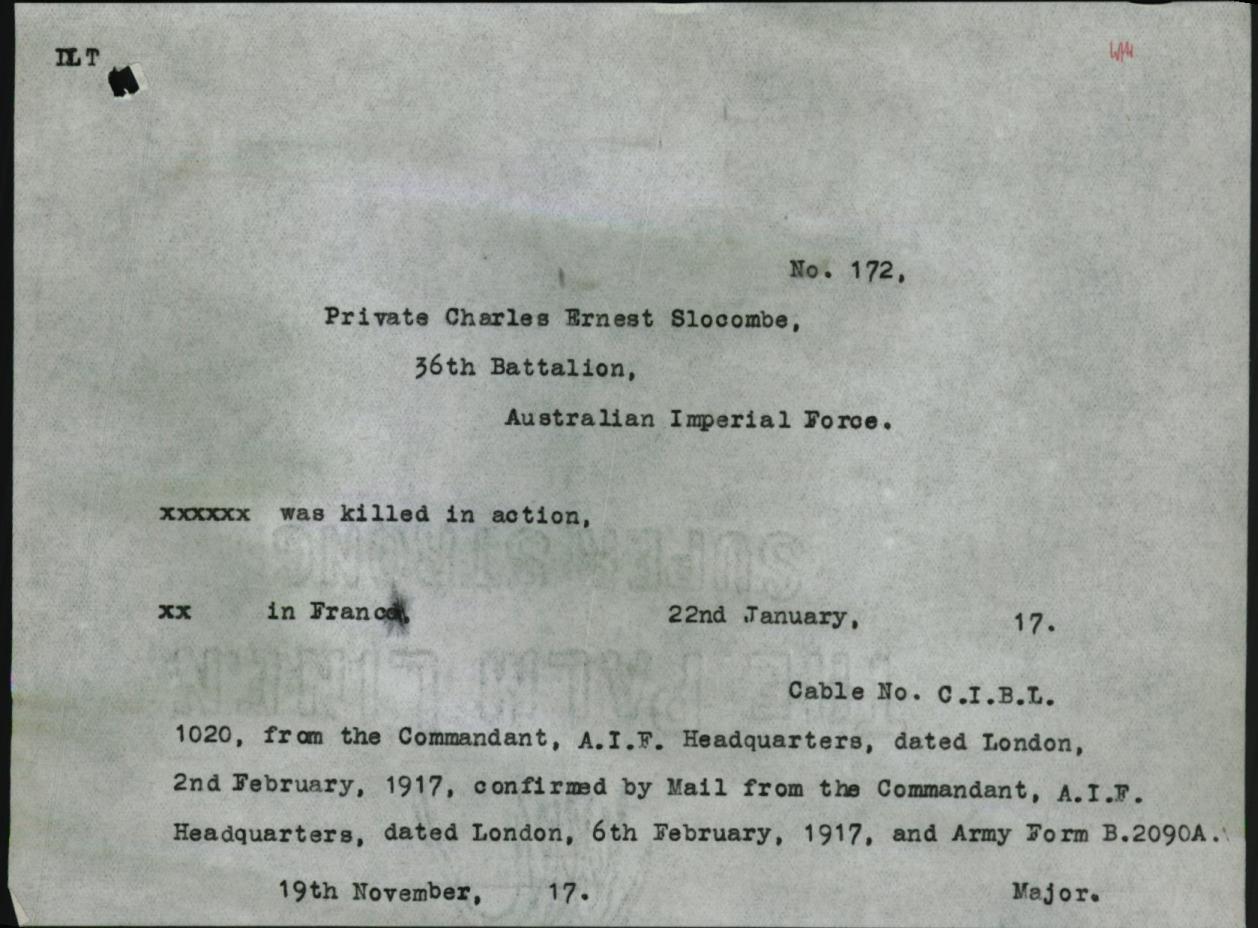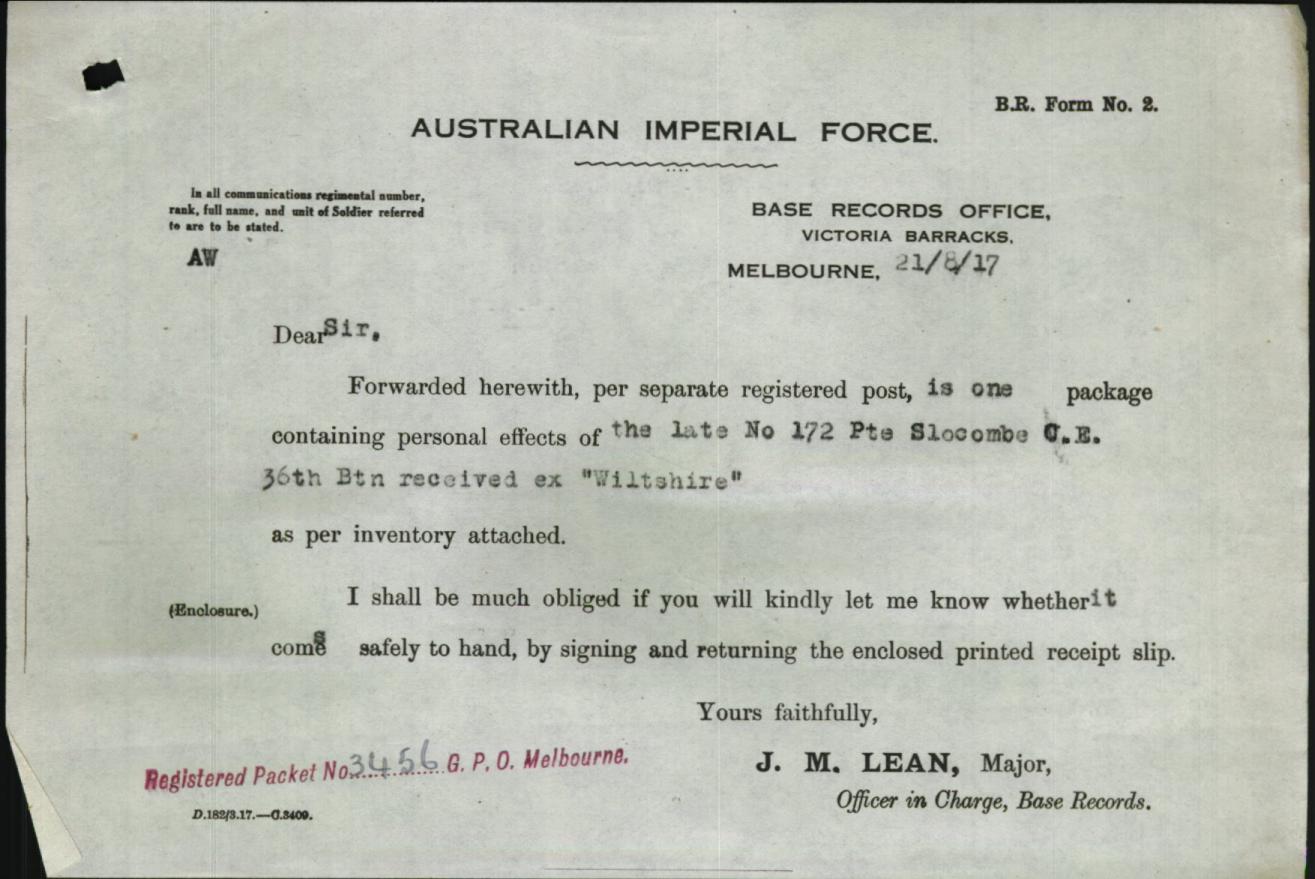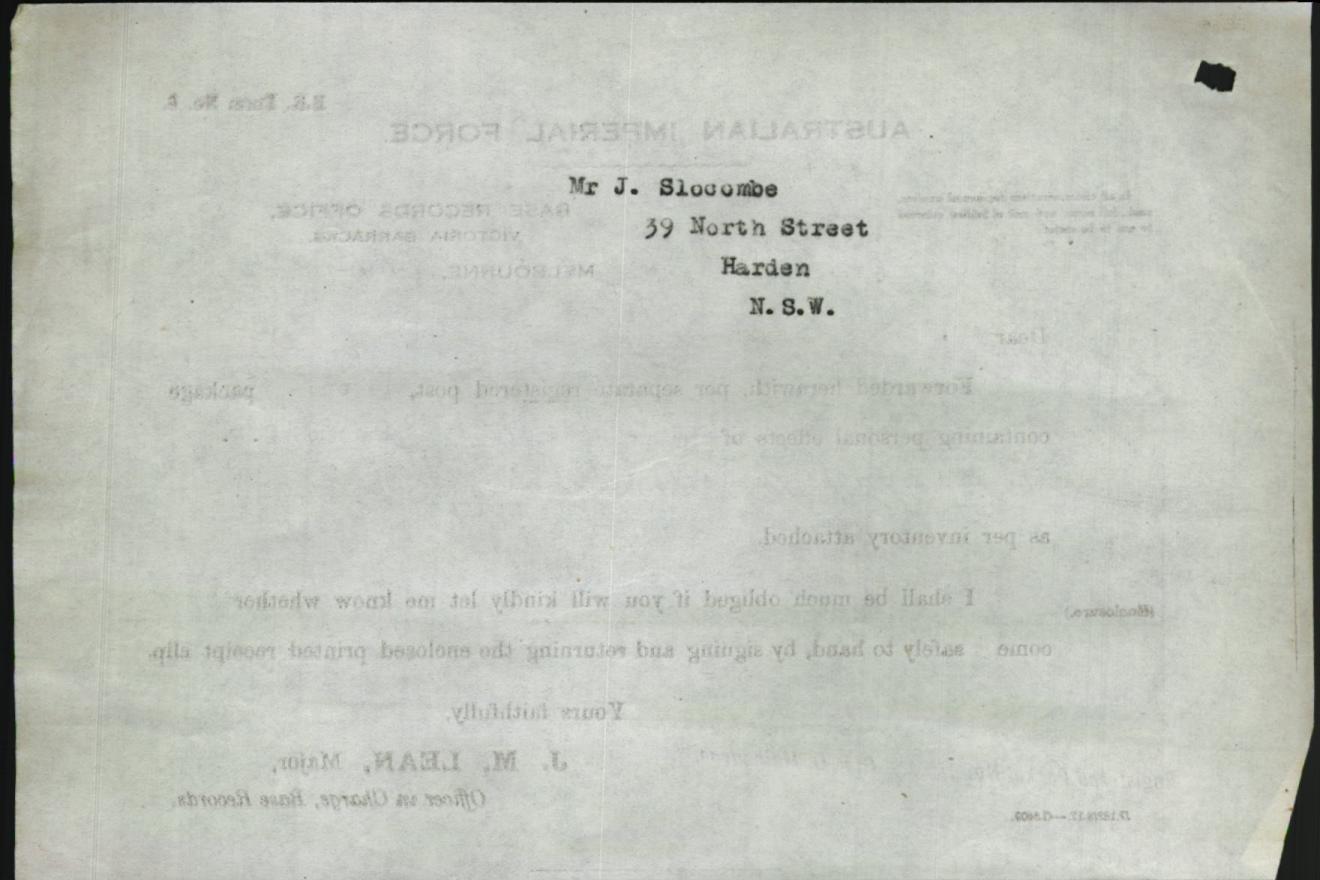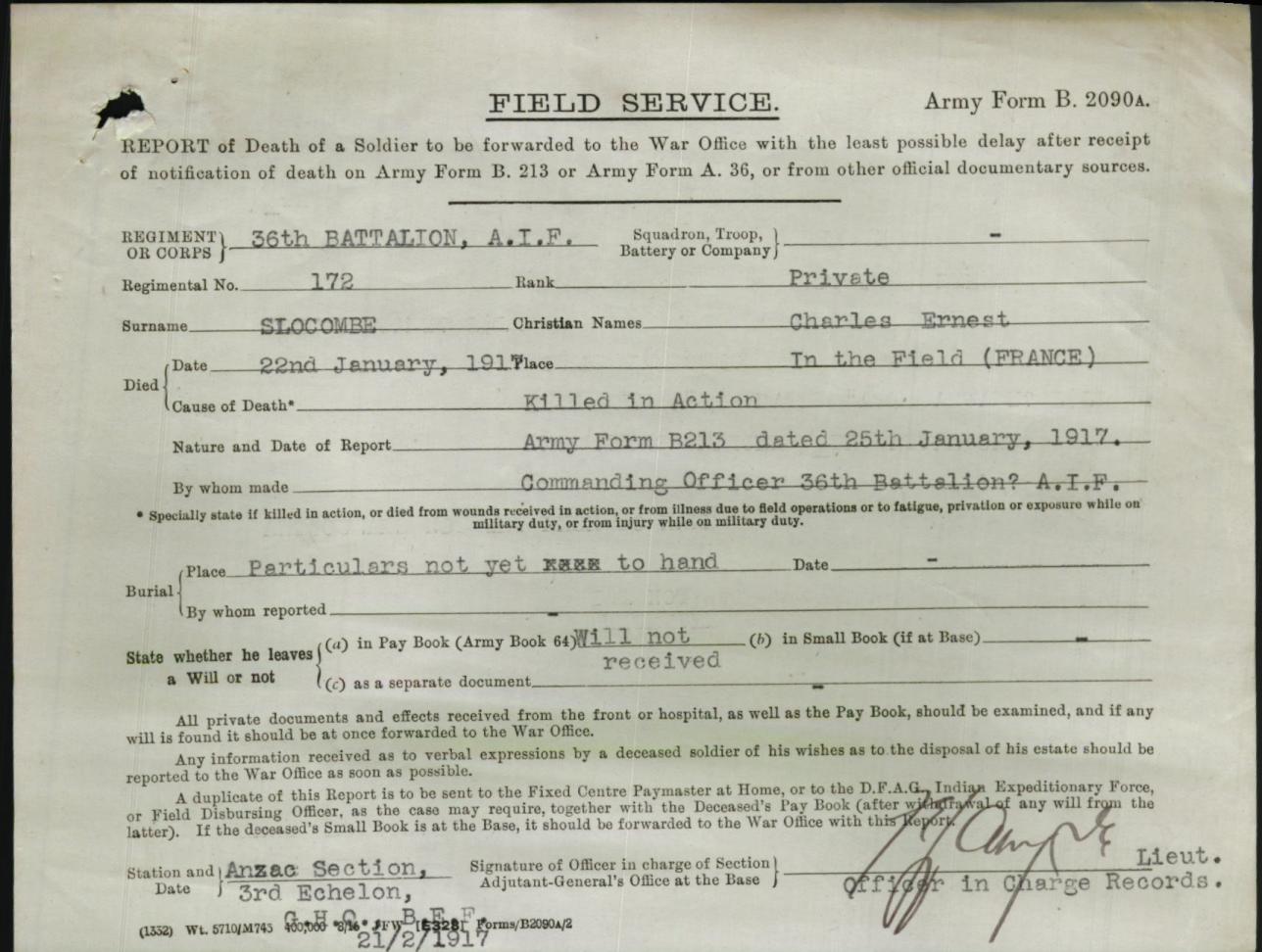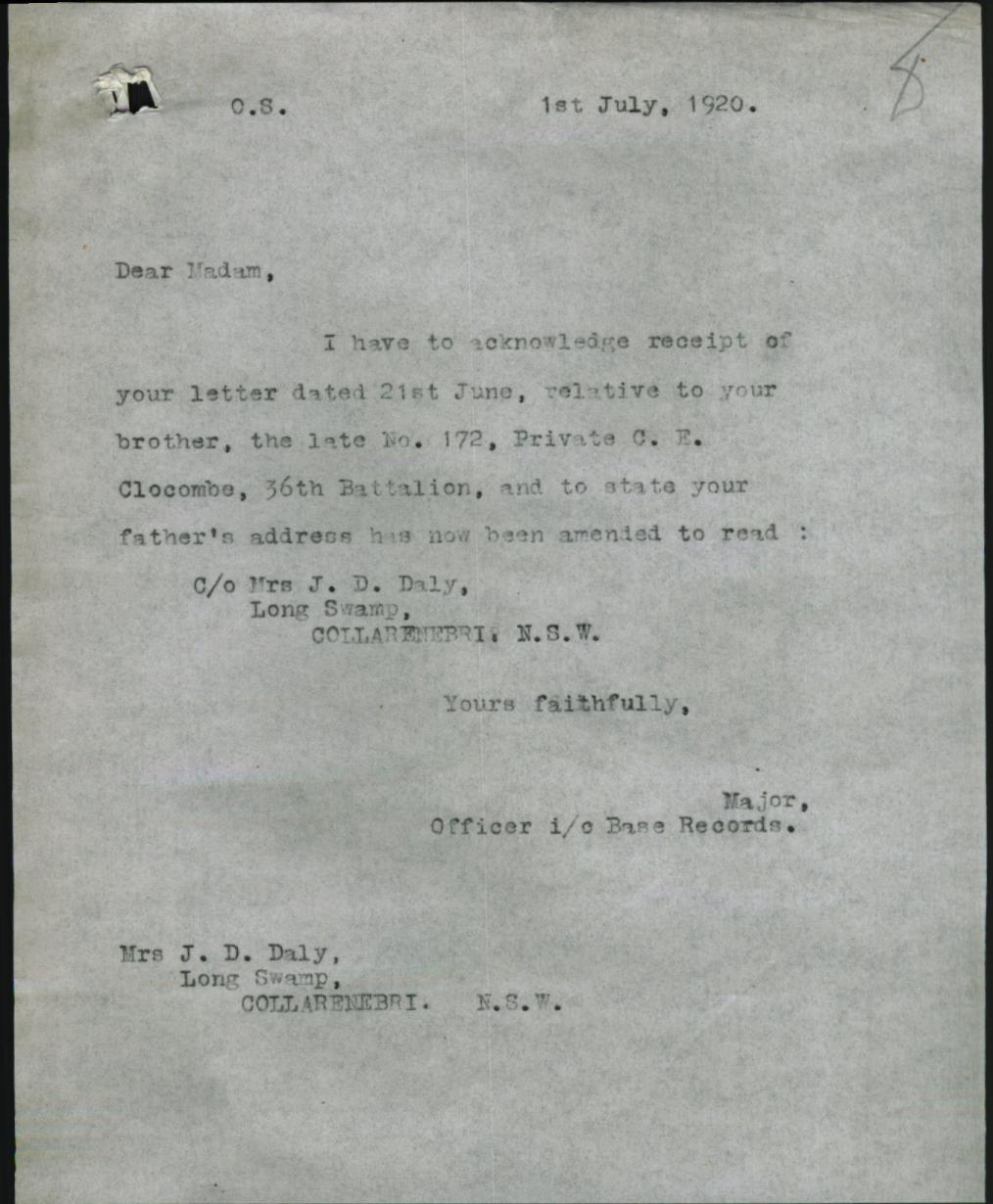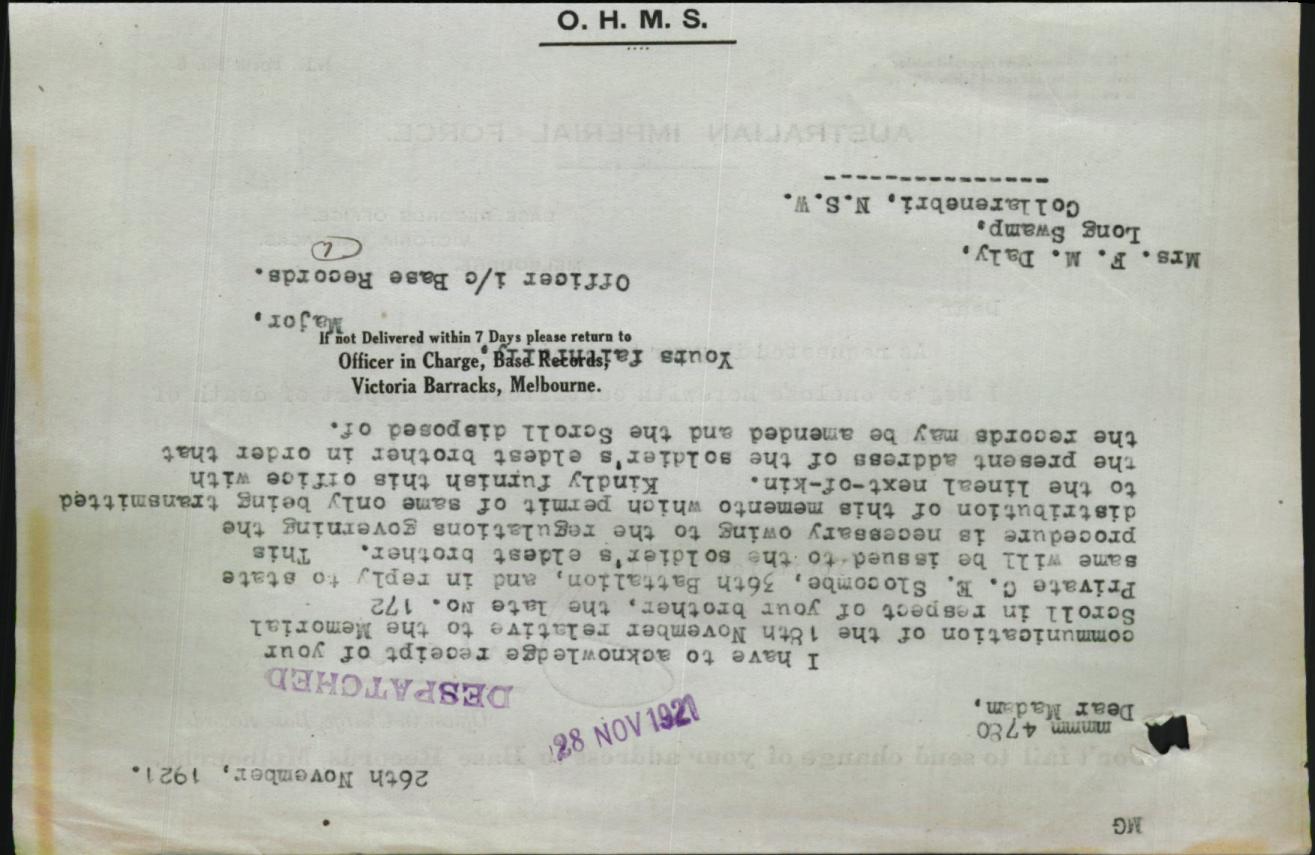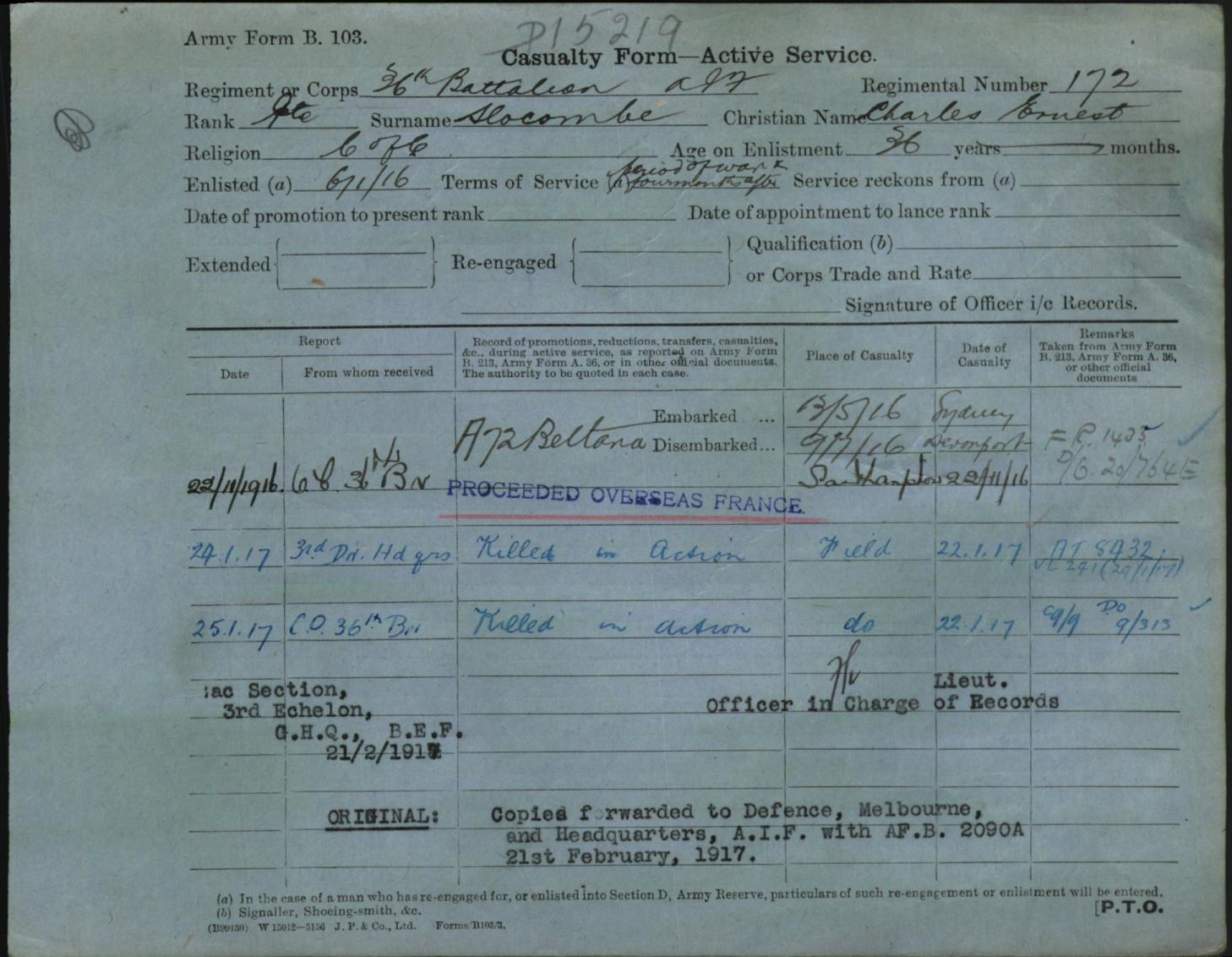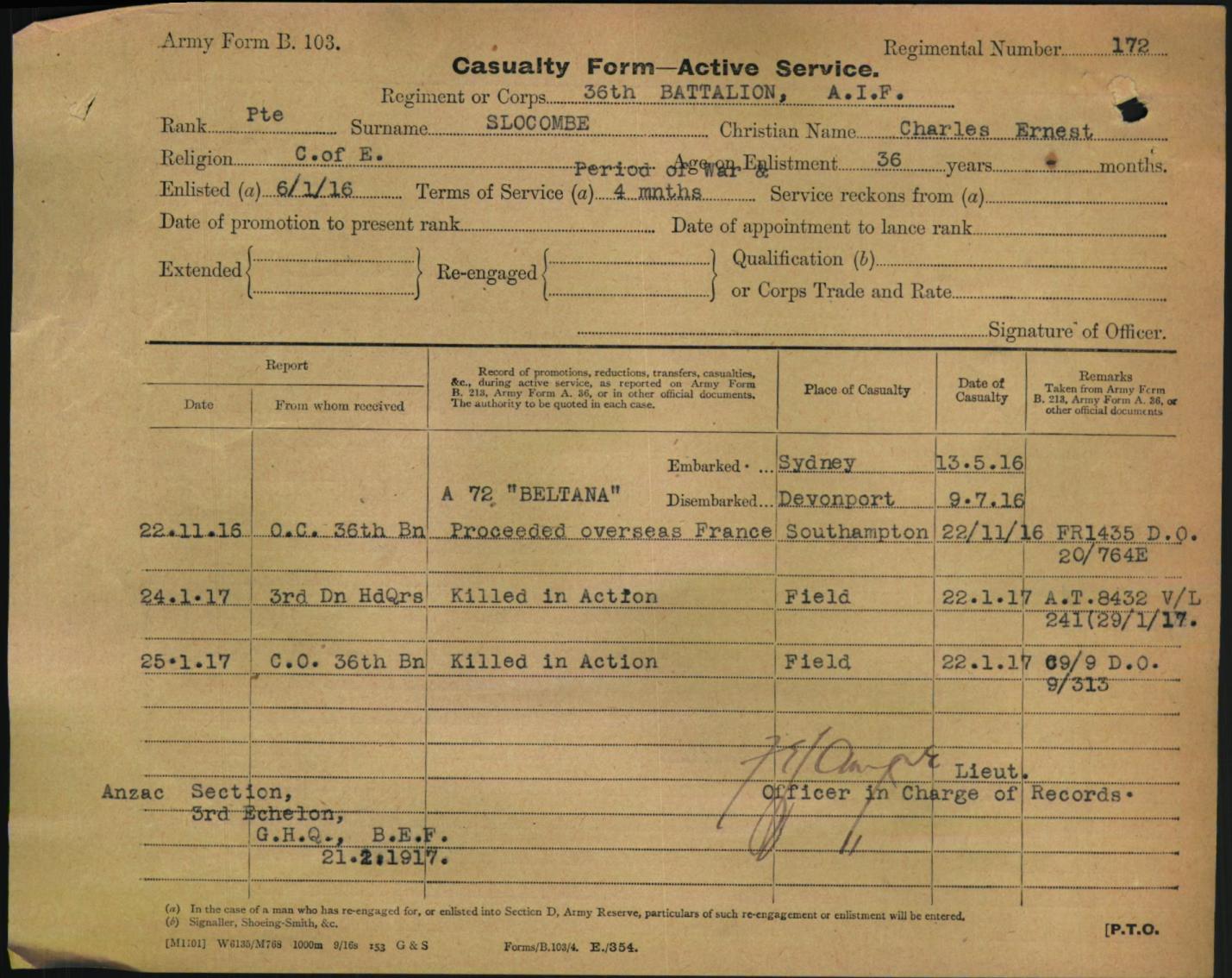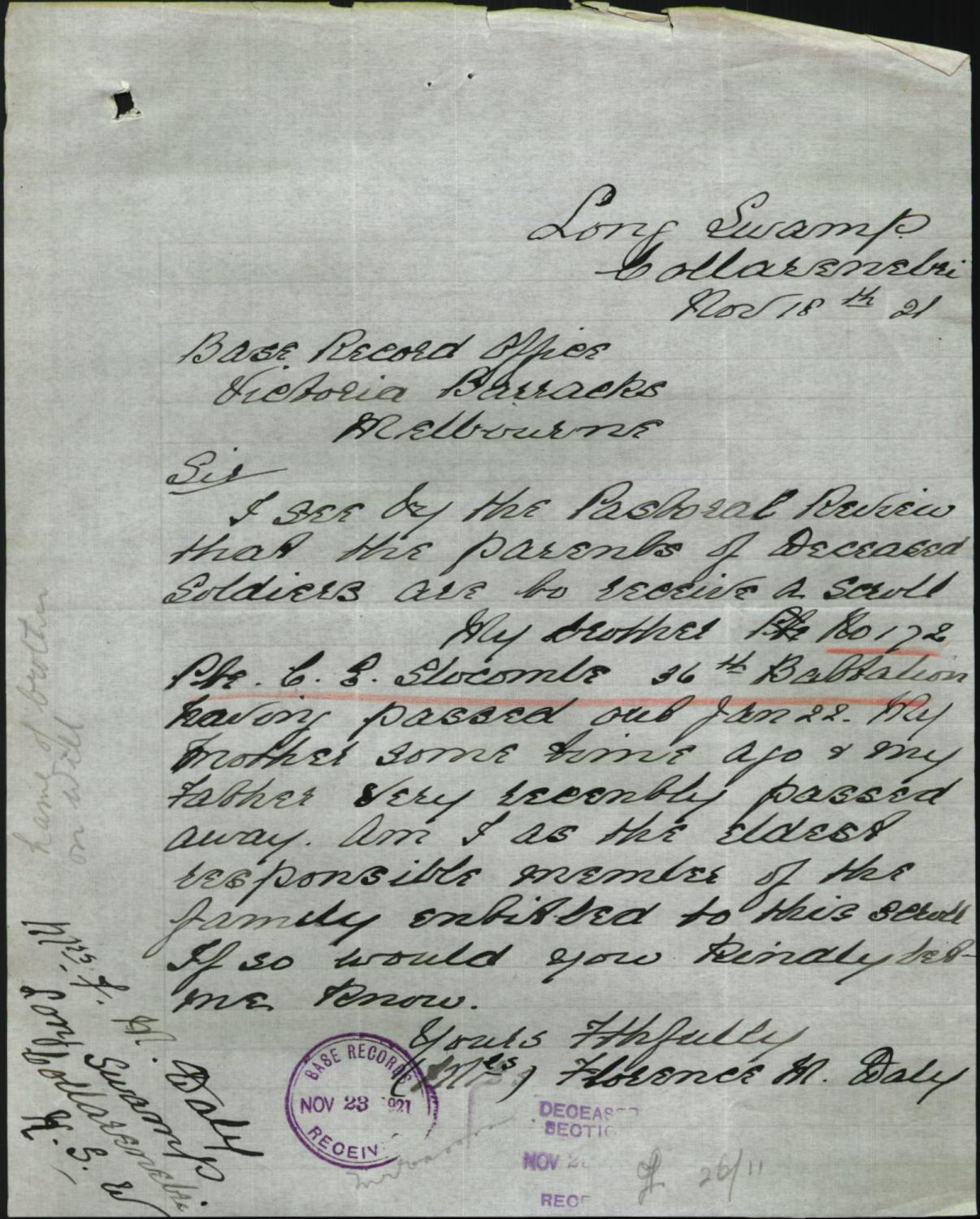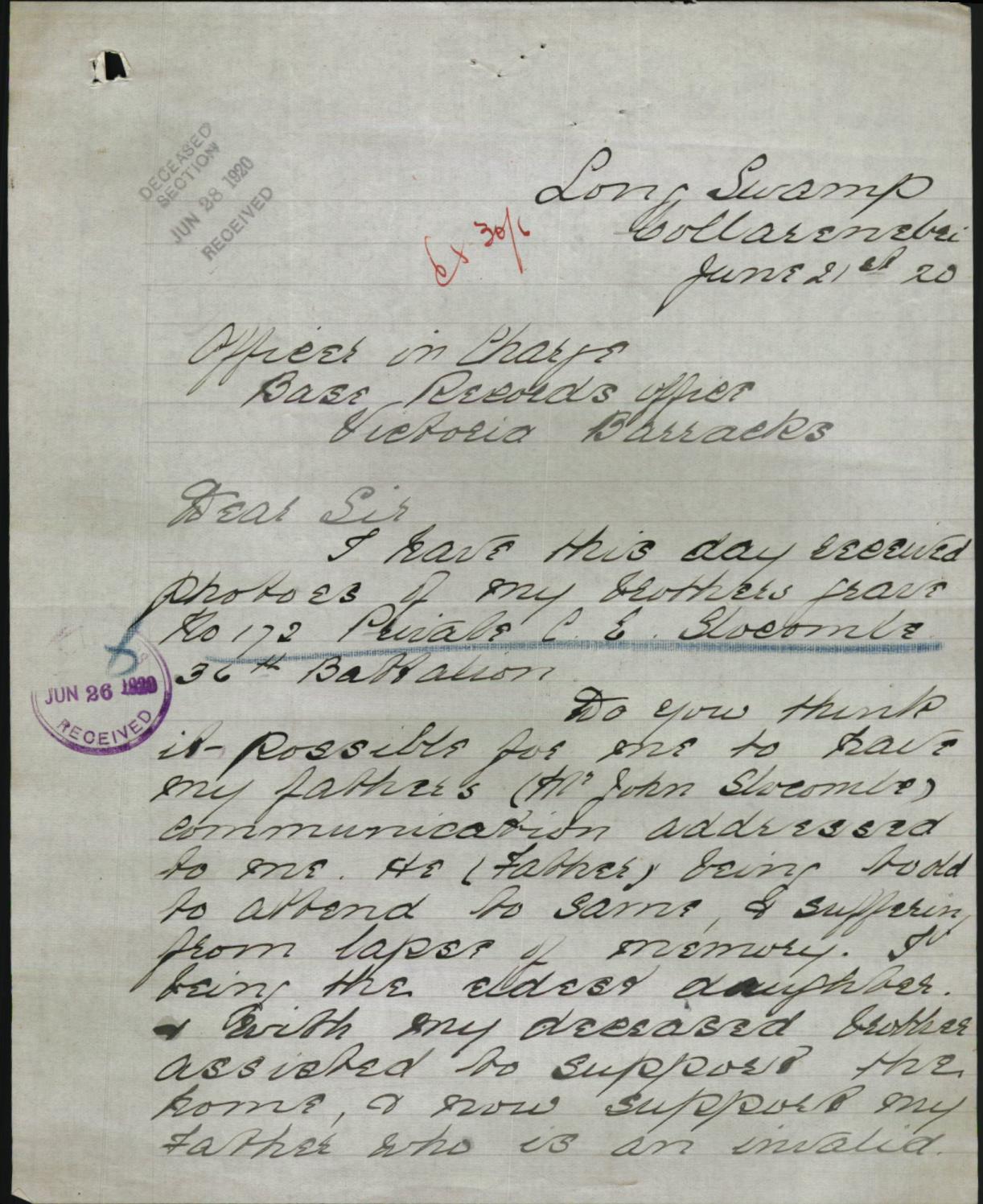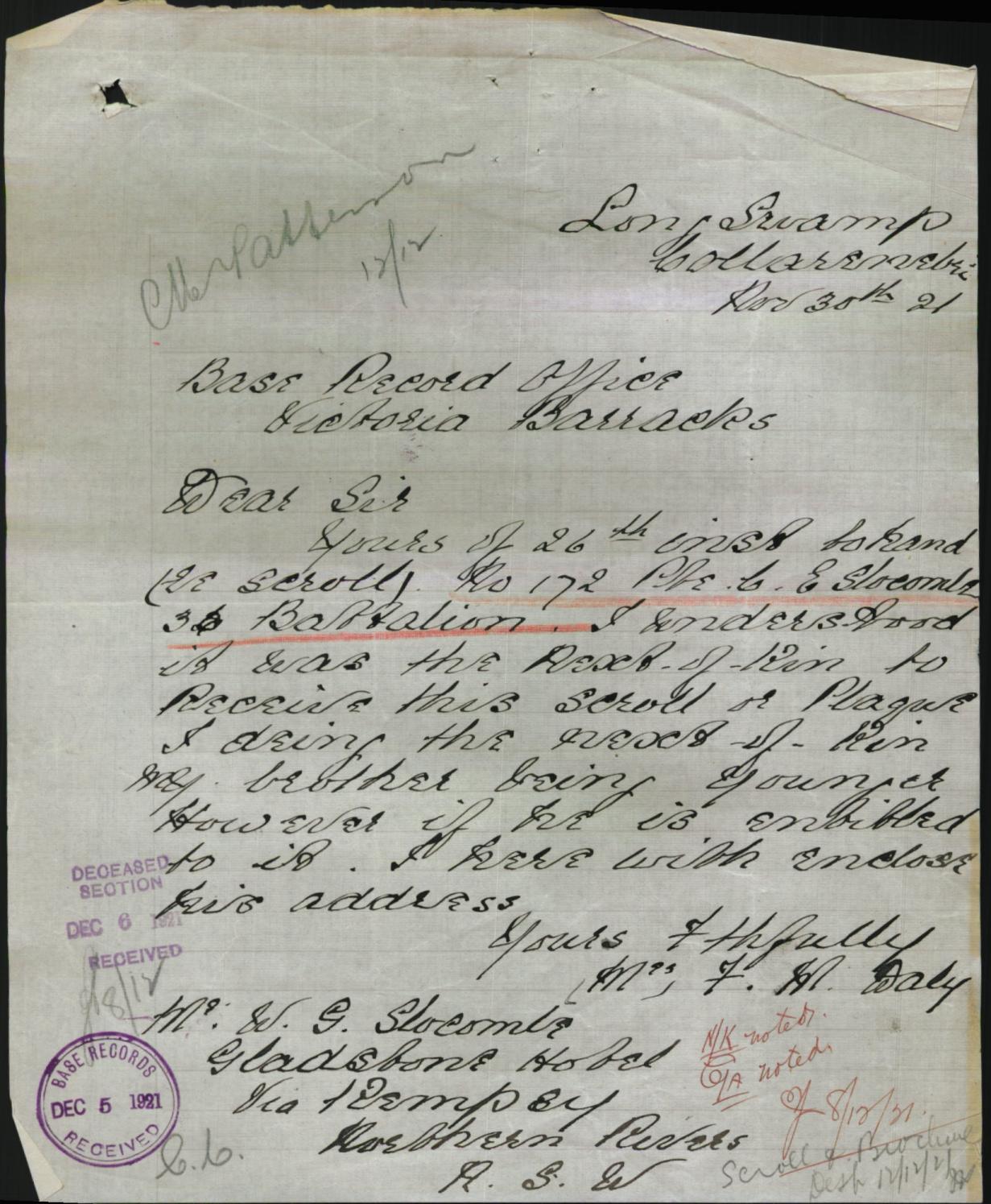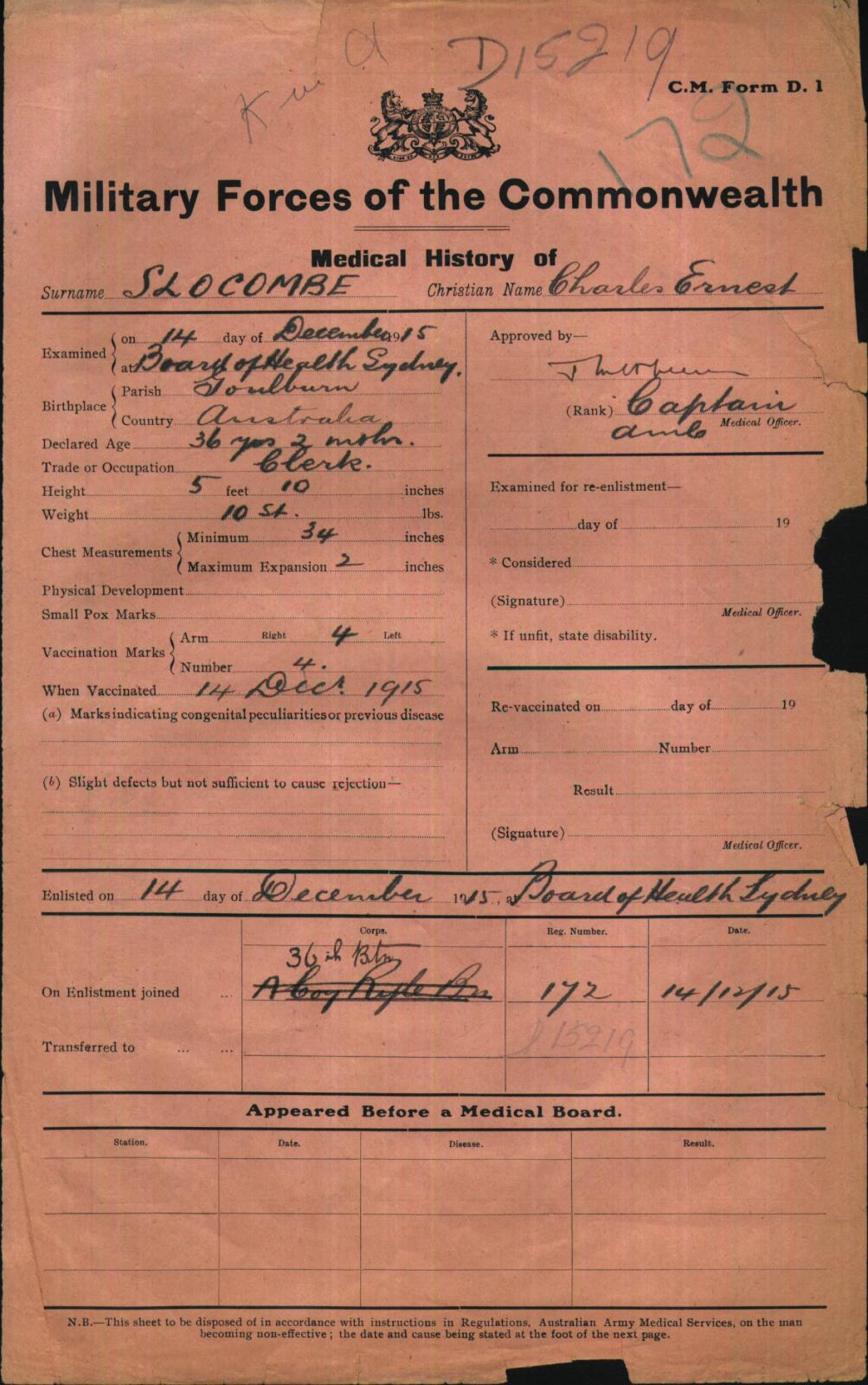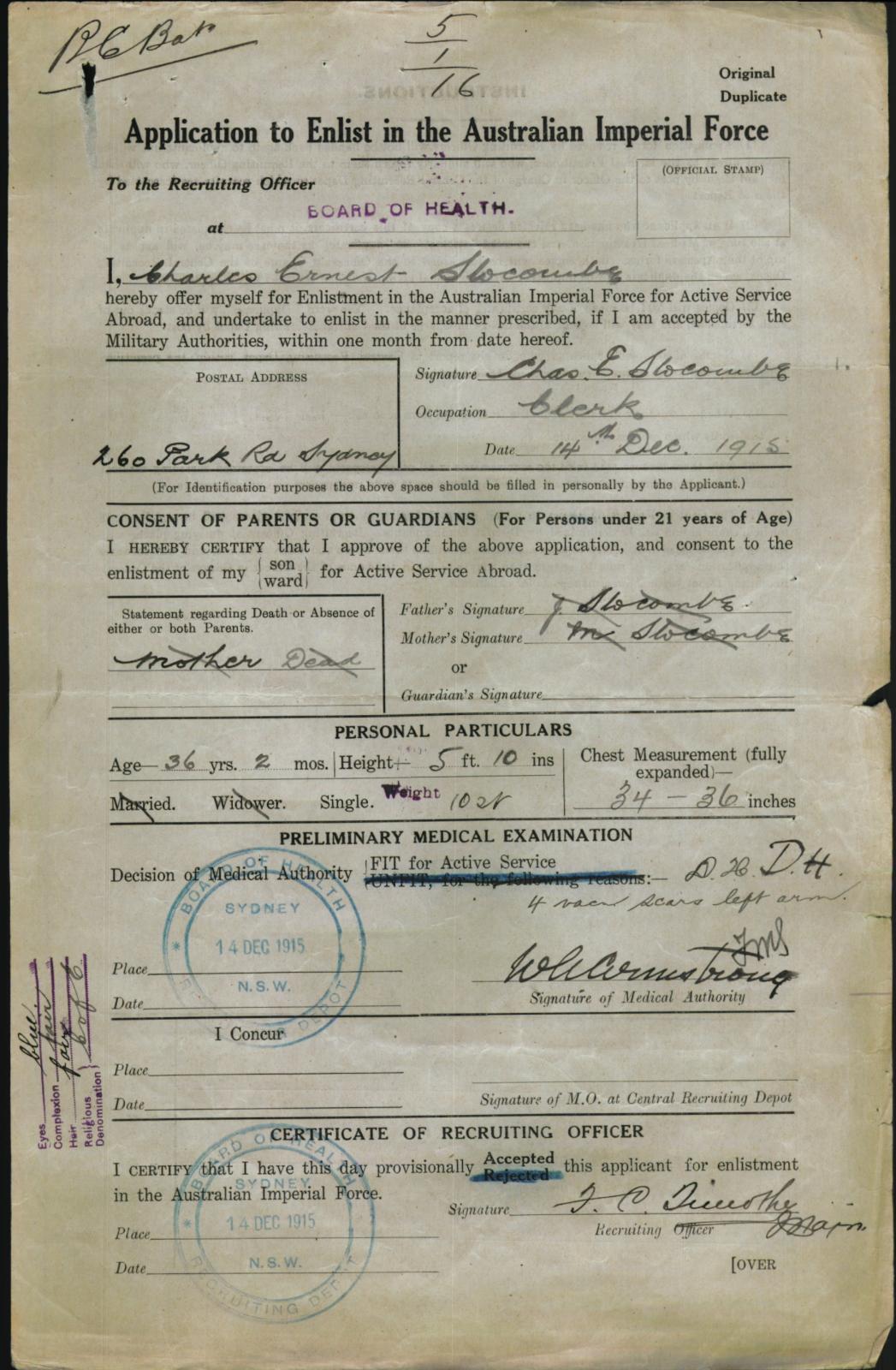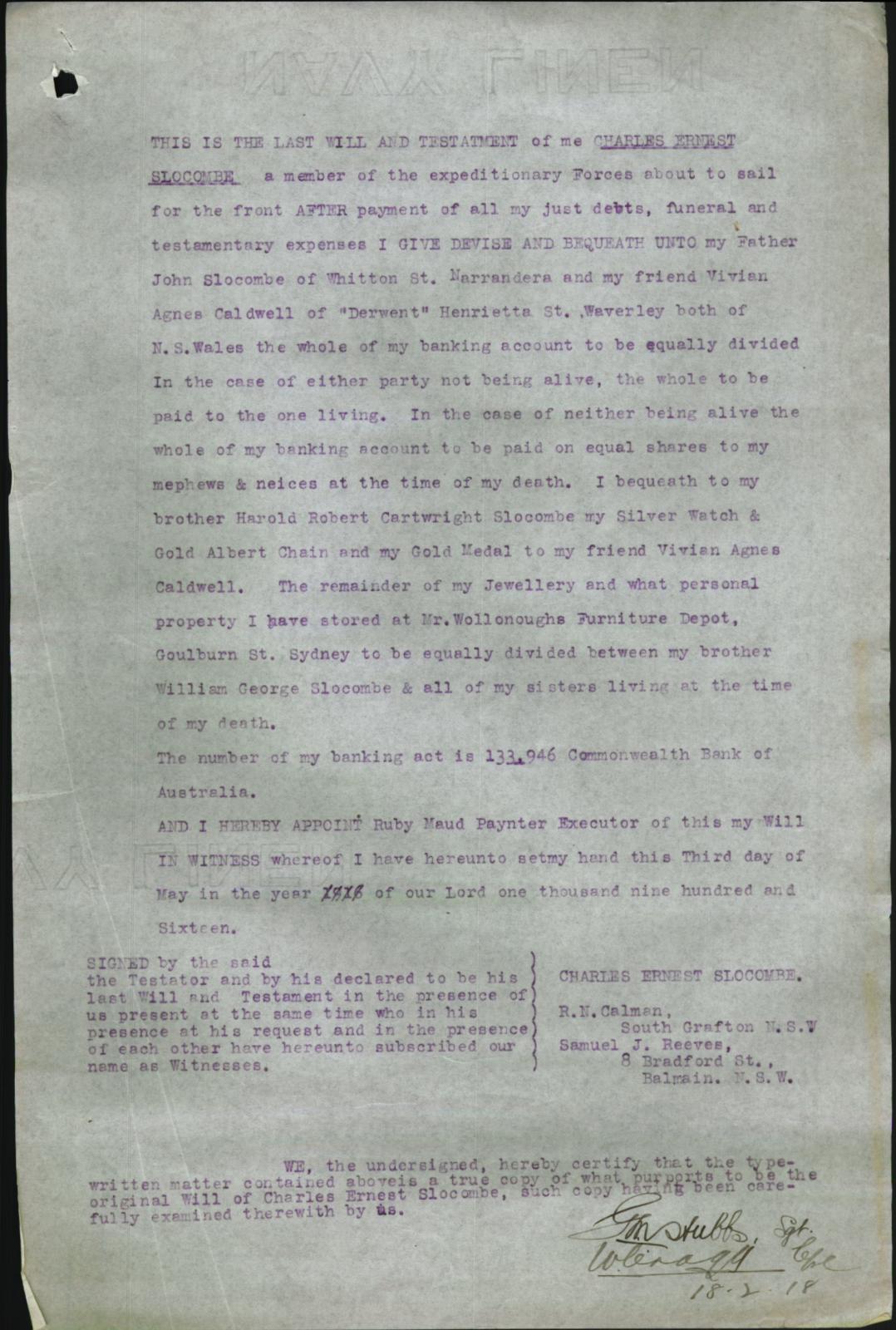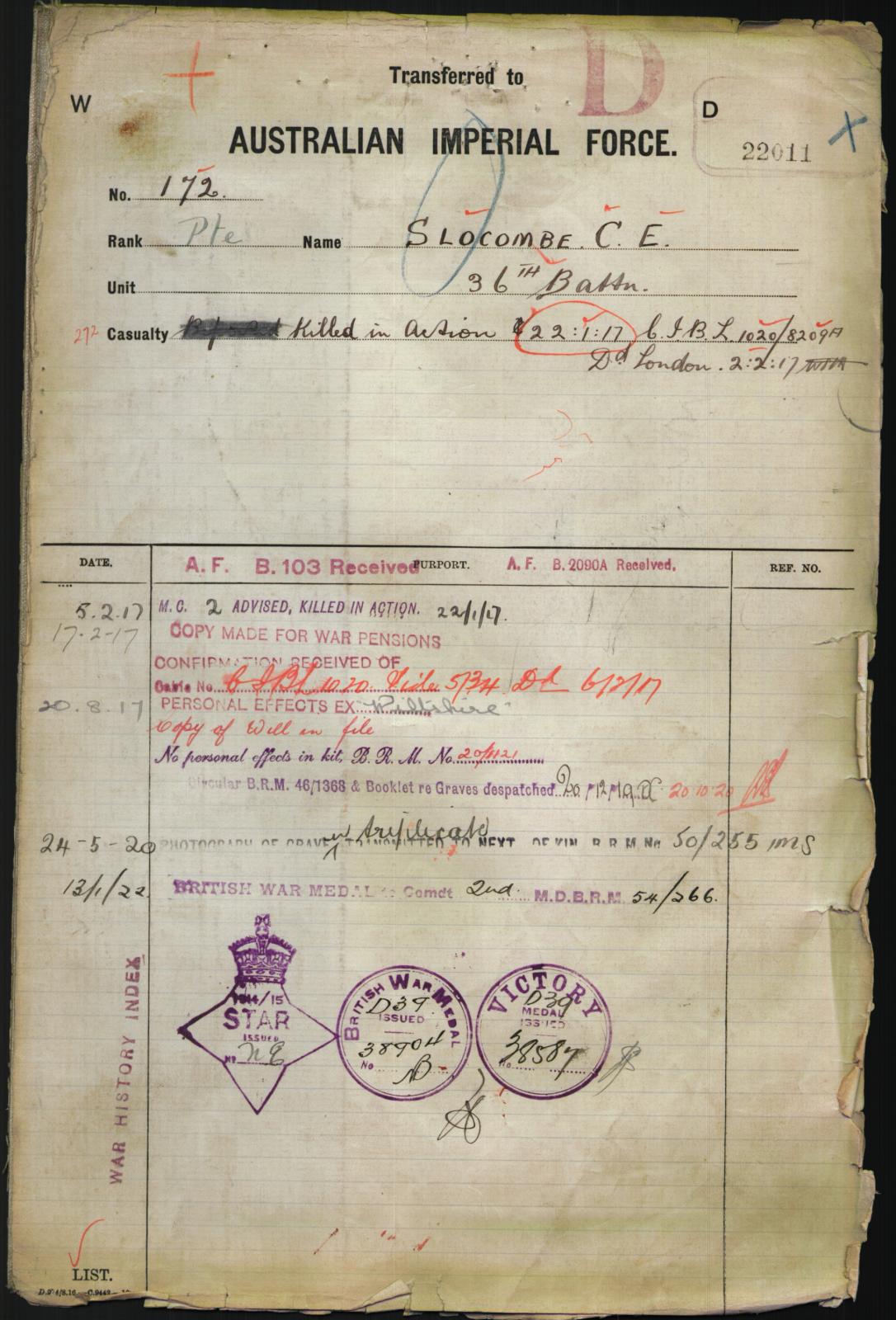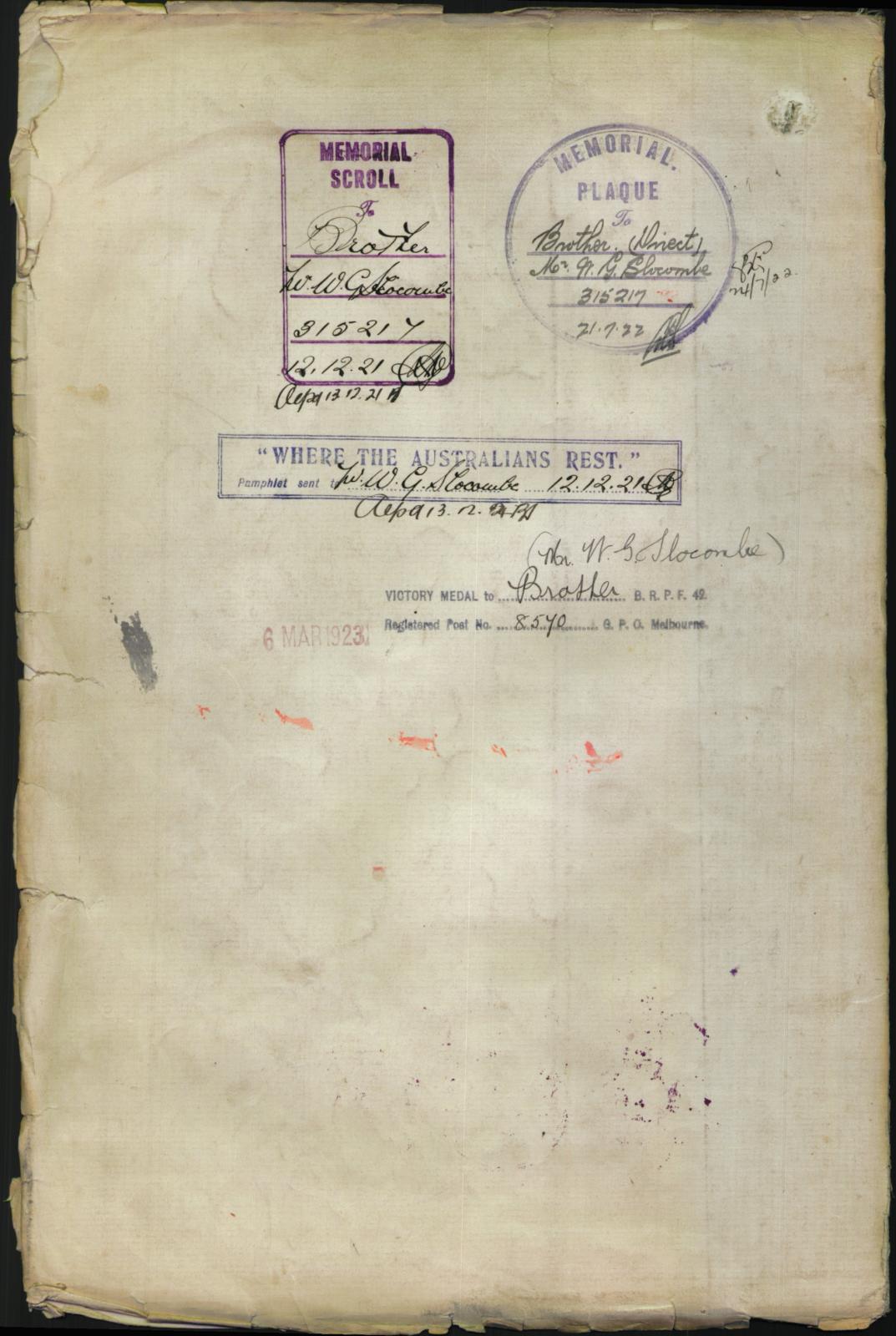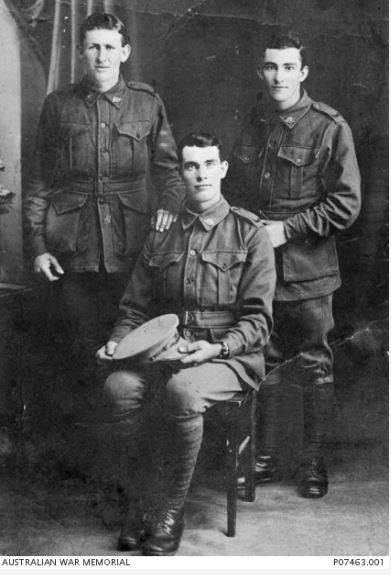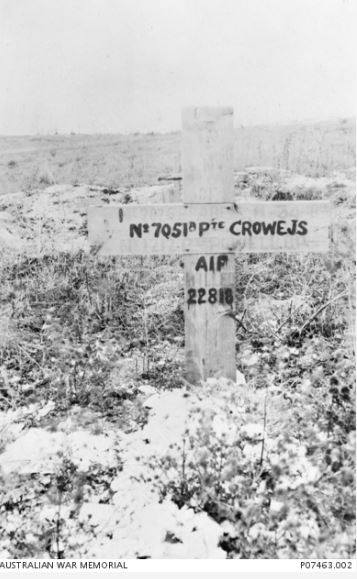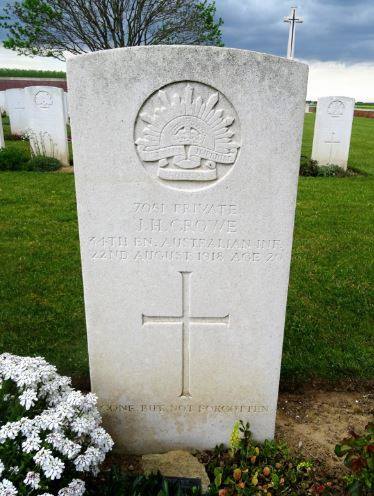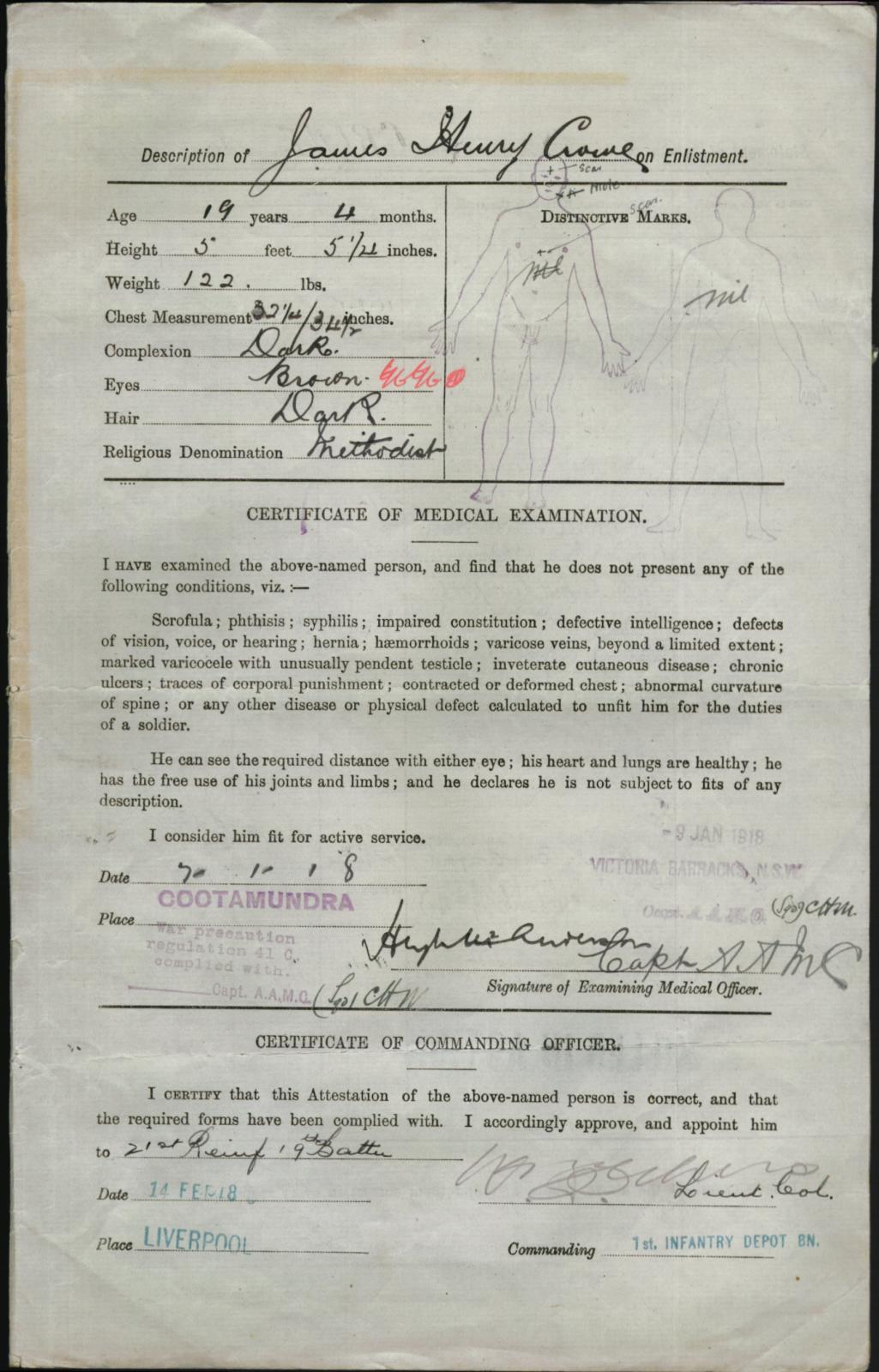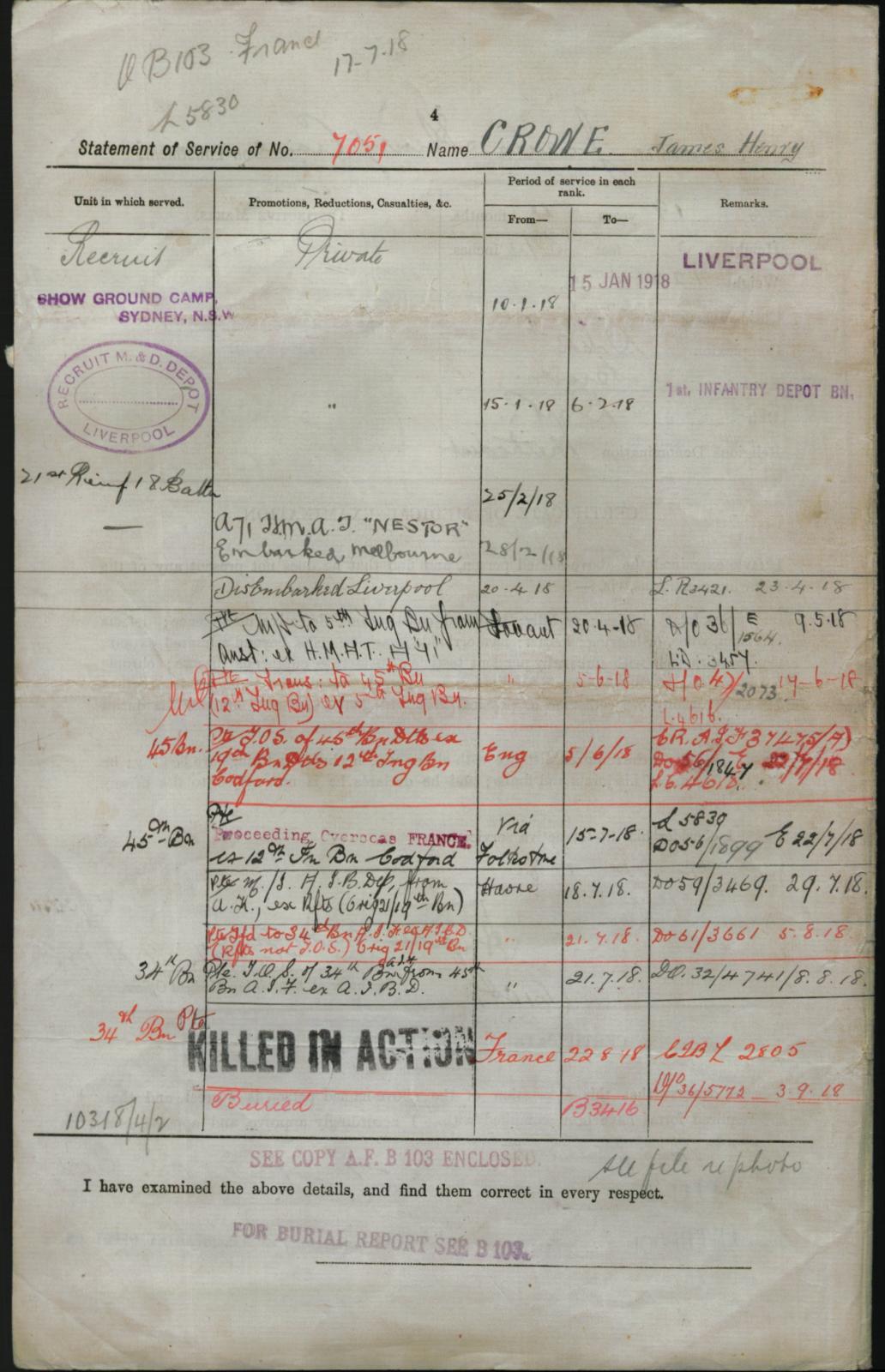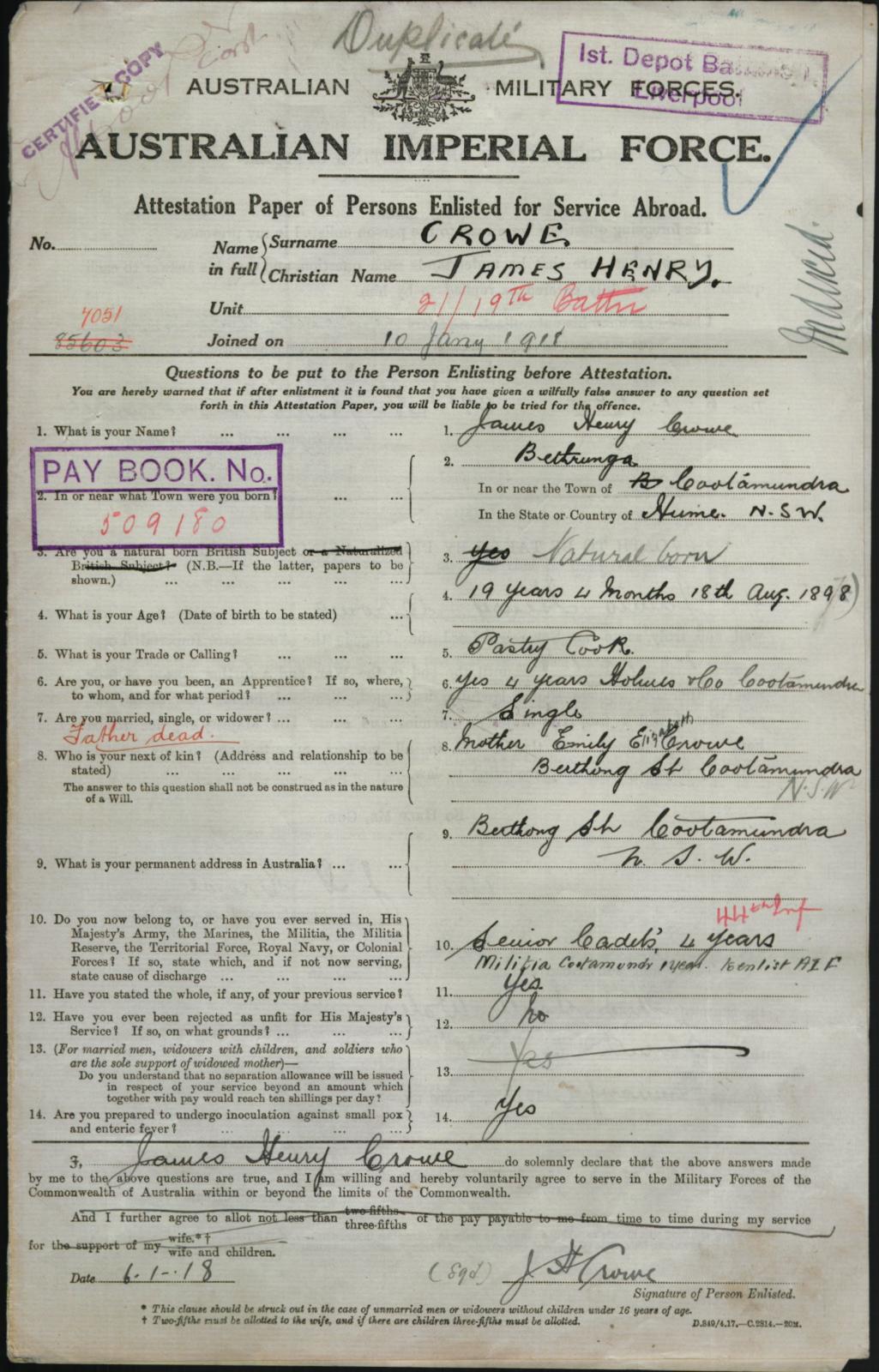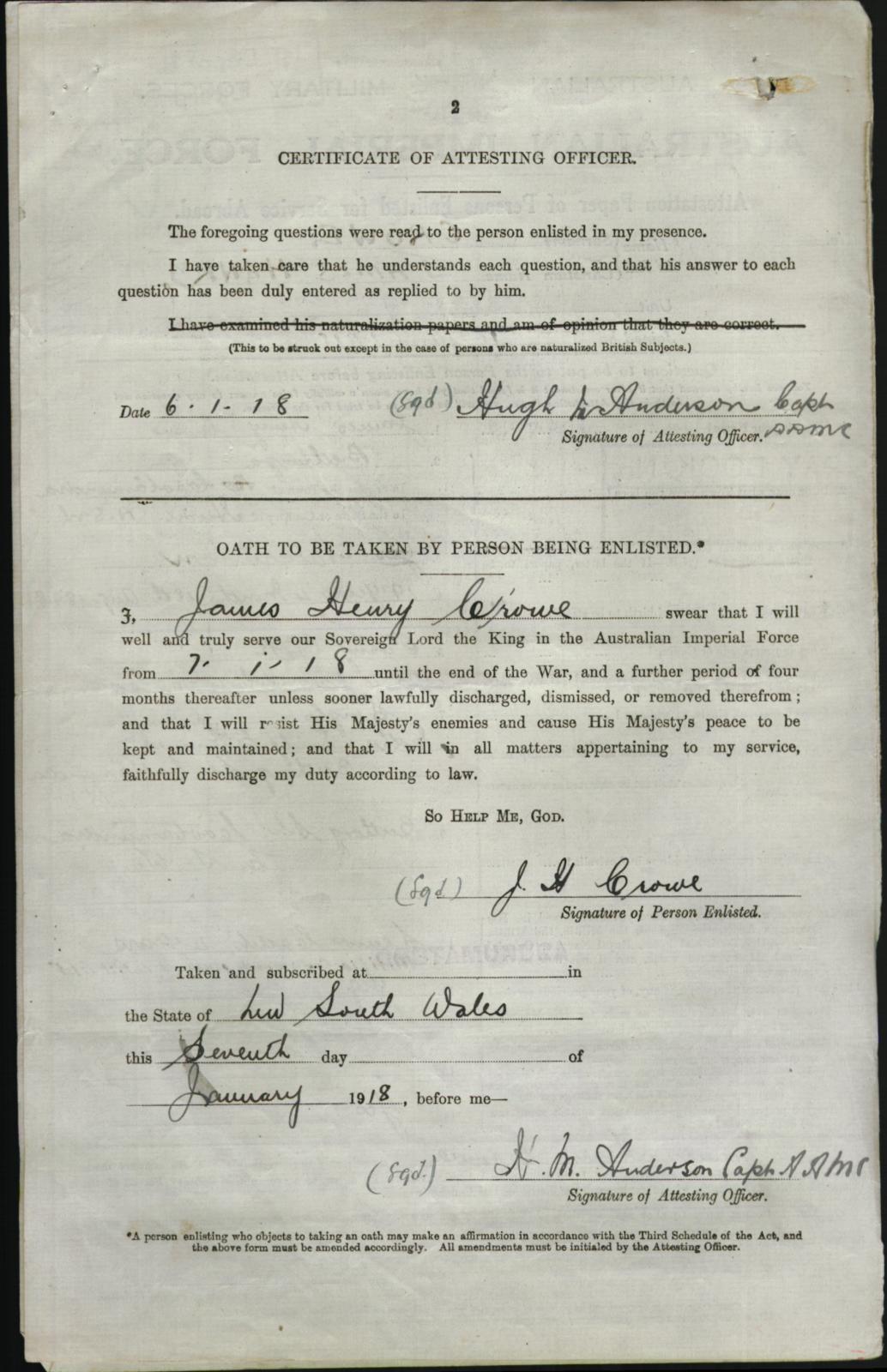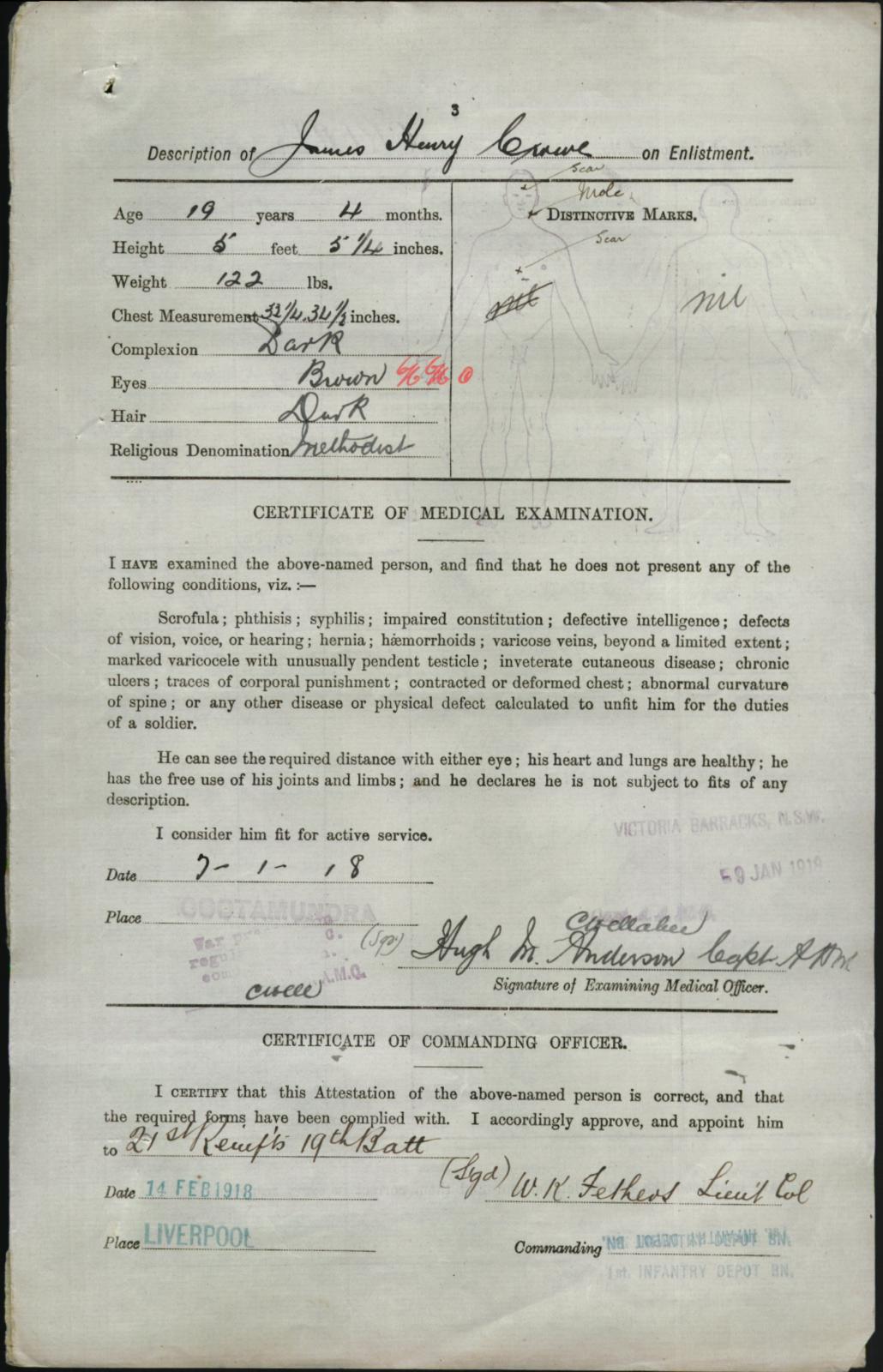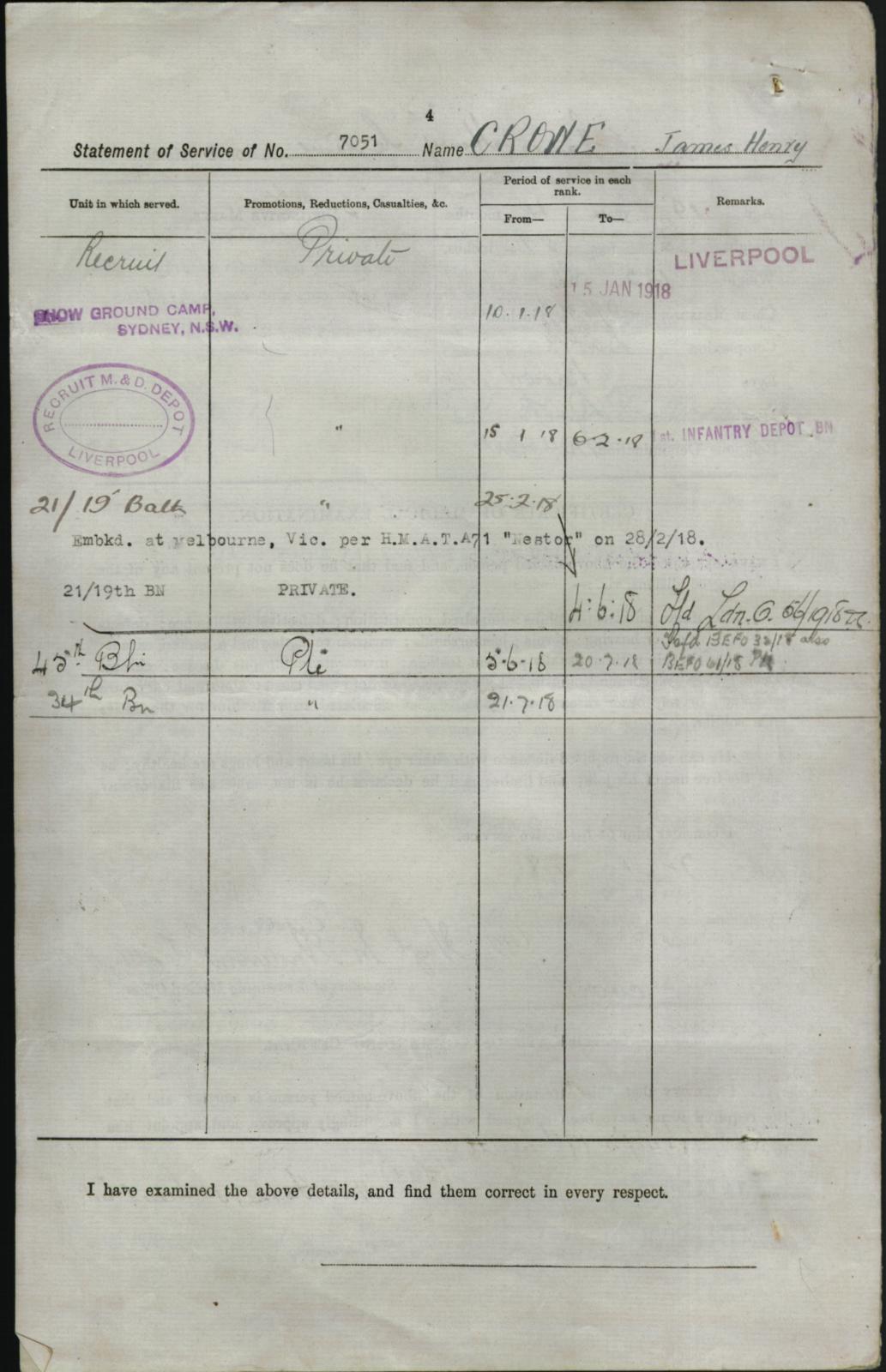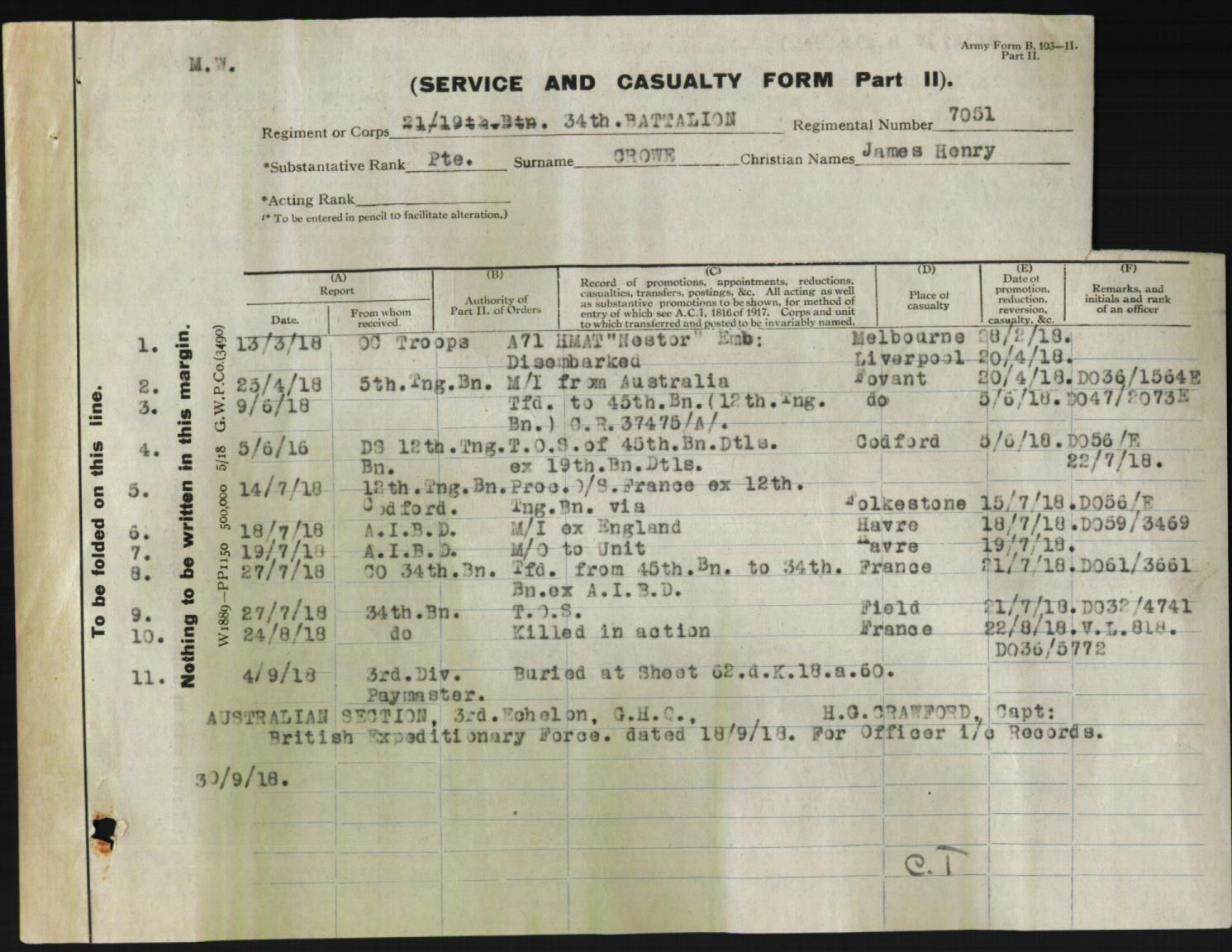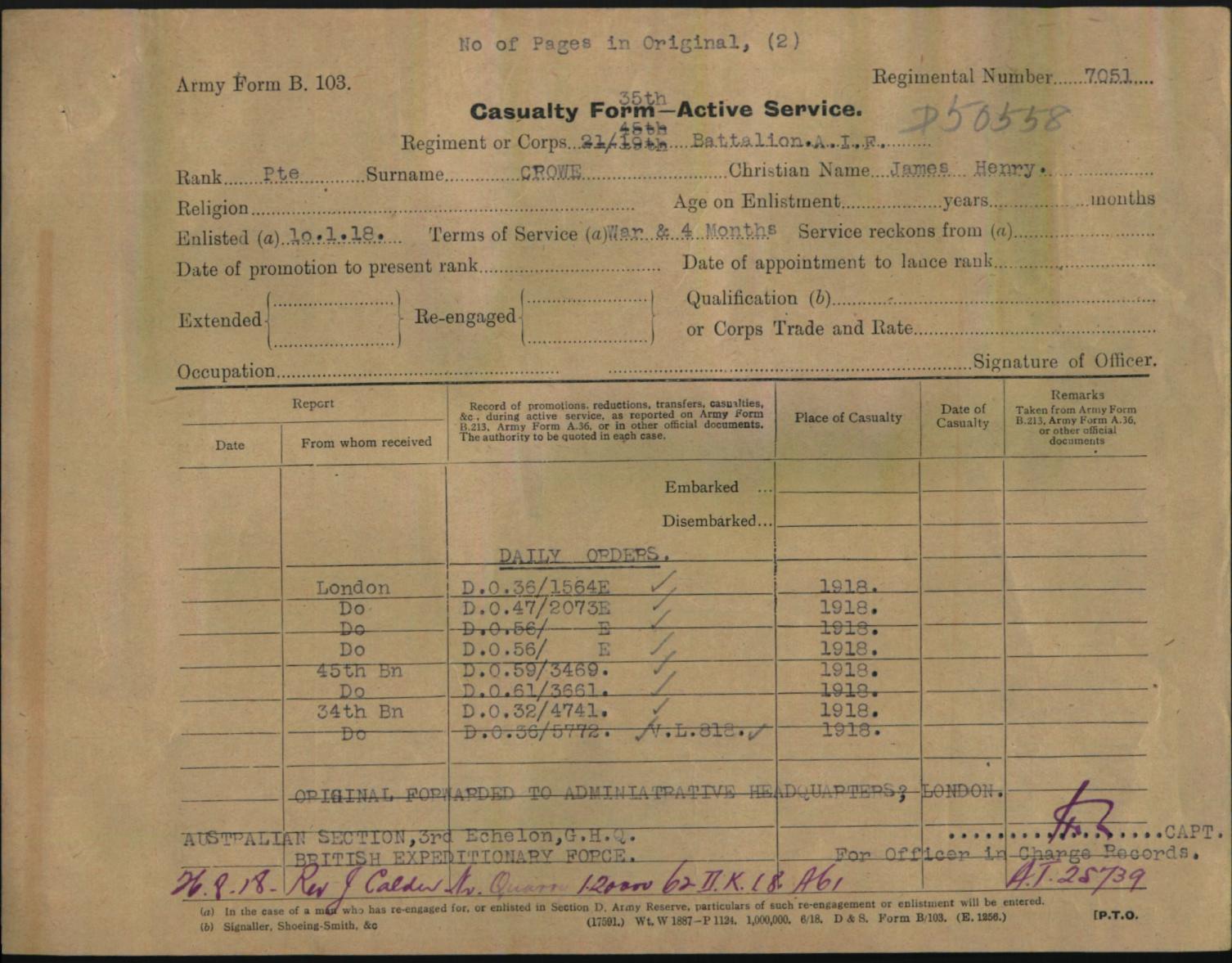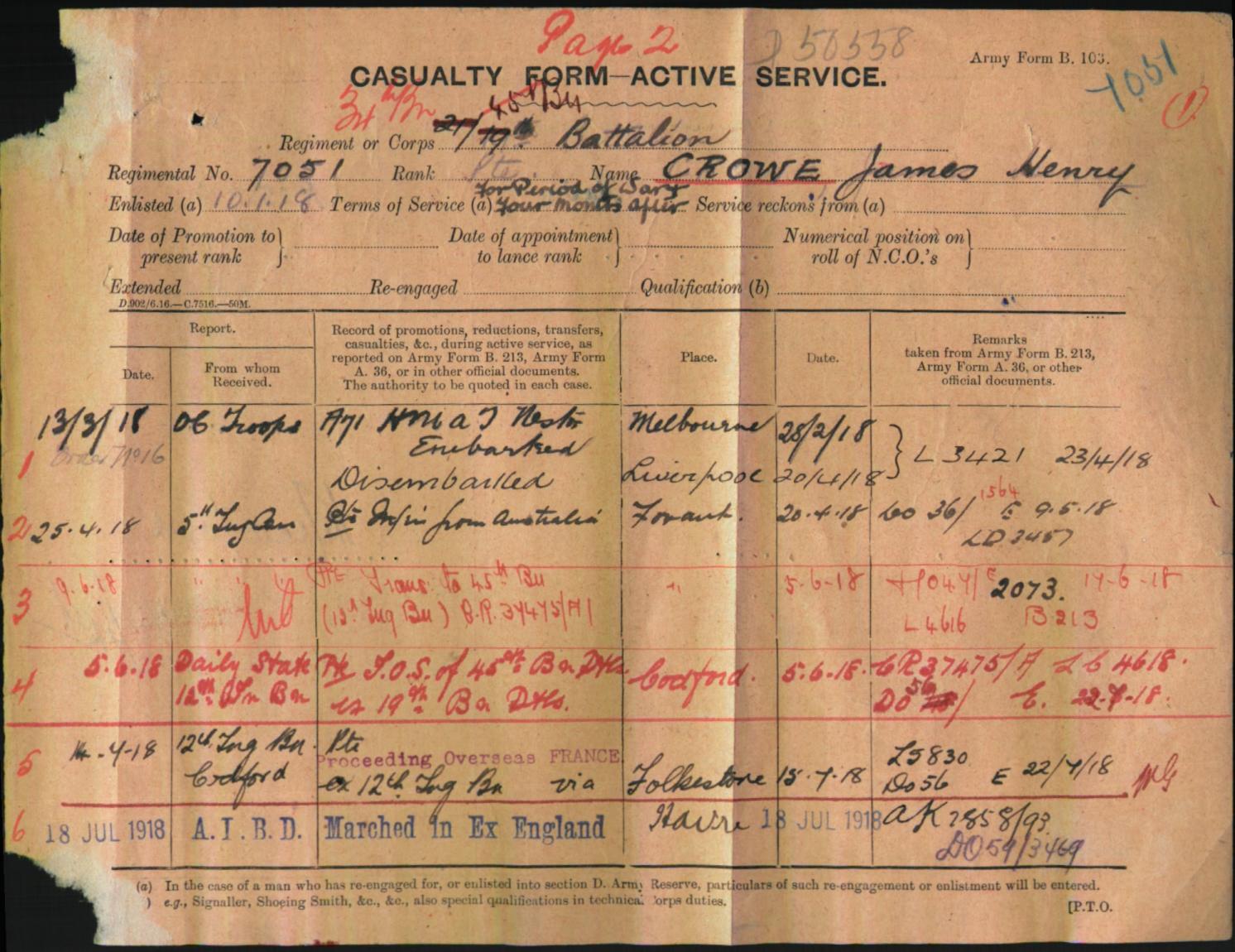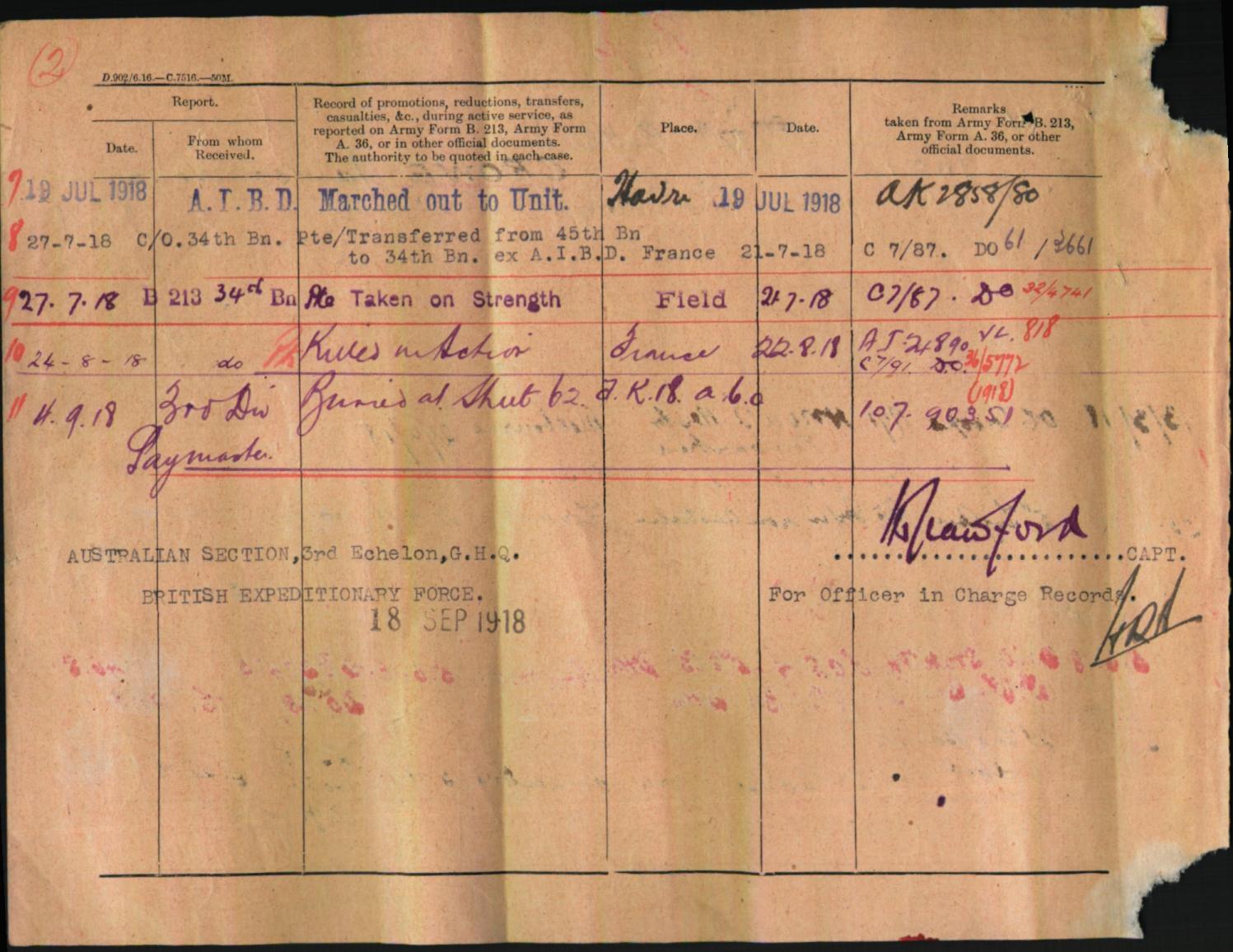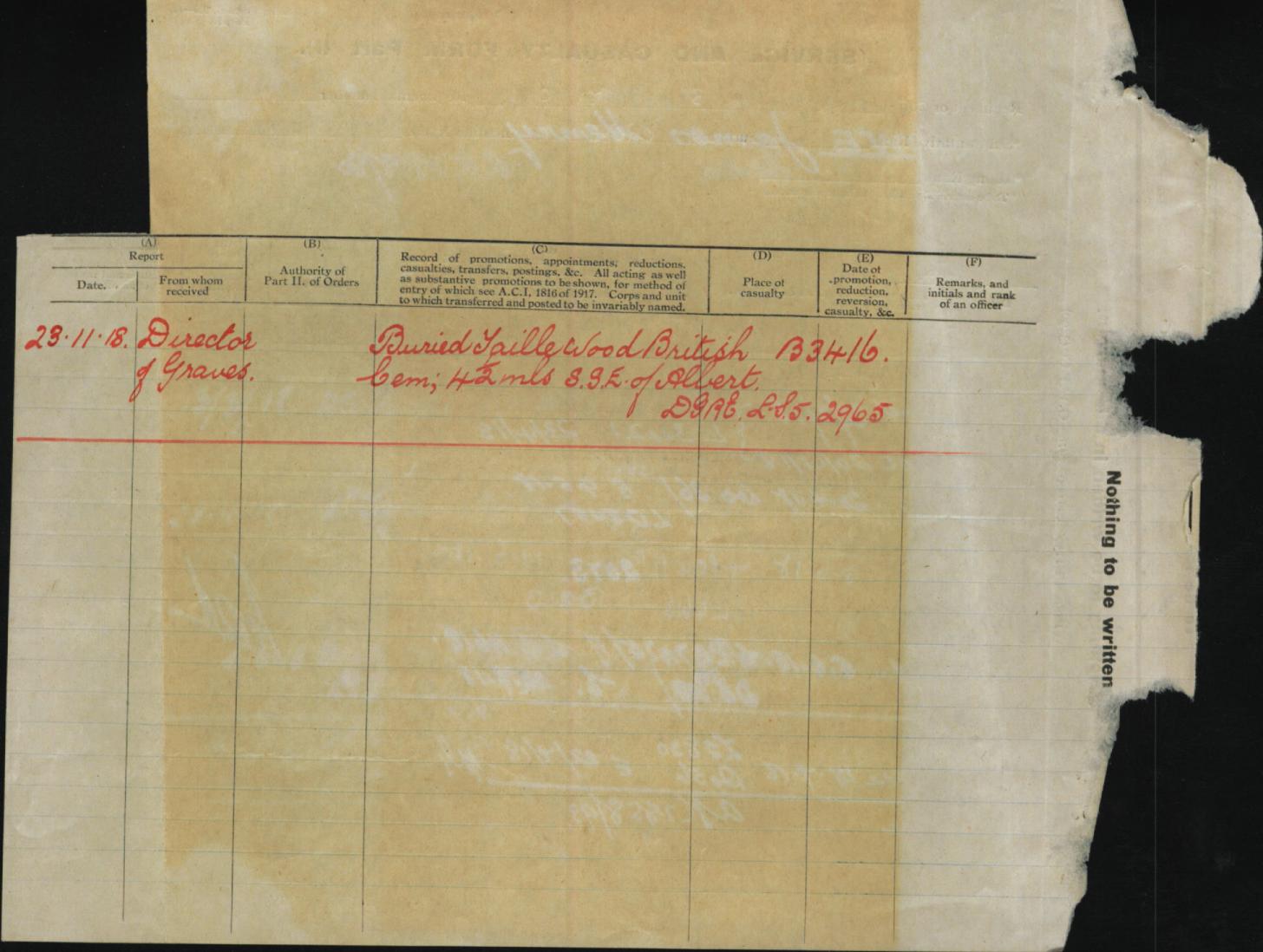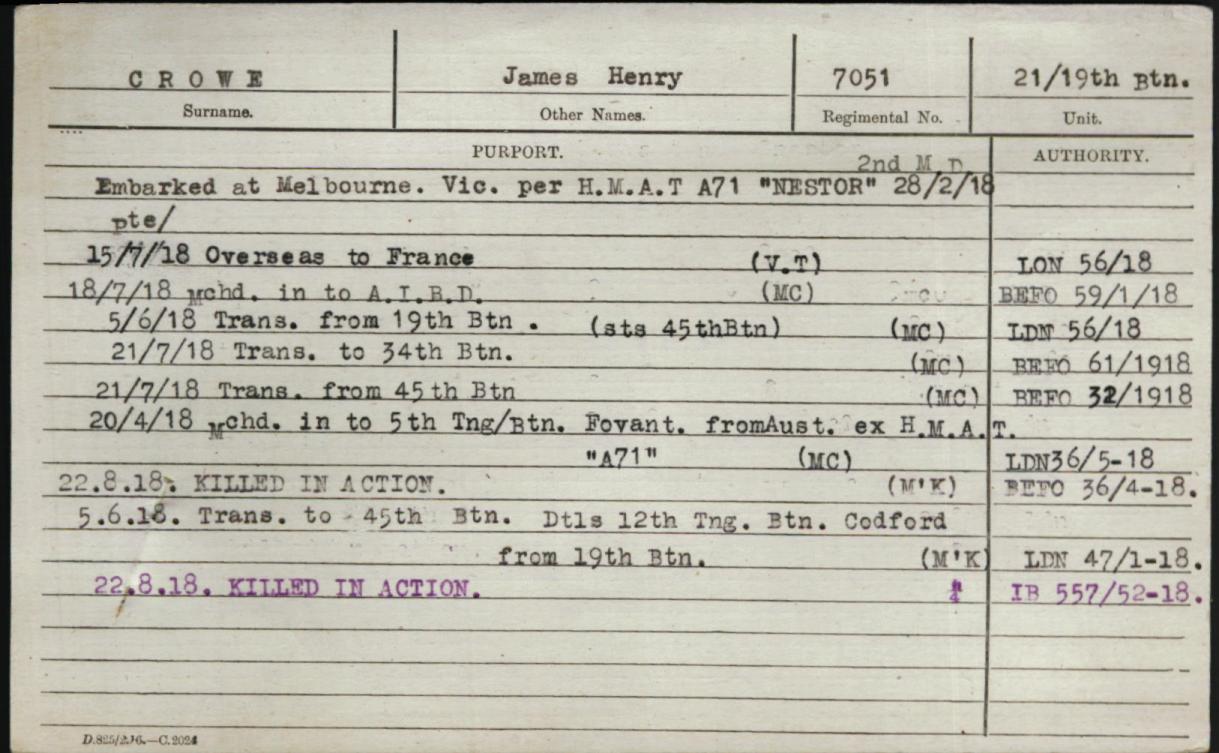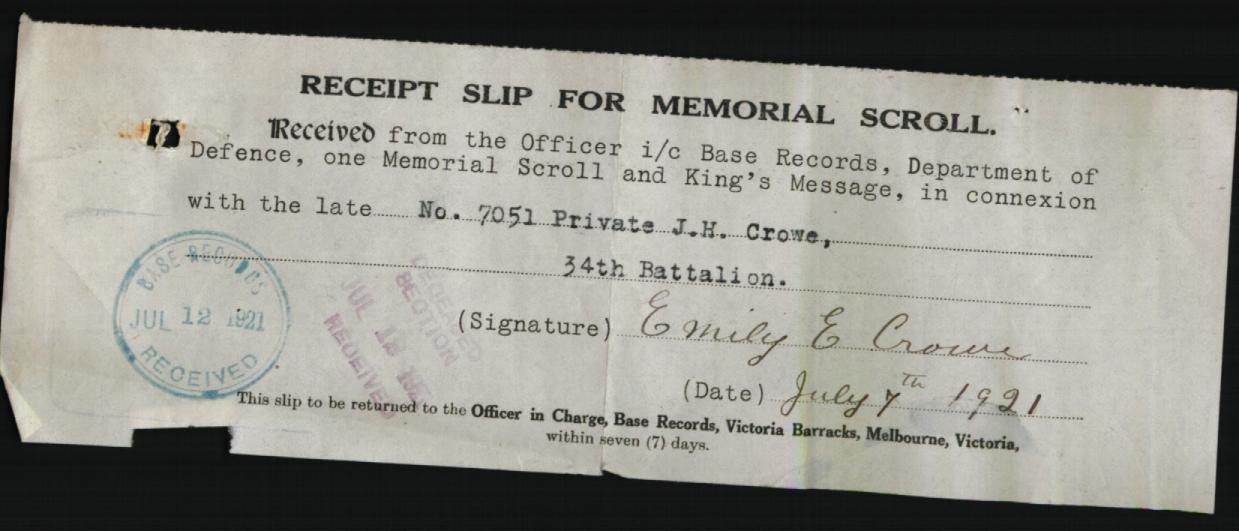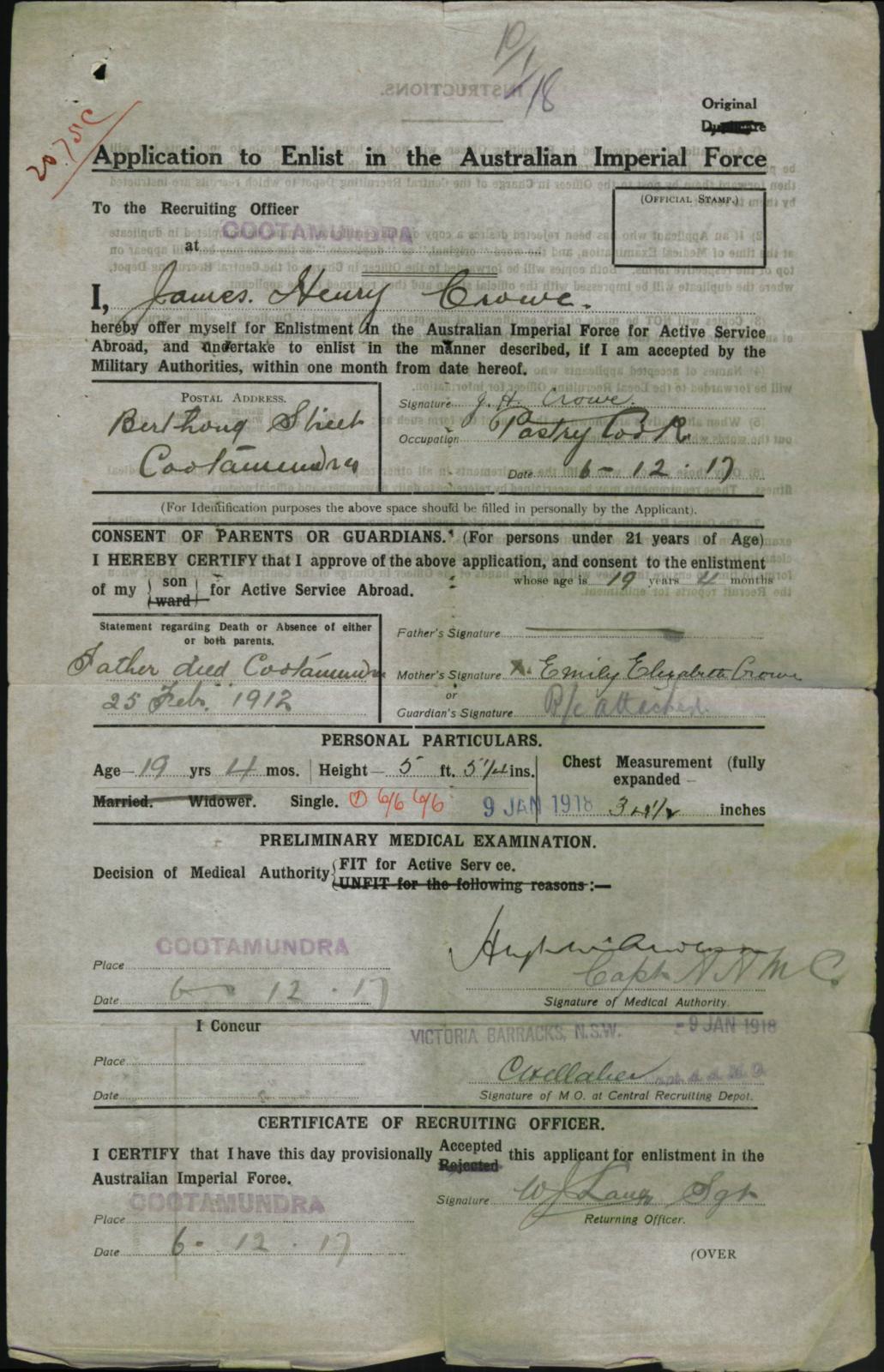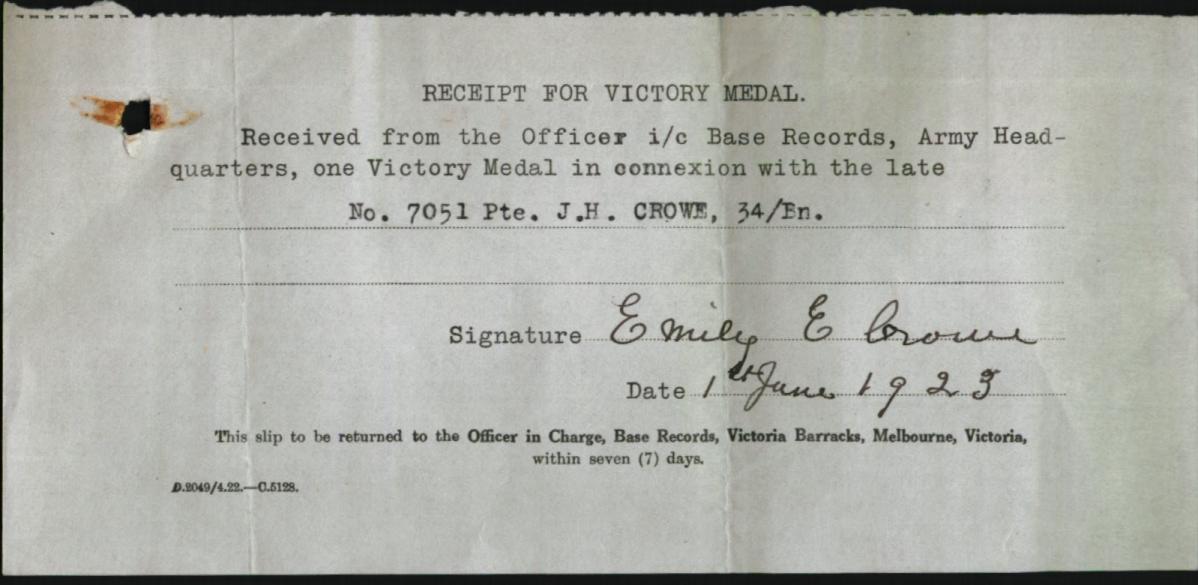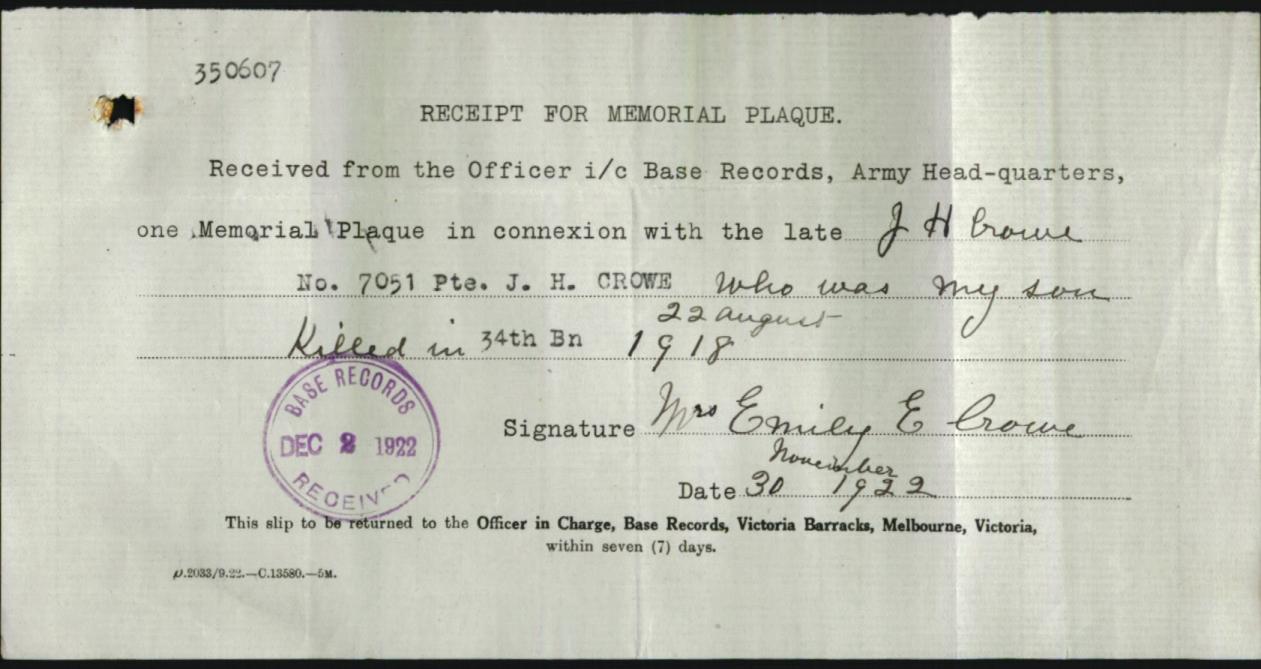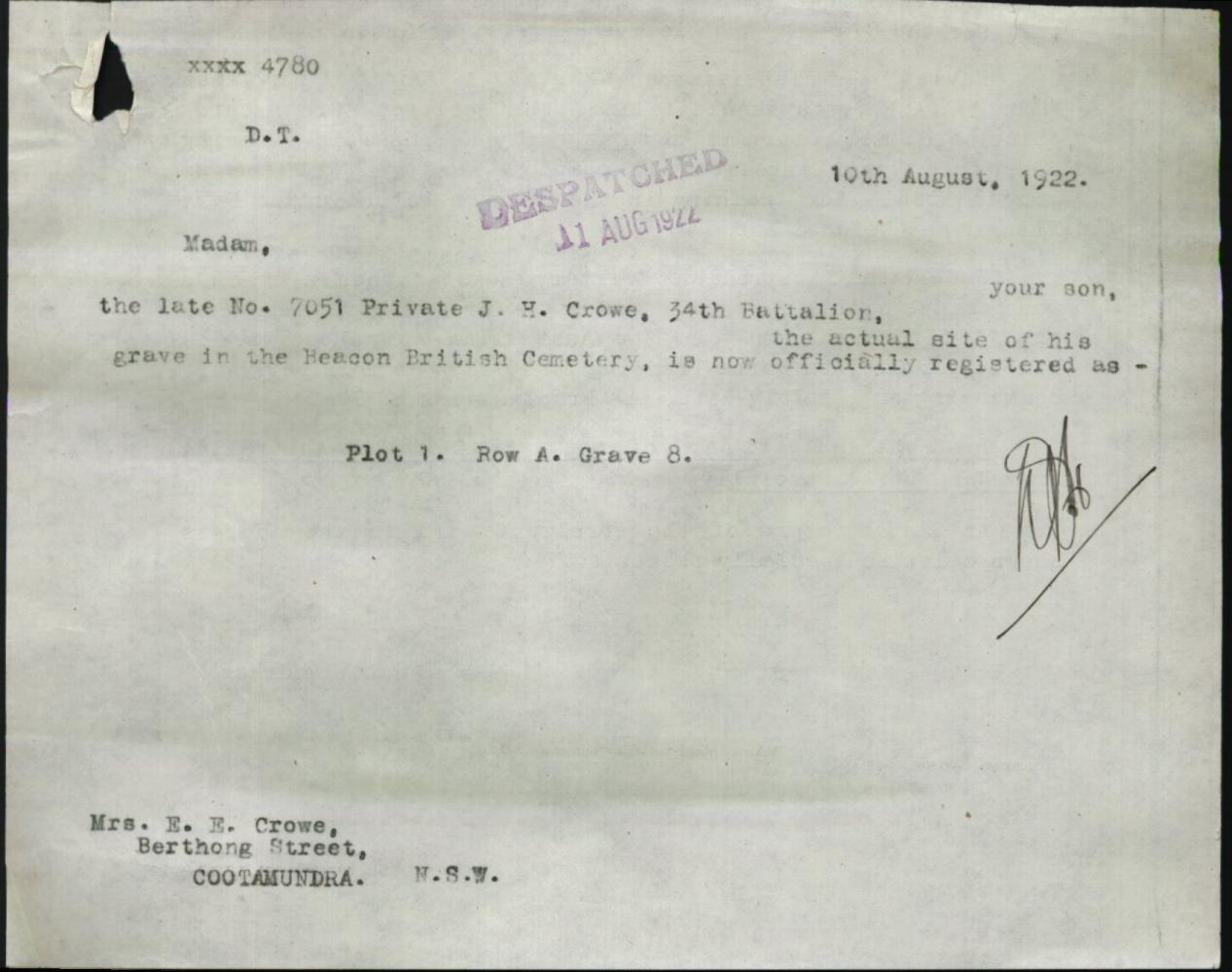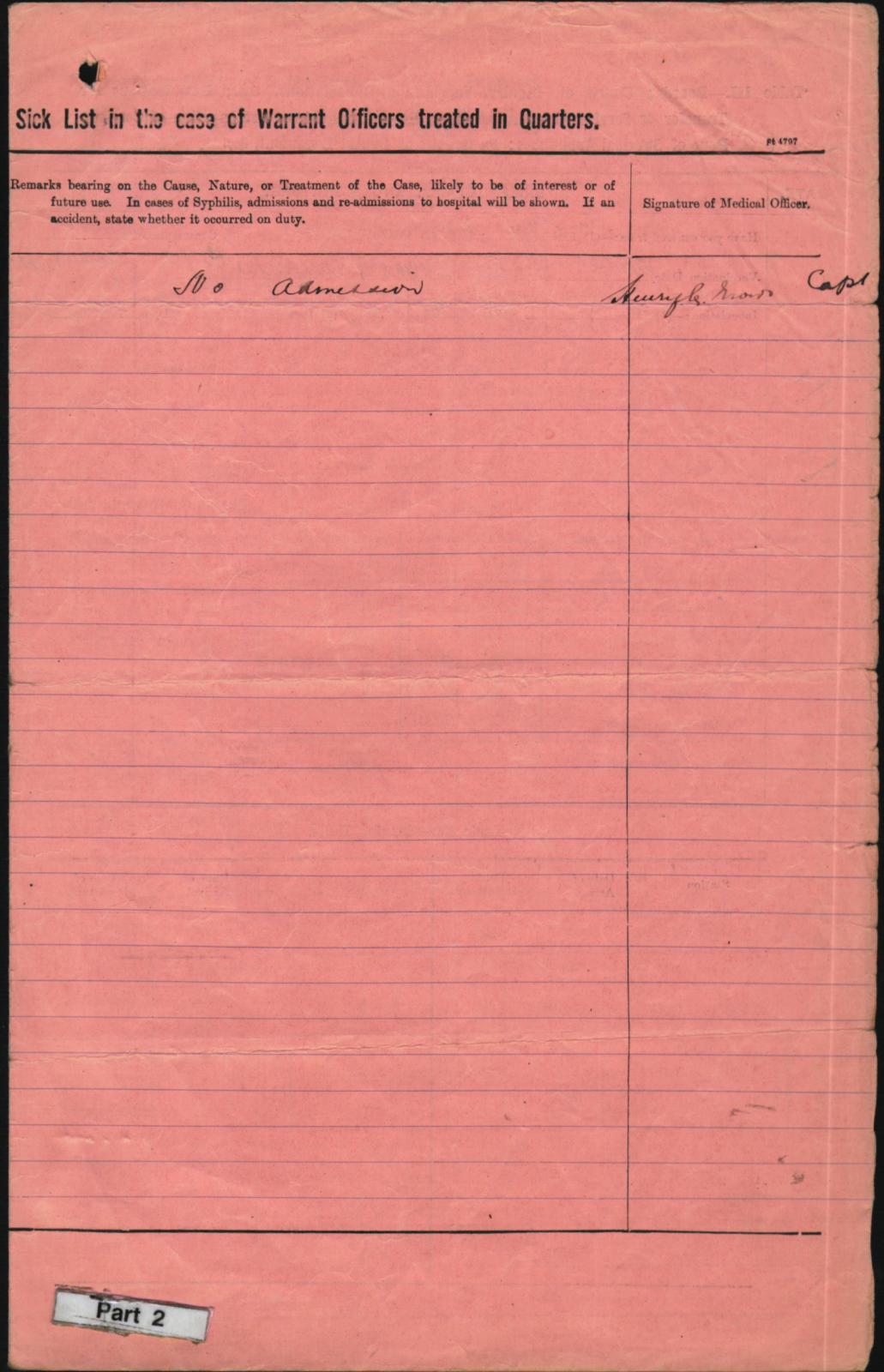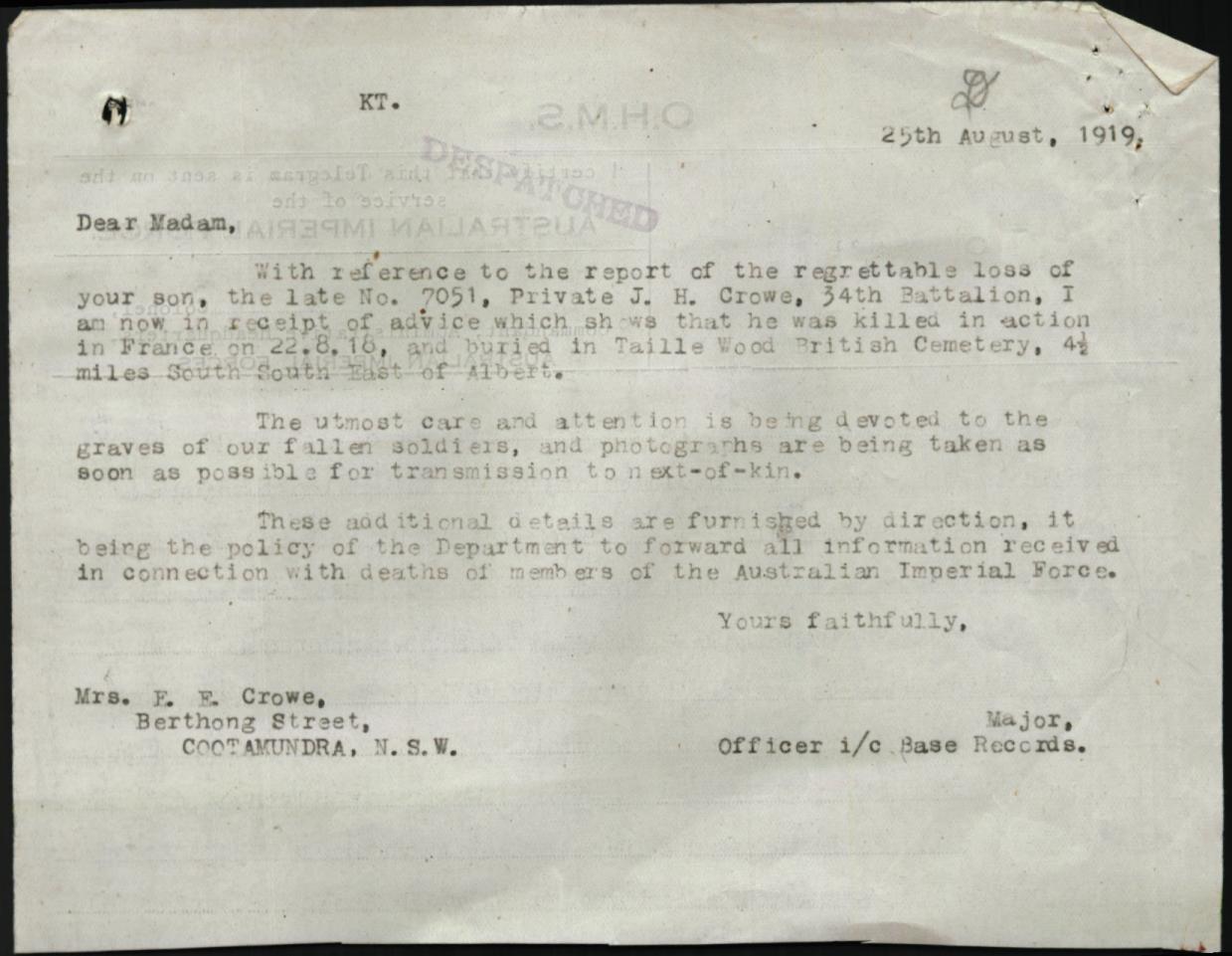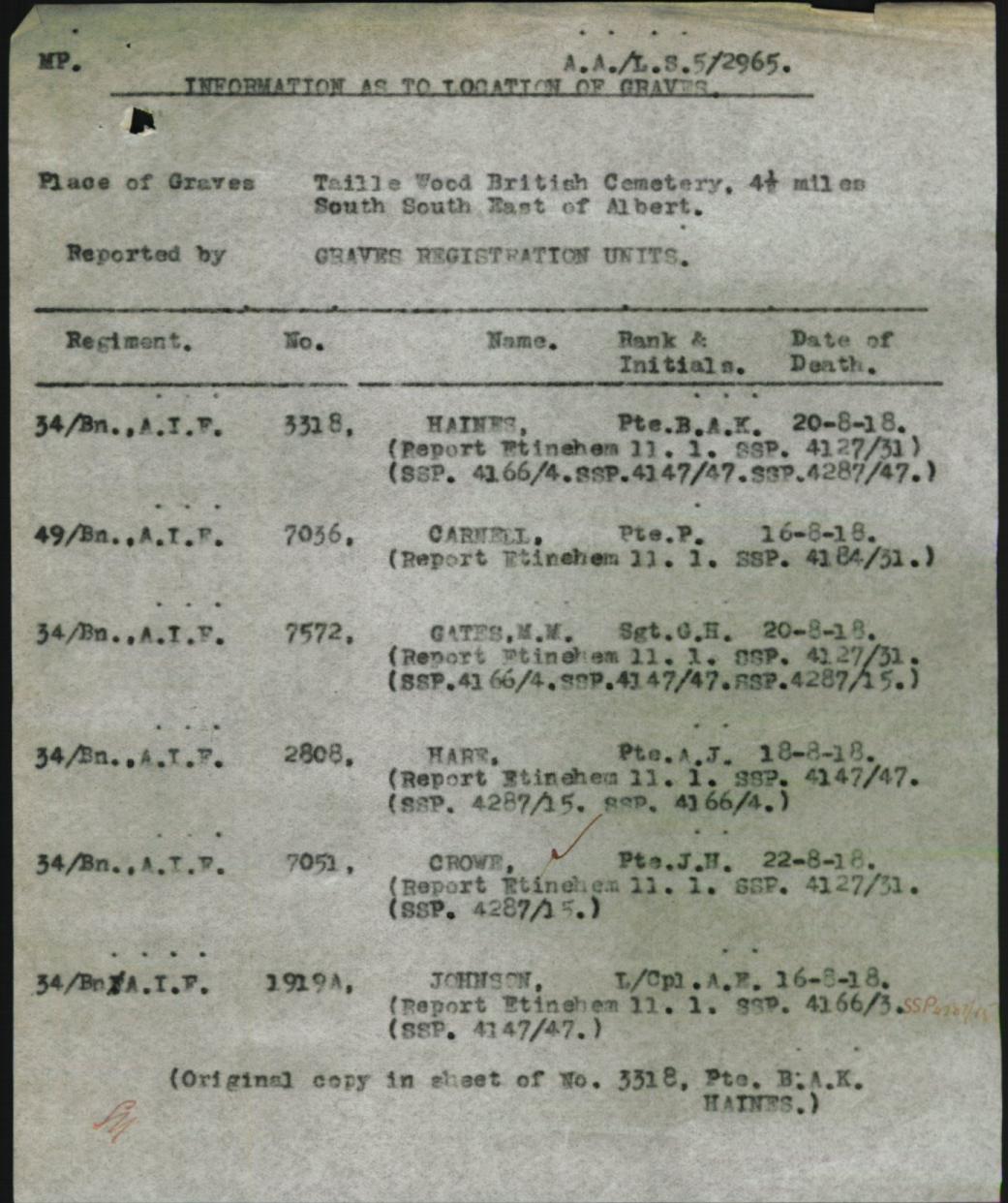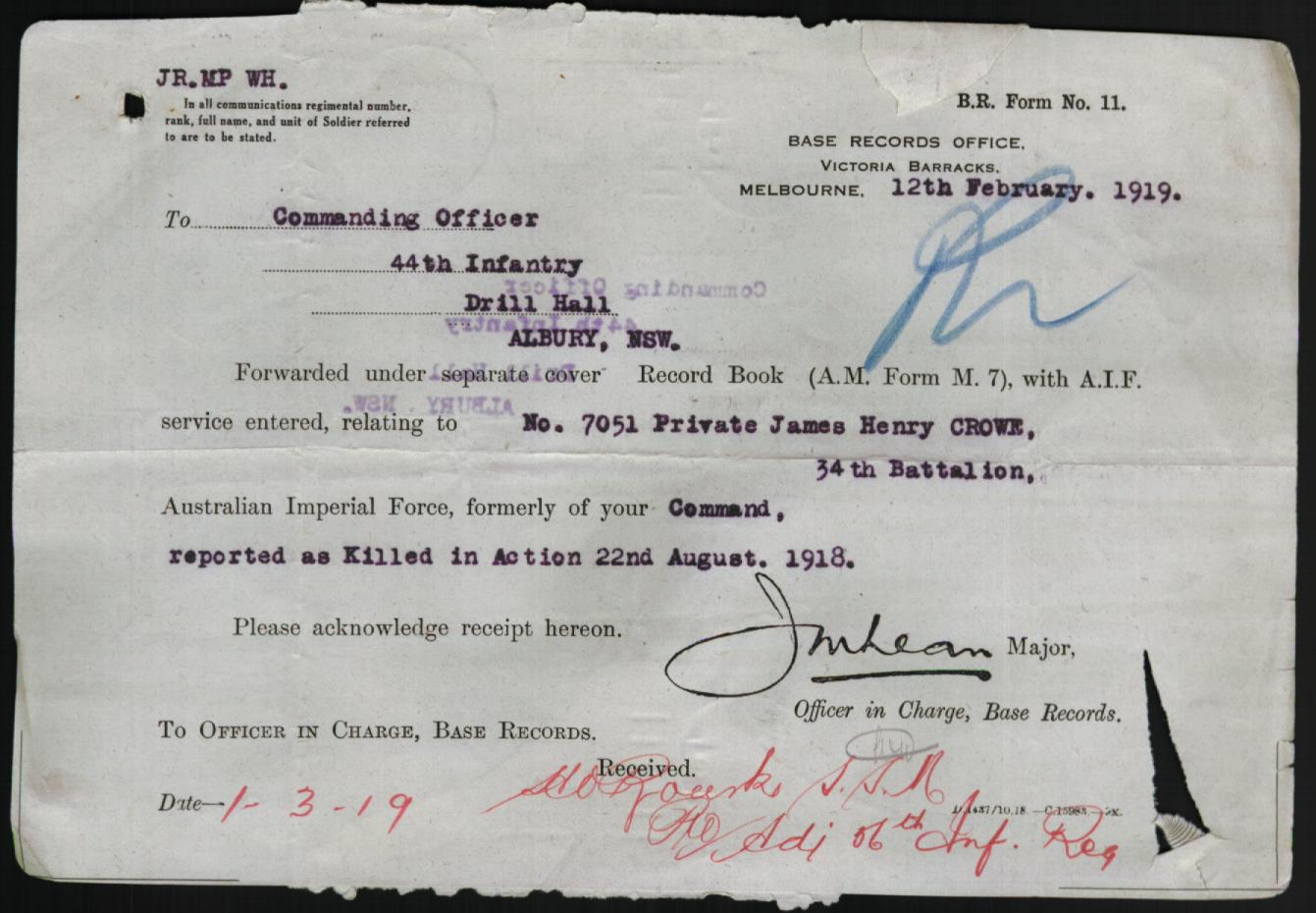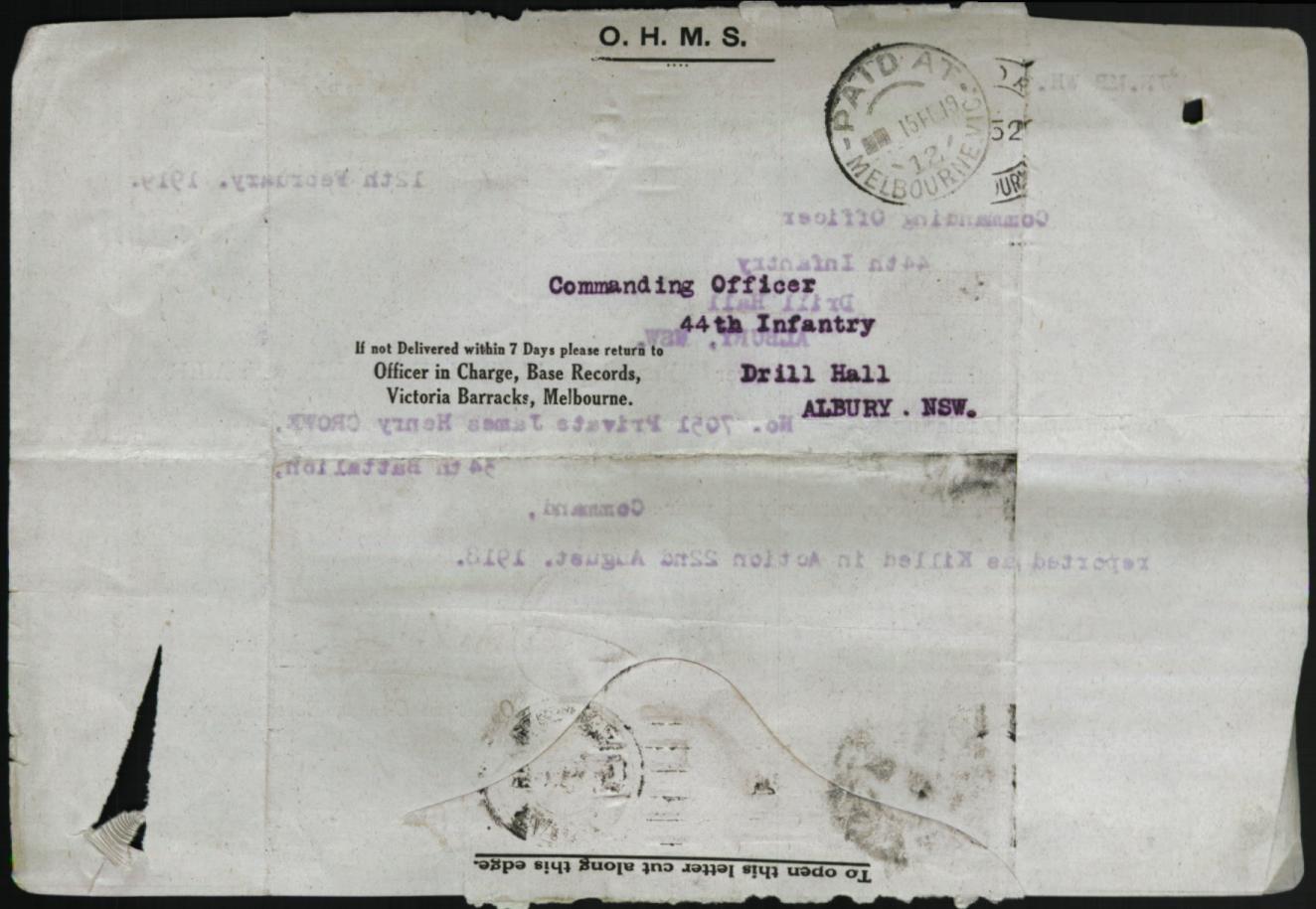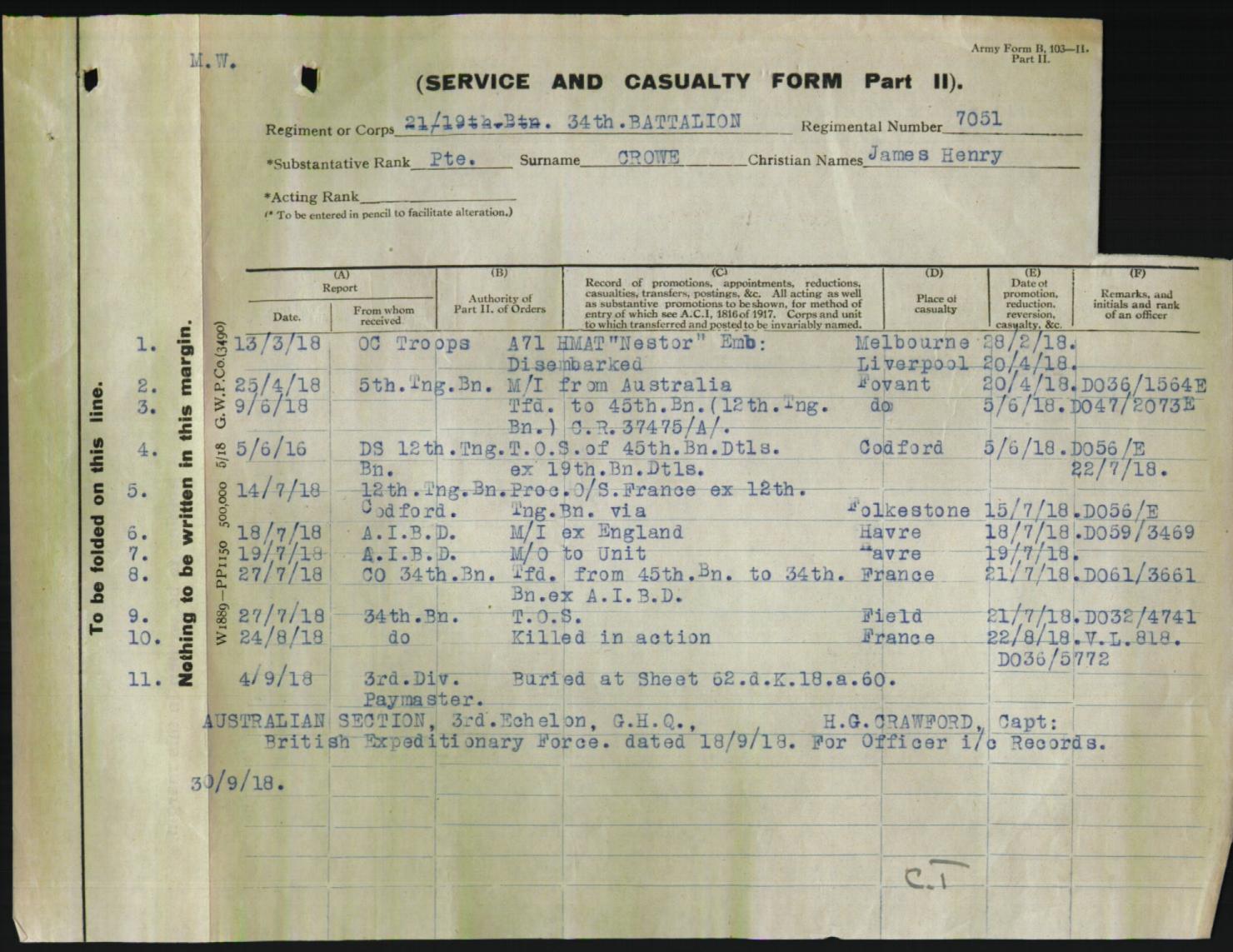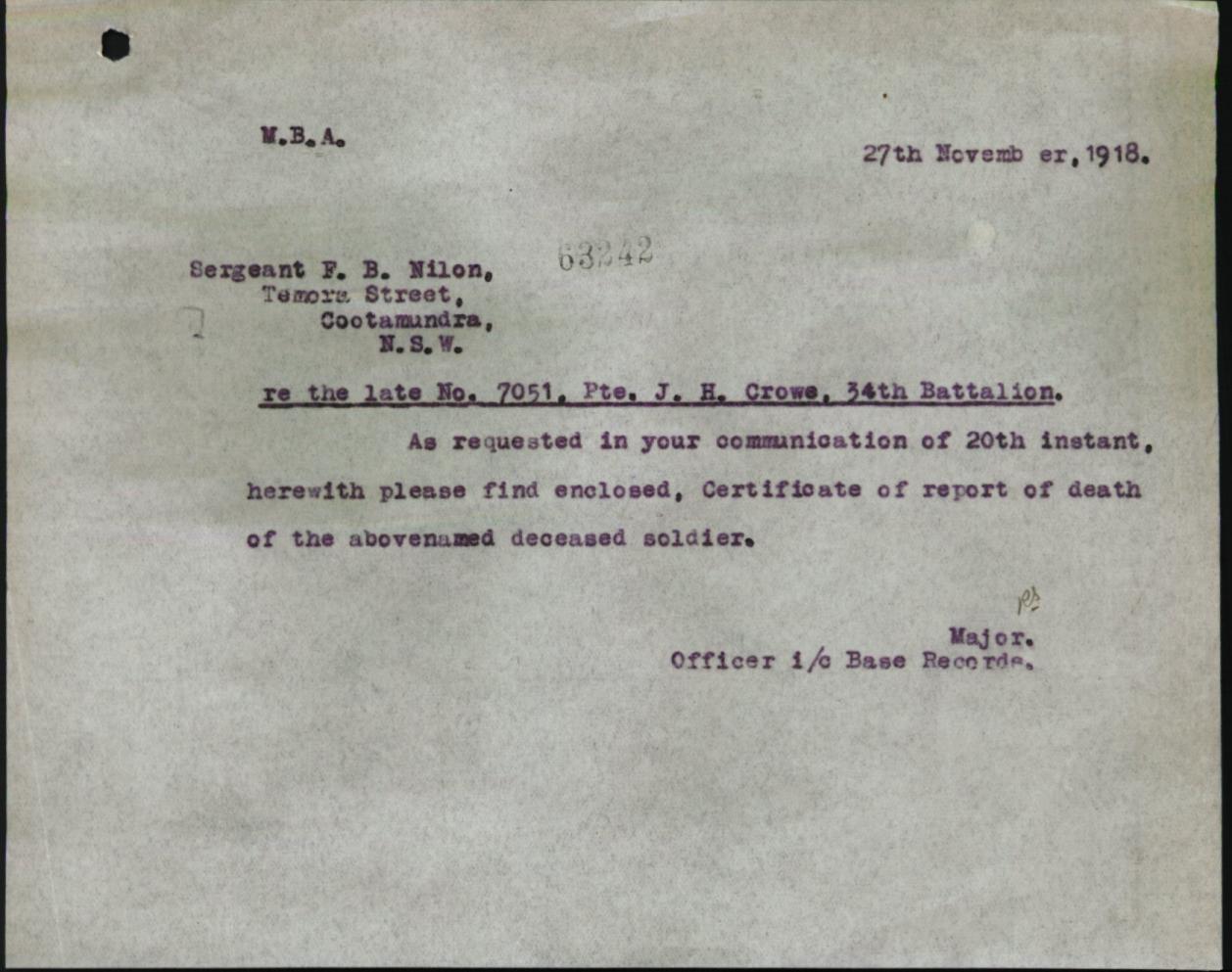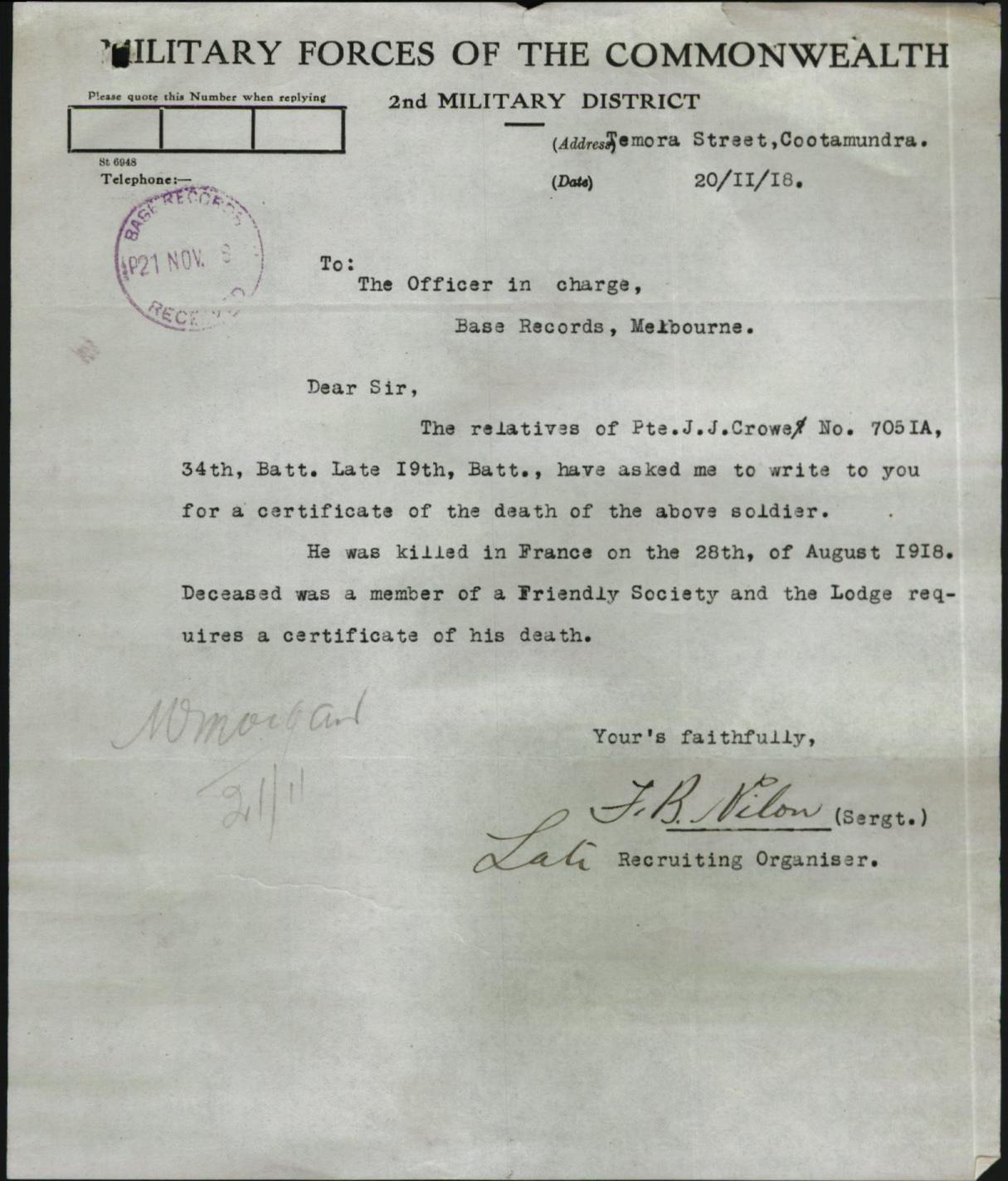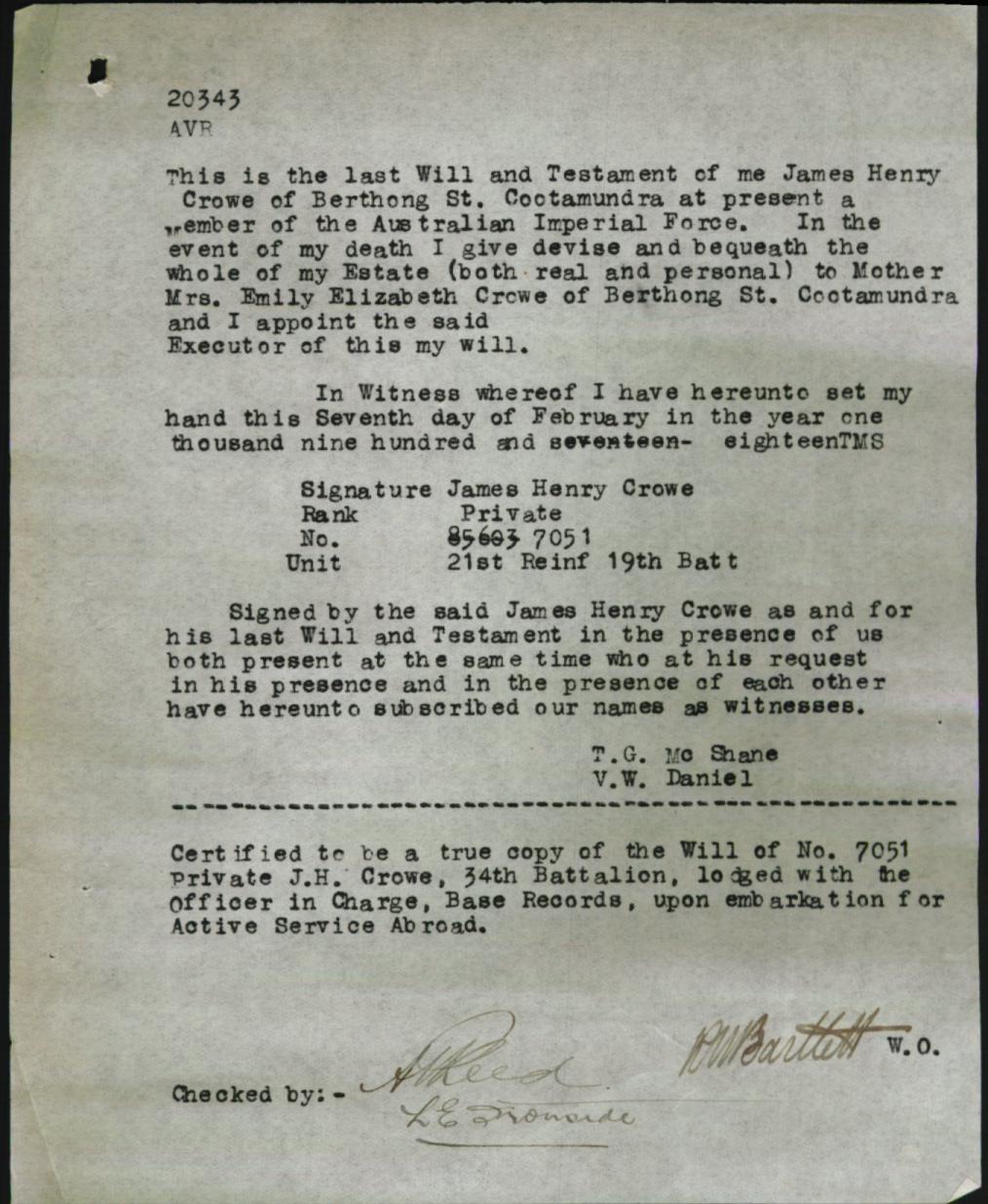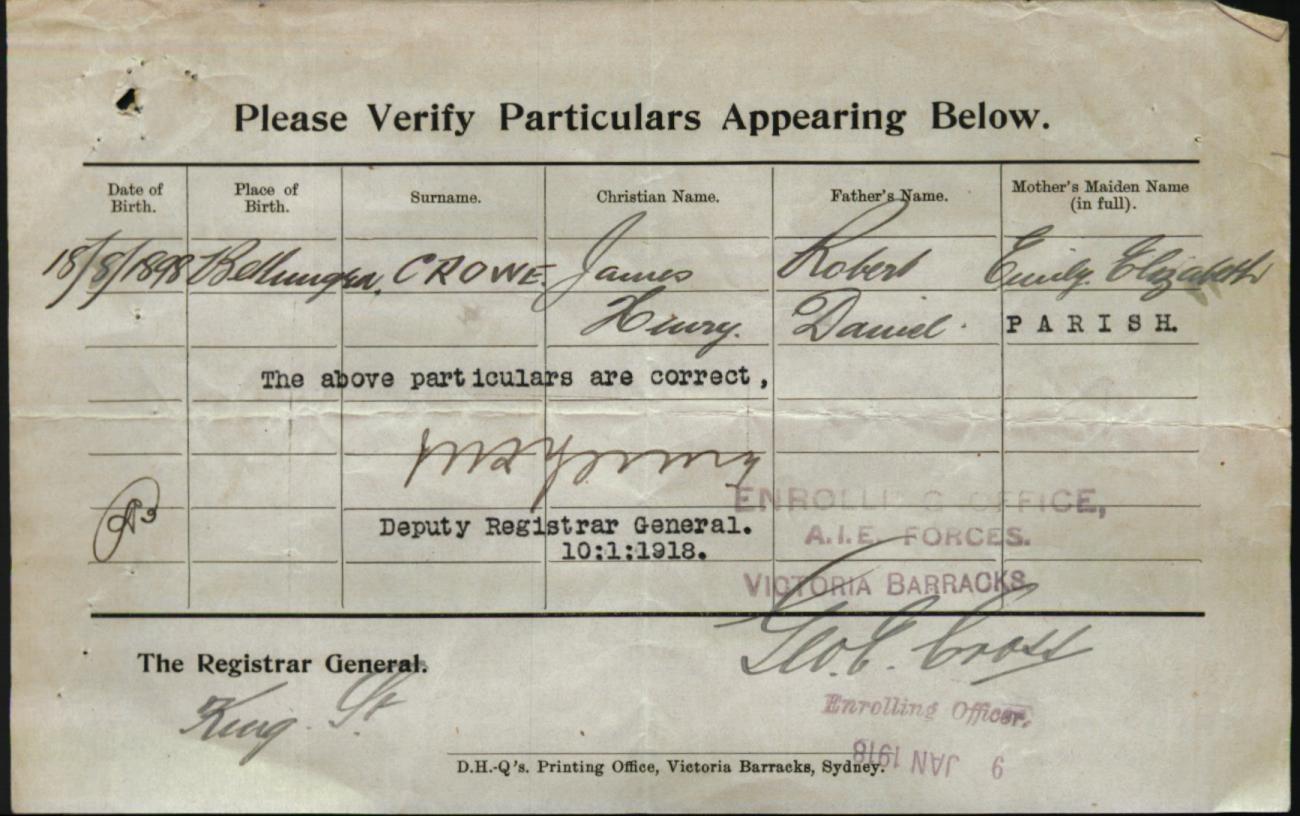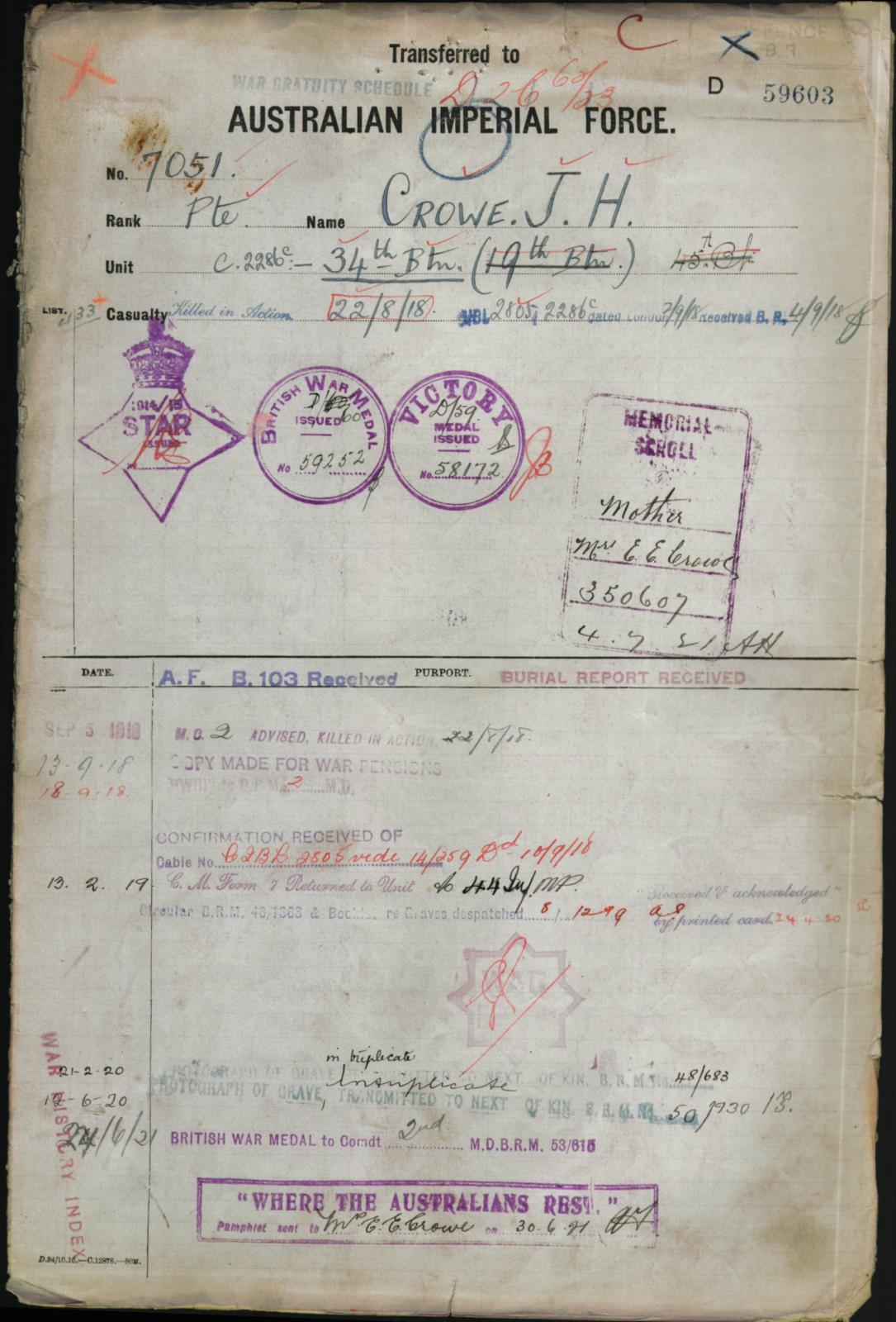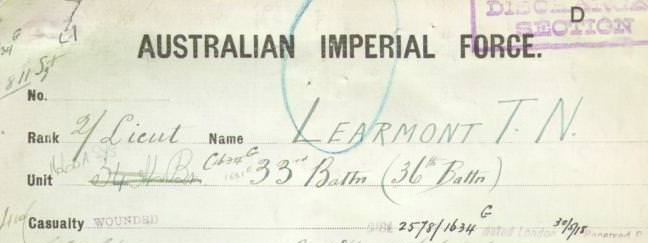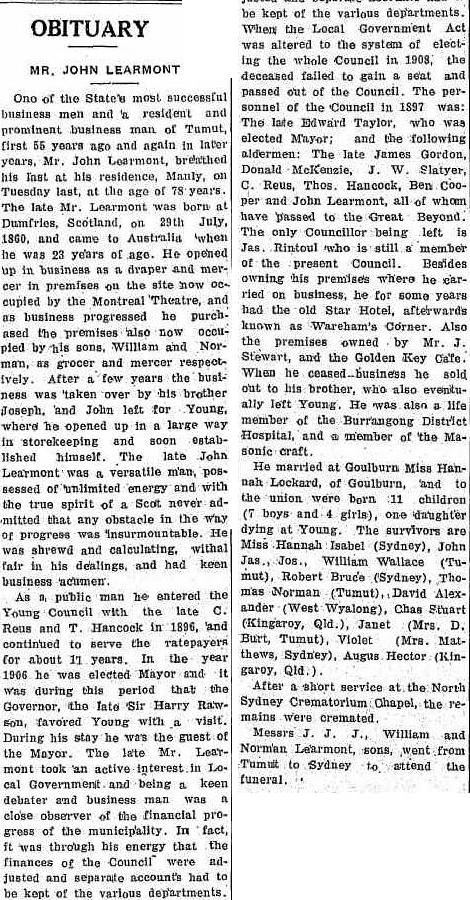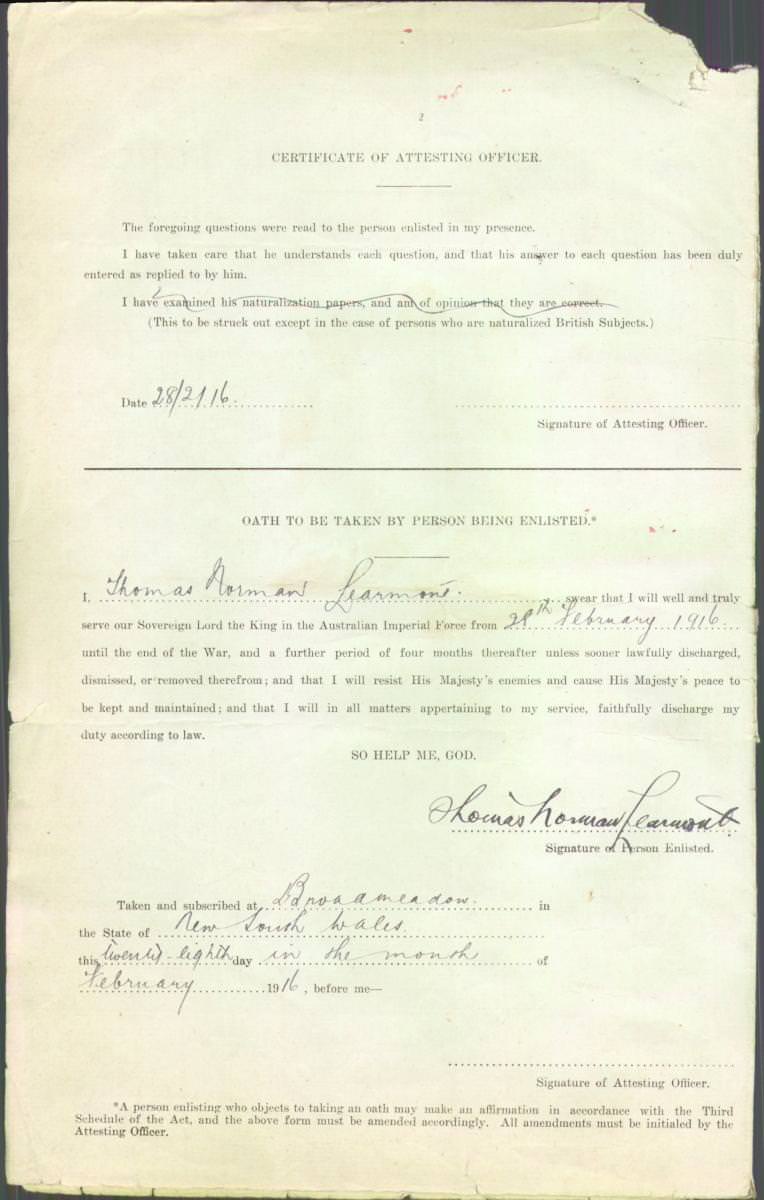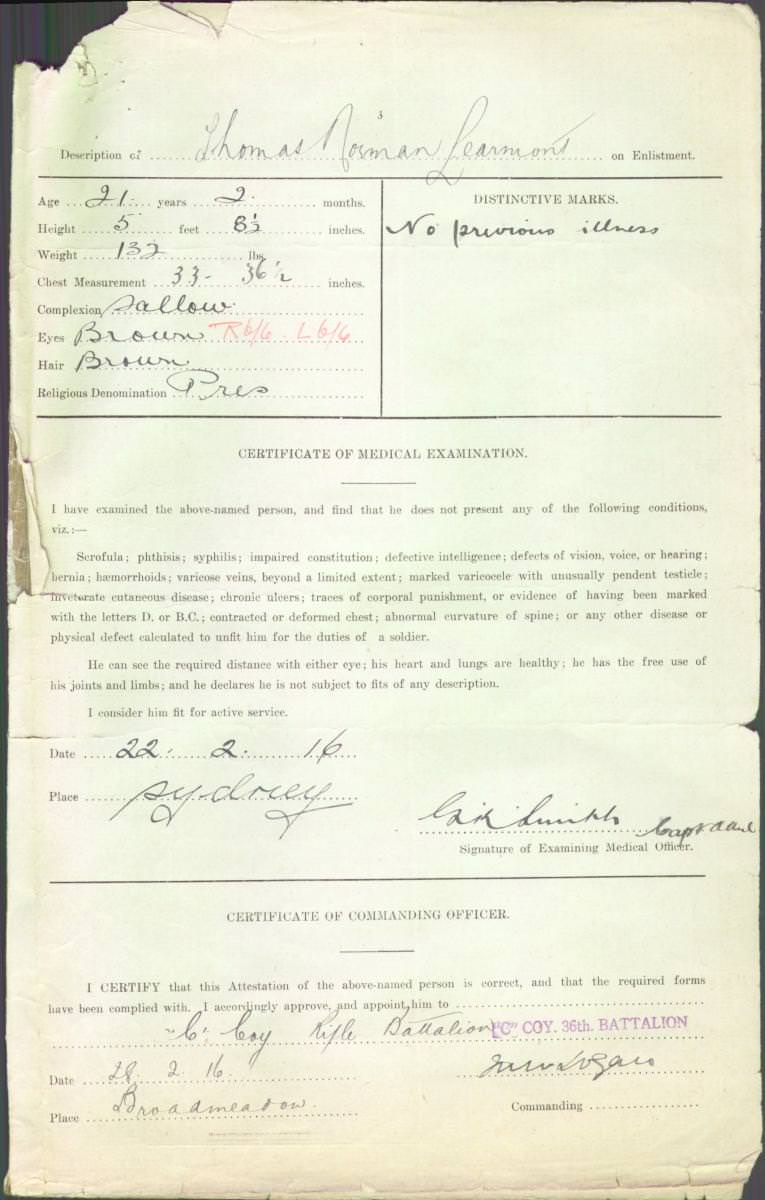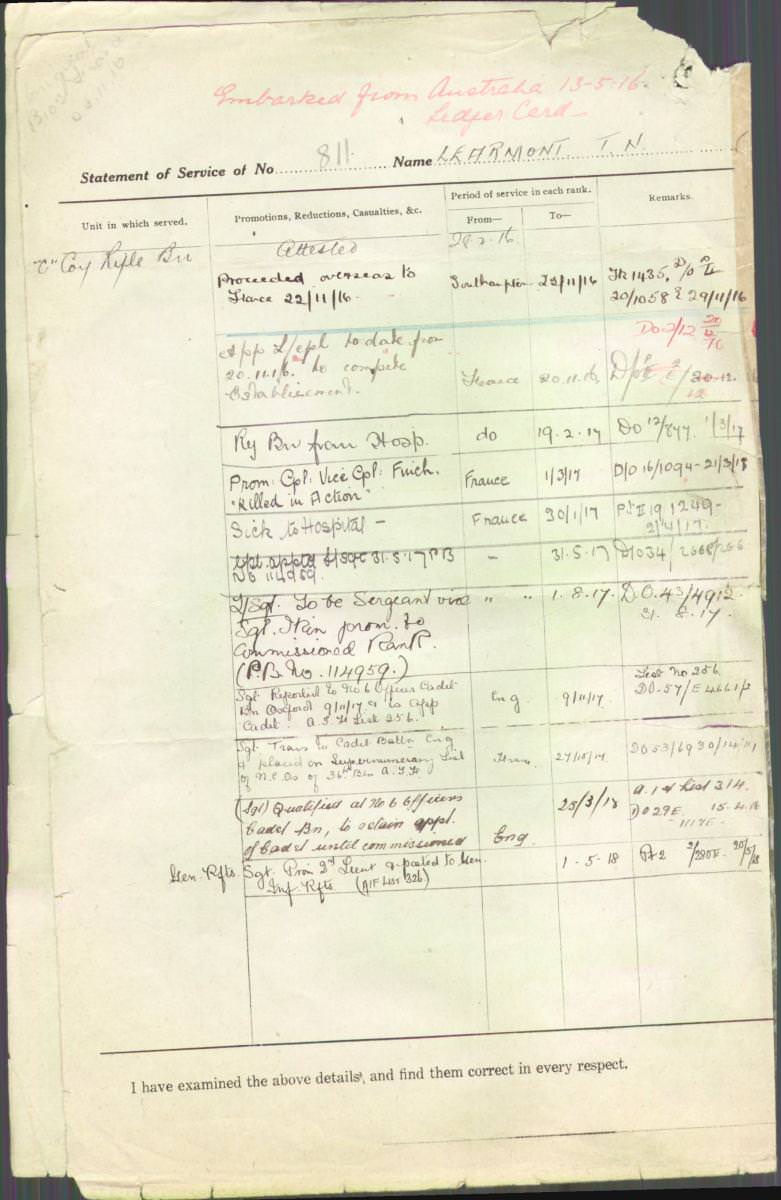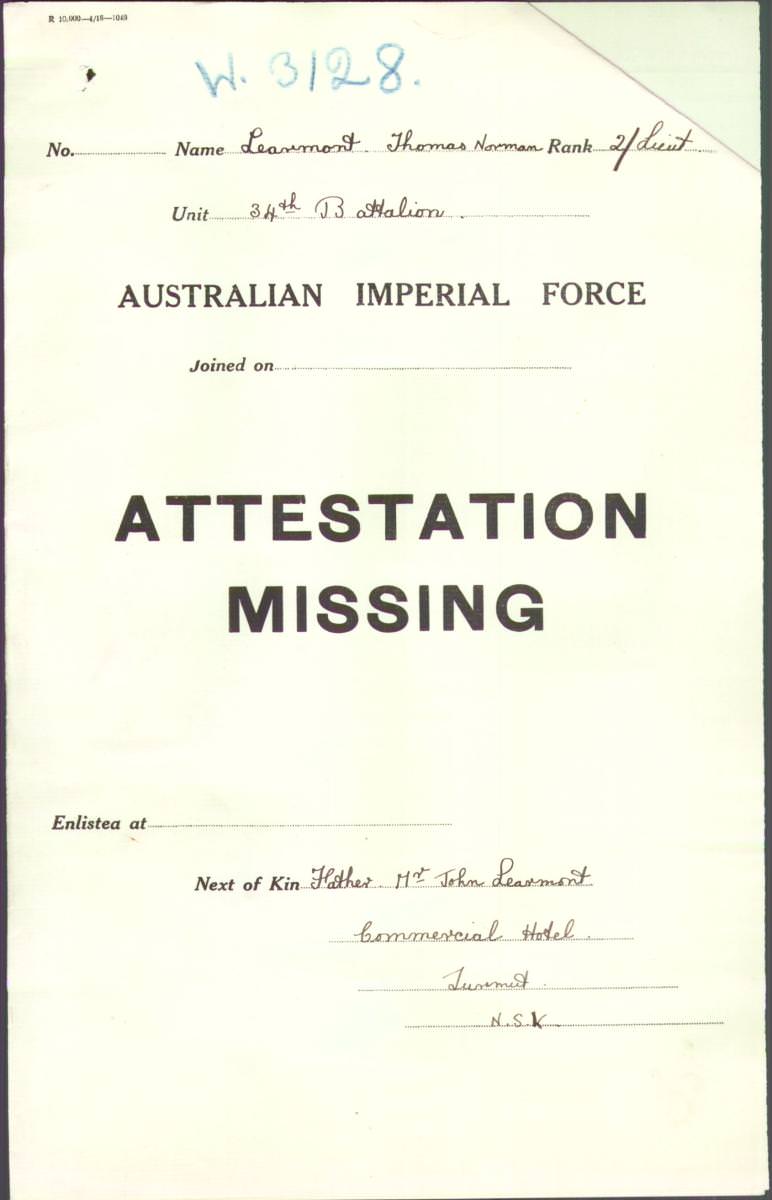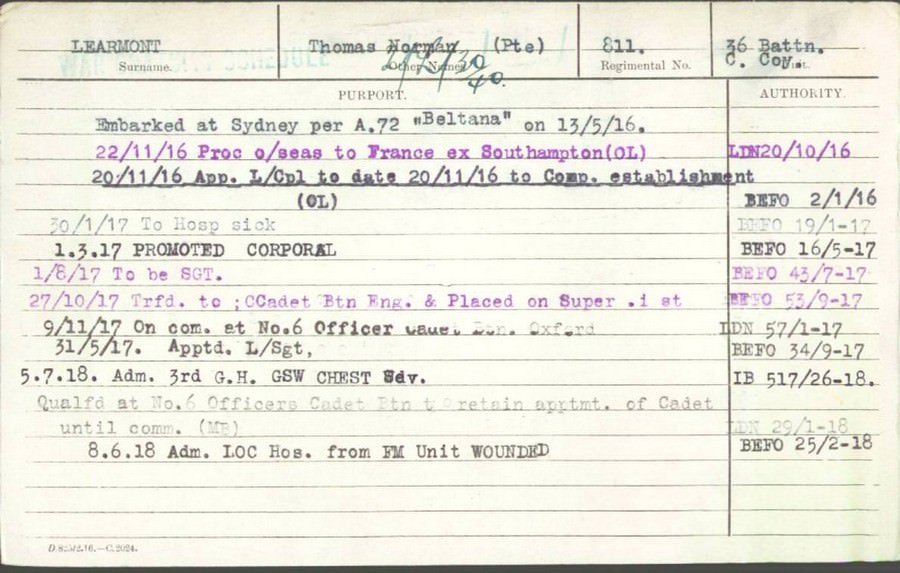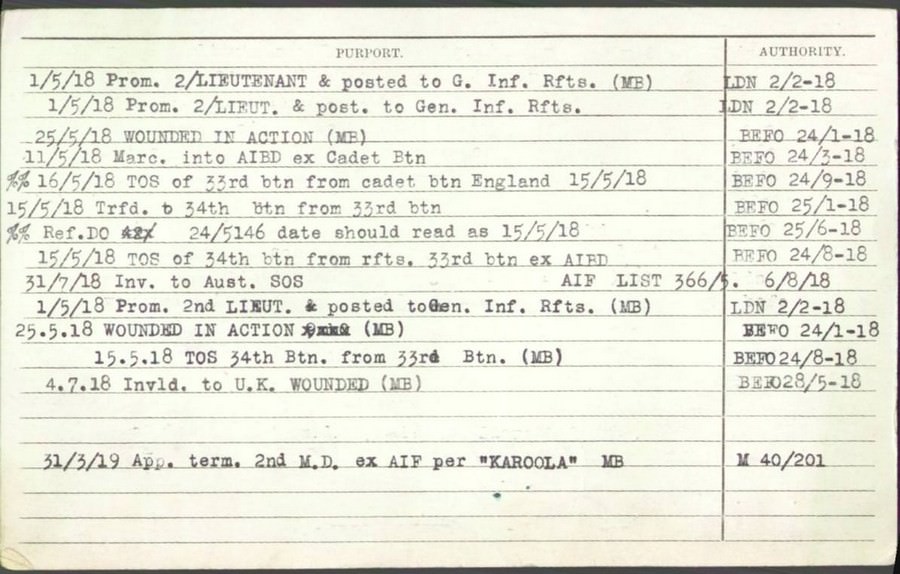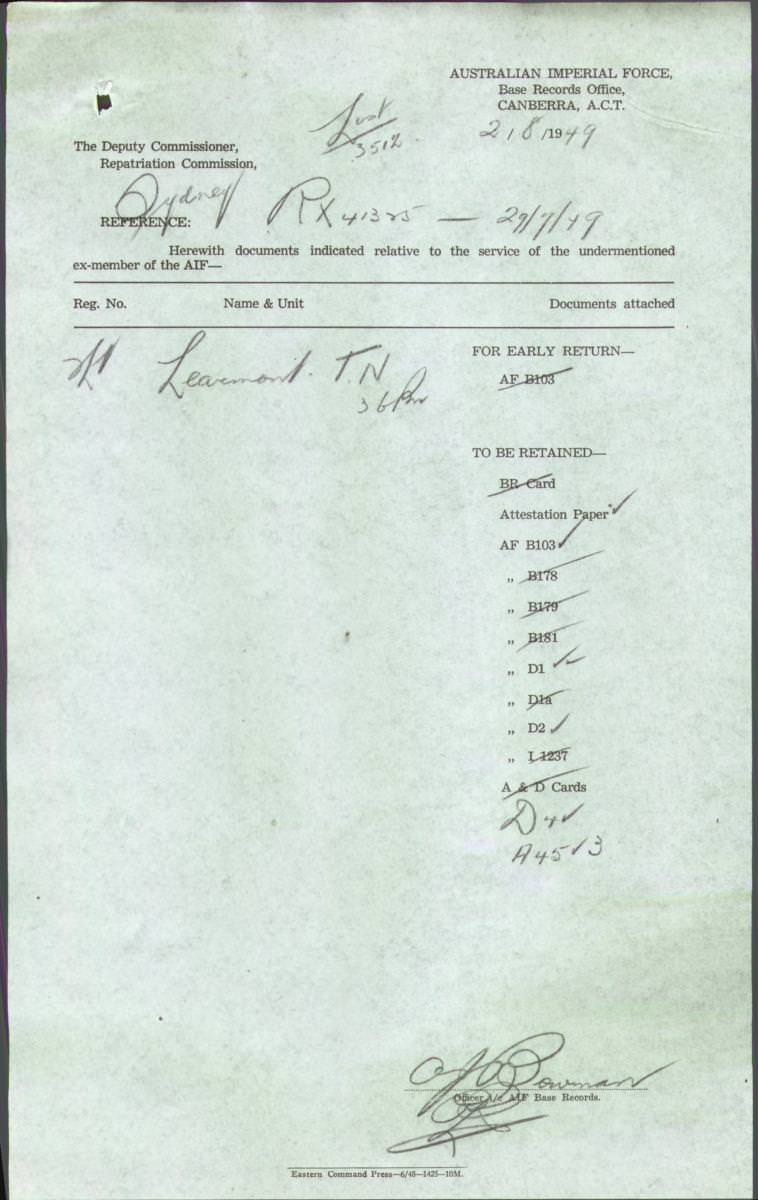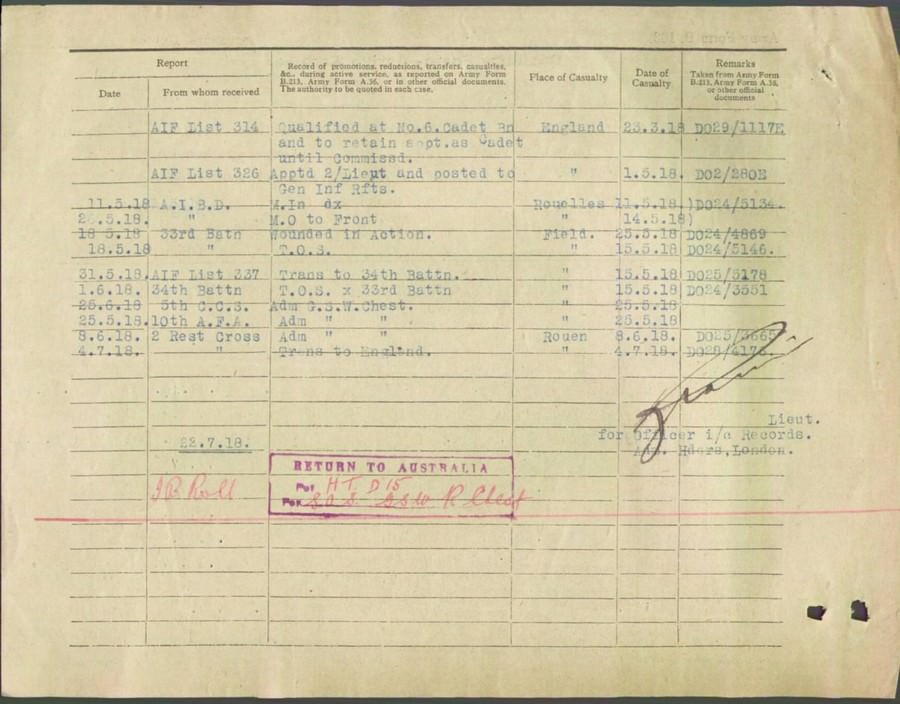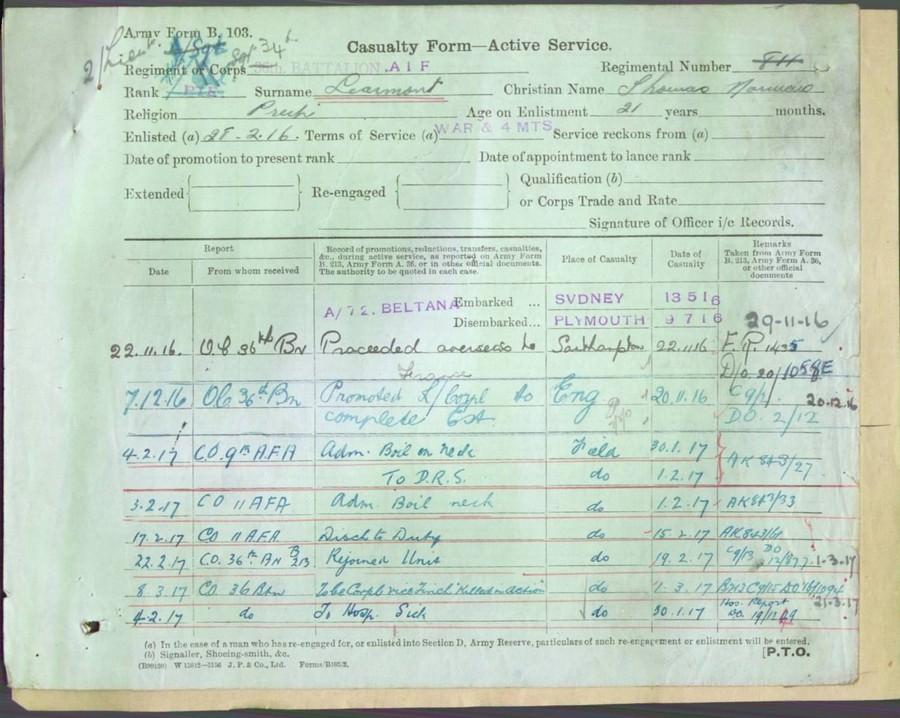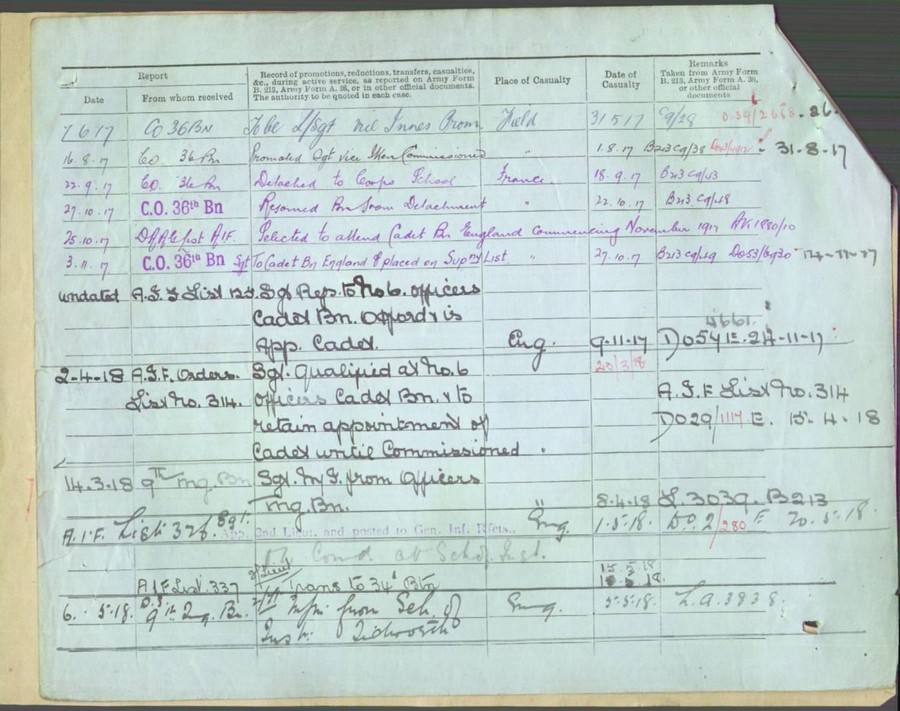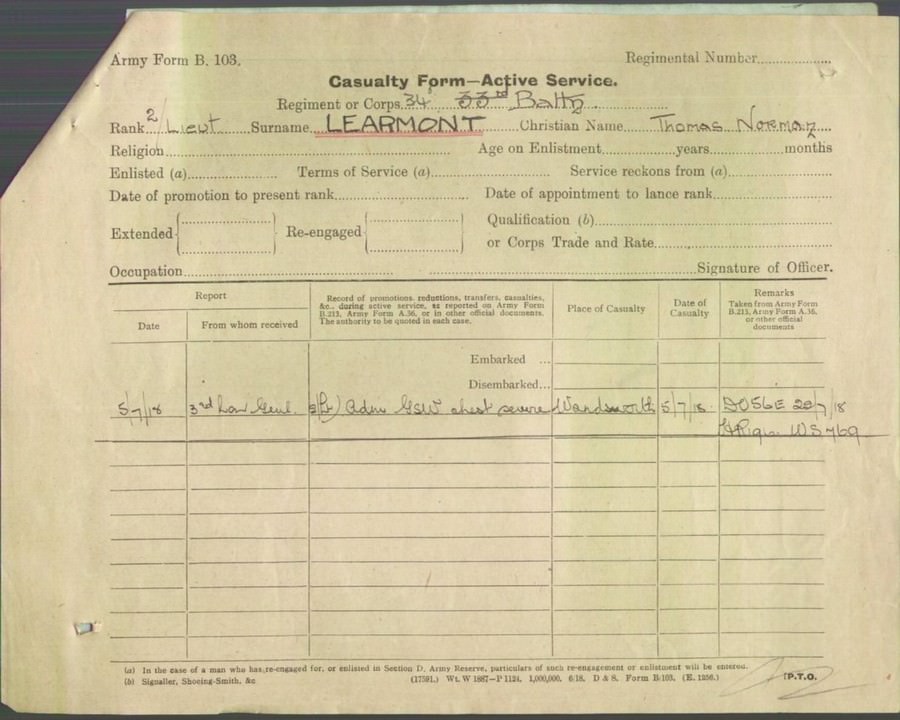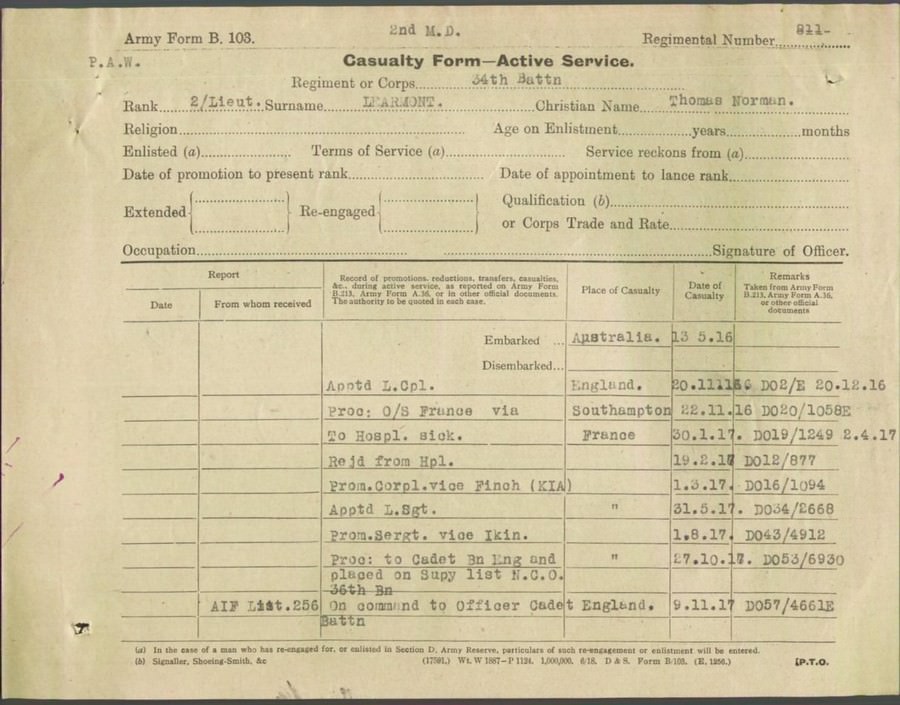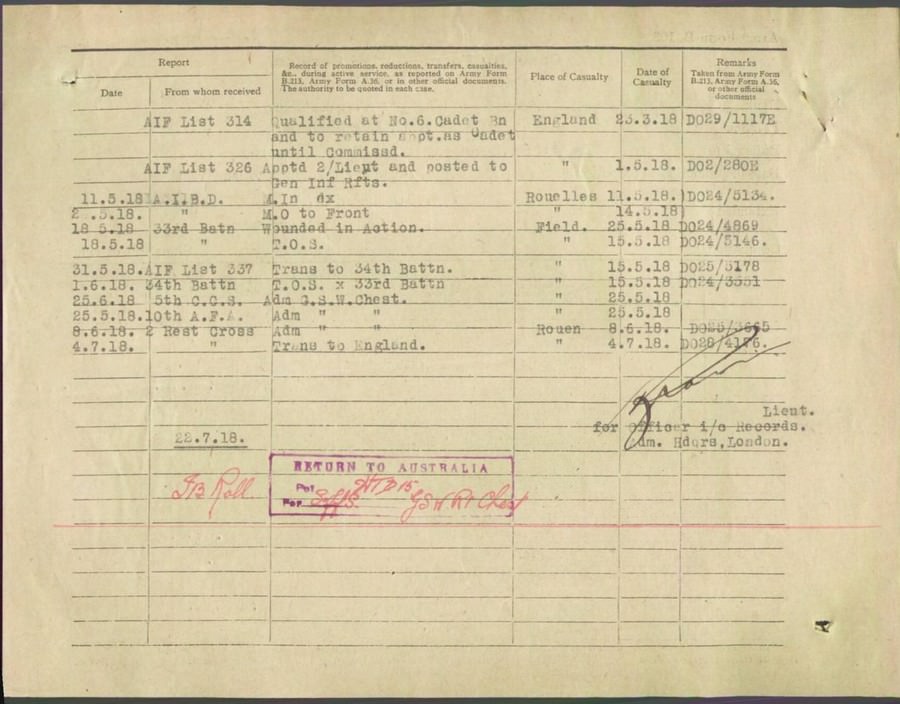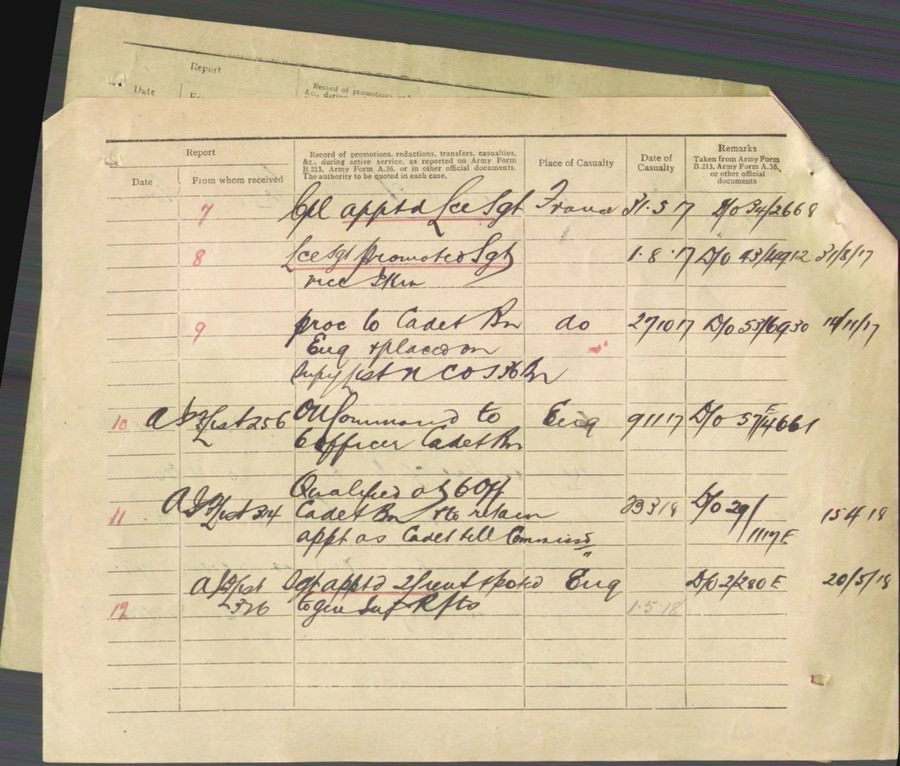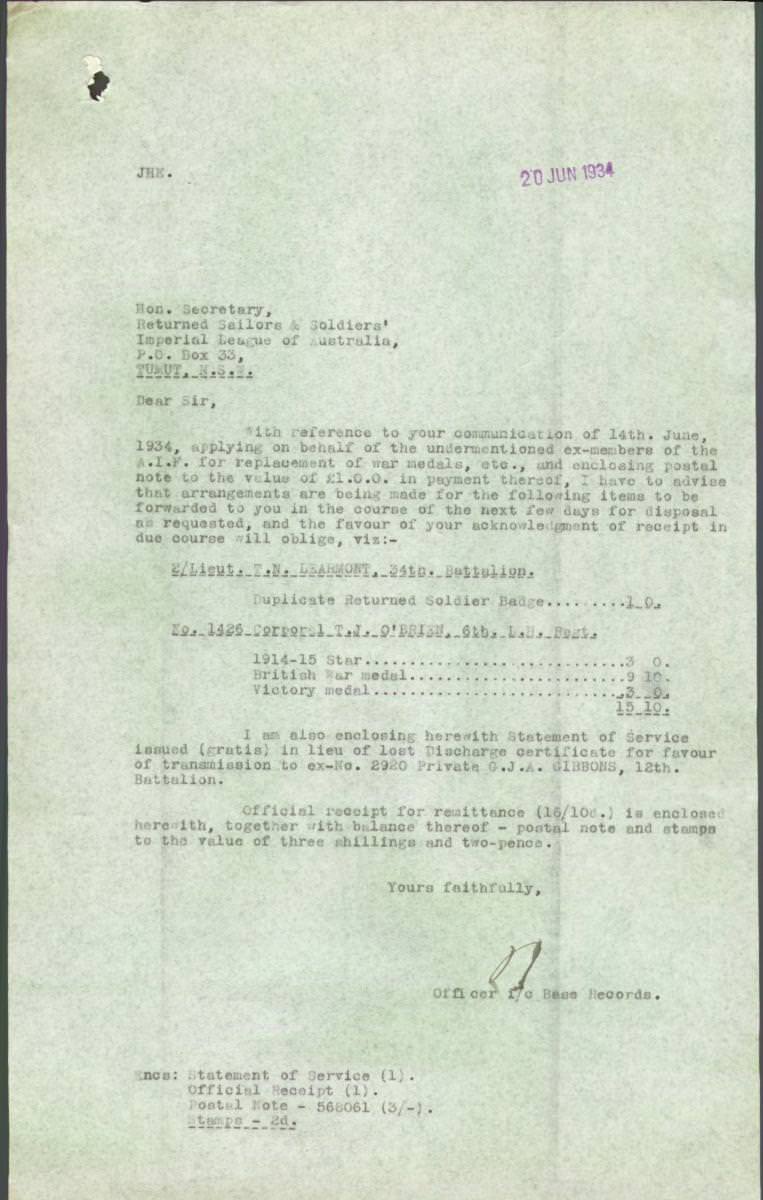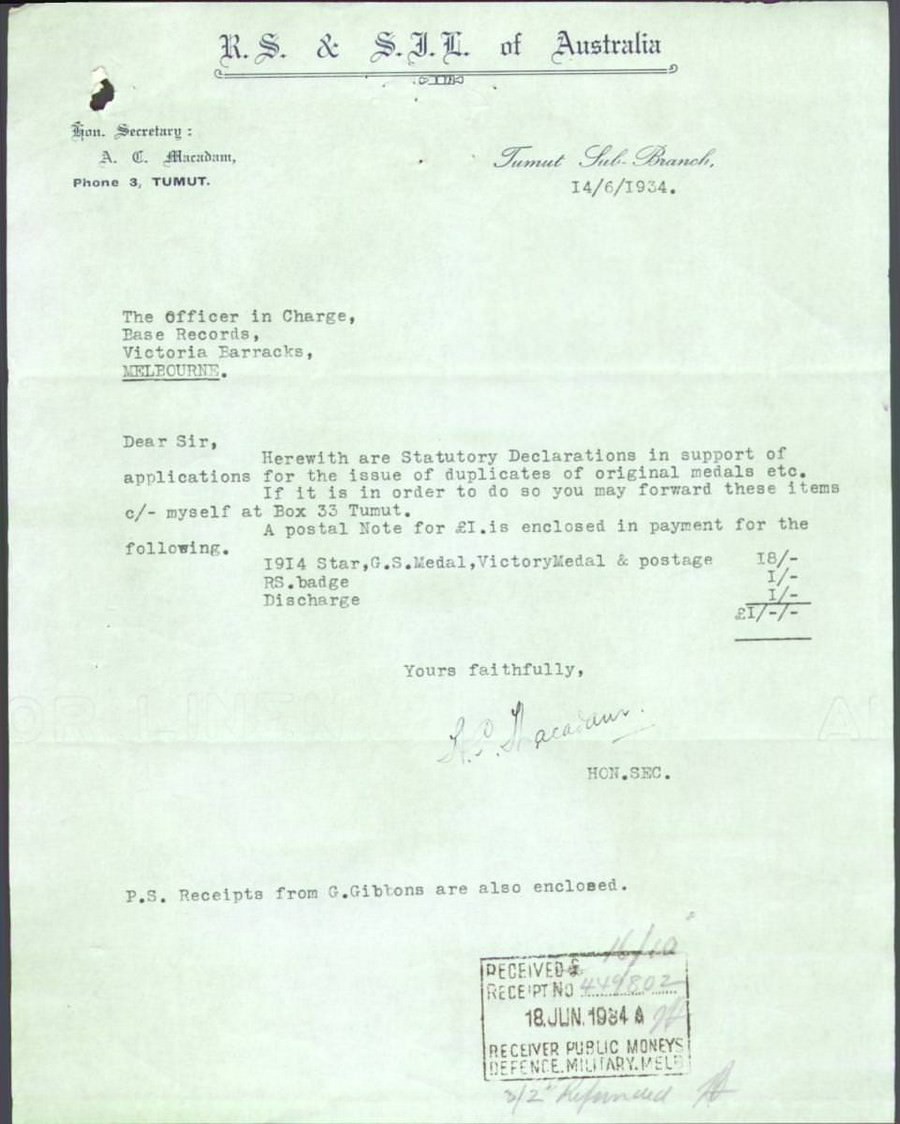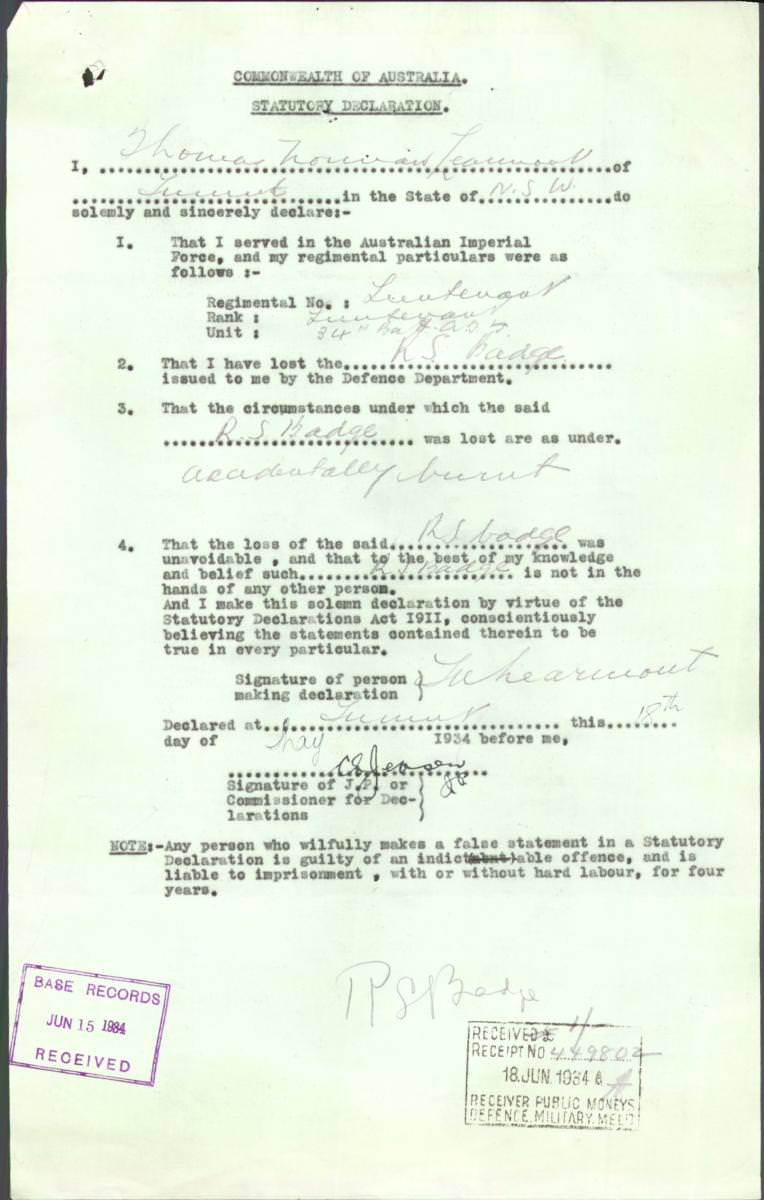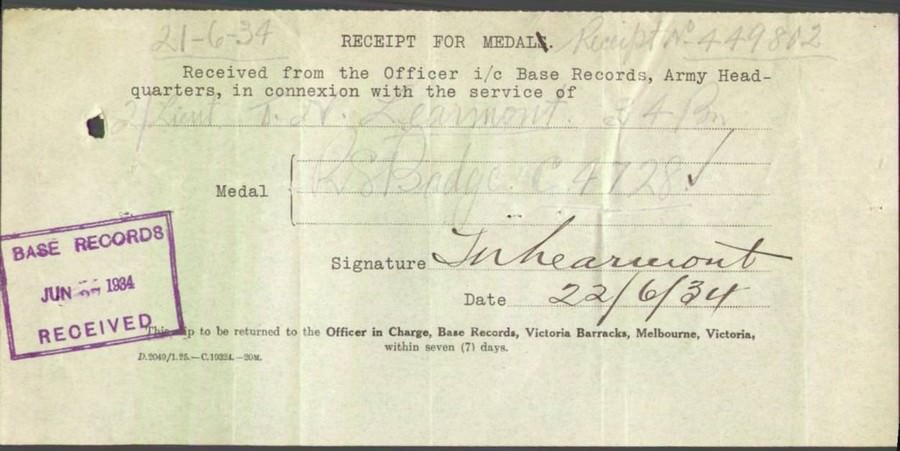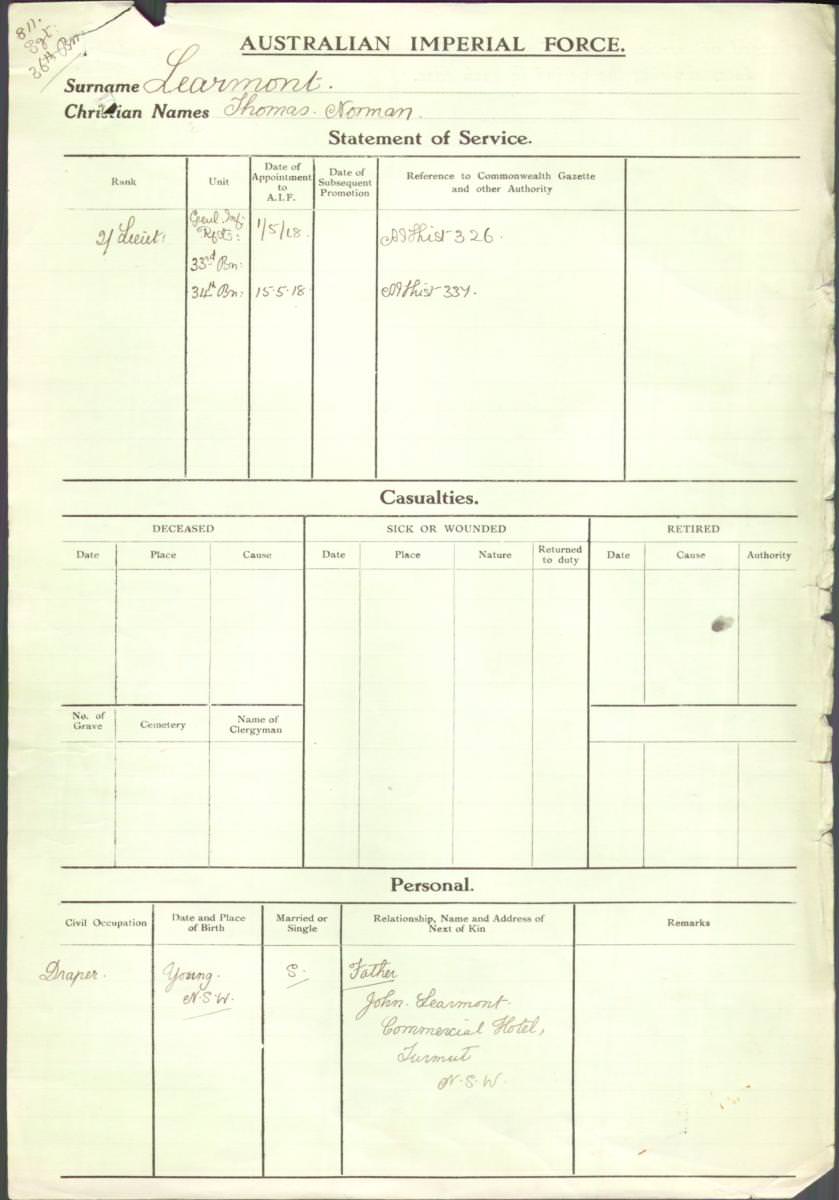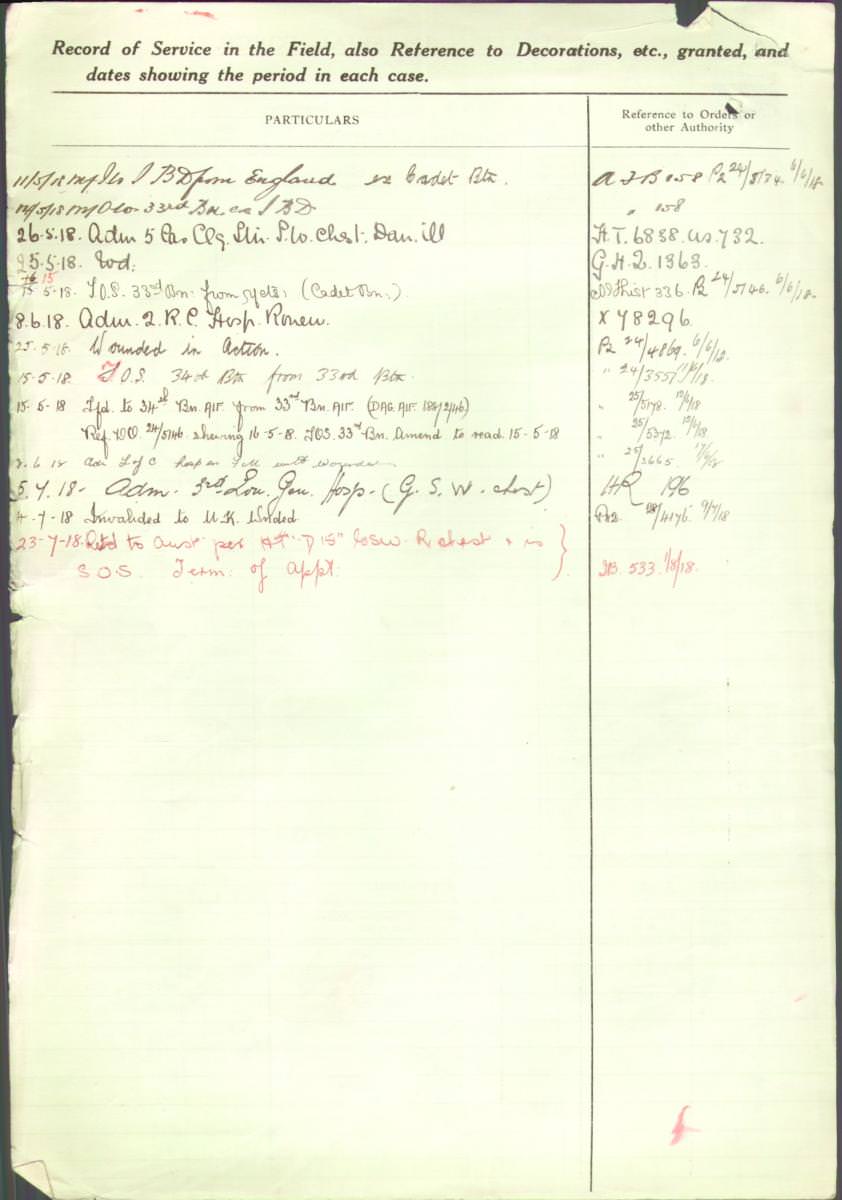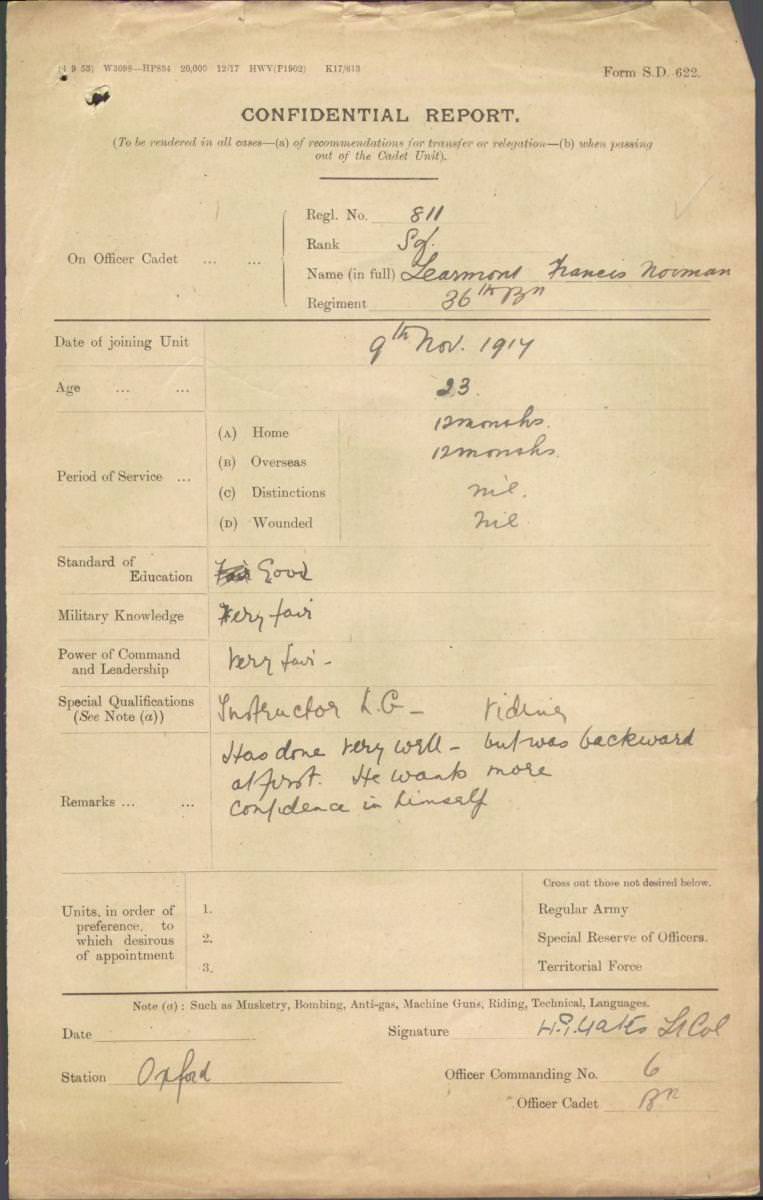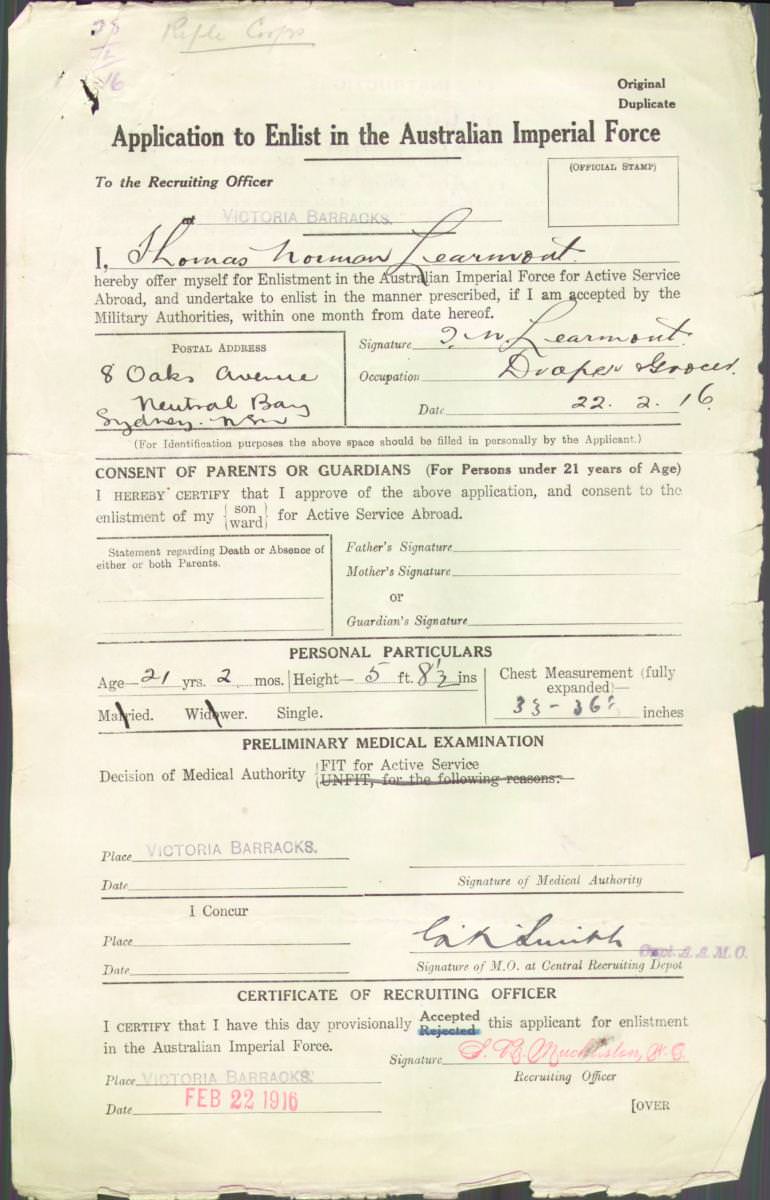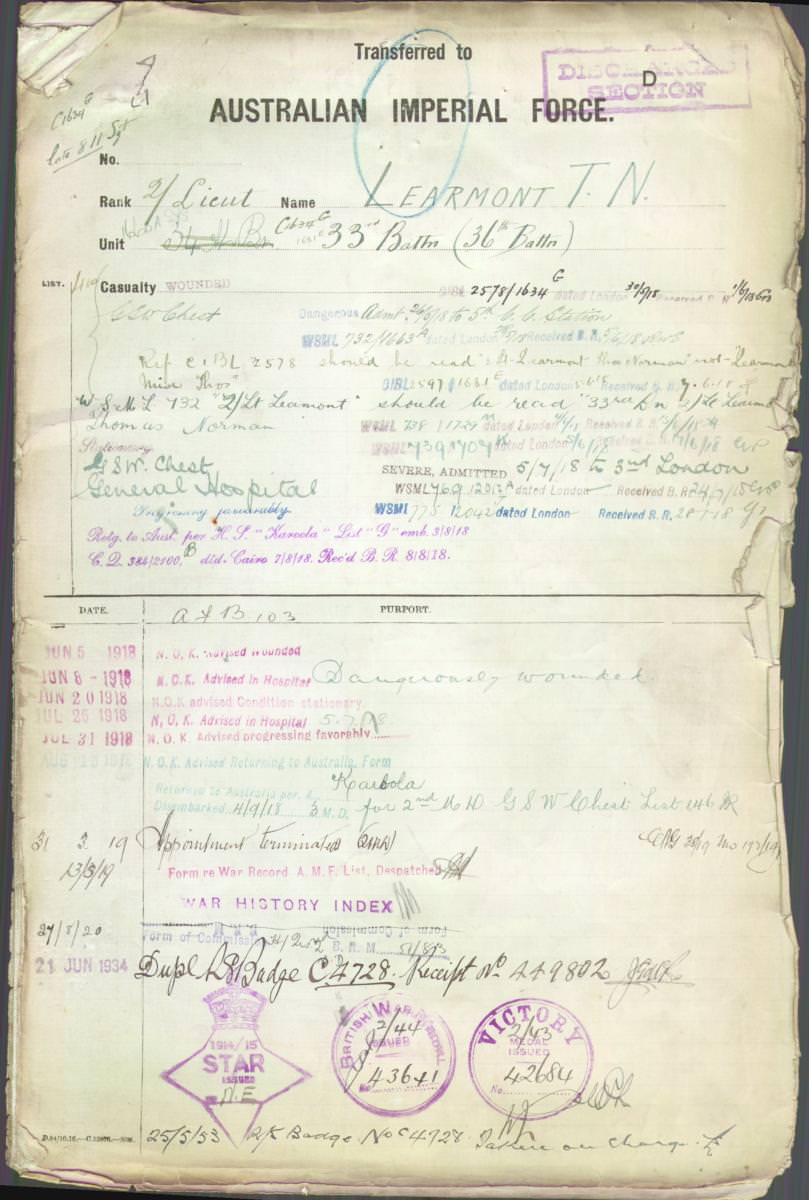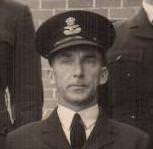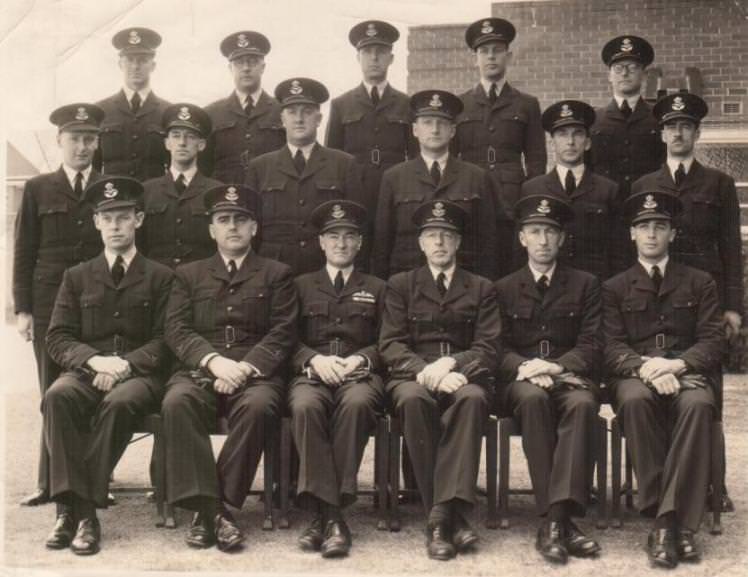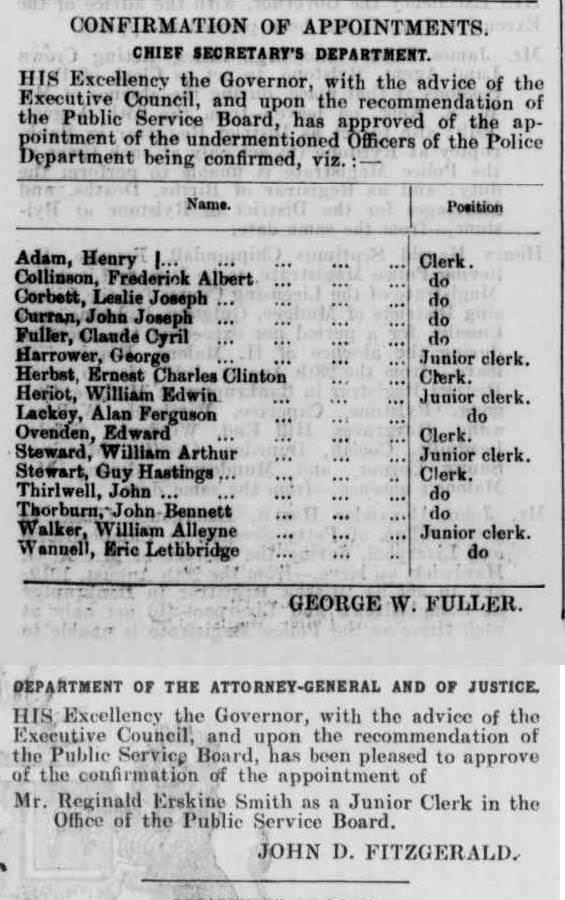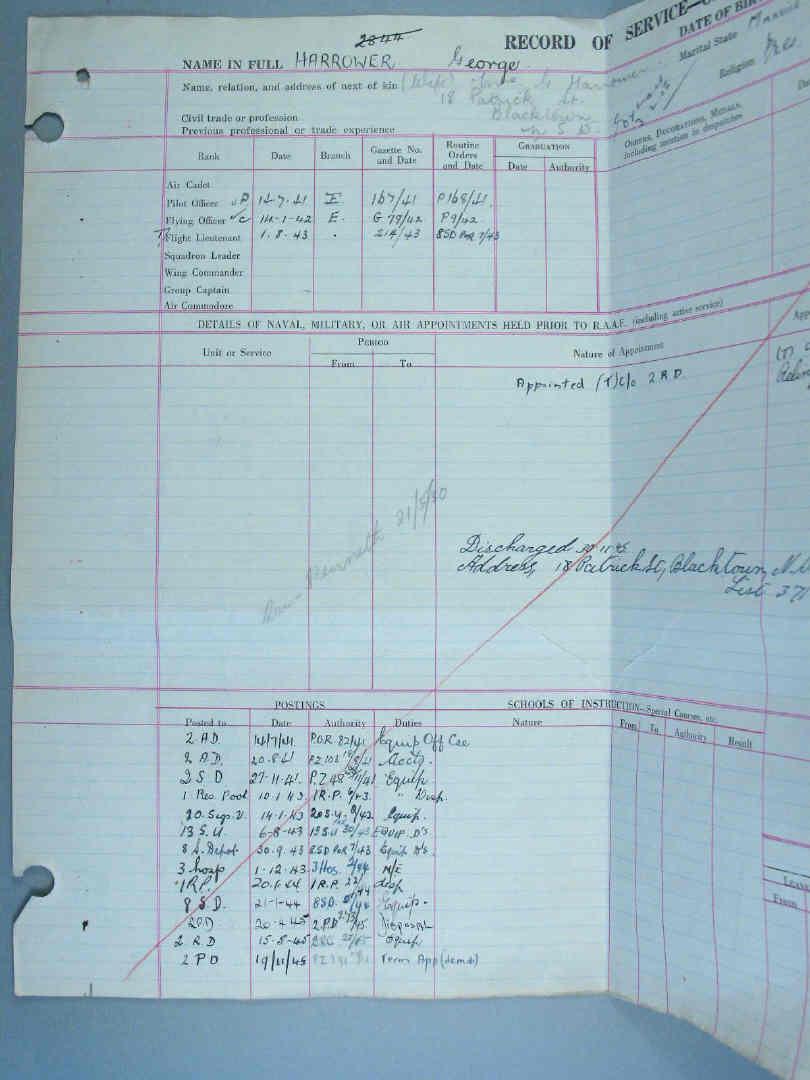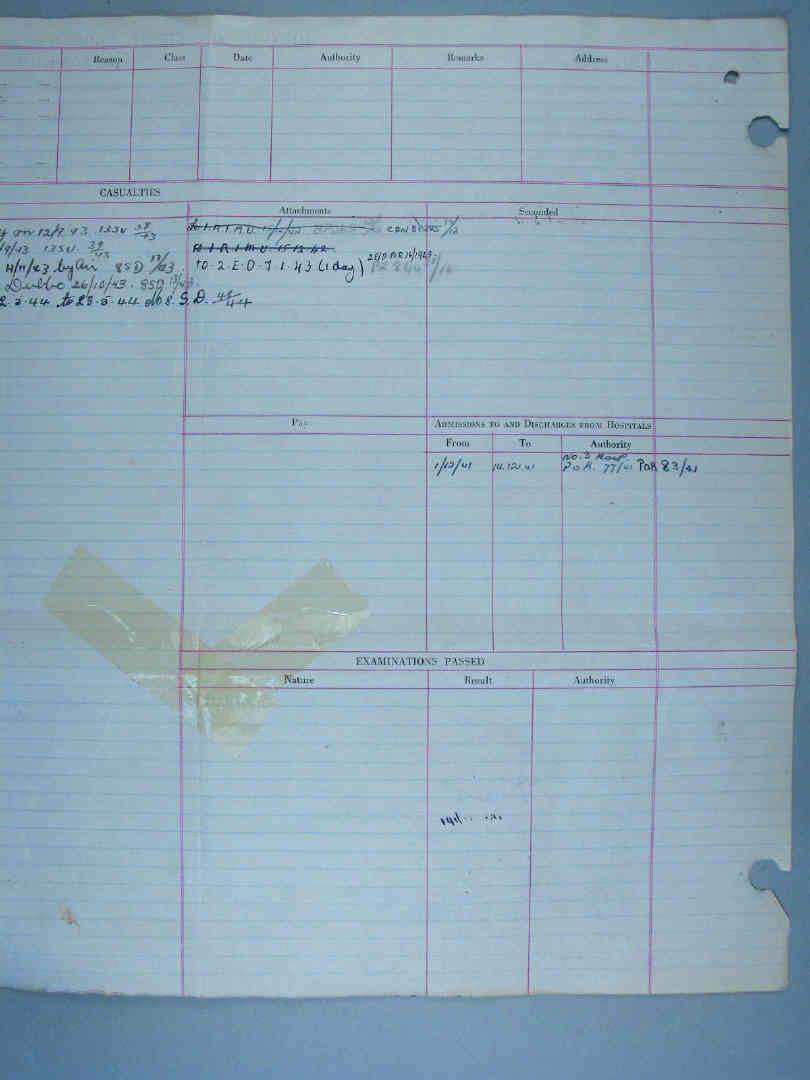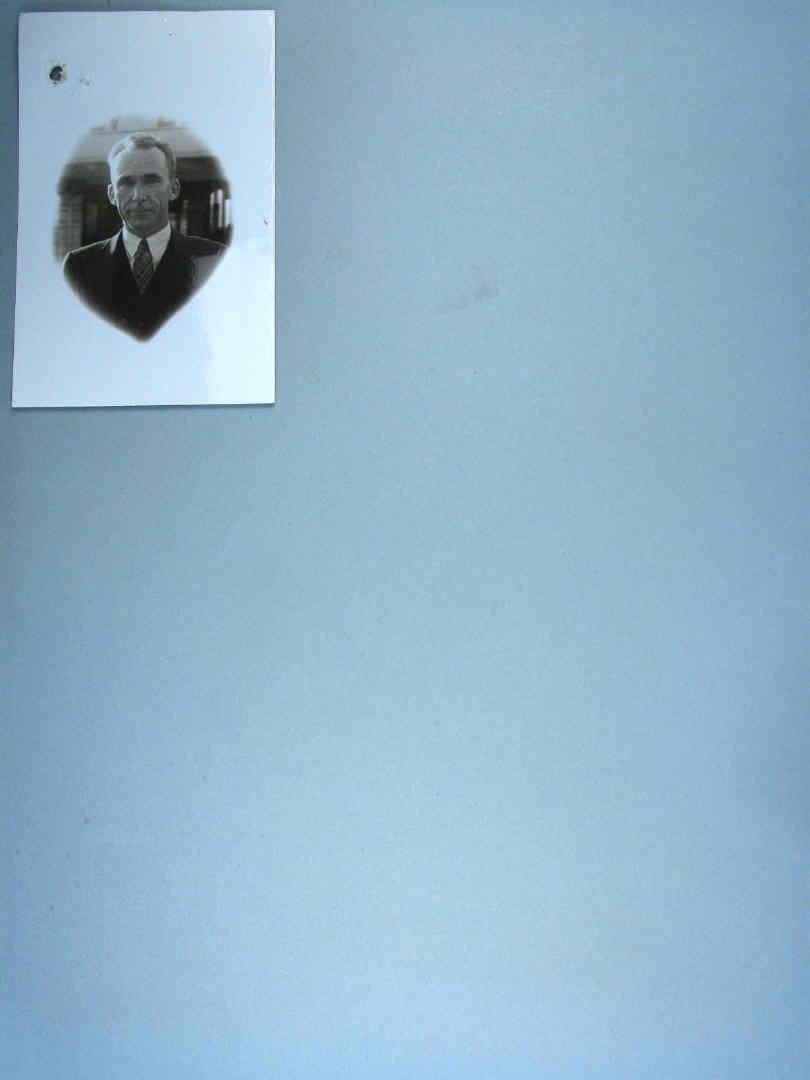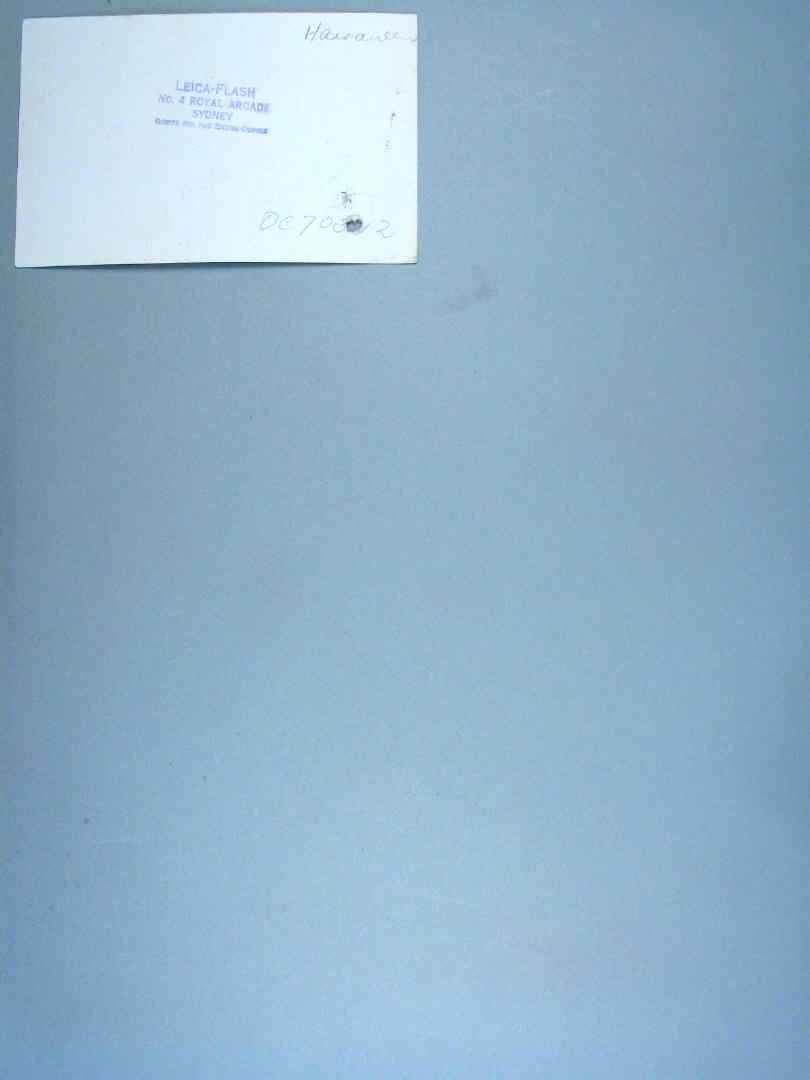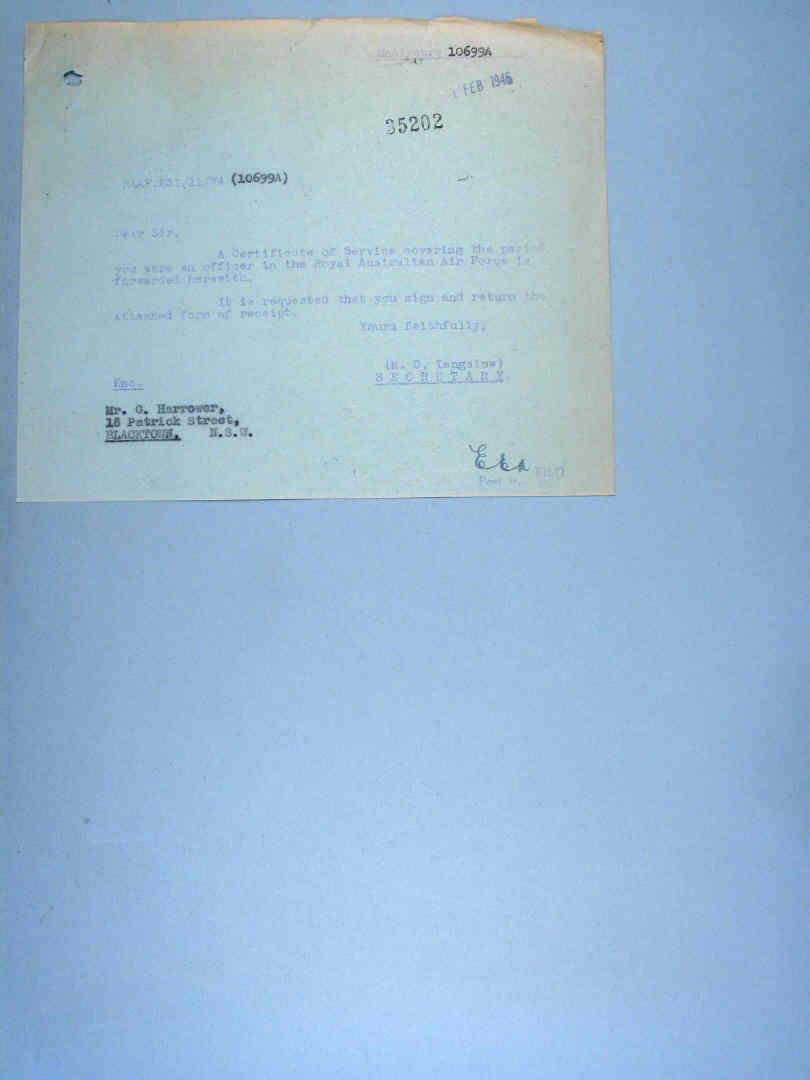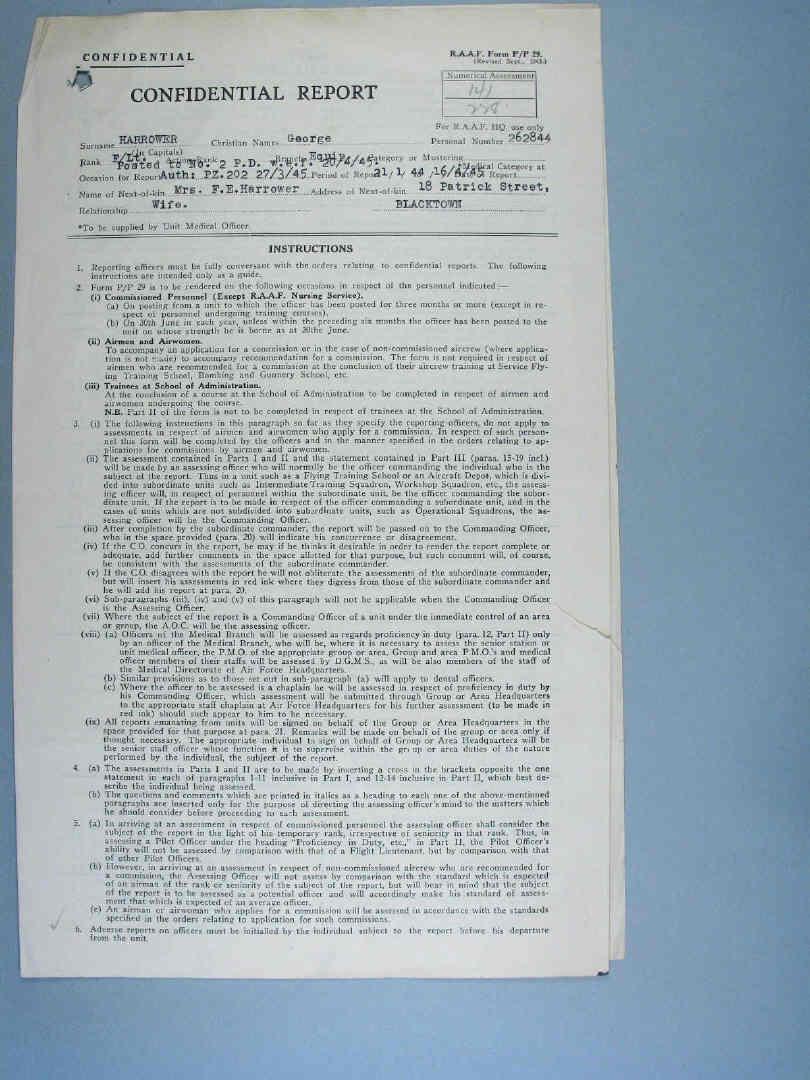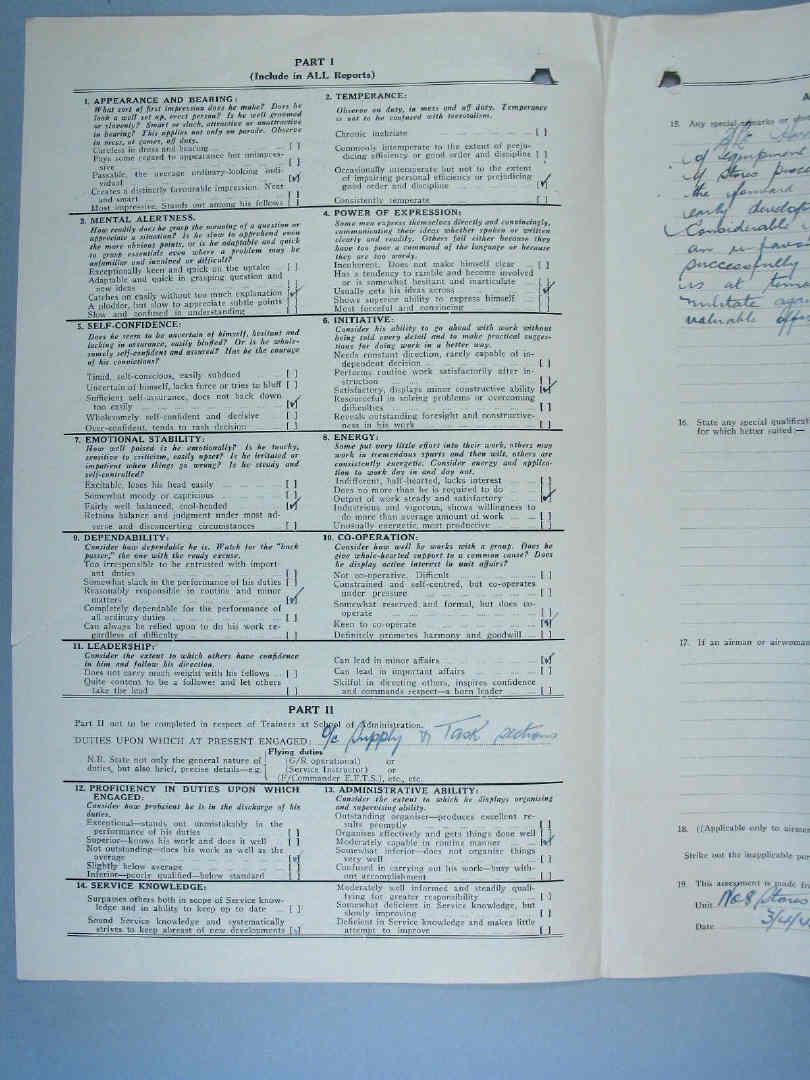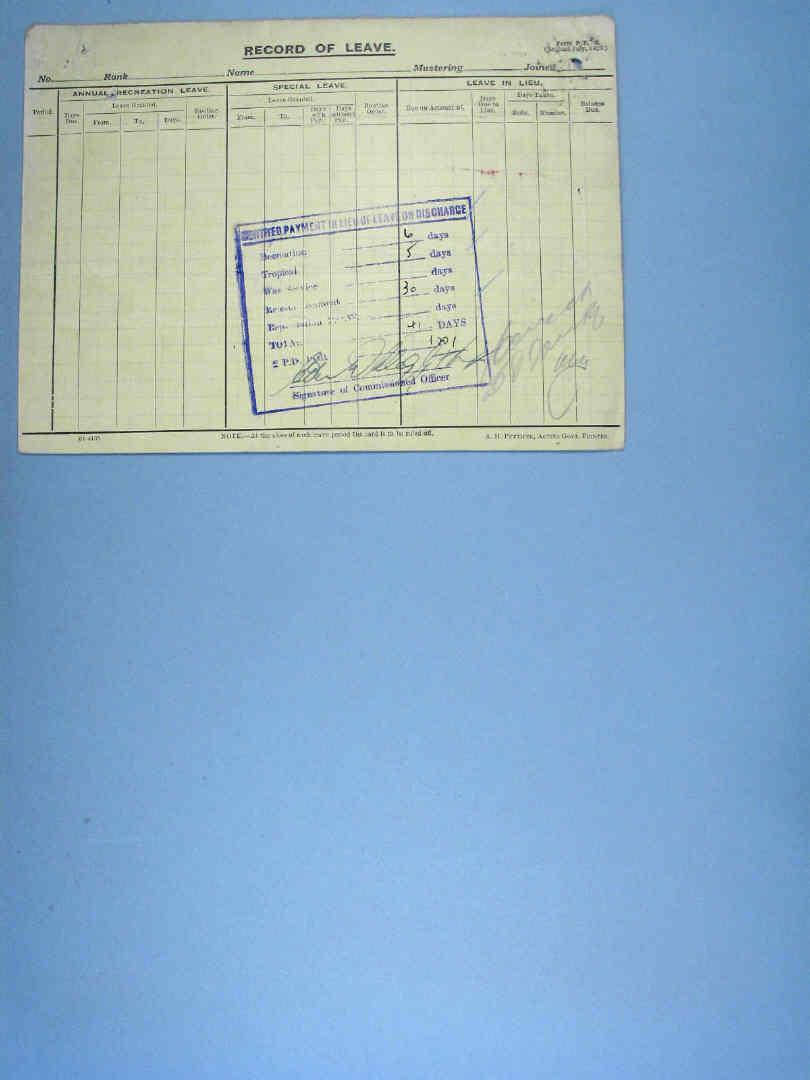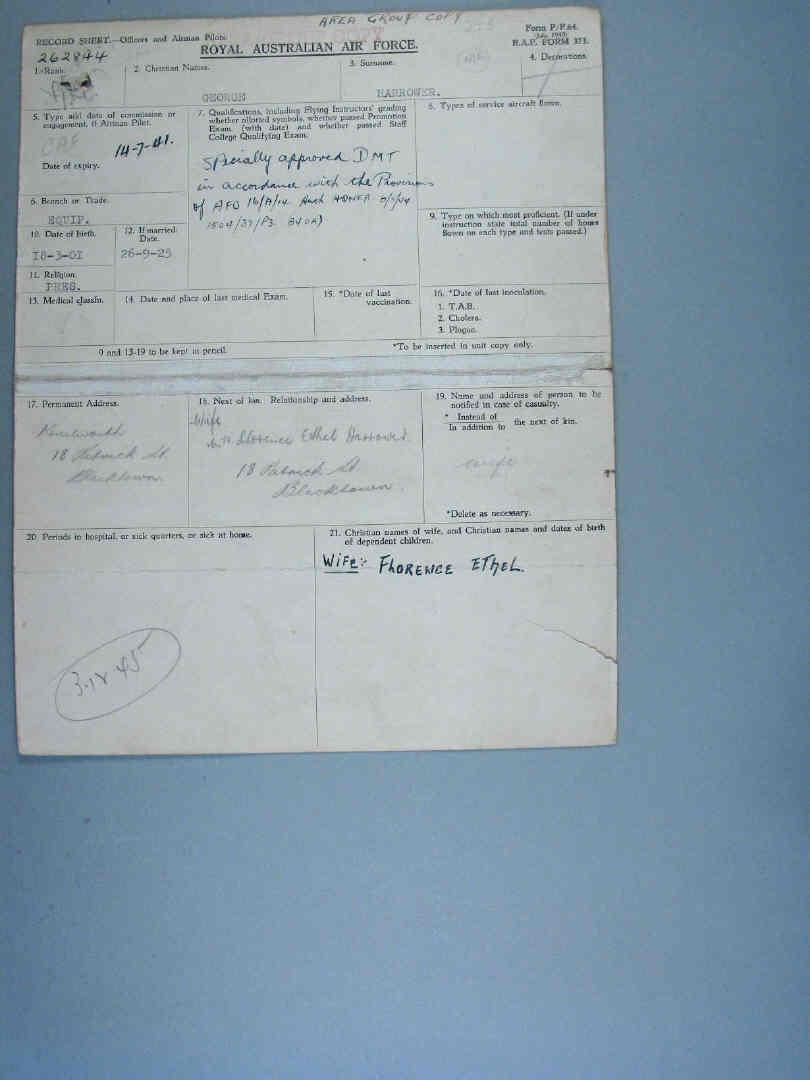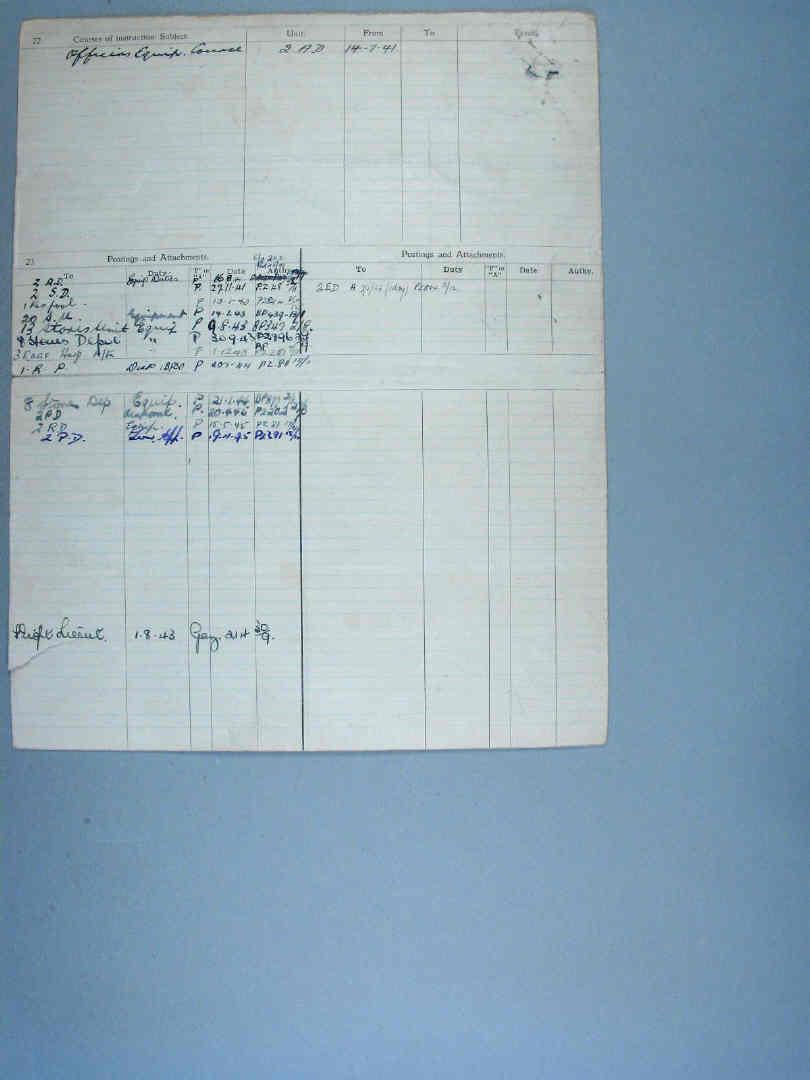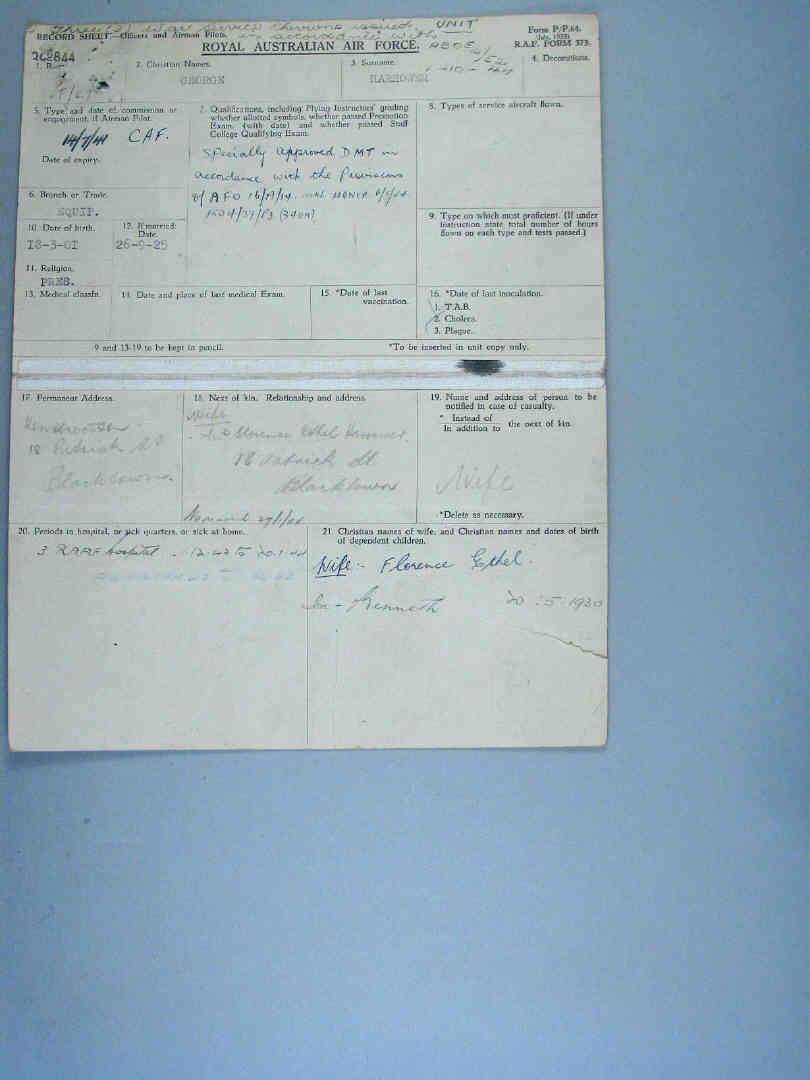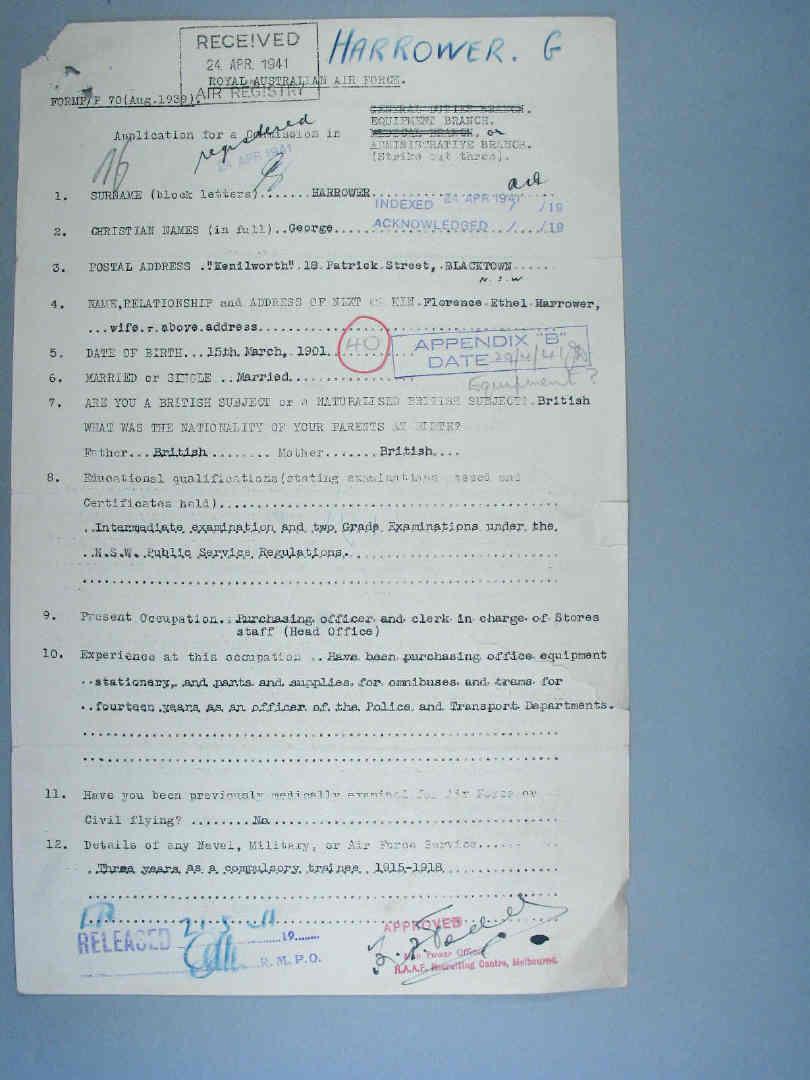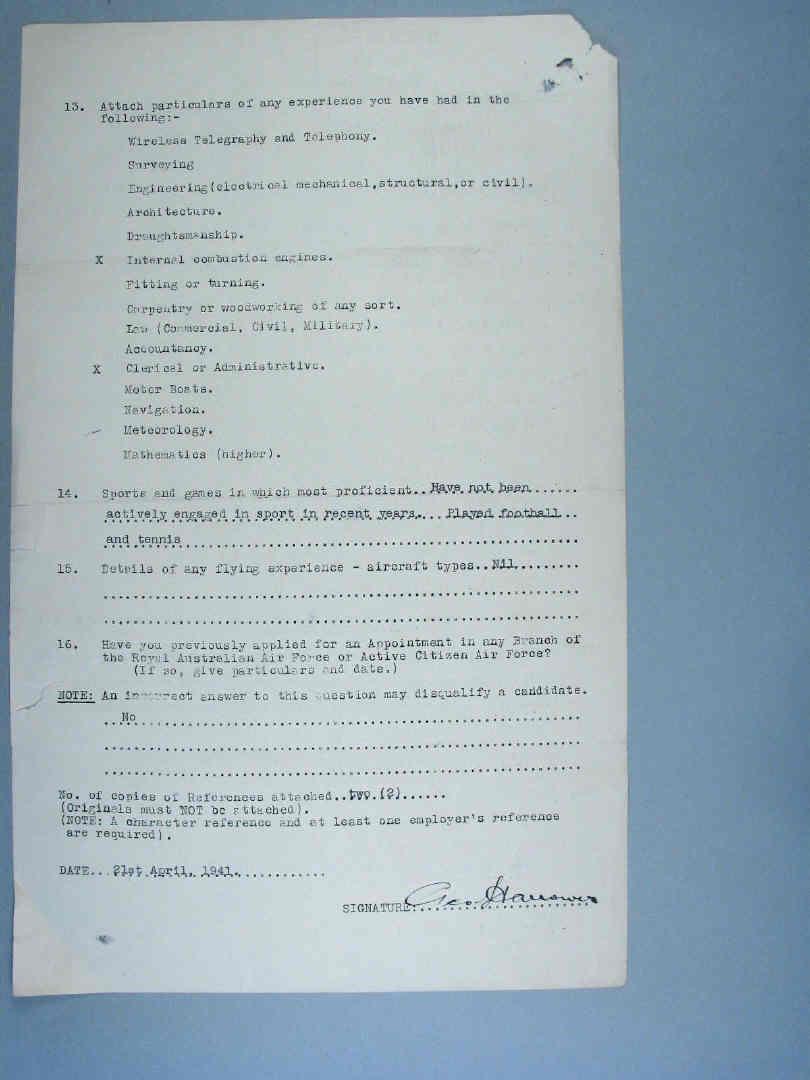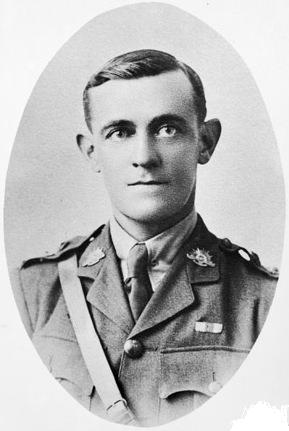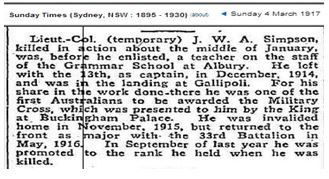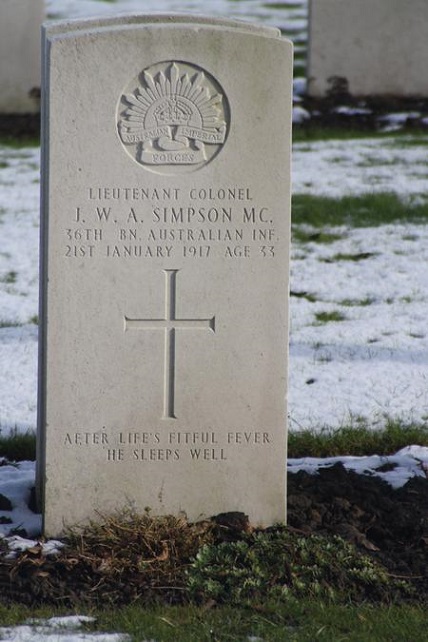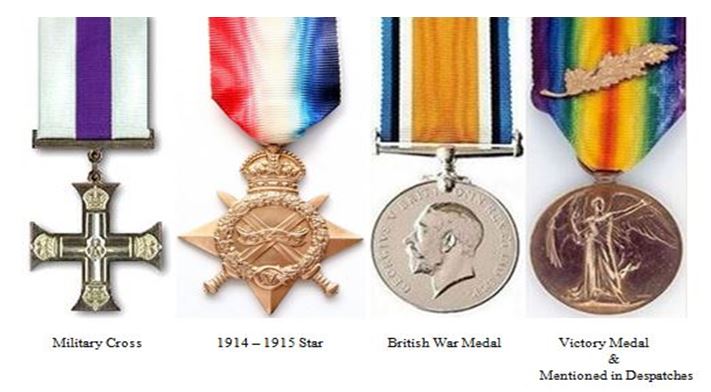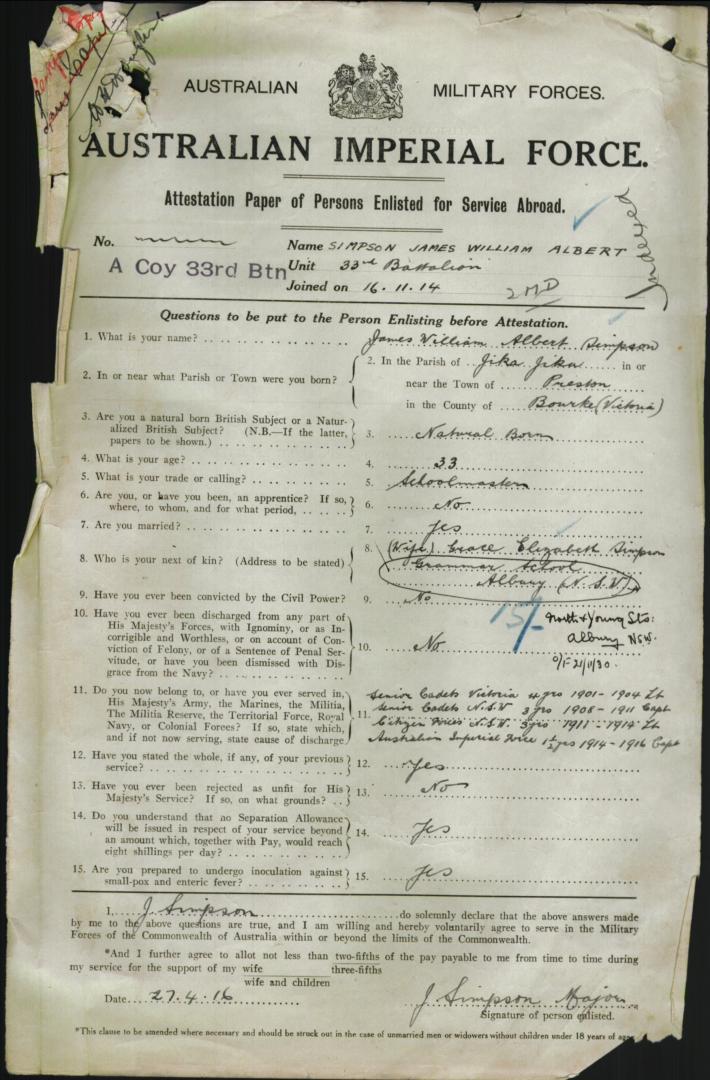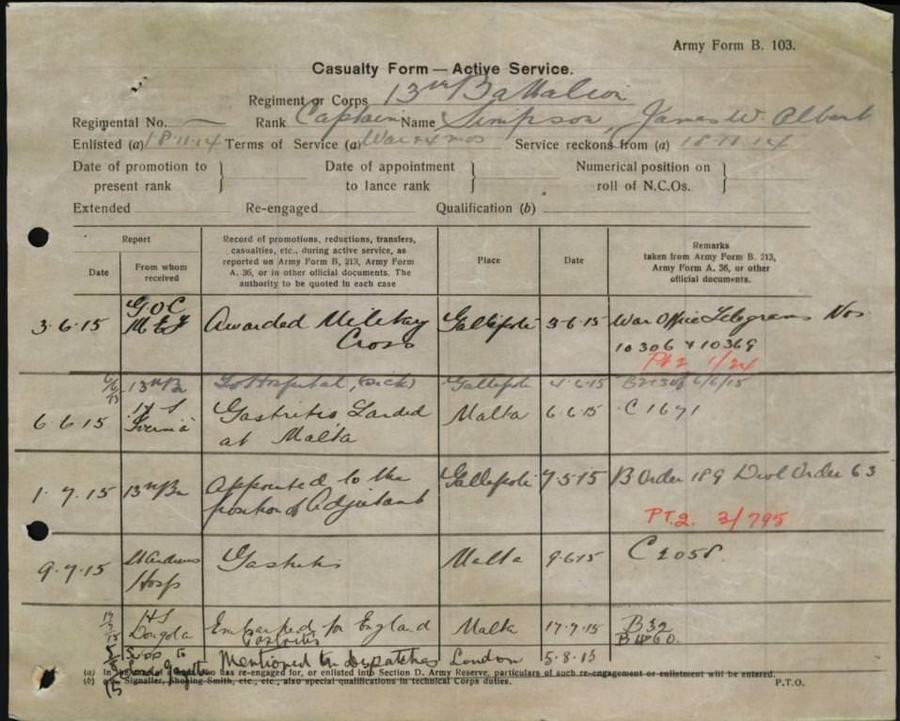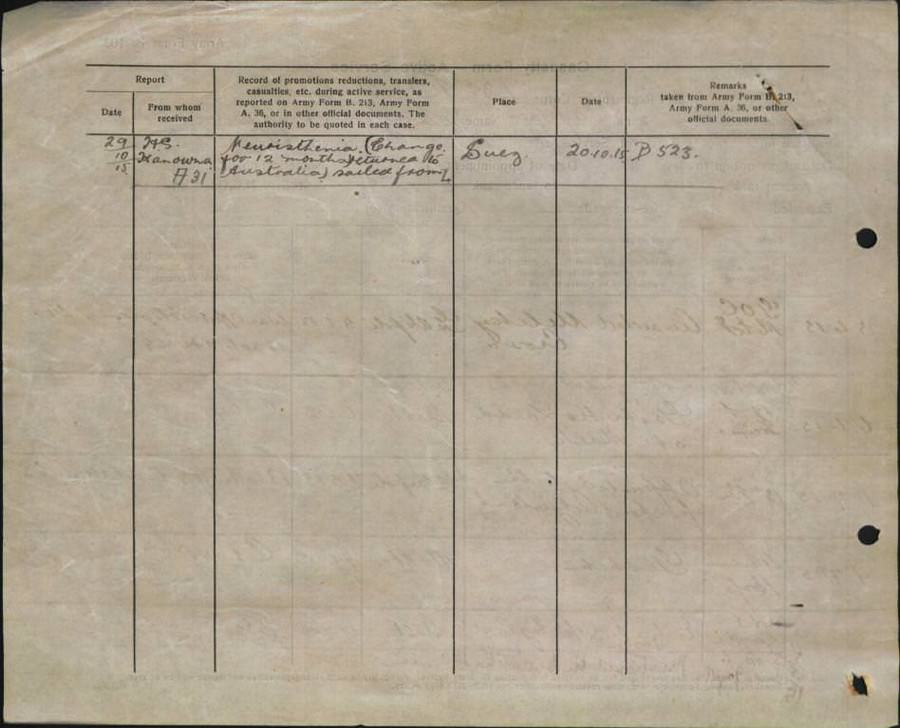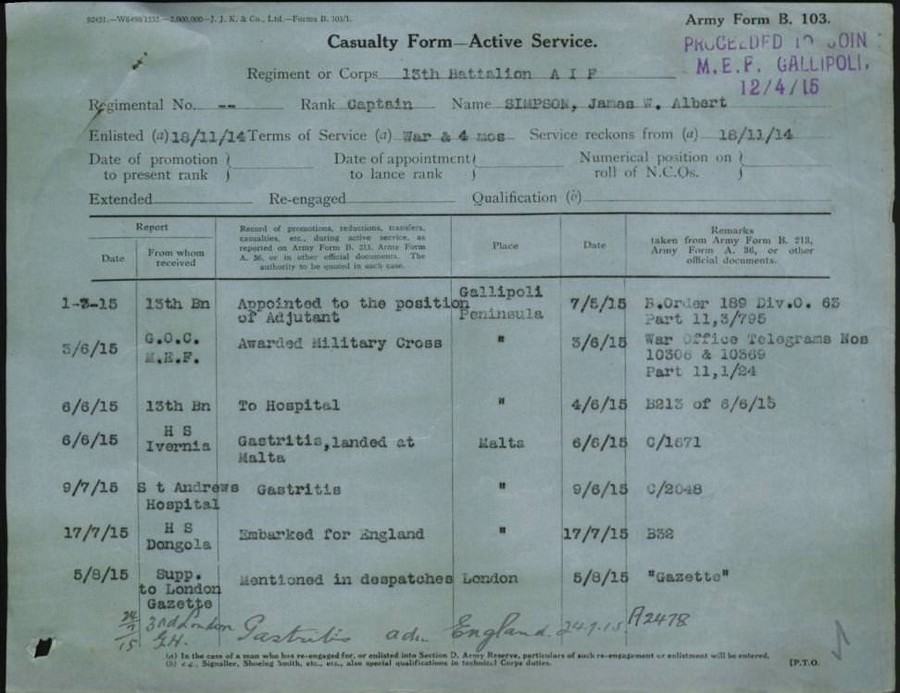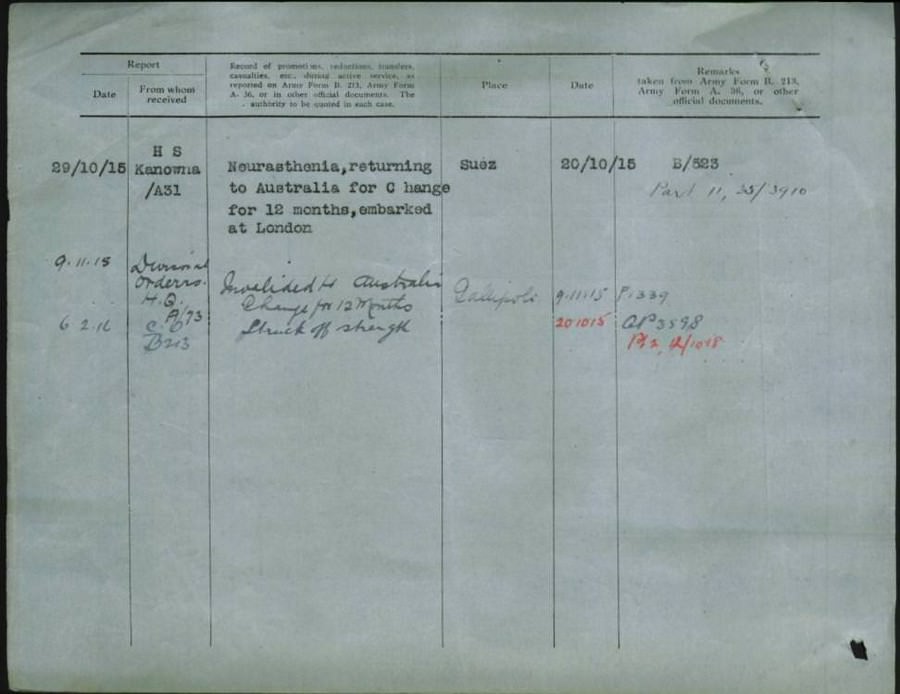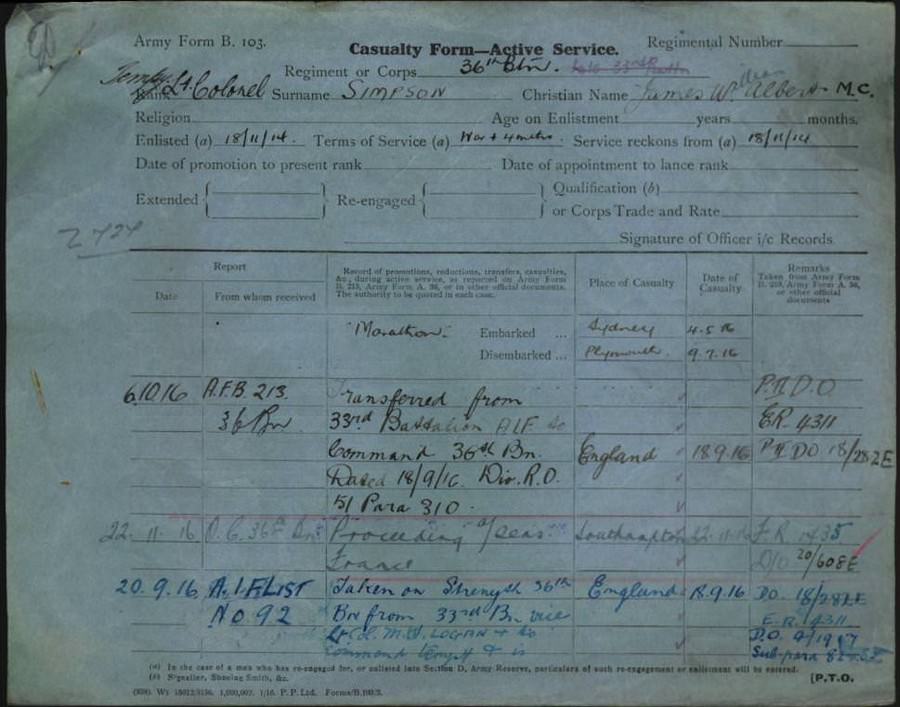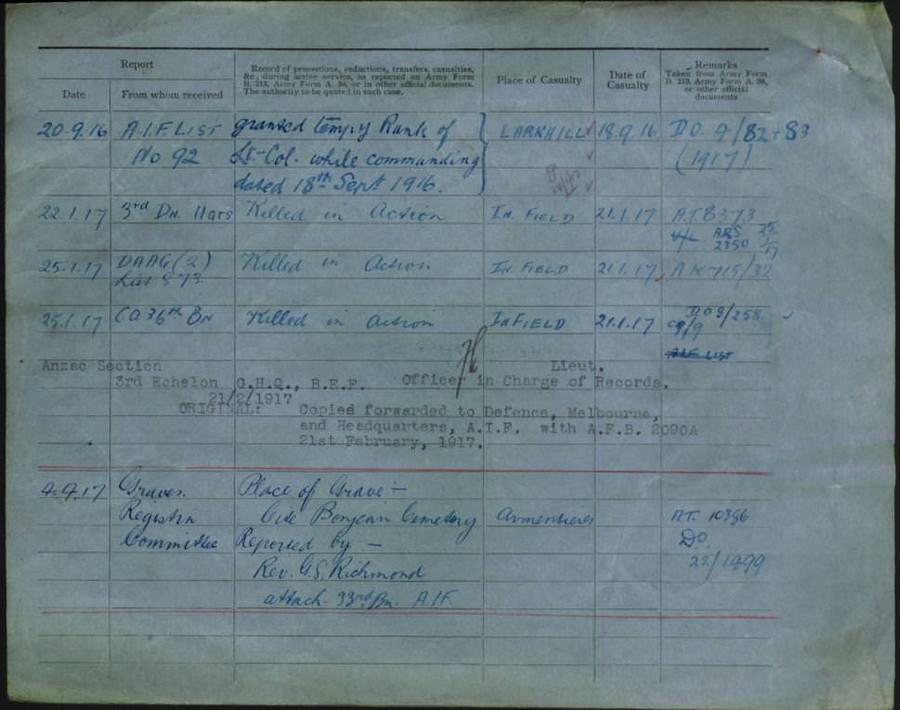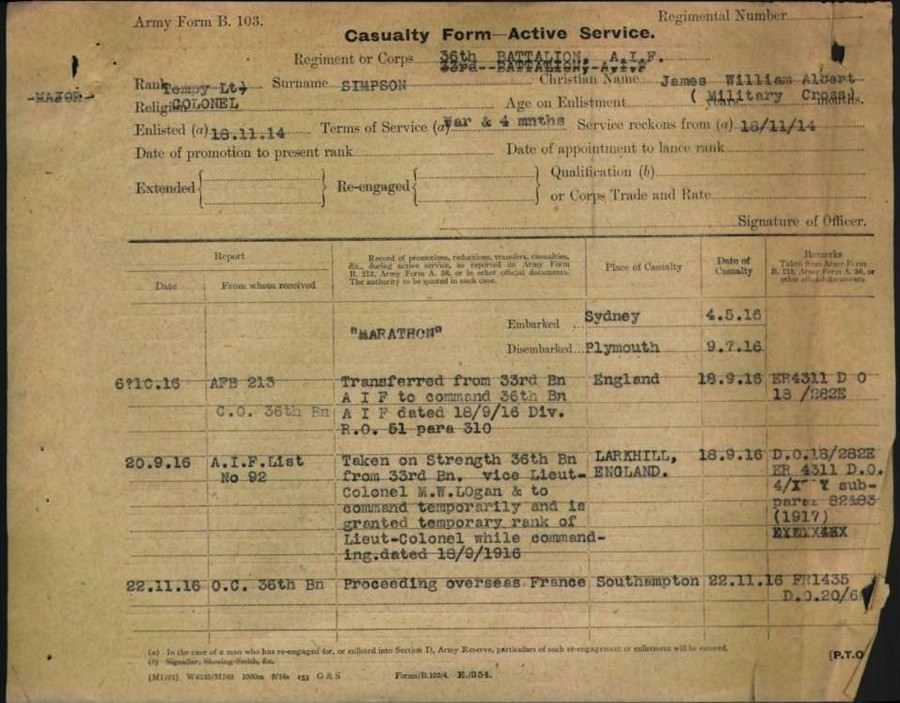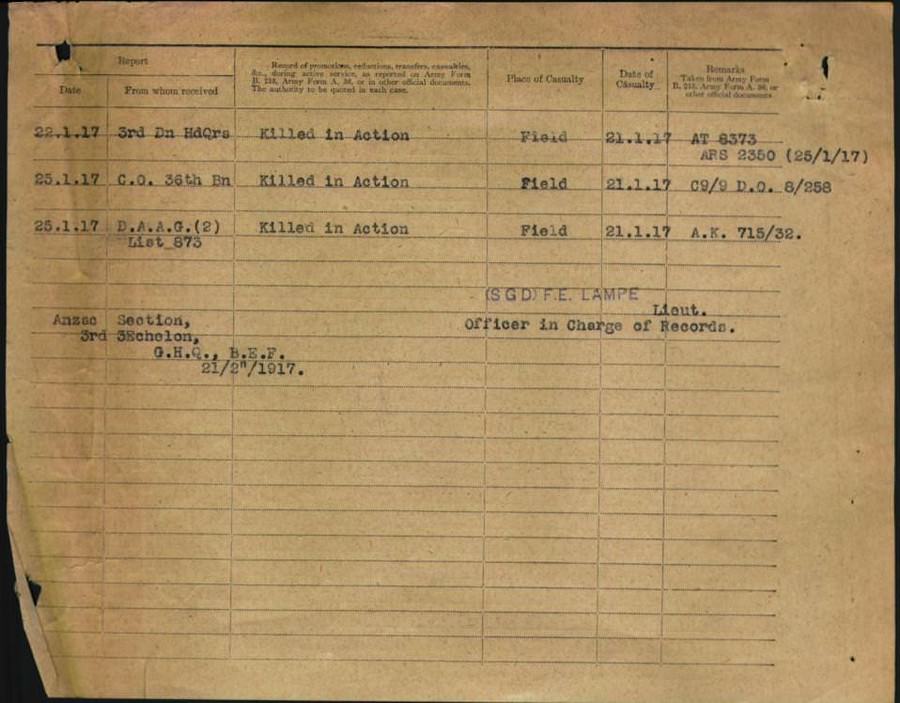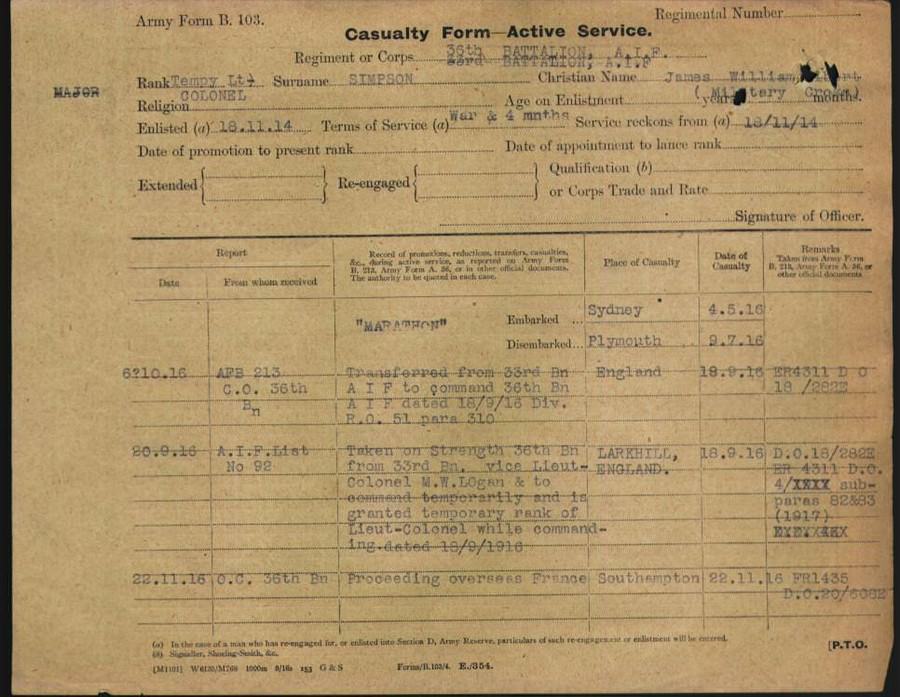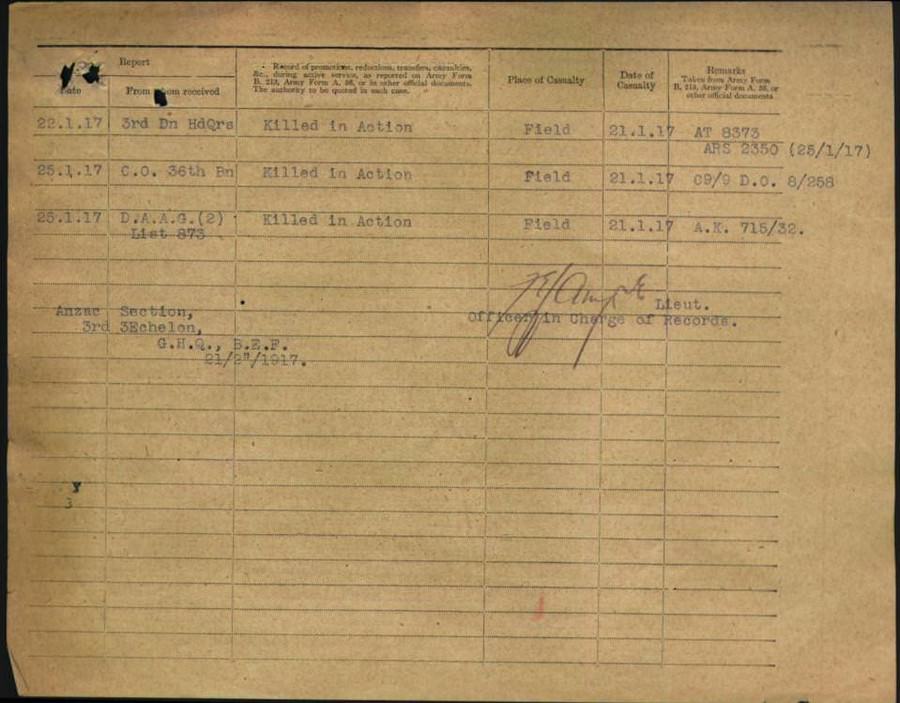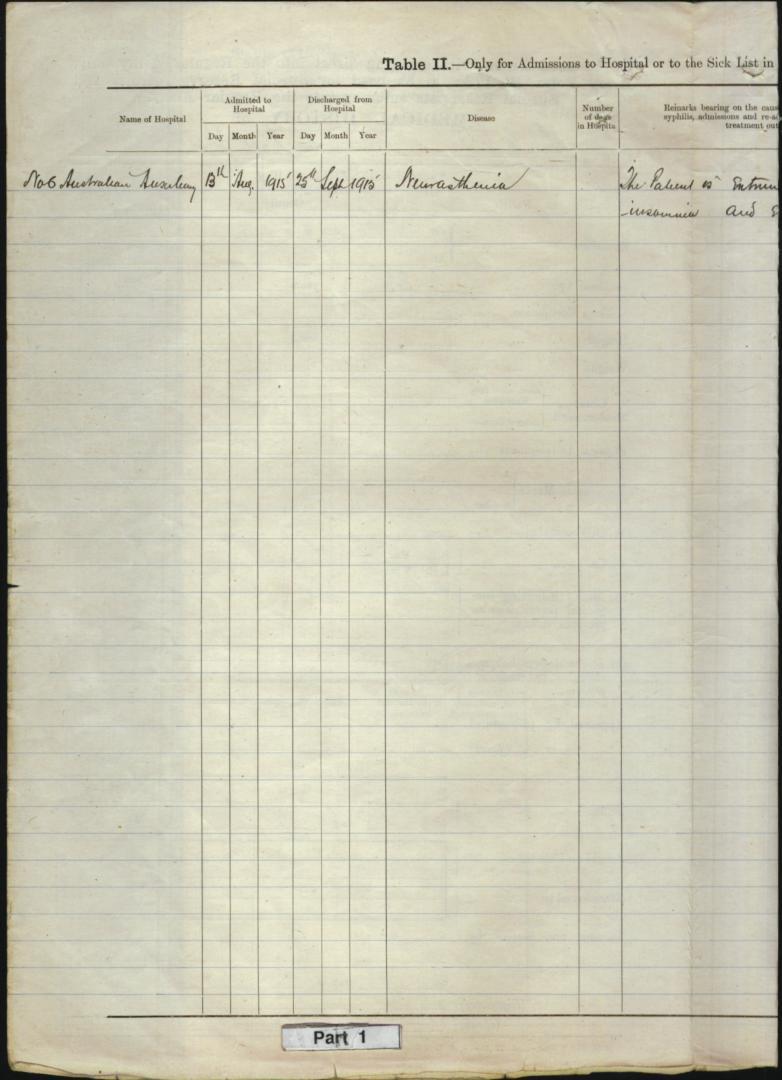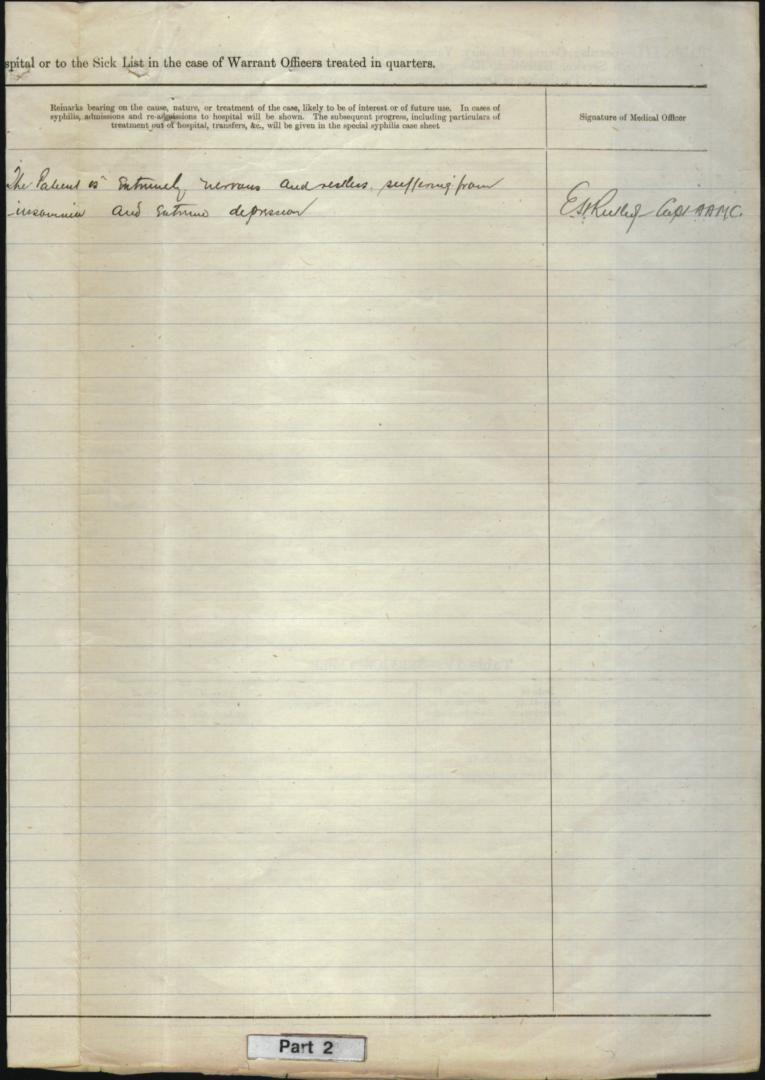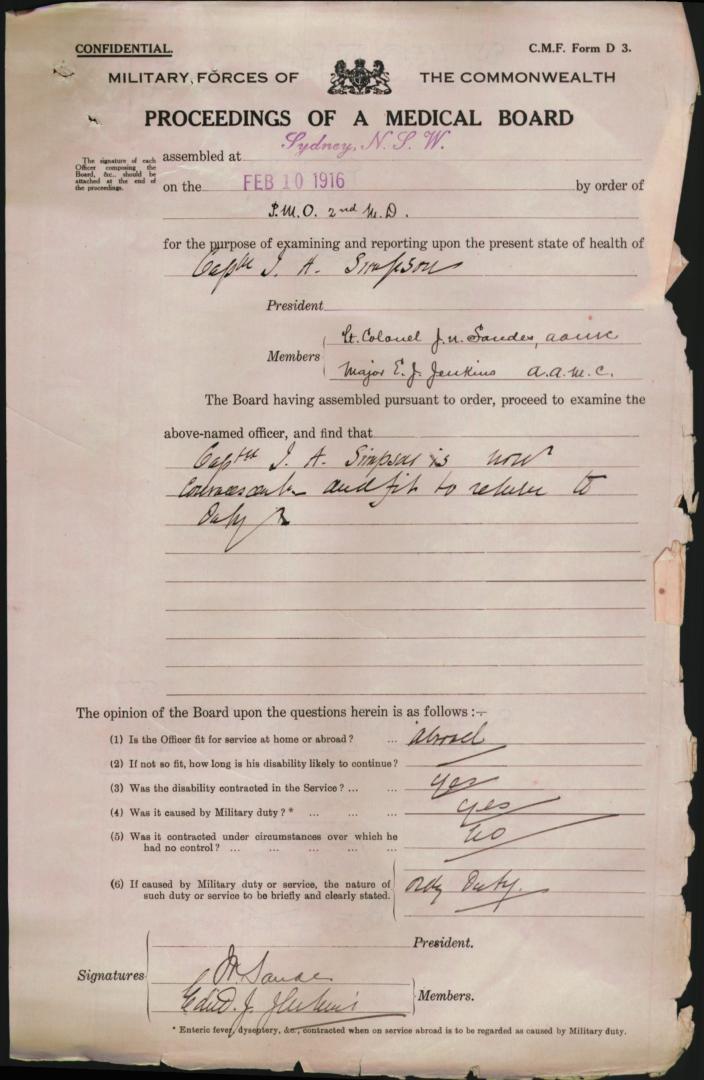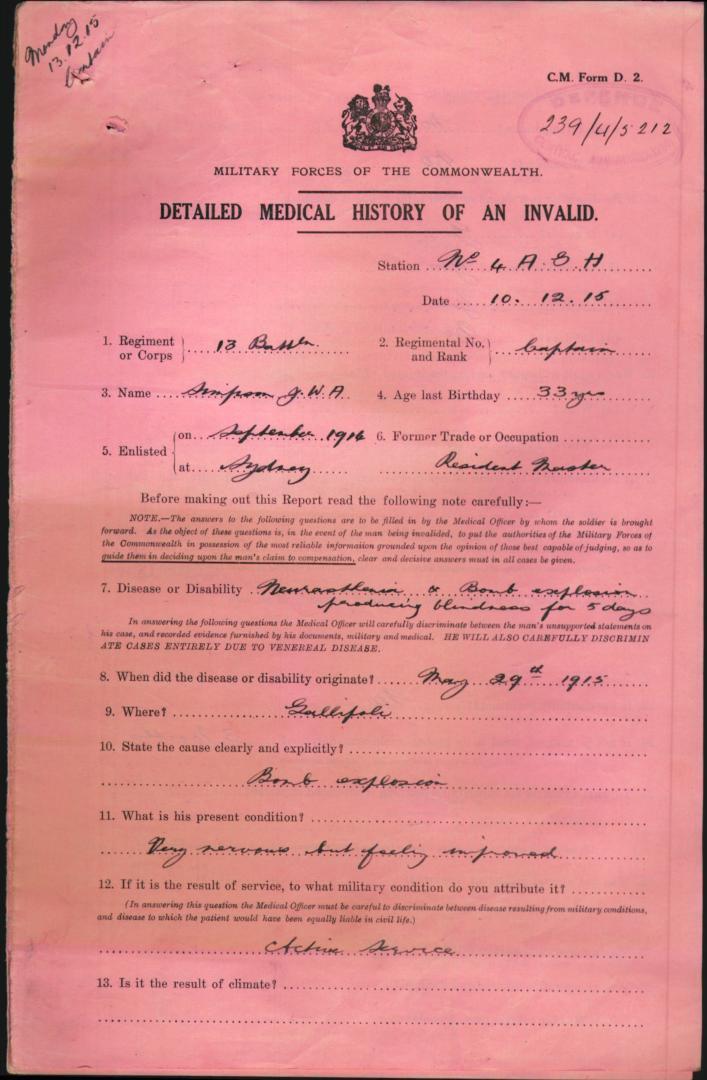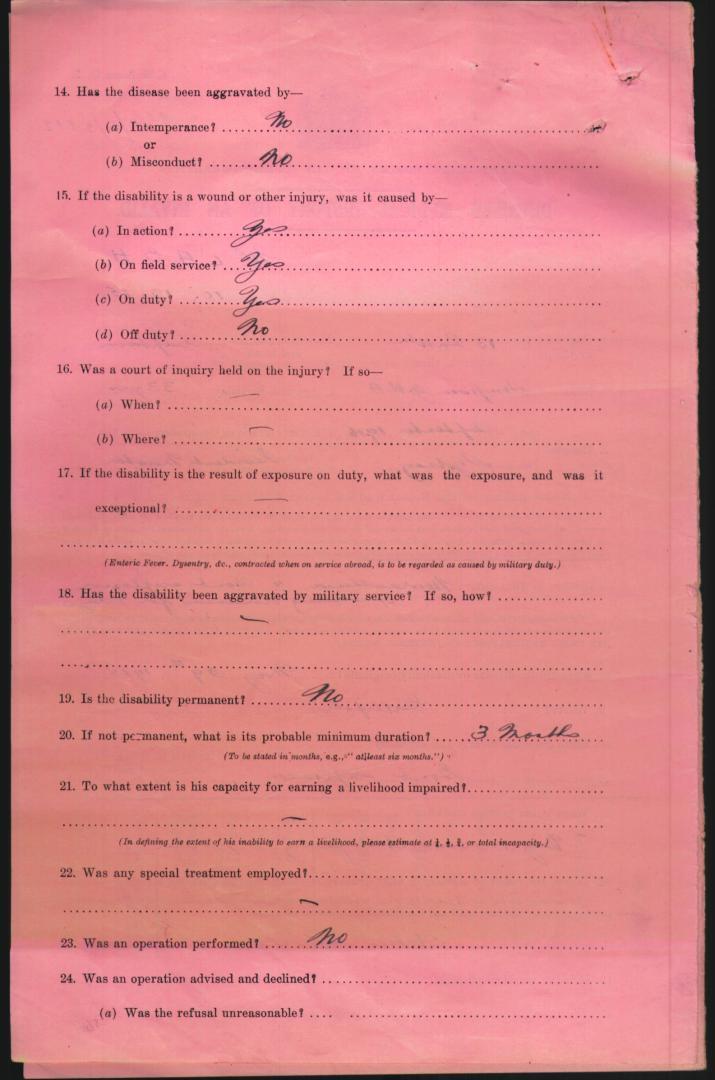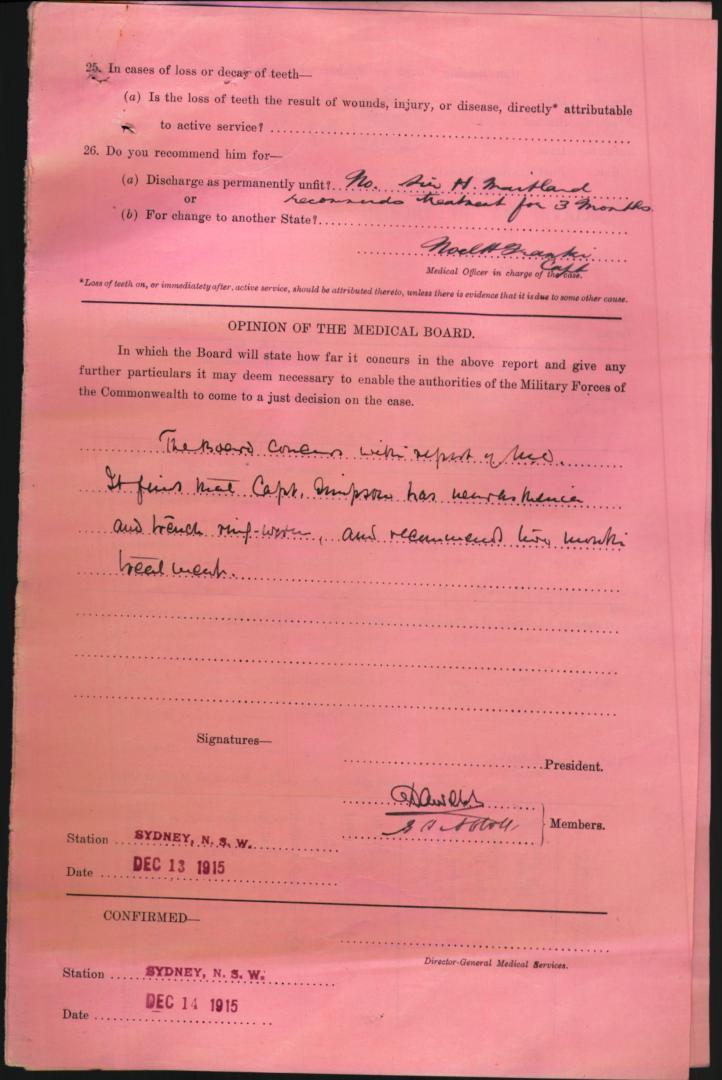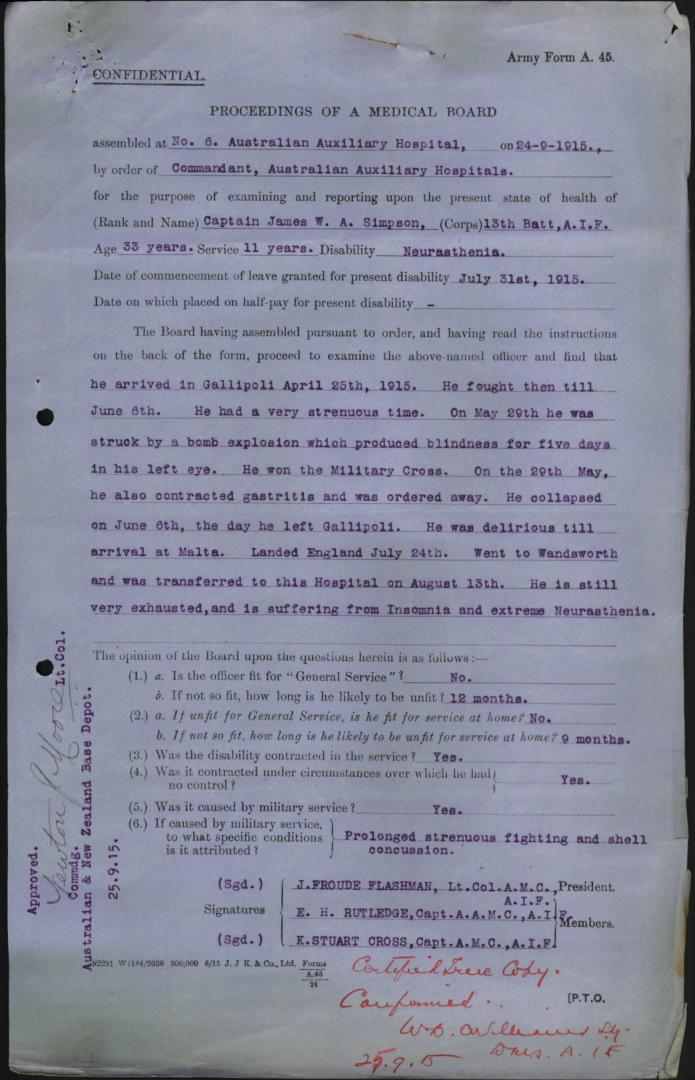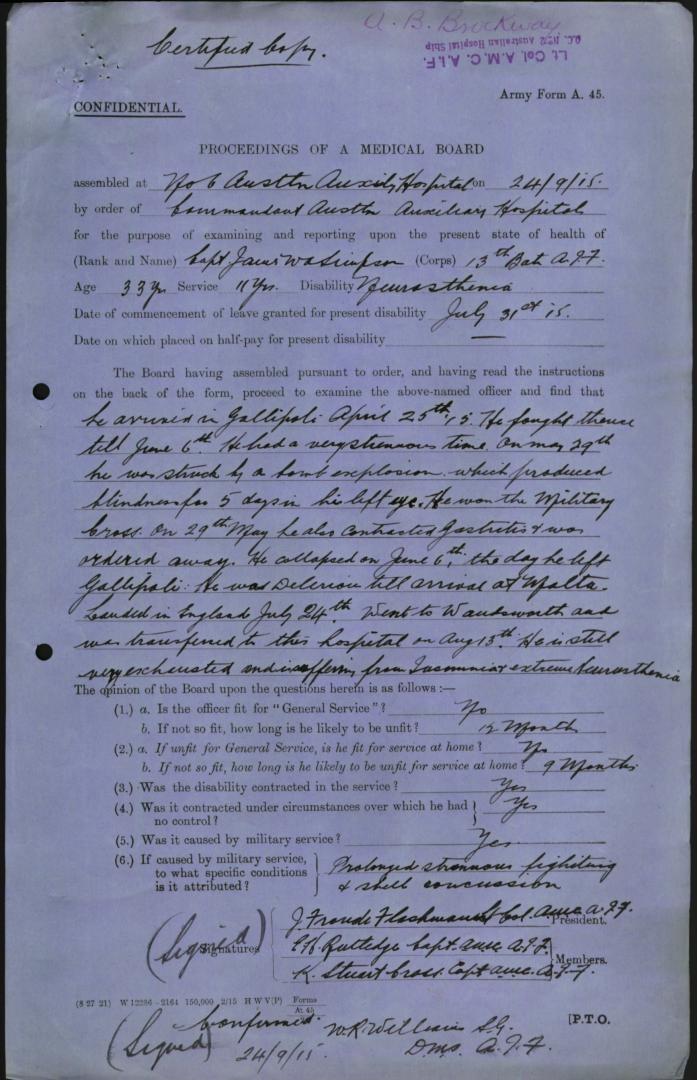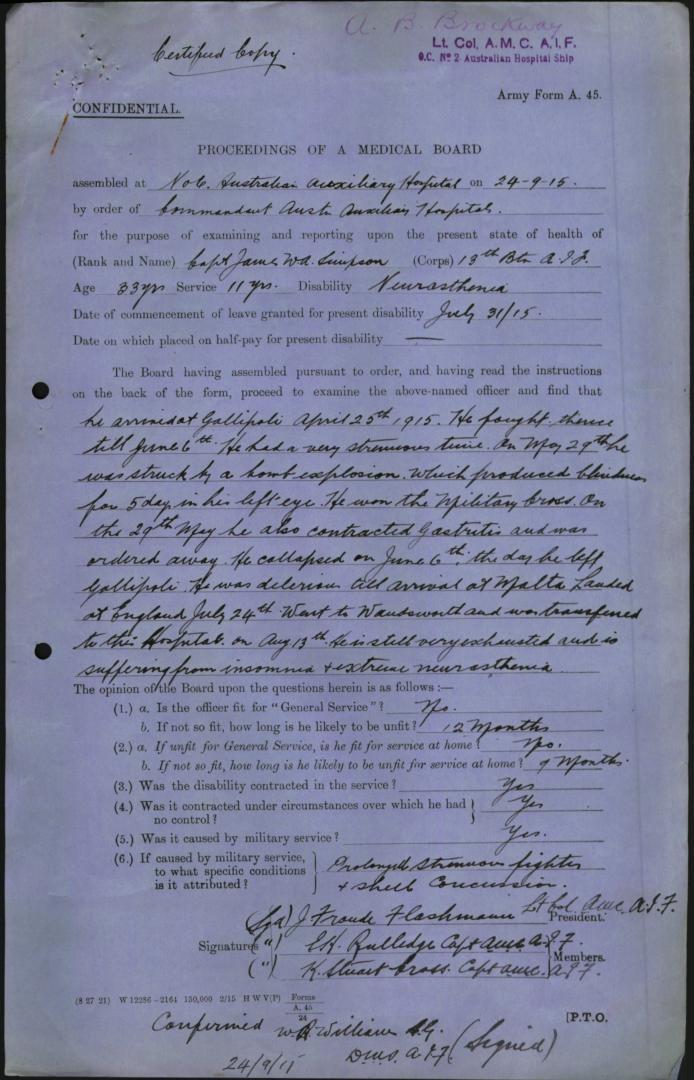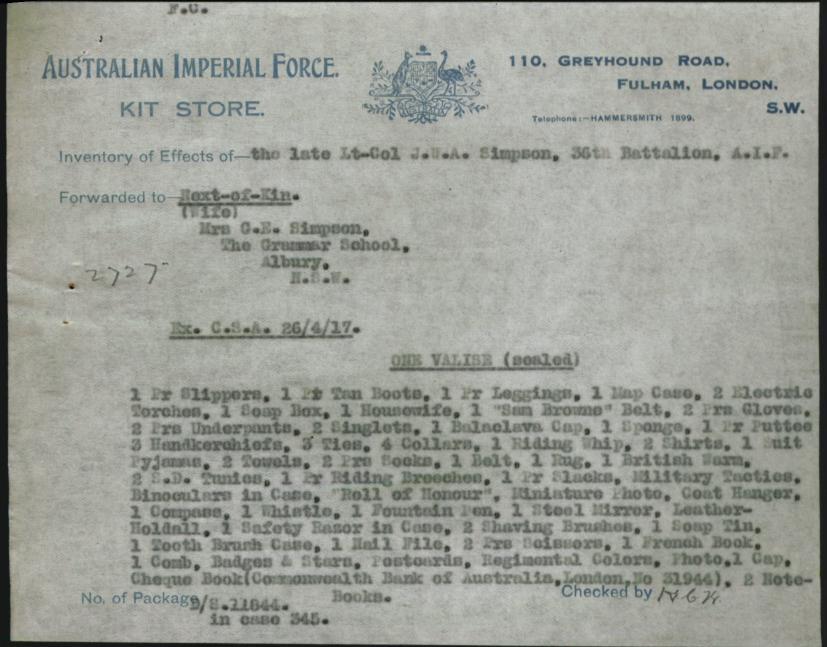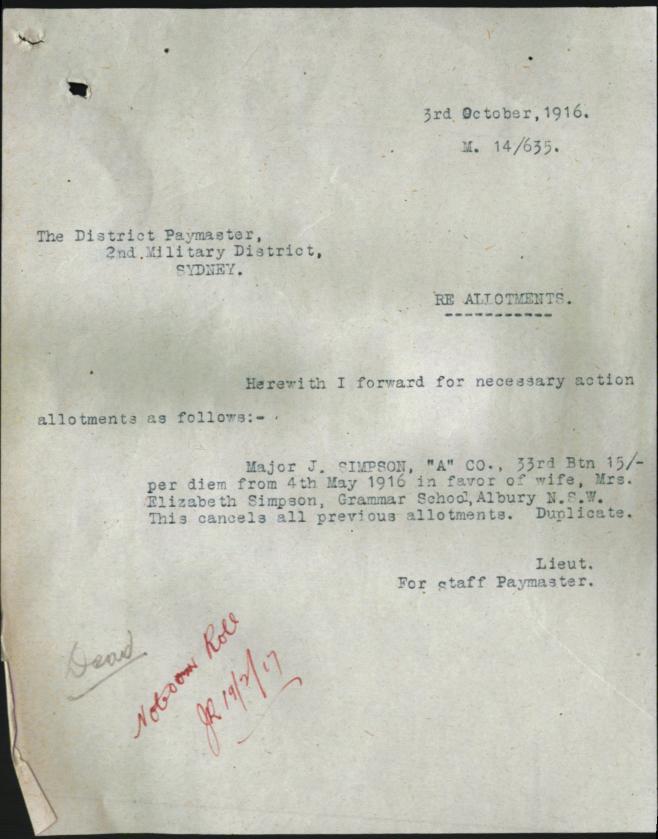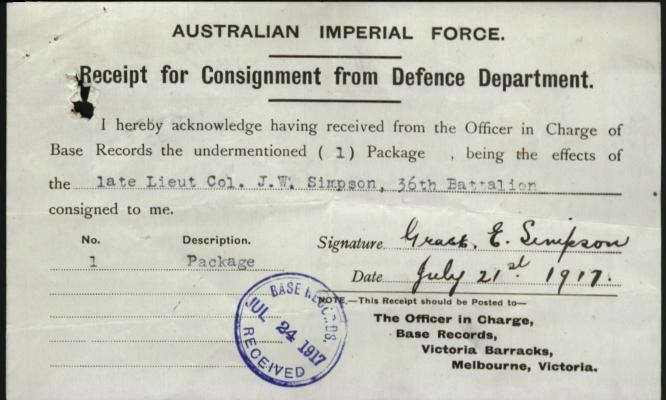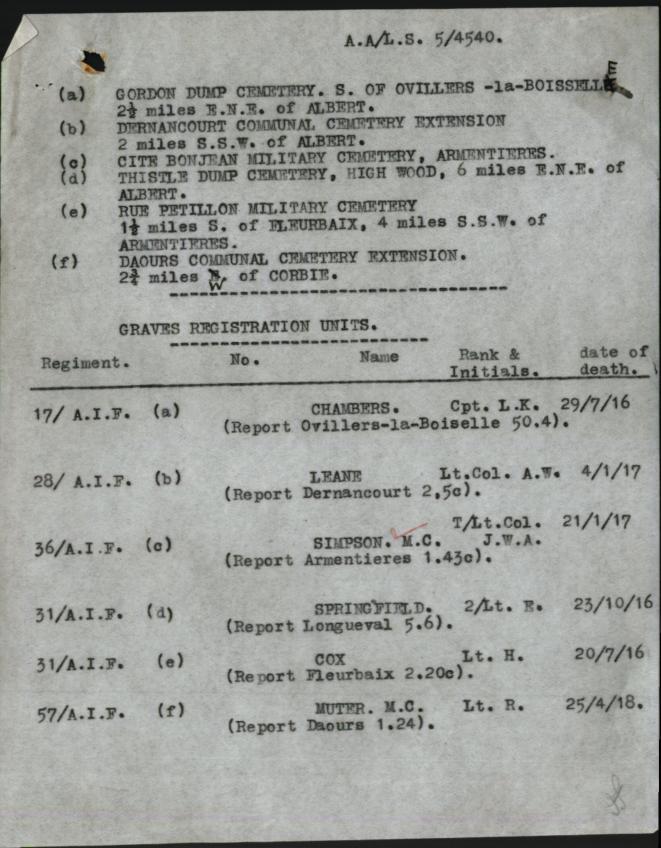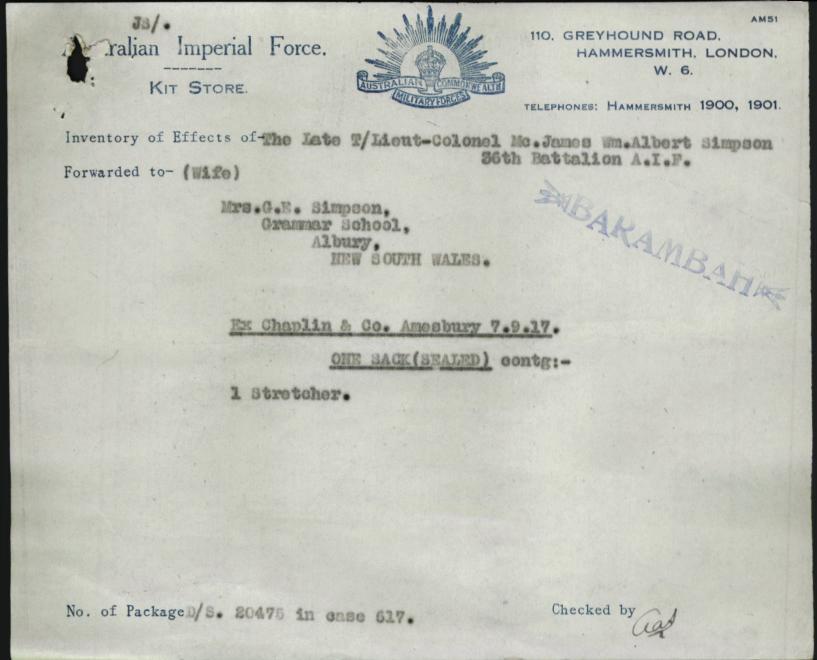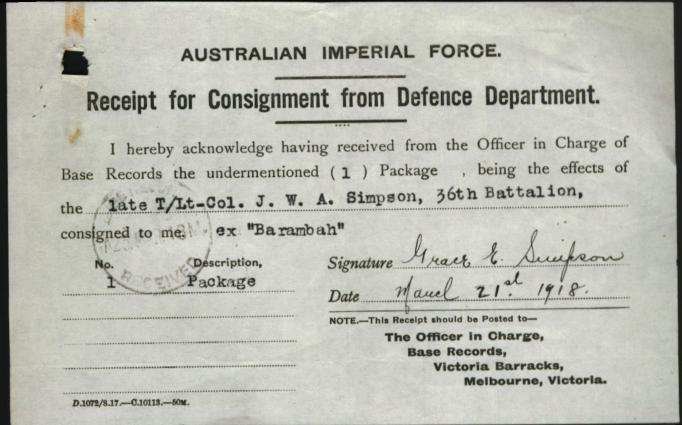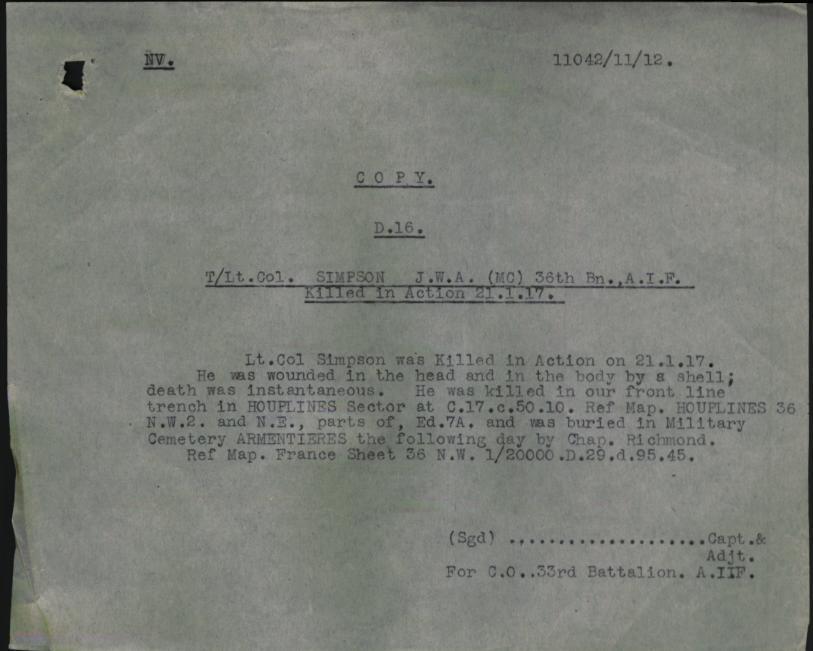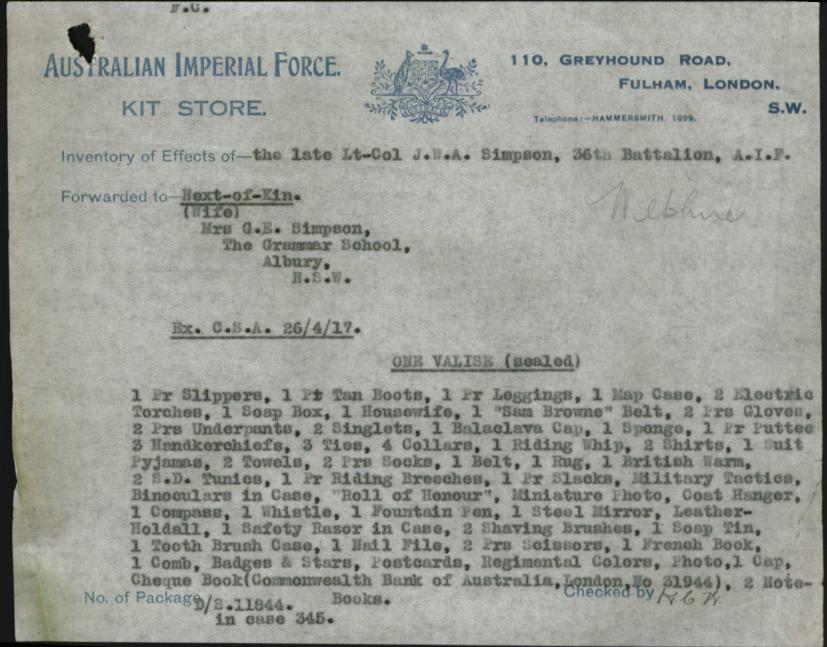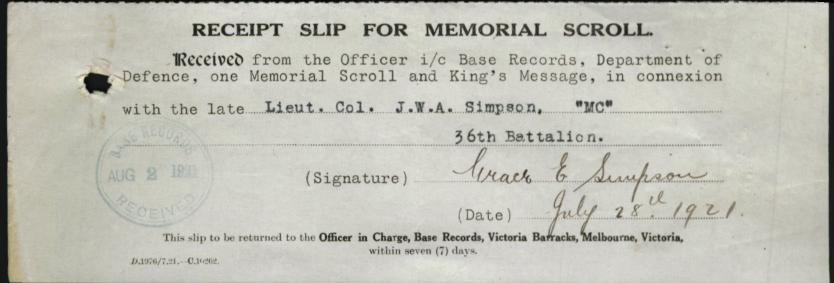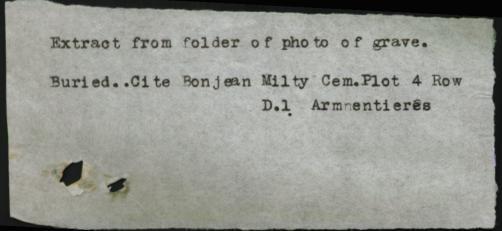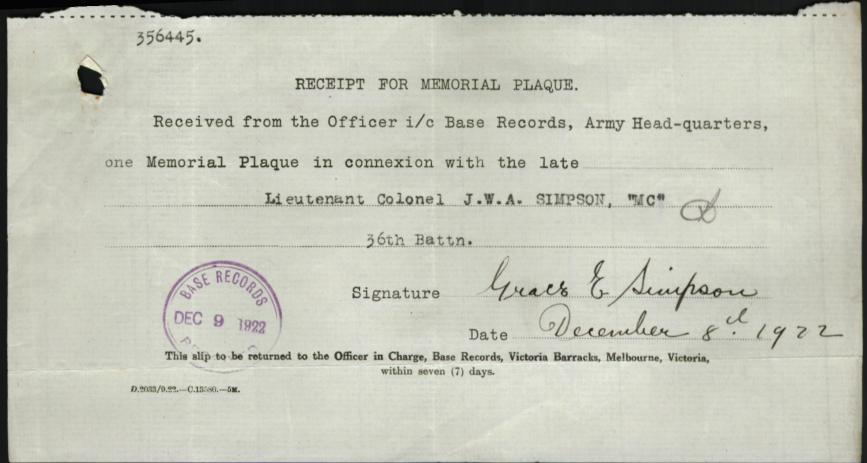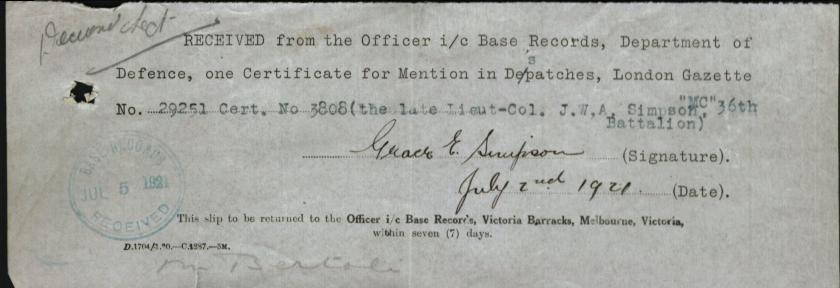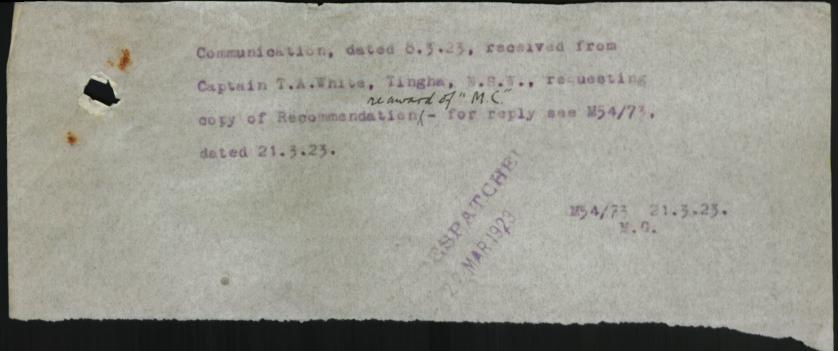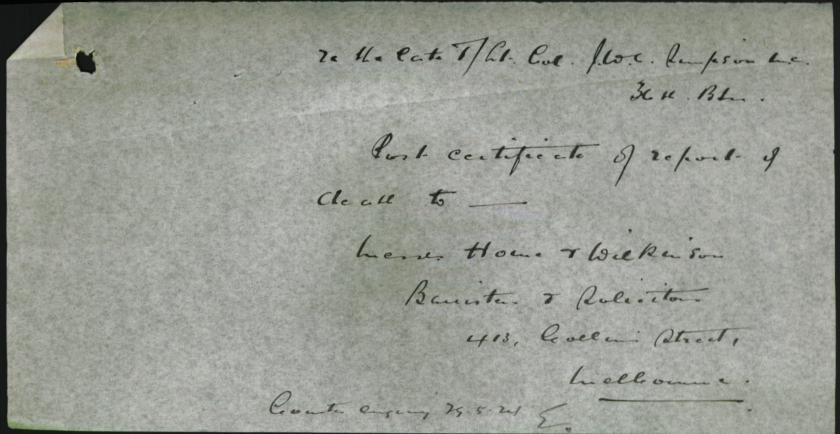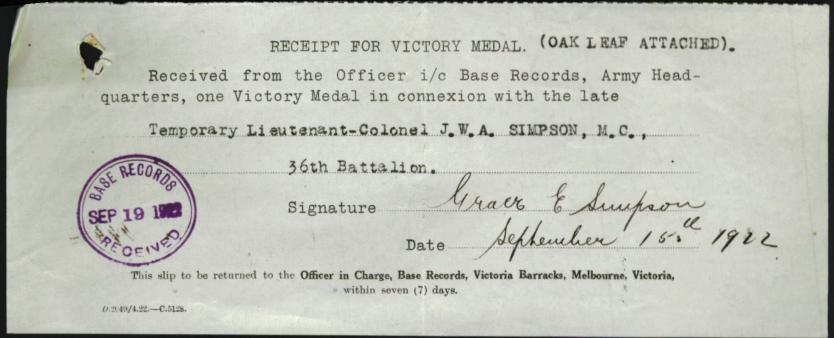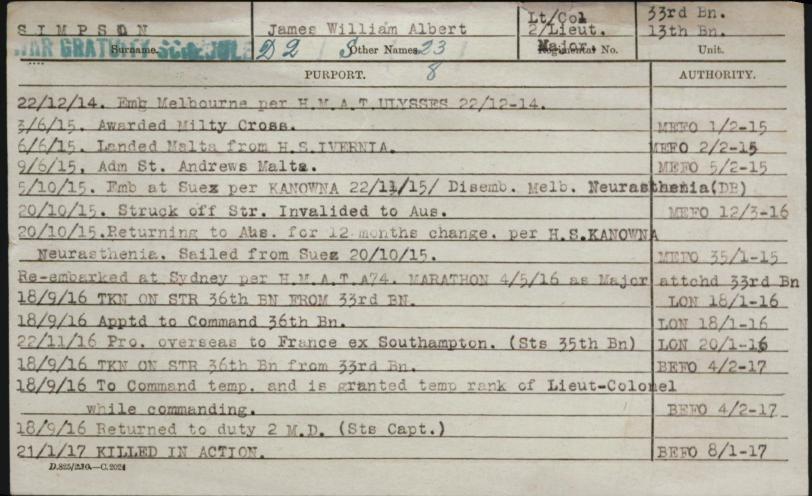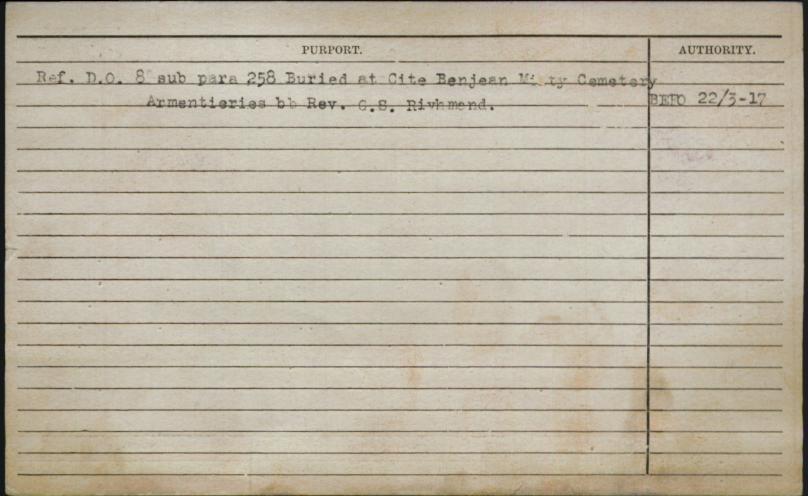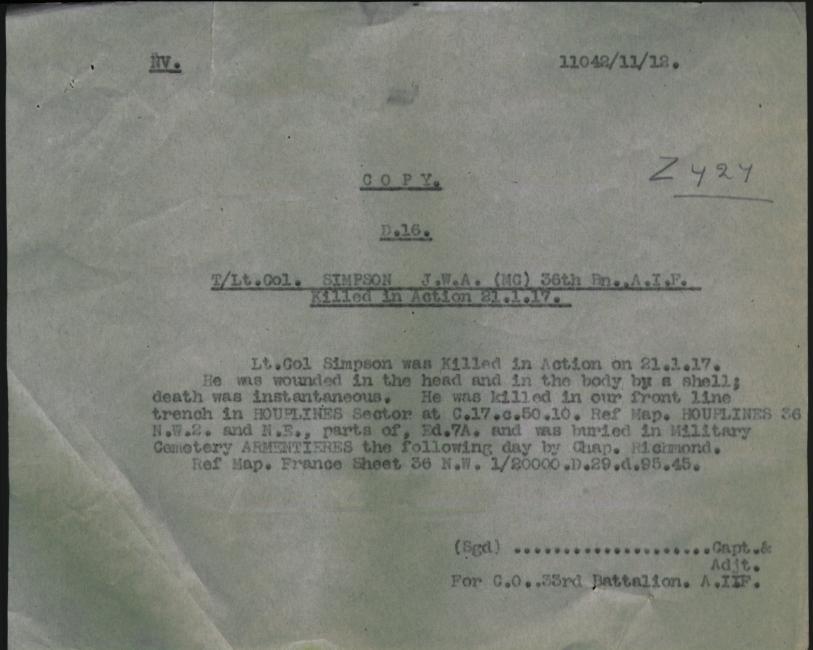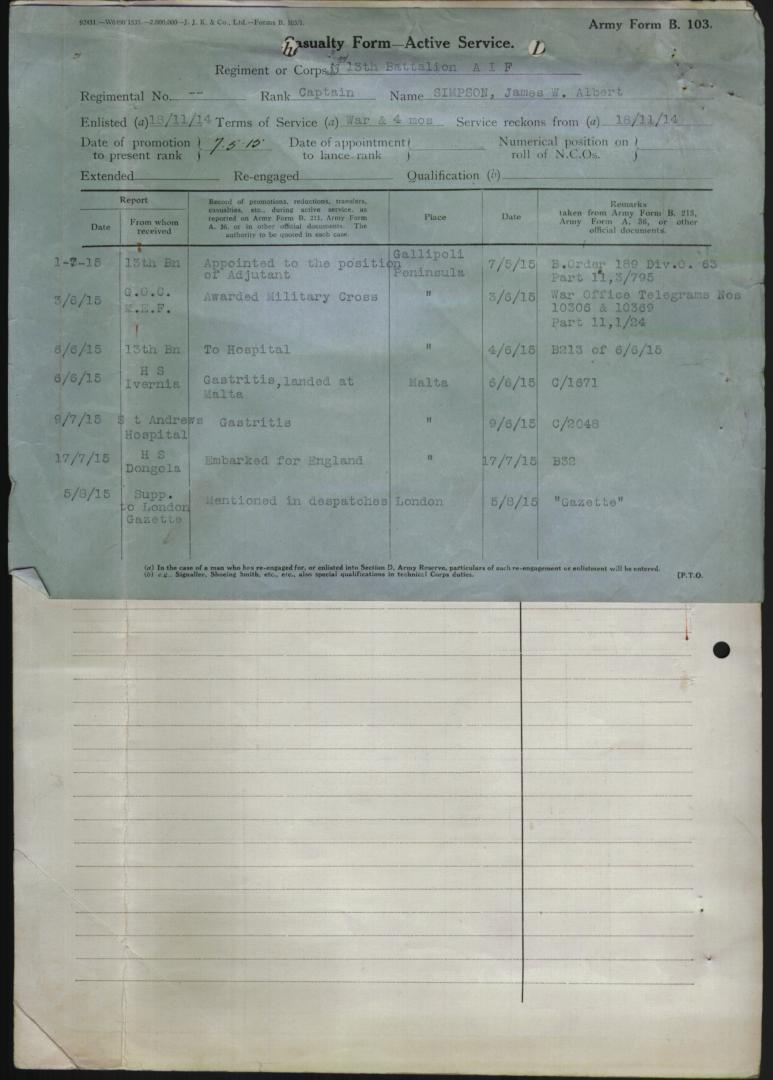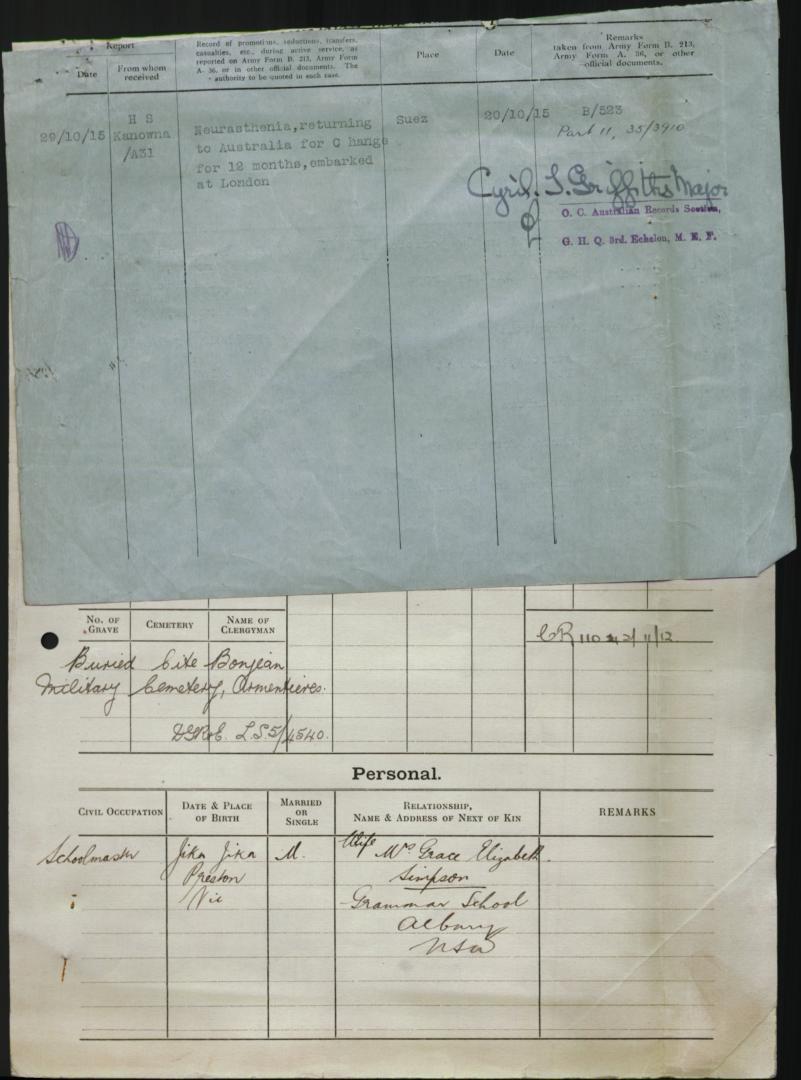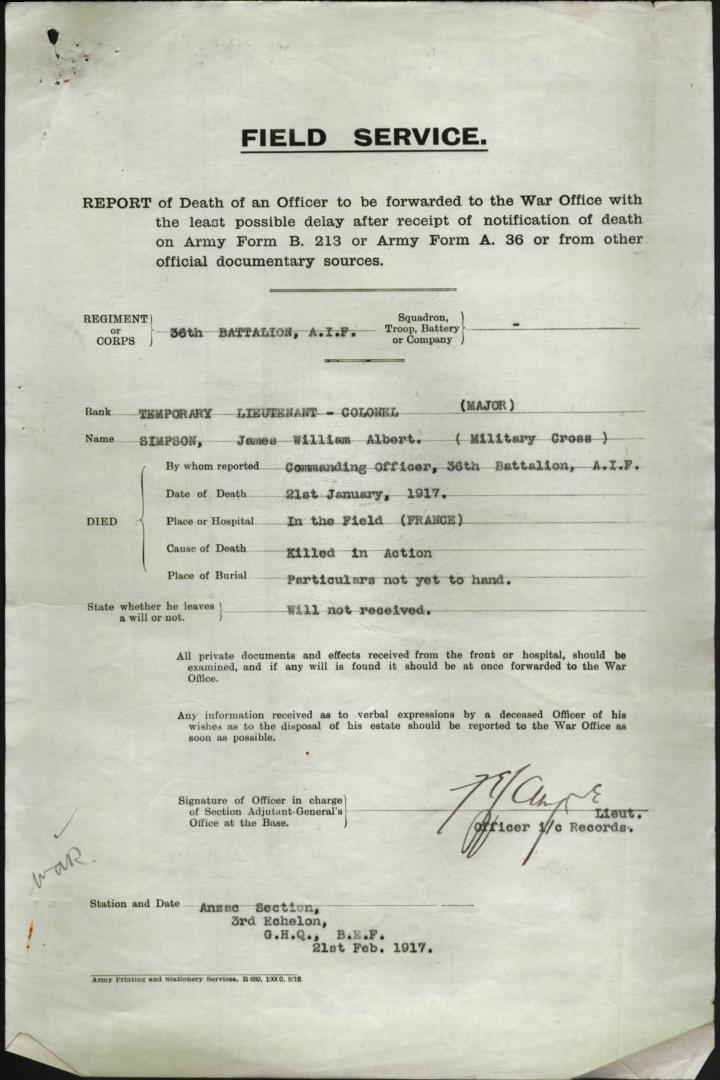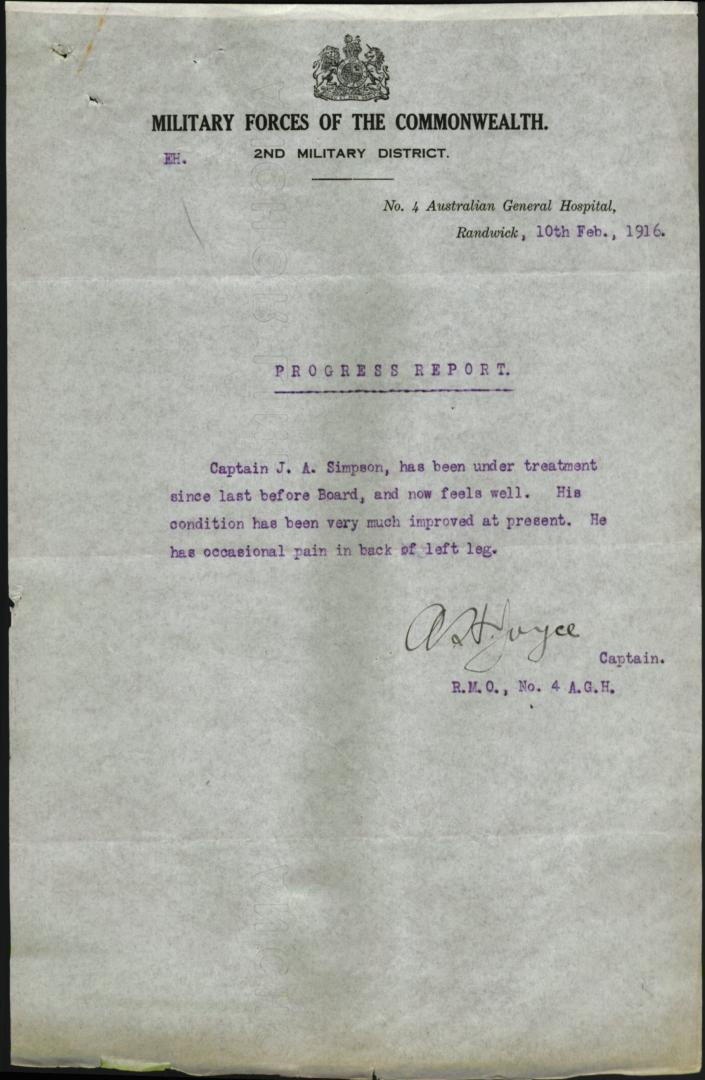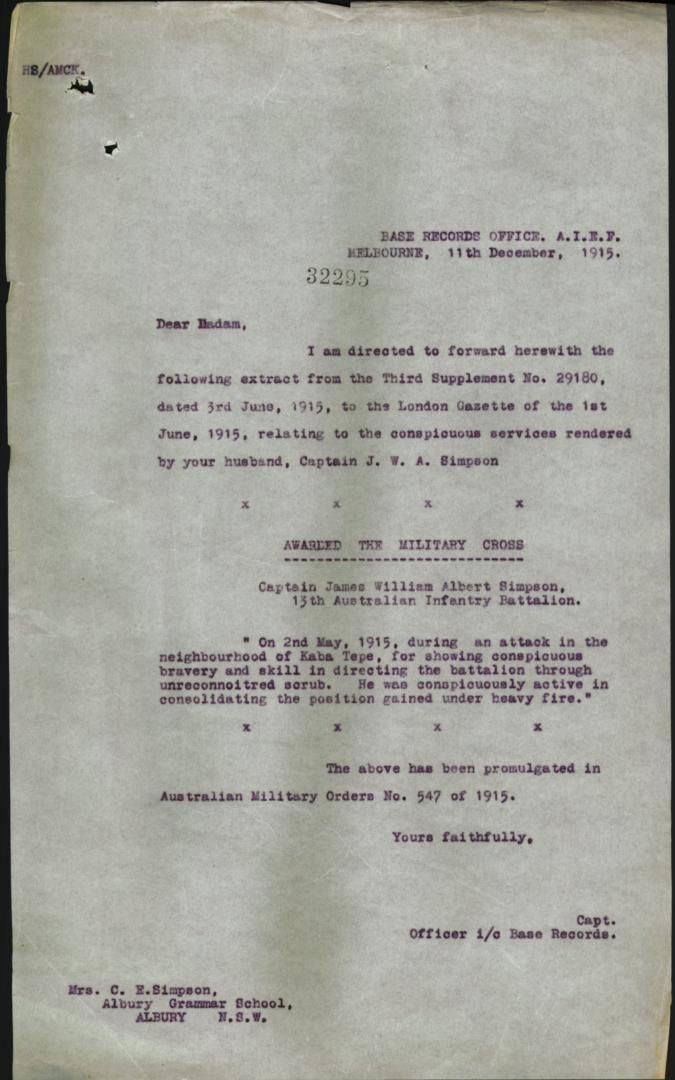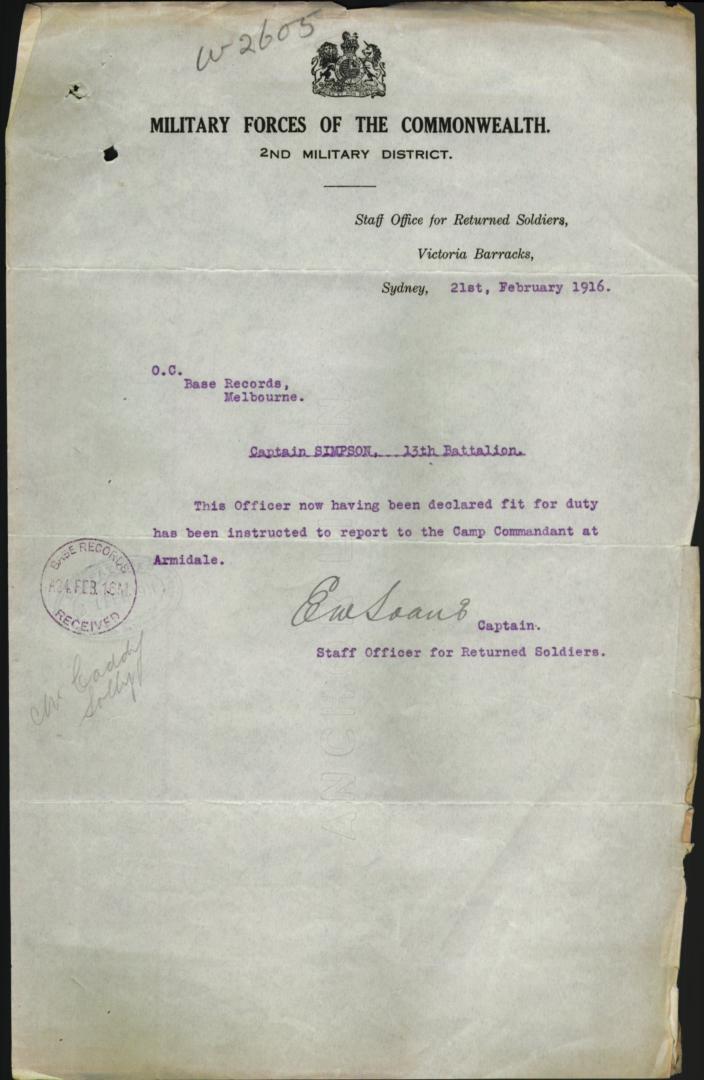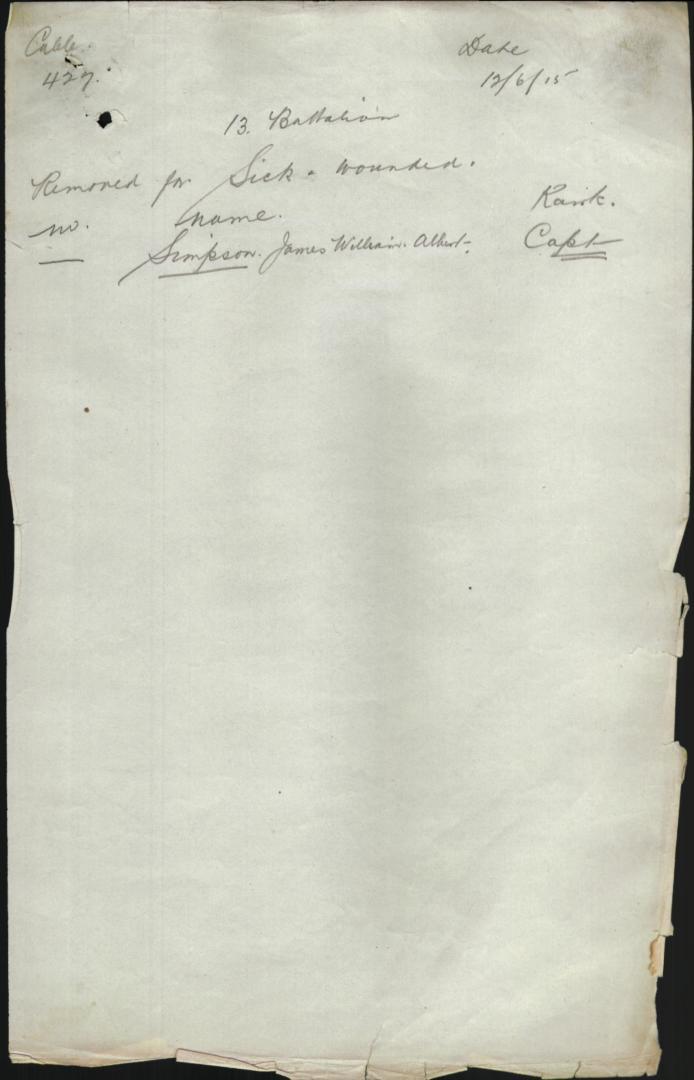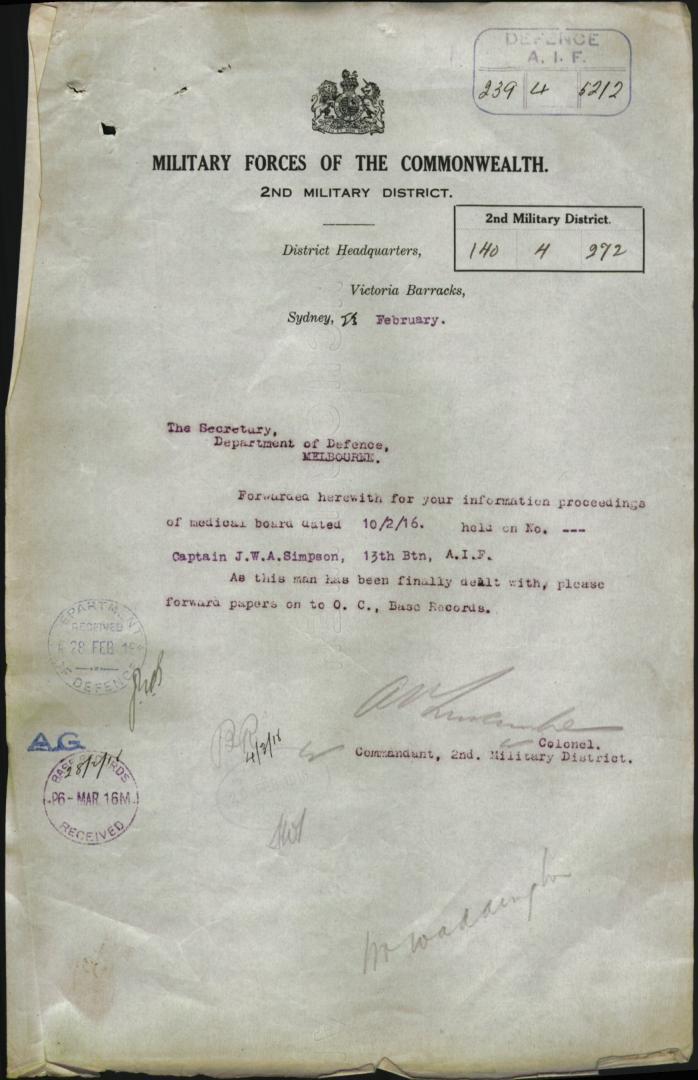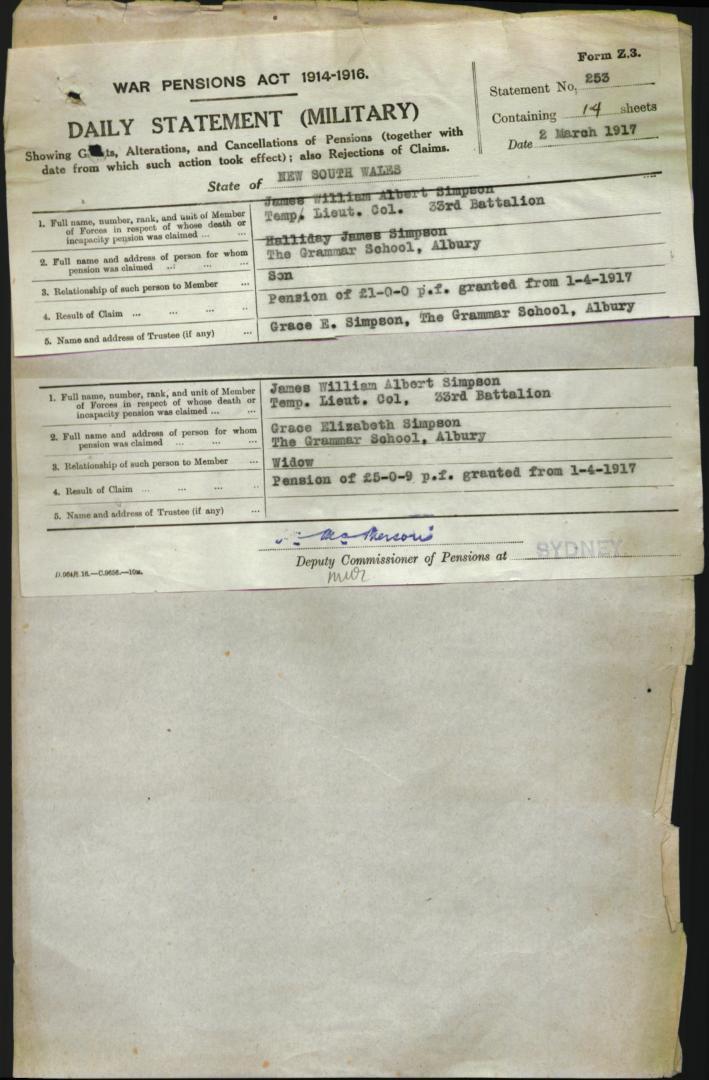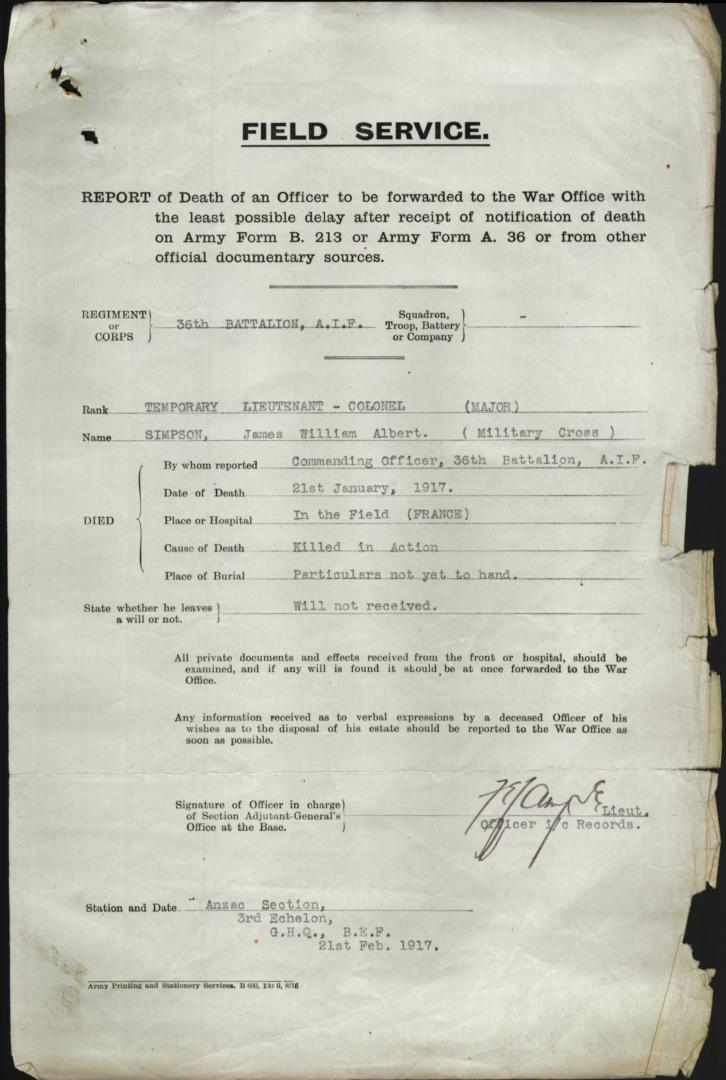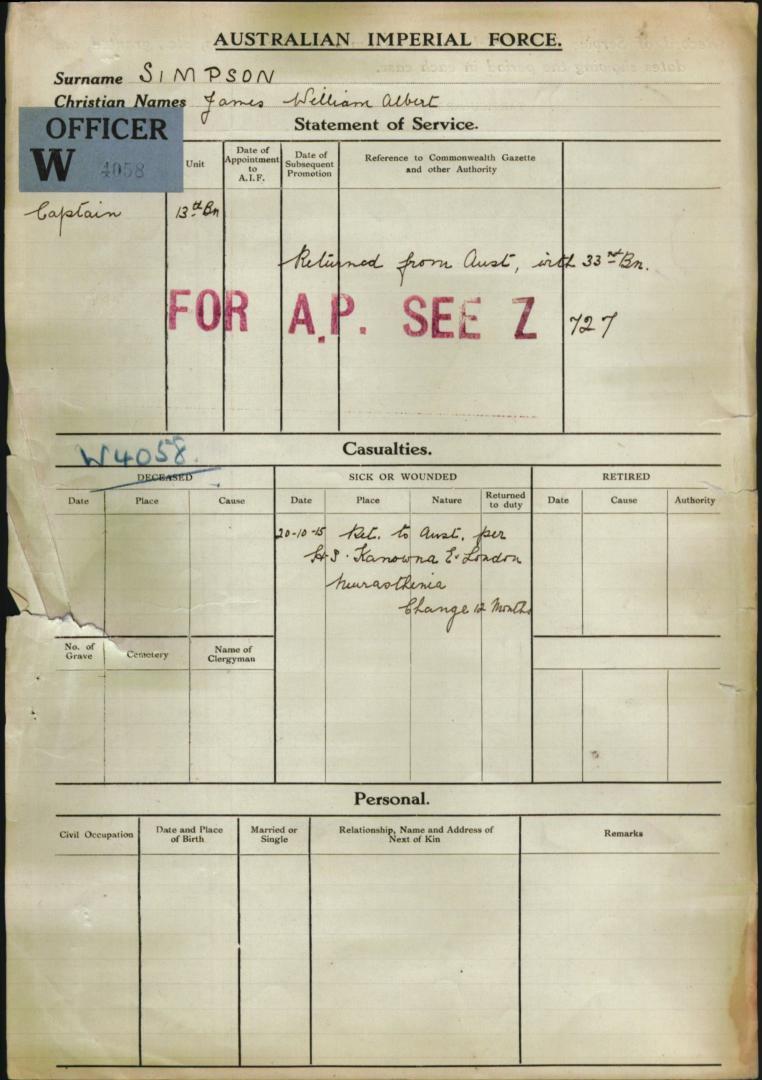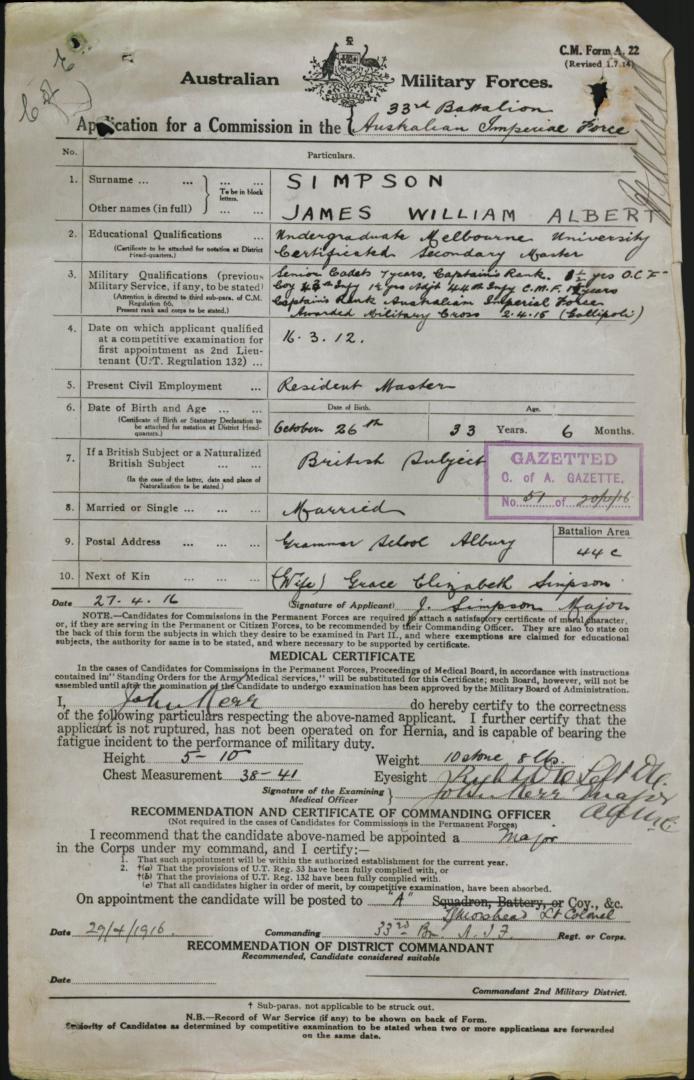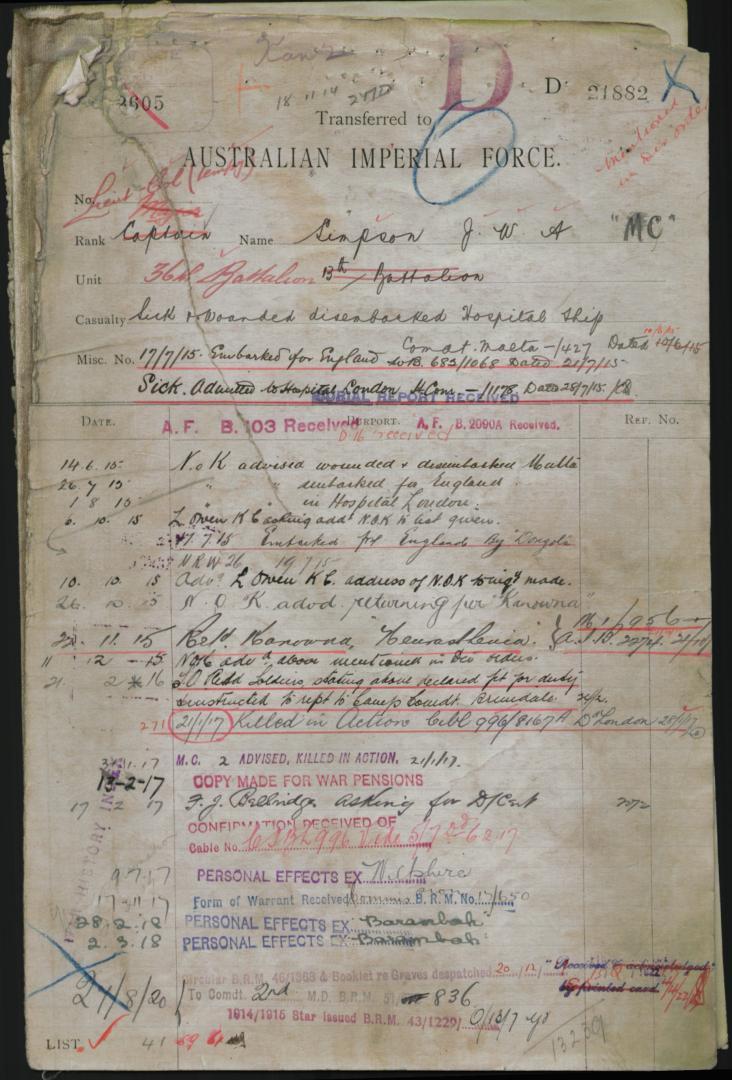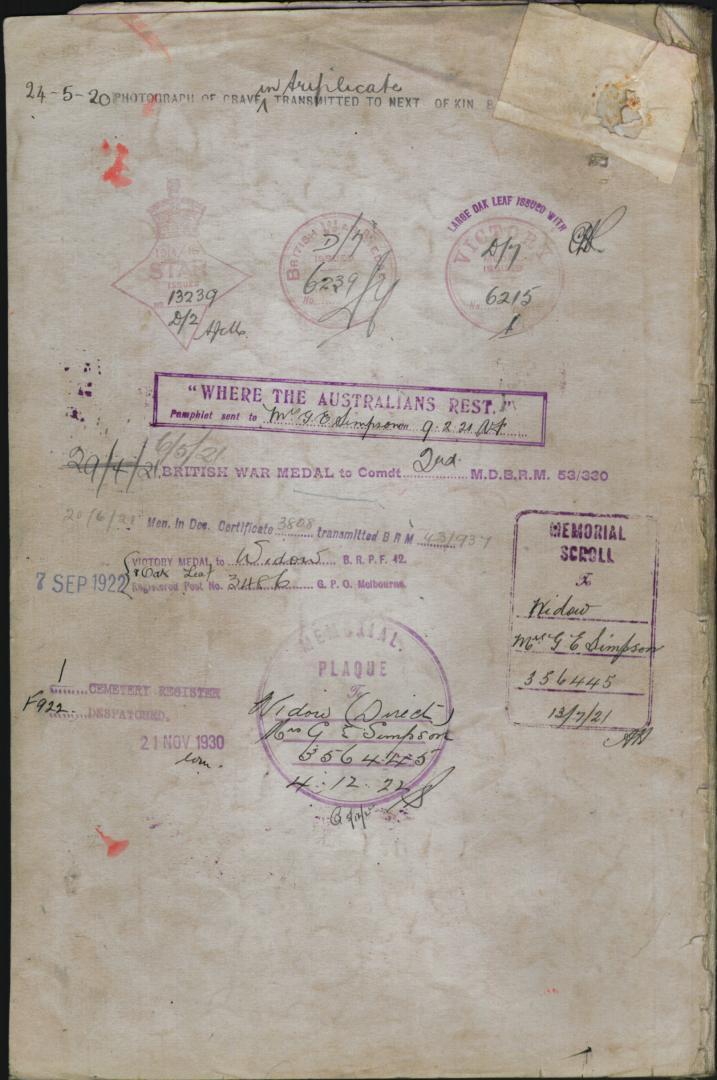Garrison Reserve - 34th BATTALION AIF
Lieutenant-Honorary Captain: Alfred Charles EADE
Born: 30th March 1884. Croydon, Middlesex, England.
Married: 1913. Mosman, New South Wales, Australia. Marriage Cert:13491/1913.
Wife: Emily Louise Eade. nee: Turnidge. (1884- 01/06/1971) Died at St Leonards via Sydney, New South Wales, Australia. Death Cert:48951/1971.
Died: 27th February 1949. Moree, New South Wales, Australia. Death Cert:5713/1950.
Father: Henry Eade.
Mother: Hannah Eade. (1853-16/05/1913) Died in New South Wales, Australia. Death Cert:6788/1913.
INFORMATION
Men participating in the March to Freedom guide two horse-drawn and loaded carts across the Great Dividing Range. One of 12 images relating to a 1918 "March to Freedom" First World War recruiting march. Led by Captain (Capt) Alfred Charles Eade, Officer Commanding Lithgow Camp, this march ran for a month starting on the New England Tableland, across the Great Dividing Range and through the Hunter Valley, arriving in Cessnock on 6 June 1918. Initially planning to finish in Newcastle the men were directed to Sydney and 300 men arrived there on 10 June. Following the success of this march, a southern march was organised and commenced on 2 July from Albury. Capt Eade was an experienced militia officer, serving with the 43rd Regiment, he accompanied the Coo-ee recruitment march in 1915 and spent time as an AIF instructor in 1915. He later was commandant at Bathurst and Lithgow camps before his own enlistment in the AIF in April 1918. He embarked as a general service reinforcement (Paybook number 513115) in July 1918 and on arrival was attached to the 34th Battalion. He was hospitalised with nephritis for a month and returned to Australia in June 1919.
"Pipe playing one column into Cessnock. Capt Eade O.C. [right] and Lieut Colyer, 2nd in command on horseback".
"No lack of cheering here. A Strong Post at Kurri-Kurri Welcoming the March to Freedom column". Young children, humorously described as a [military] strong post, some with flags line the road as the new recruits of the March to Freedom pass by.
"Capt Eade commanding March to Freedom being welcomed by the Mayors of Newcastle & Hamilton". Captain Eade on horseback approaches dignitaries in front of an archway decorated with flags, material and a sign over the arch reading "Welcome to Newcastle, through to Berlin". Alderman Kilgour, mayor of Newcastle is fourth from the left at front in a dark suit.
Alfresco meal at Broadmeadow, Newcastle, of soldiers and recruits during the March to Freedom.
Alderman R G Kilgour, Mayor of Newcastle welcomes the men of the "March to Freedom" recruiting column. In front of the post office, the flag-covered dais is flanked by children, some with small flags. Captain Eade is turning his head away and the war memorial dedicated in 1916 is to the right of the image.
The March to Freedom column leaves Singleton (caption on back of print). Townspeople line the road.
Alfred Charles Eade a bank officer who was appointed to the AIF on 27 April 1918. He embarked for England 17 July and arrived on 27 September 1918. On 6 January 1919 he joined the 34th Battalion in France. He embarked for Australia on 3 May and arrived on 21 June 1919. His appointment in the AIF was terminated on 7 August 1919. Prior to his enlistment in the AIF he had been a Captain in the Citizen Military Force and was in full time service in Australia. He was involved in the organization of the Cooee March in 1915 from Gilgandra to Sydney and the March to Freedom from Armidale to Sydney in 1918. He ran the recruiting centre at Lithgow from July 1915. Then he was in command of the recruit training camp at Bathurst between late 1915 and 1917 and then continued his involvement in recruit training at the Liverpool camp.
Advertiser (Adelaide, SA : 1889 - 1931), Monday 24 July 1916, page 9
A CAPTAIN FINED.
ABUSED AN EDITOR.
Sydney, July 23.
Alfred Charles Eade, a captain in the A.I.F, was fined £1, with 27/ costs at the Bathurst court yesterday, for having used insulting words to Absalom Gartrell, managing editor of the "Bathurst Times." The evidence showed that the defendant abused the editor for publishing a few lines of verse which the defendant said were against the site of the Bathurst camp, and all drunken lies. He called Gartrell liar and a drunken skunk.
Family Information
He is the brother of Captain: Henry Arthur EADE 35th Battalion AIF and brother-in-law of Private: 9147 Arthur Linnett TURNIDGE 1st Field Ambulance and Private: 7200 Harold Gladstone TURNIDGE 2nd Battalion AIF.
The Honour Roll is located in what was the main banking chamber of the former Commercial Bank of Sydney's head office.

Bronze plaque mounted on wooden carved backing
The Honour Roll was recently unveiled in the banking-chamber at the head office in the presence of the directors, general manager, and members of the metropolitan staff. The ceremony was performed by Mr. O. J. Cohen, who mentioned that 345 officers of the bank enlisted for active service and 58 failed to return. Special honours gained were:— D.S.O., 5; O.B.E., 1 ; M.B.E., 1; M.O., 8; D.C.M.,1; M.S.M., 1; M.M., 5; mentioned in despatches, 9; Card of Honour awarded by Brigadier, 1.
Sydney Mail, 20 October 1926.
IN MEMORY OF THE OFFICERS OF THIS BANK
WHO SERVED IN THE GREAT WAR 1914 -1919
On the 23rd of April 1938 Alfred attended the 34th Battalion AIF reunion at the Cenotaph in Martin Place, Sydney at 7:30pm followed by a Smoko at Sargents, Market Street, Sydney commencing at 8:00pm sharp. Alfred signed the card belonging to Lieutenant: Augustus Gibson FARLEIGH.
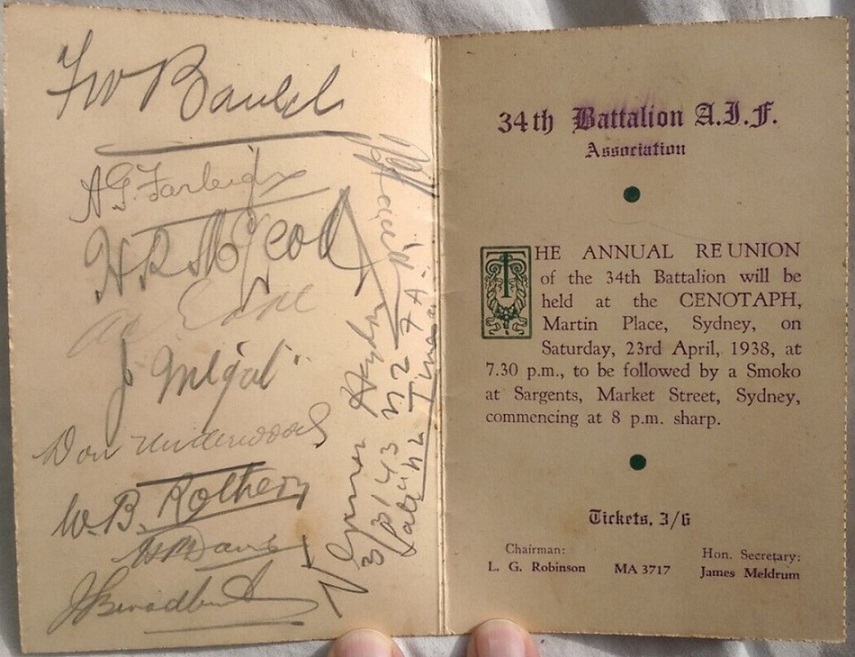
34th Battalion Reunion Card 1938
Family Information
Alfred was a married 34 year old Bank Officer from "Bunyah" Mustow Street, Mosman, N.S.W upon his enlistment with the AIF. He served as Captain with the 43rd Infantry for 1913. Emily Louise Eade was Cremated at the Northern Suburbs Crematorium.
Warialda Standard and Northern Districts' Advertiser (NSW : 1900 - 1954), Monday 9 January 1950, page 3
Sudden Death of Mr. A. C. Eade
LED FAMOUS RECRUITING MARCH
Alfred Charles Eade (65), collapsed and died in his room at the Hotel Criterion, Moree. The body was discovered by the housekeeper, Mrs. McGrath. The late Mr. Eade was born in England and came to Australia as a boy. He joined the staff of the Commercial Banking Co of Sydney at the age of 16. Stationed at Gilgandra on the outbreak of World War 1, he led the famous "Cooee" recruiting march from that centre to Sydney where he enlisted with the A.I.F., and went overseas with the 34th Battalion, in which he served with the rank of lieutenant. At the cessation of hostilities he re joined the bank where he remained until he retired some three years ago, having been made a relieving manager. In all he served 46 years with the bank. The late Mr. Eade came to Moree about three years ago and took an active interest in the Bowling Club. Keenly interested in gardening, he did much to improve the surroundings of the Bowling Club. He was also a member of the Services Club. Interment took place in the Moree cemetery after a service in the Church of England conducted by Archdeacon Border. Pall bearers were members of the Bowling Club. A guard of honour was formed by members of the Returned Servicemen's League. The Last Post was sounded at the graveside.
graveside.—"N.W. Champion."
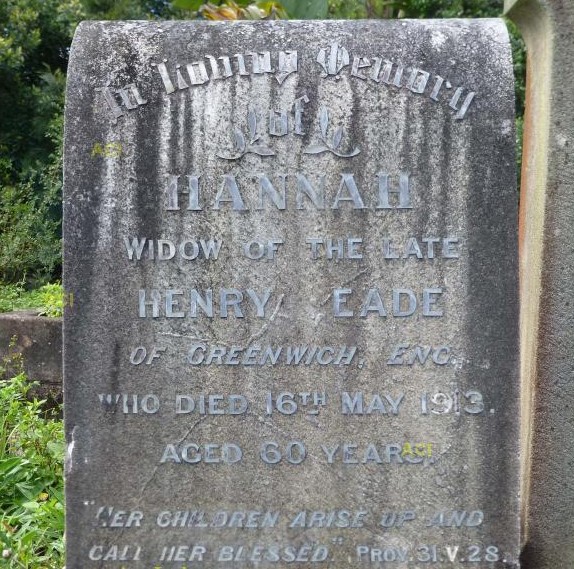
Grave of Hannah Eade (1853-1913) Gore Hill Cemetery via Western Sydney.
Military Records
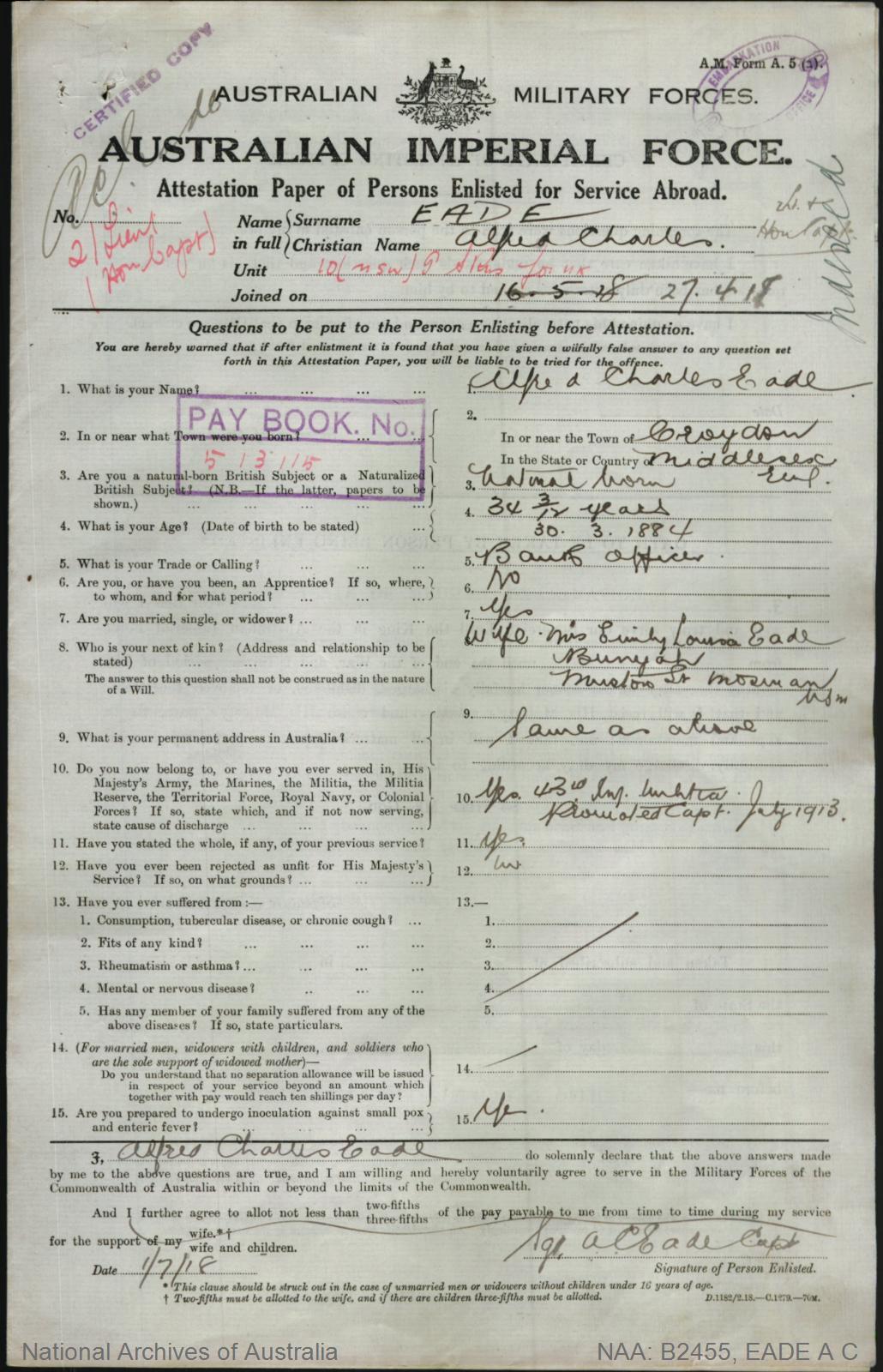

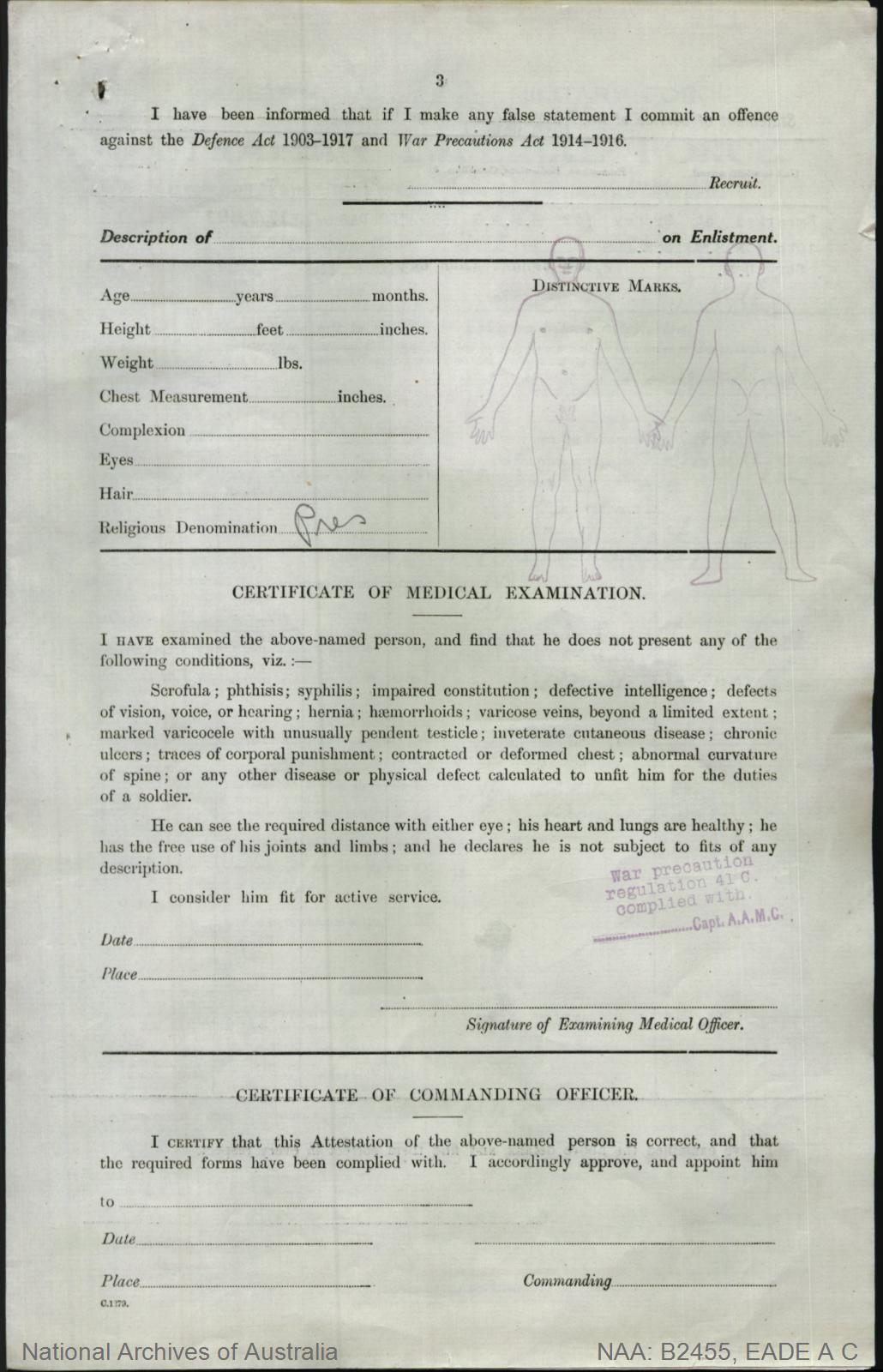
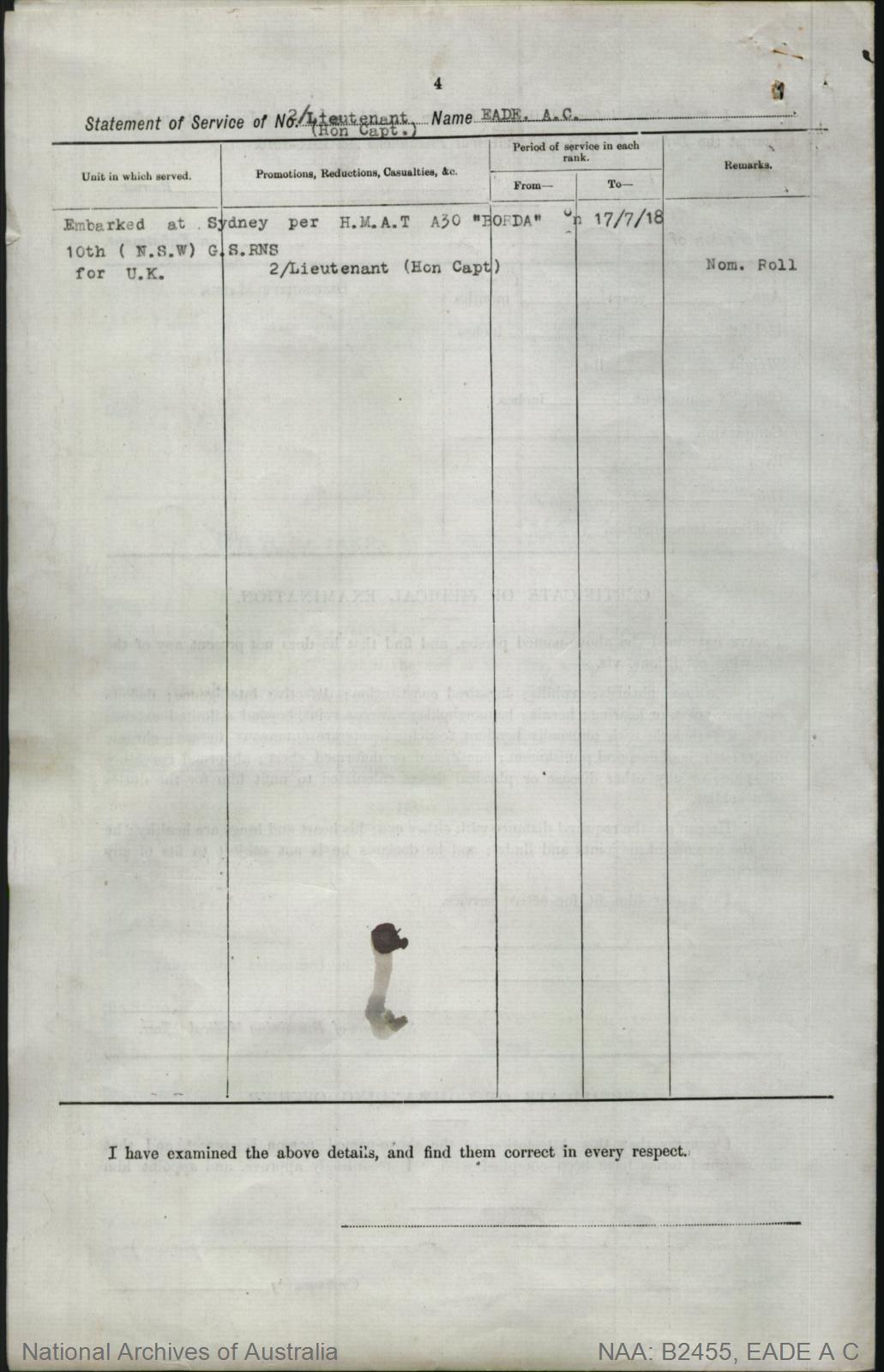
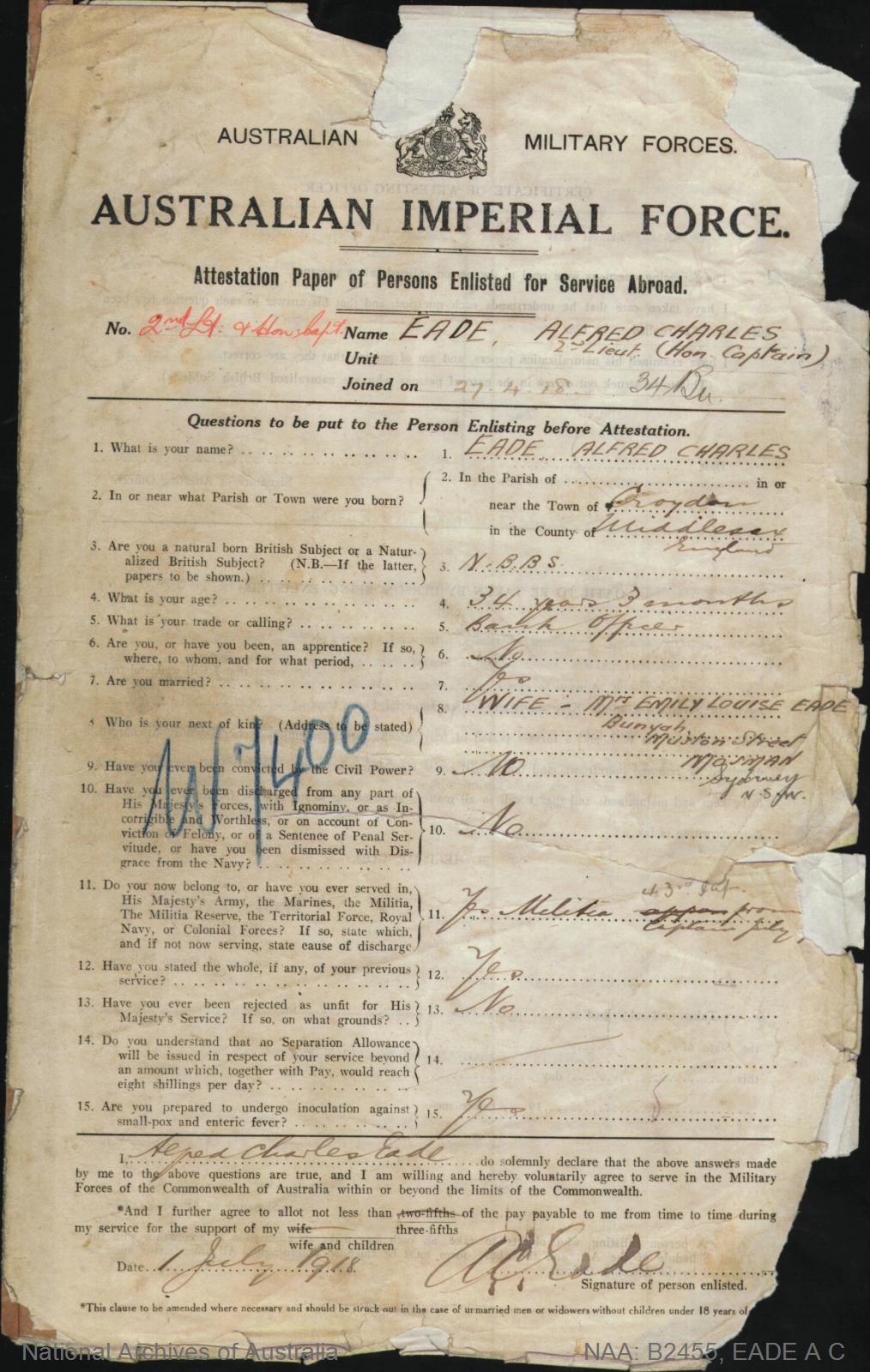

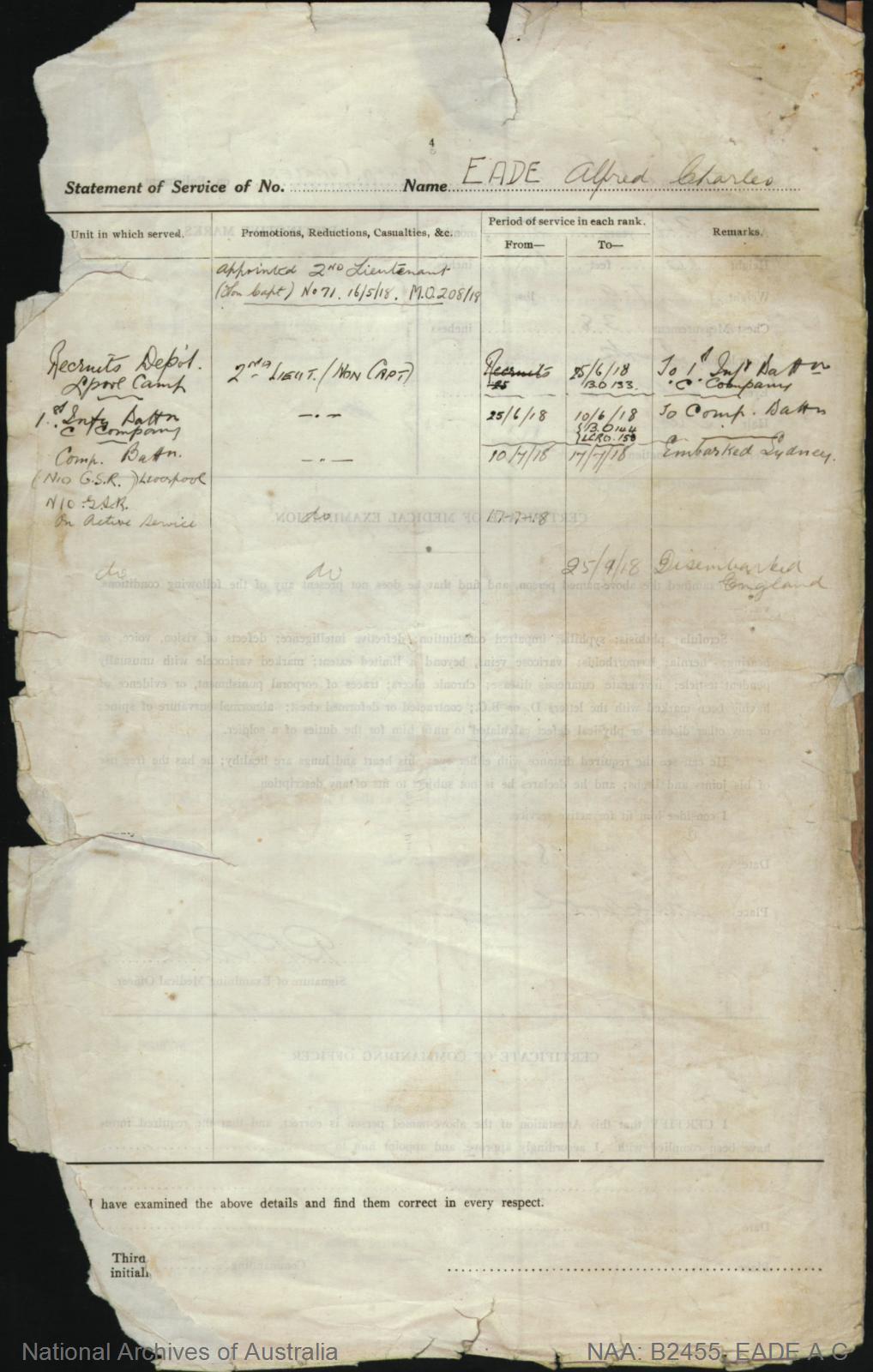
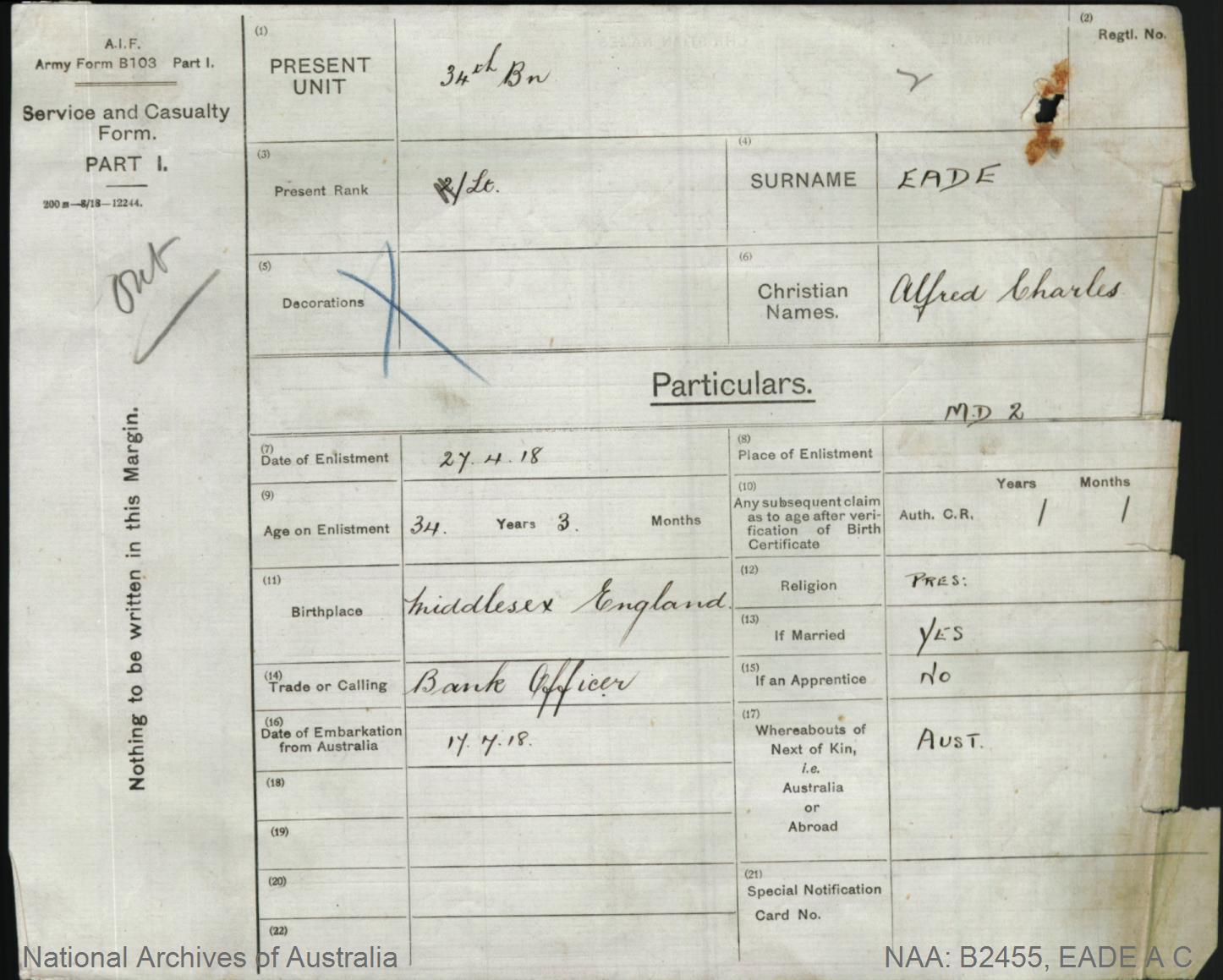



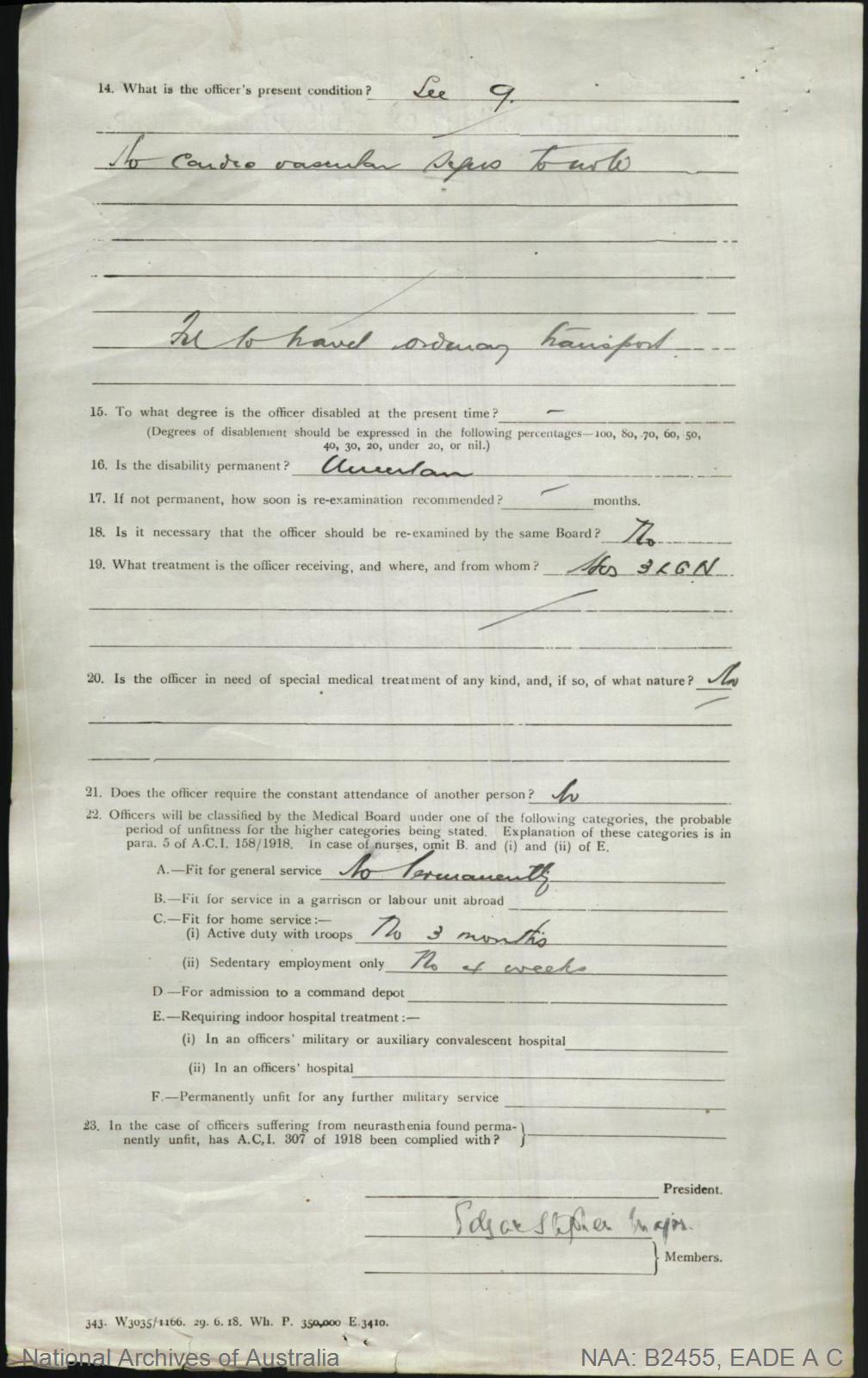
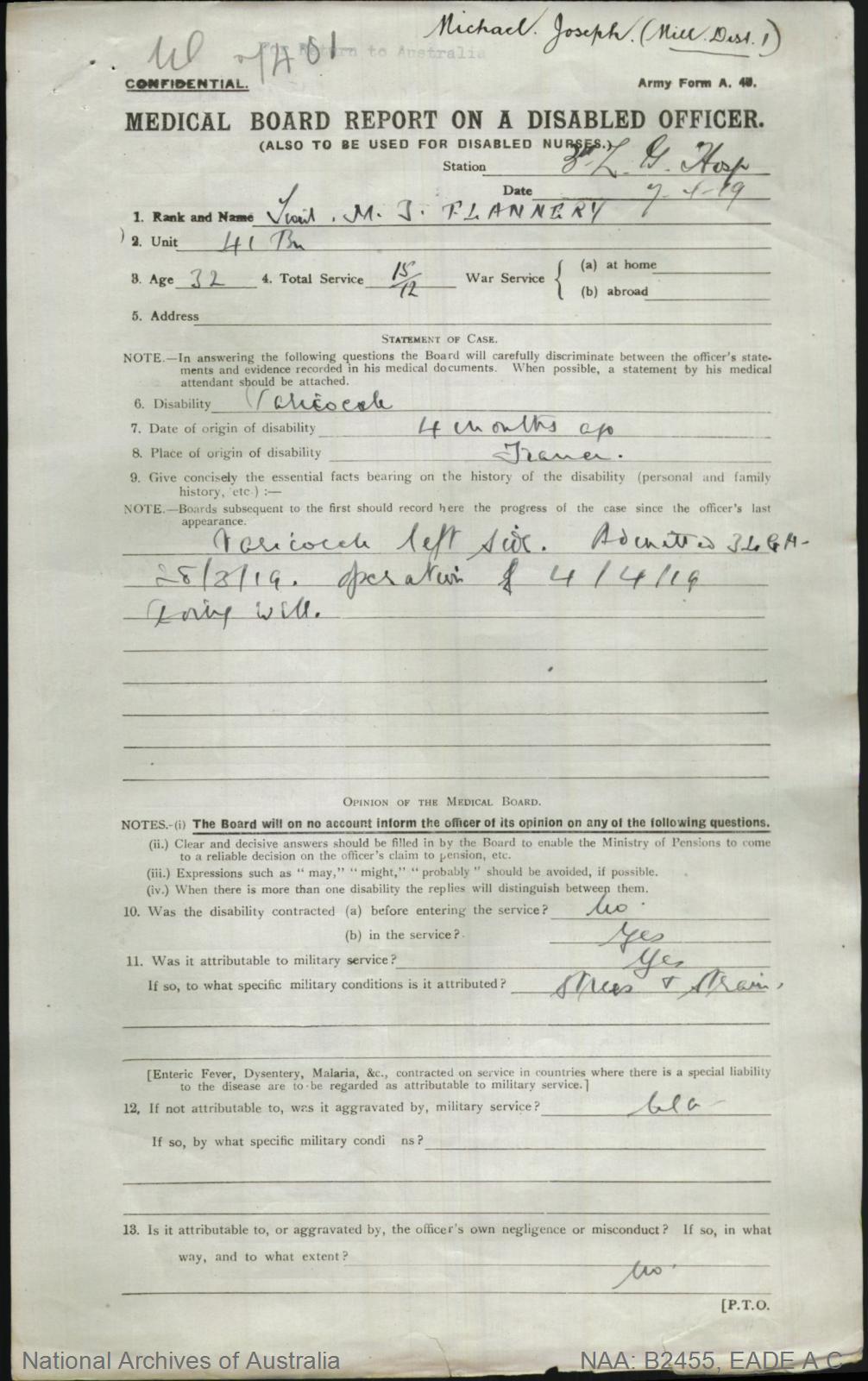
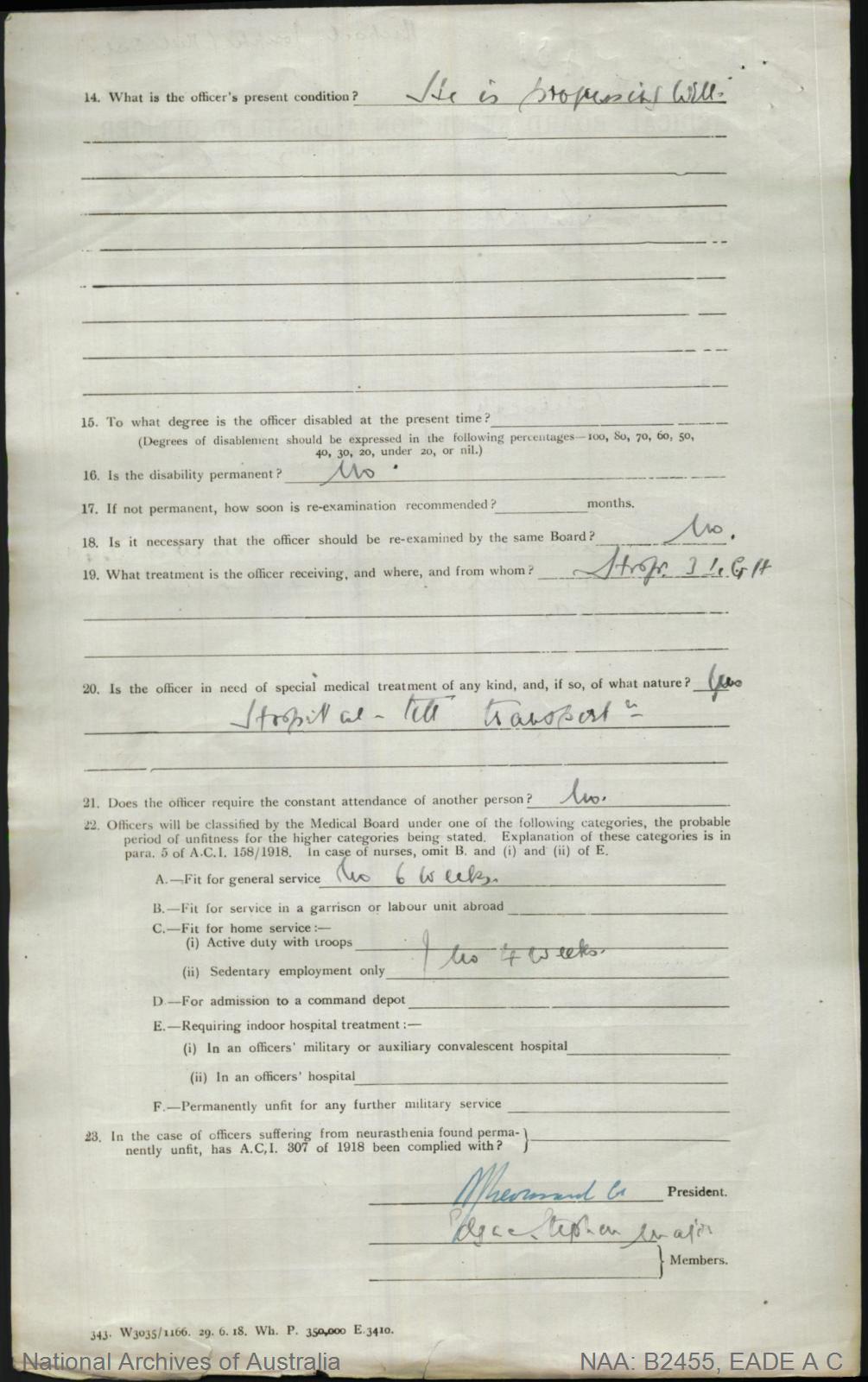


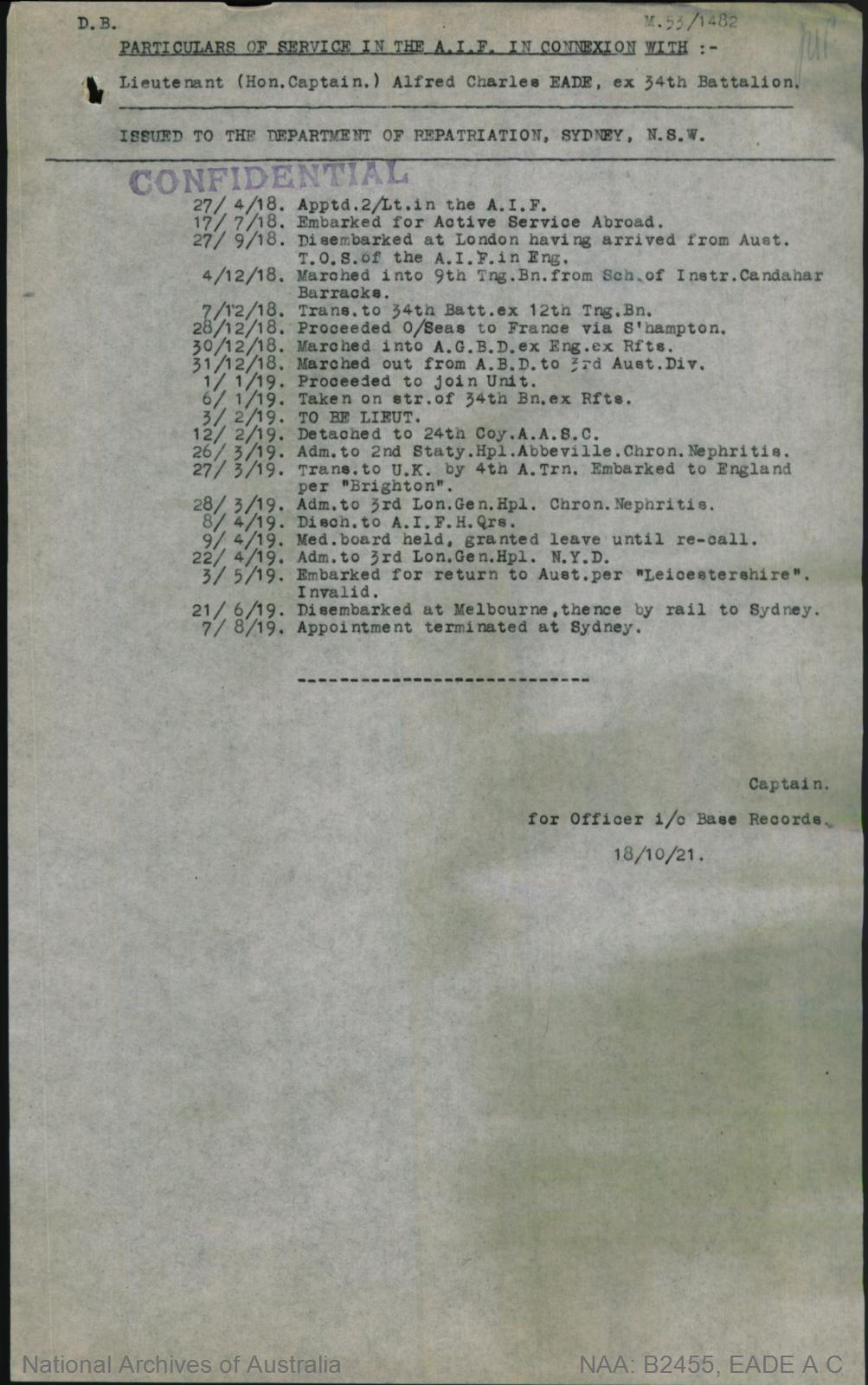

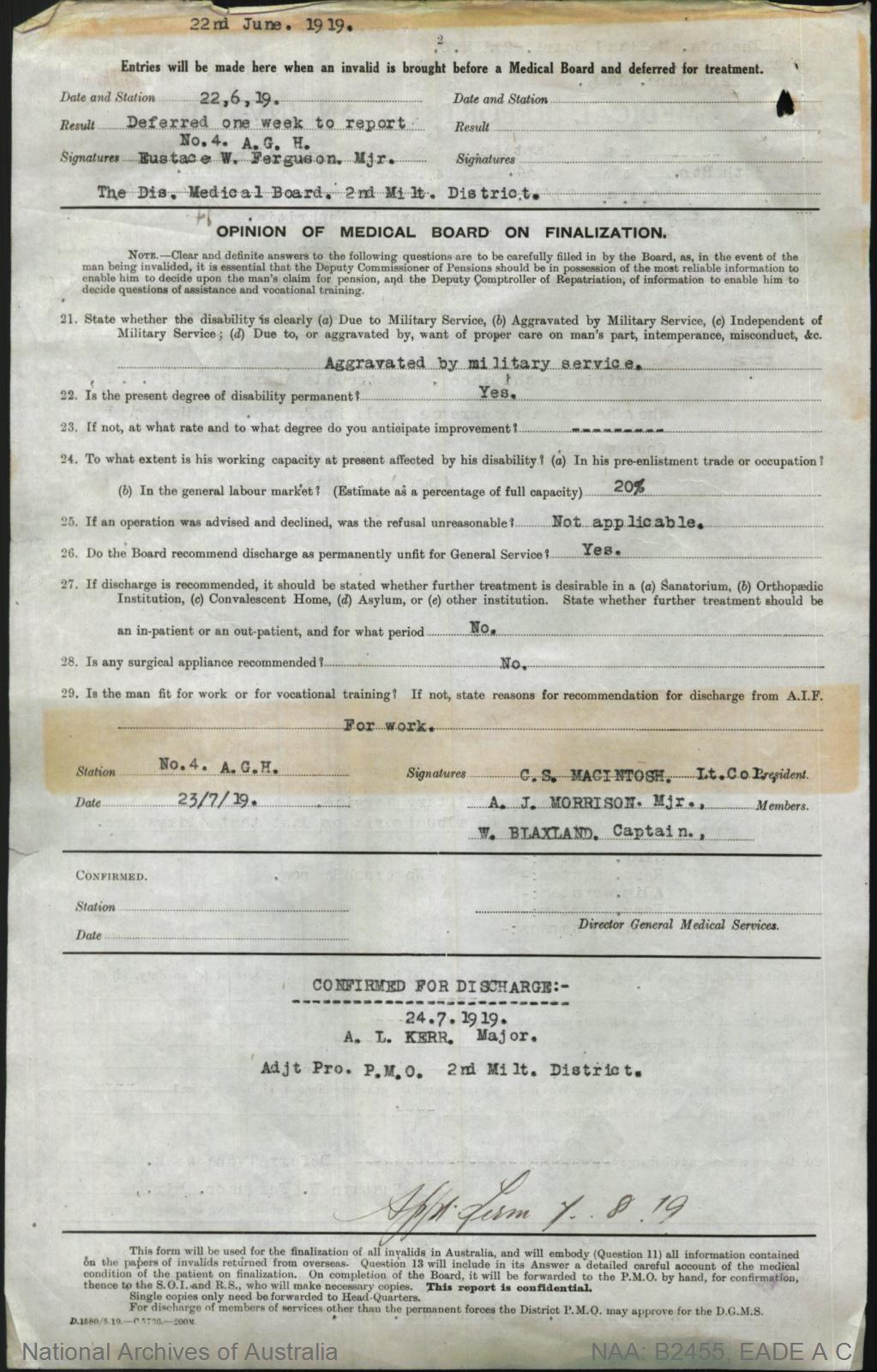
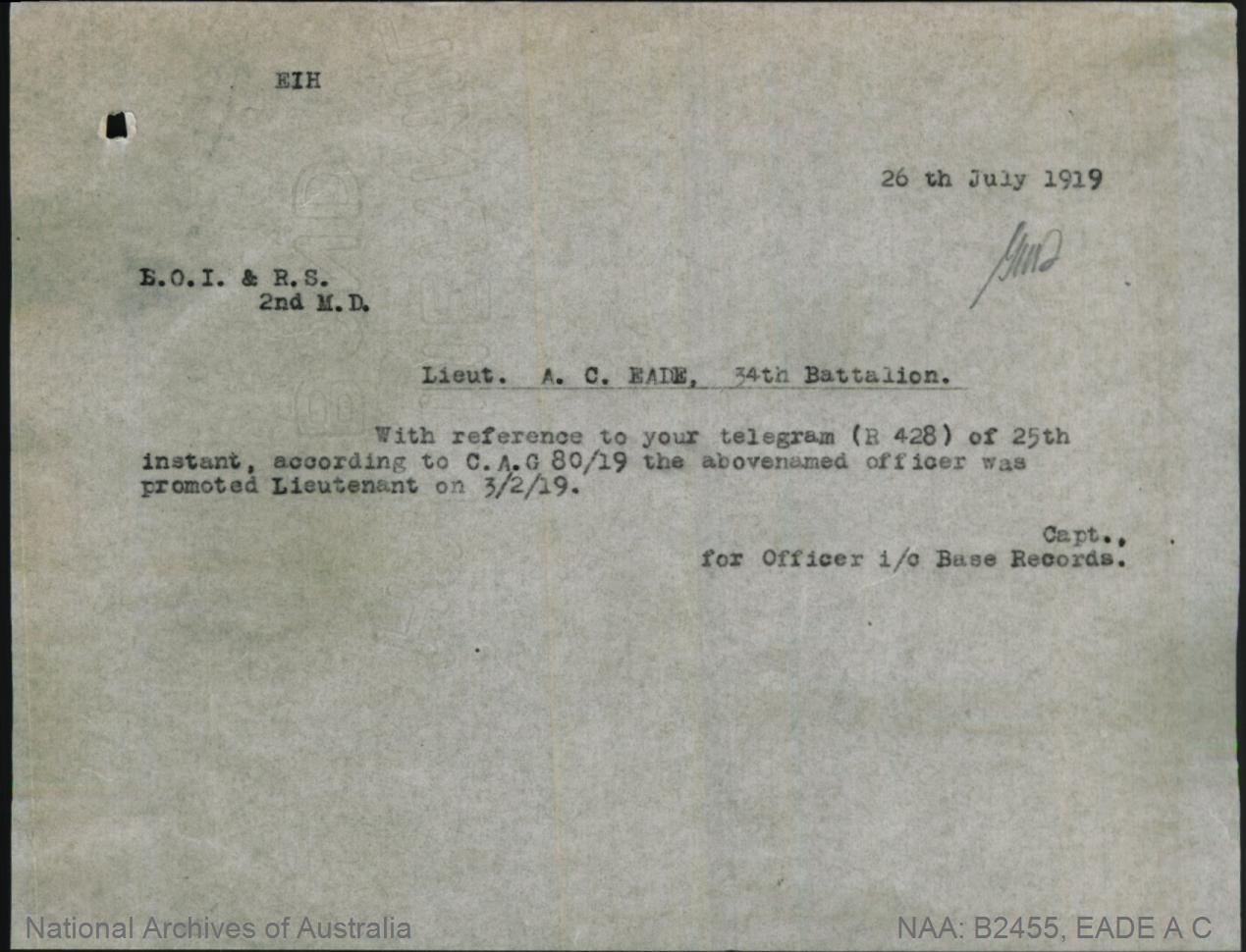
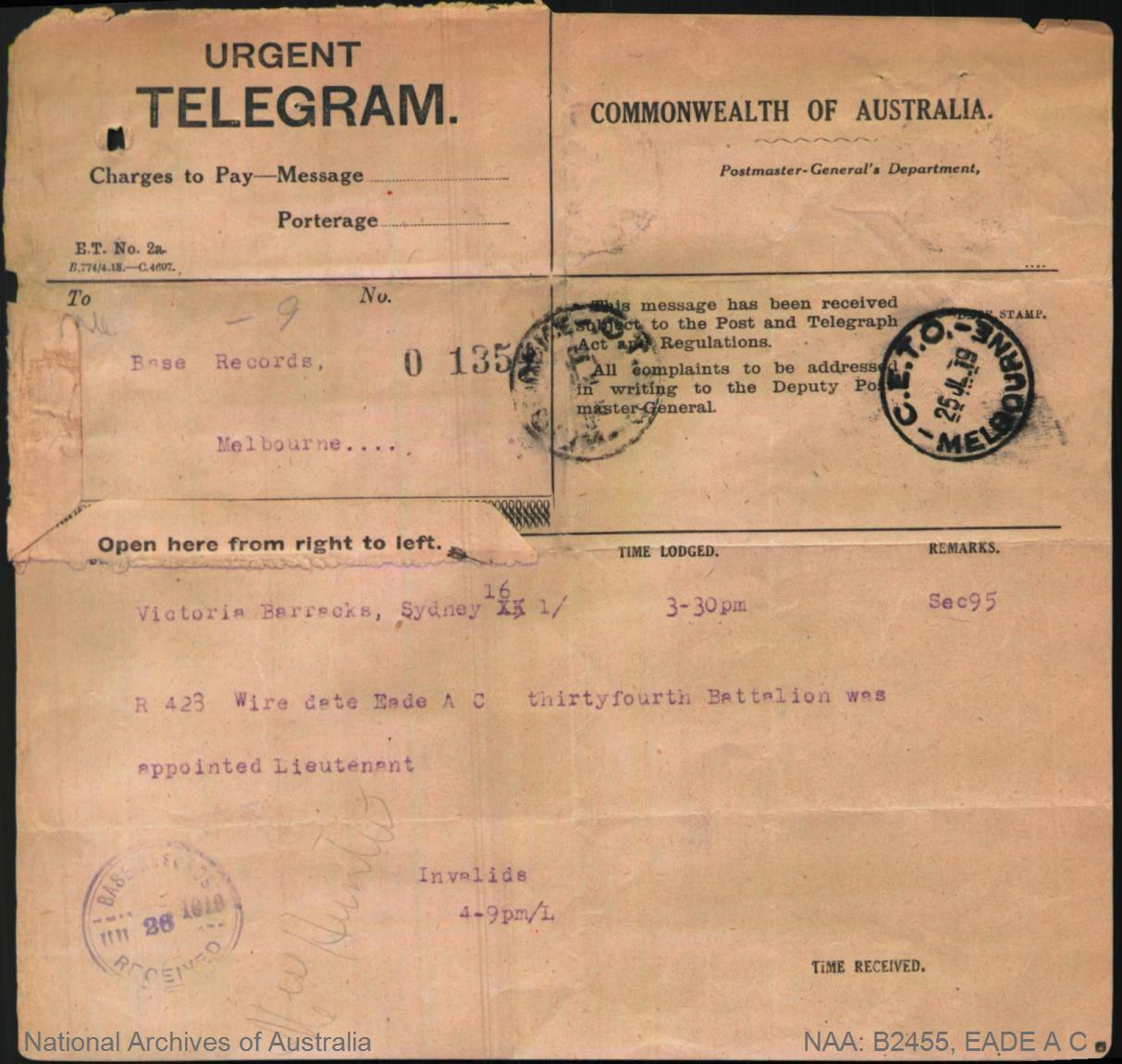
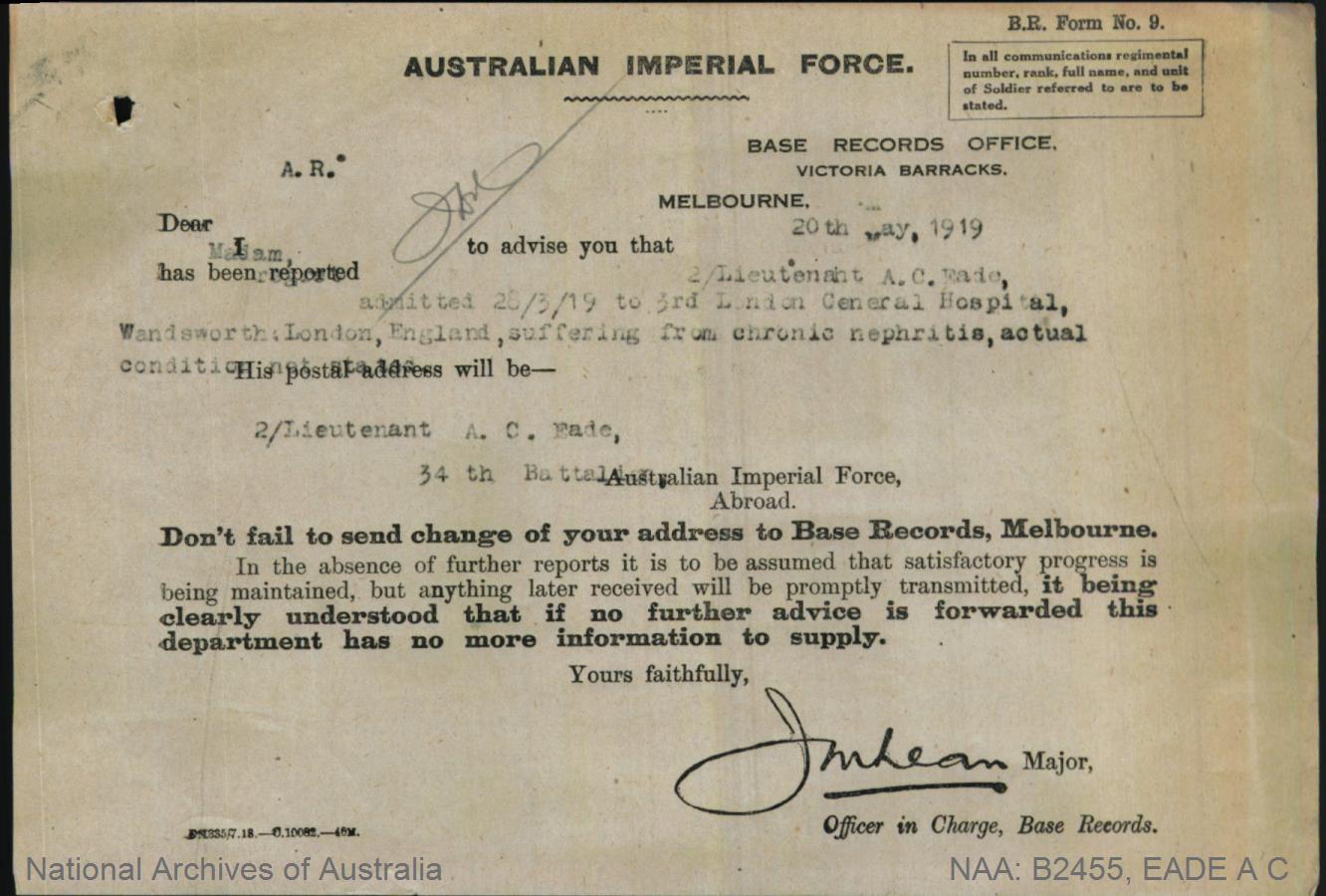
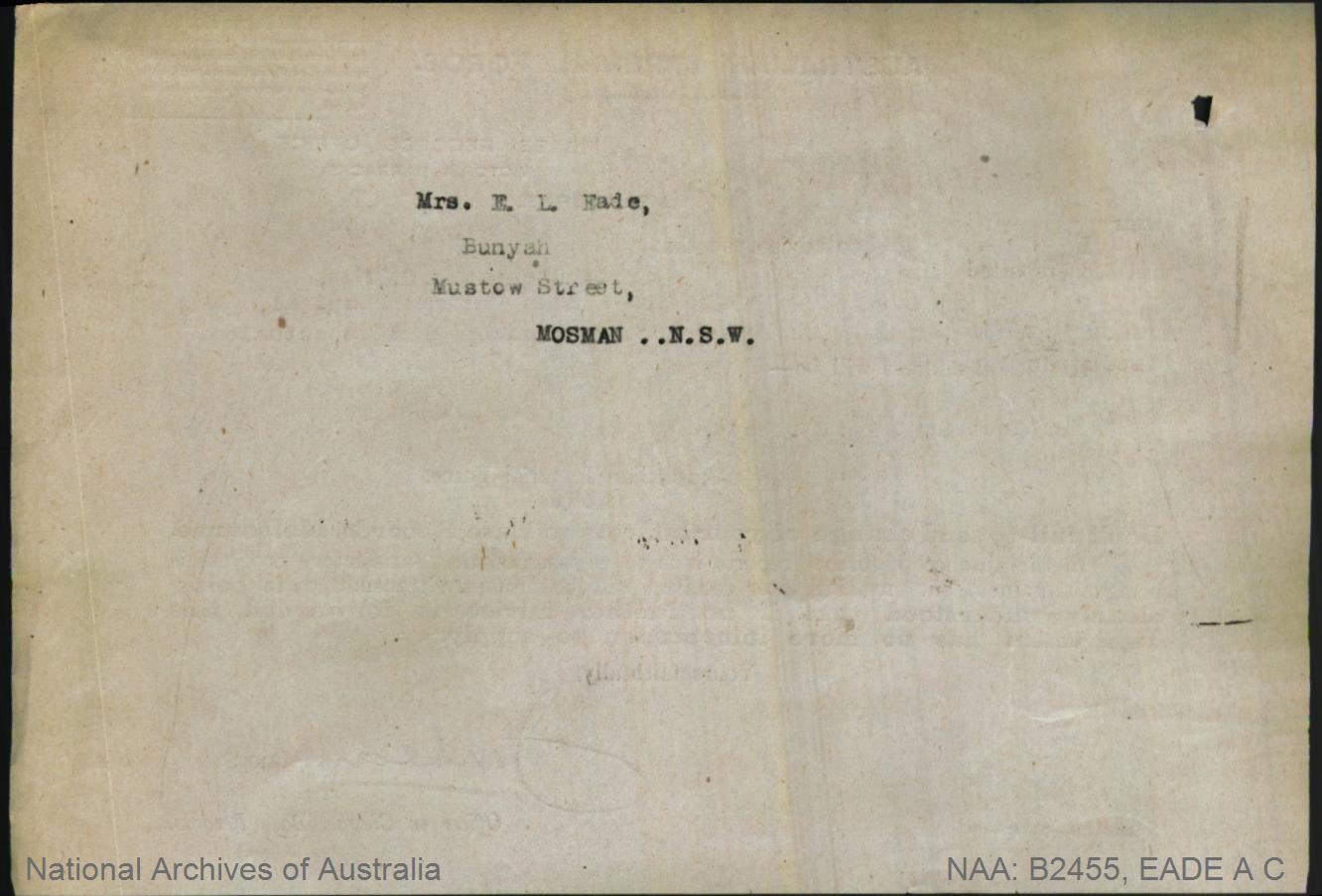
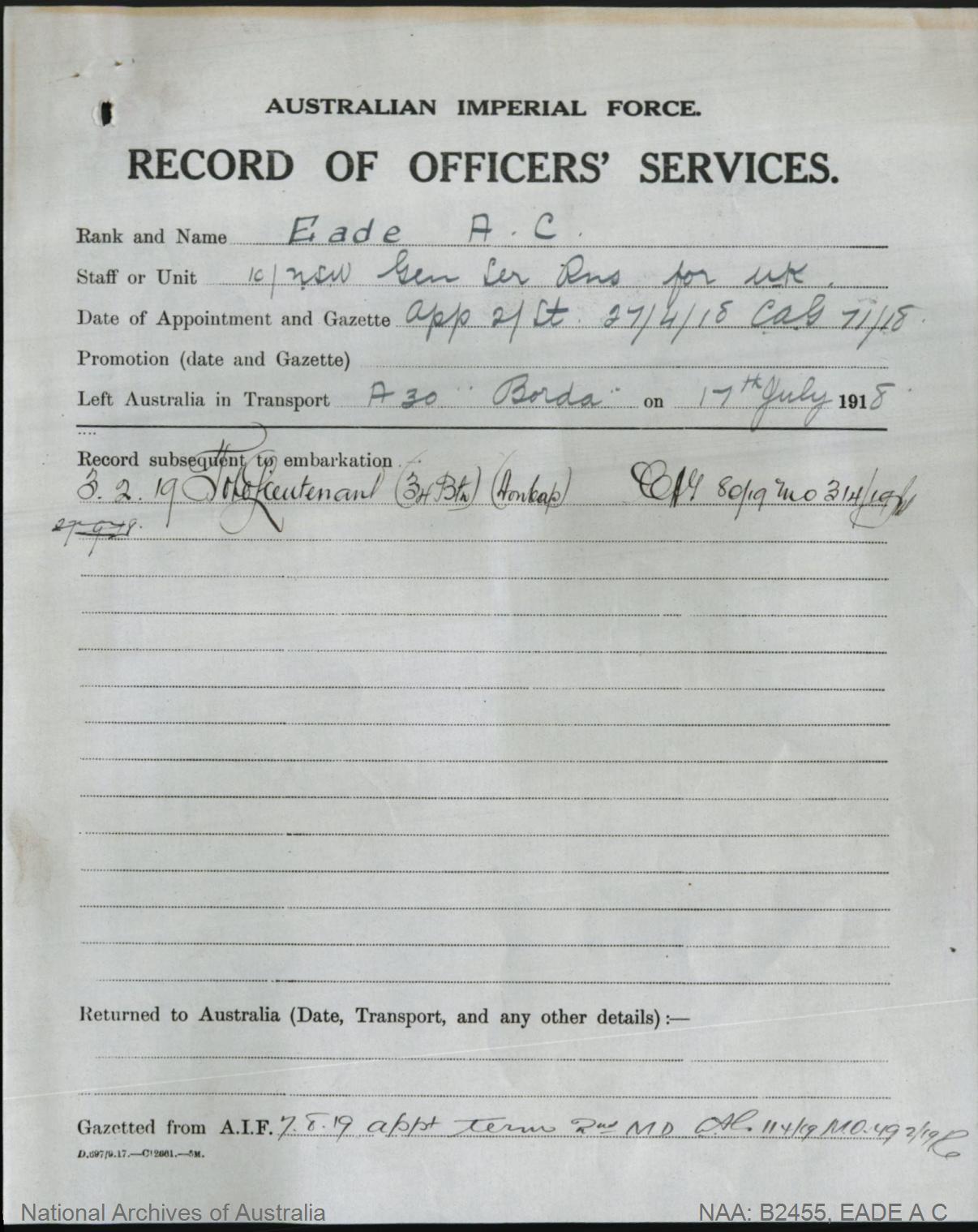




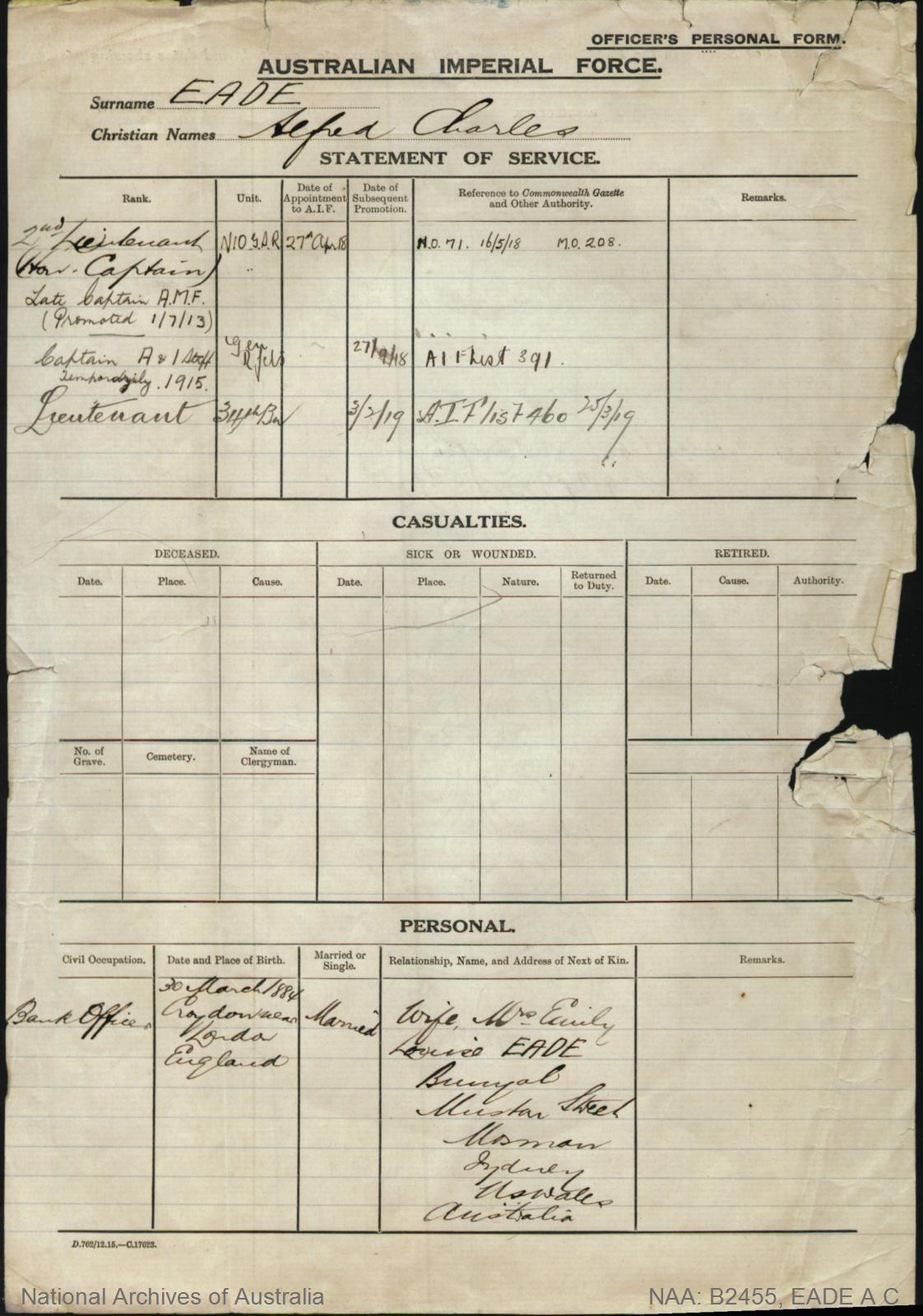
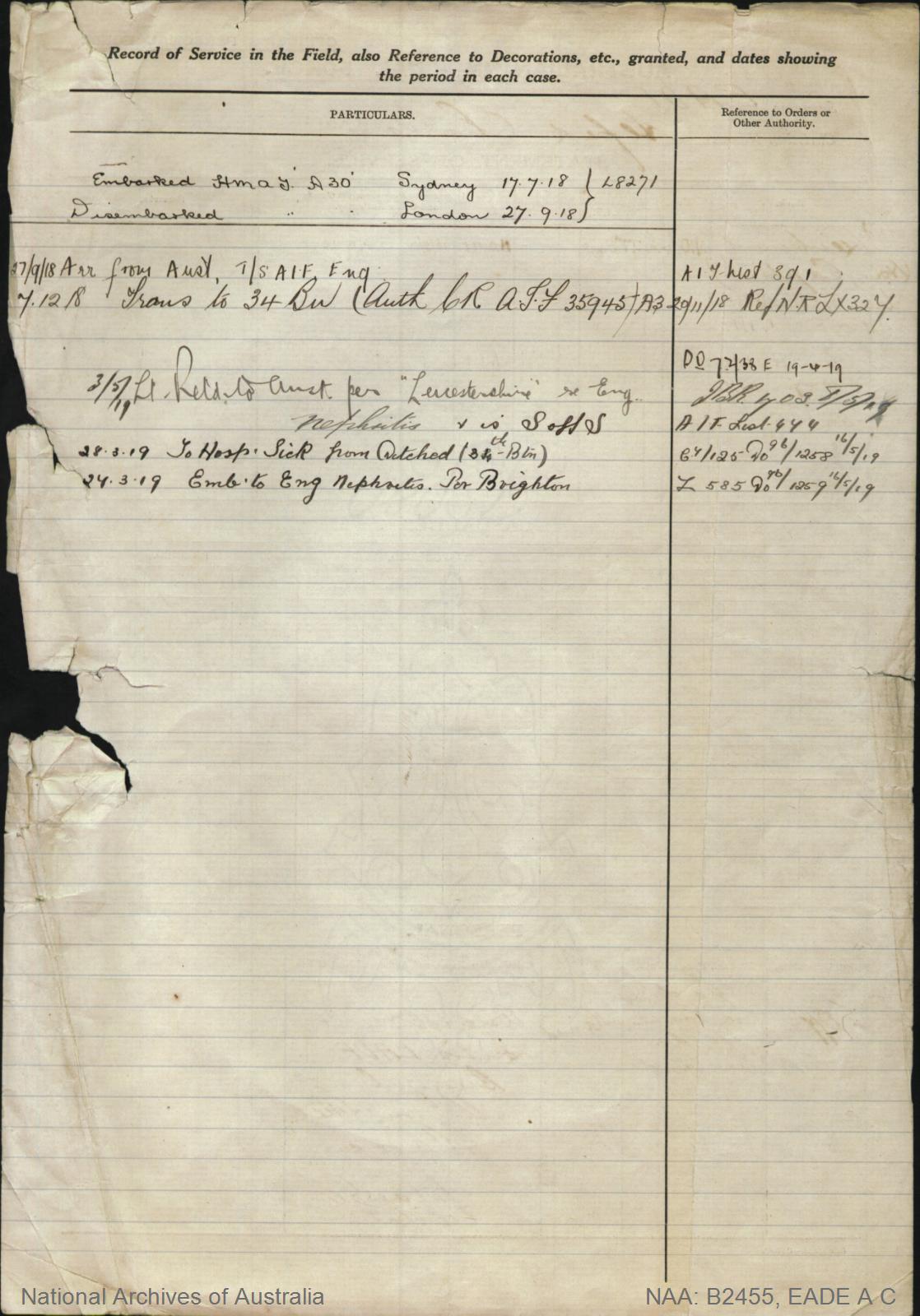

© Commonwealth of Australia (National Archives of Australia)
Under Construction: 22/08/2023

